Ancient roman empire soldiers Stock Photos and Images
(3,694)See ancient roman empire soldiers stock video clipsQuick filters:
Ancient roman empire soldiers Stock Photos and Images
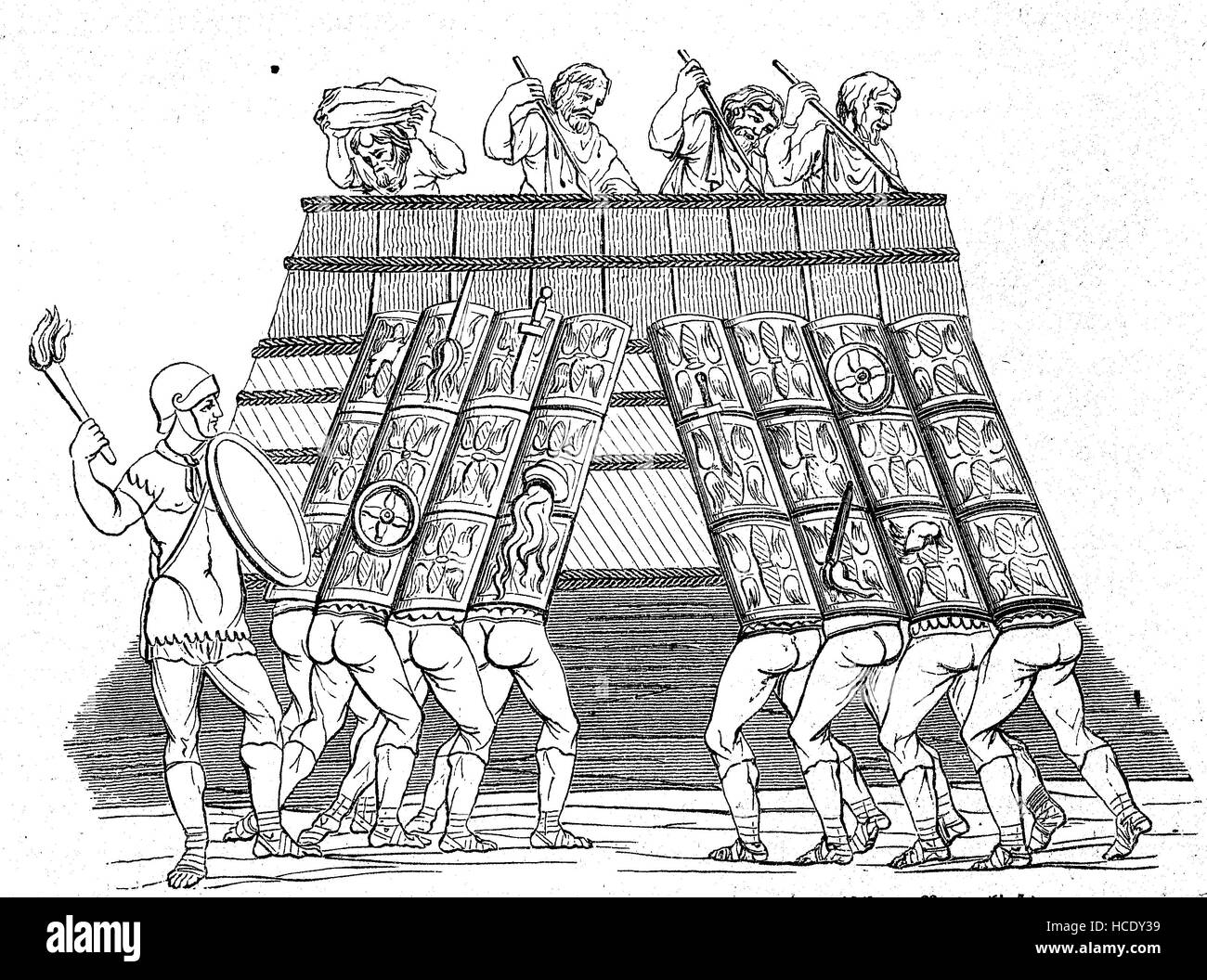 Roman soldiers attack the Wall of the Teutons, 11 BC, the story of the ancient Rome, roman Empire, Italy Stock Photohttps://www.alamy.com/image-license-details/?v=1https://www.alamy.com/stock-photo-roman-soldiers-attack-the-wall-of-the-teutons-11-bc-the-story-of-the-128155085.html
Roman soldiers attack the Wall of the Teutons, 11 BC, the story of the ancient Rome, roman Empire, Italy Stock Photohttps://www.alamy.com/image-license-details/?v=1https://www.alamy.com/stock-photo-roman-soldiers-attack-the-wall-of-the-teutons-11-bc-the-story-of-the-128155085.htmlRFHCDY39–Roman soldiers attack the Wall of the Teutons, 11 BC, the story of the ancient Rome, roman Empire, Italy
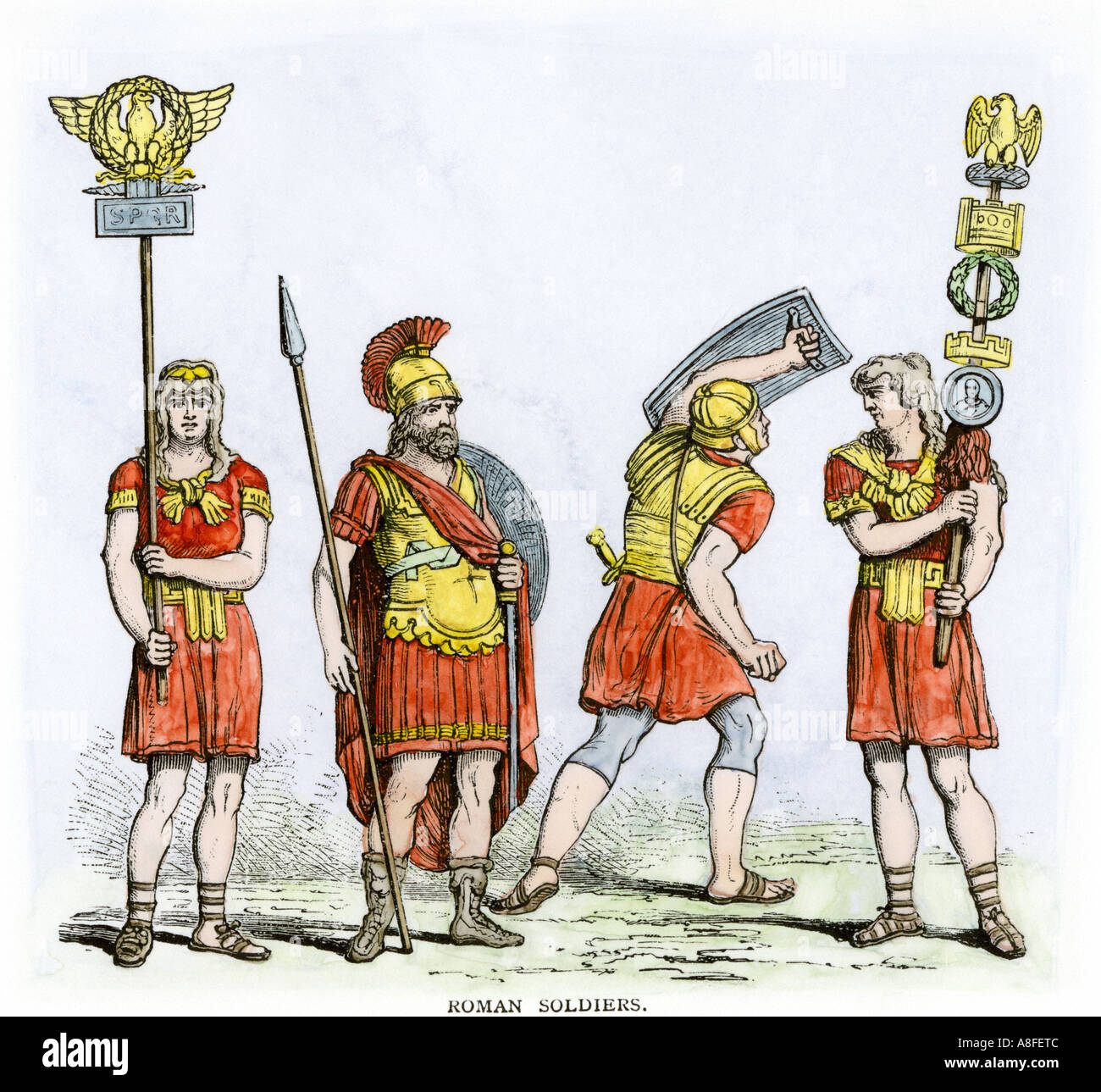 Roman soldiers carrying insignia of the army of ancient Rome. Hand-colored woodcut Stock Photohttps://www.alamy.com/image-license-details/?v=1https://www.alamy.com/roman-soldiers-carrying-insignia-of-the-army-of-ancient-rome-hand-image6907403.html
Roman soldiers carrying insignia of the army of ancient Rome. Hand-colored woodcut Stock Photohttps://www.alamy.com/image-license-details/?v=1https://www.alamy.com/roman-soldiers-carrying-insignia-of-the-army-of-ancient-rome-hand-image6907403.htmlRMA8FETC–Roman soldiers carrying insignia of the army of ancient Rome. Hand-colored woodcut
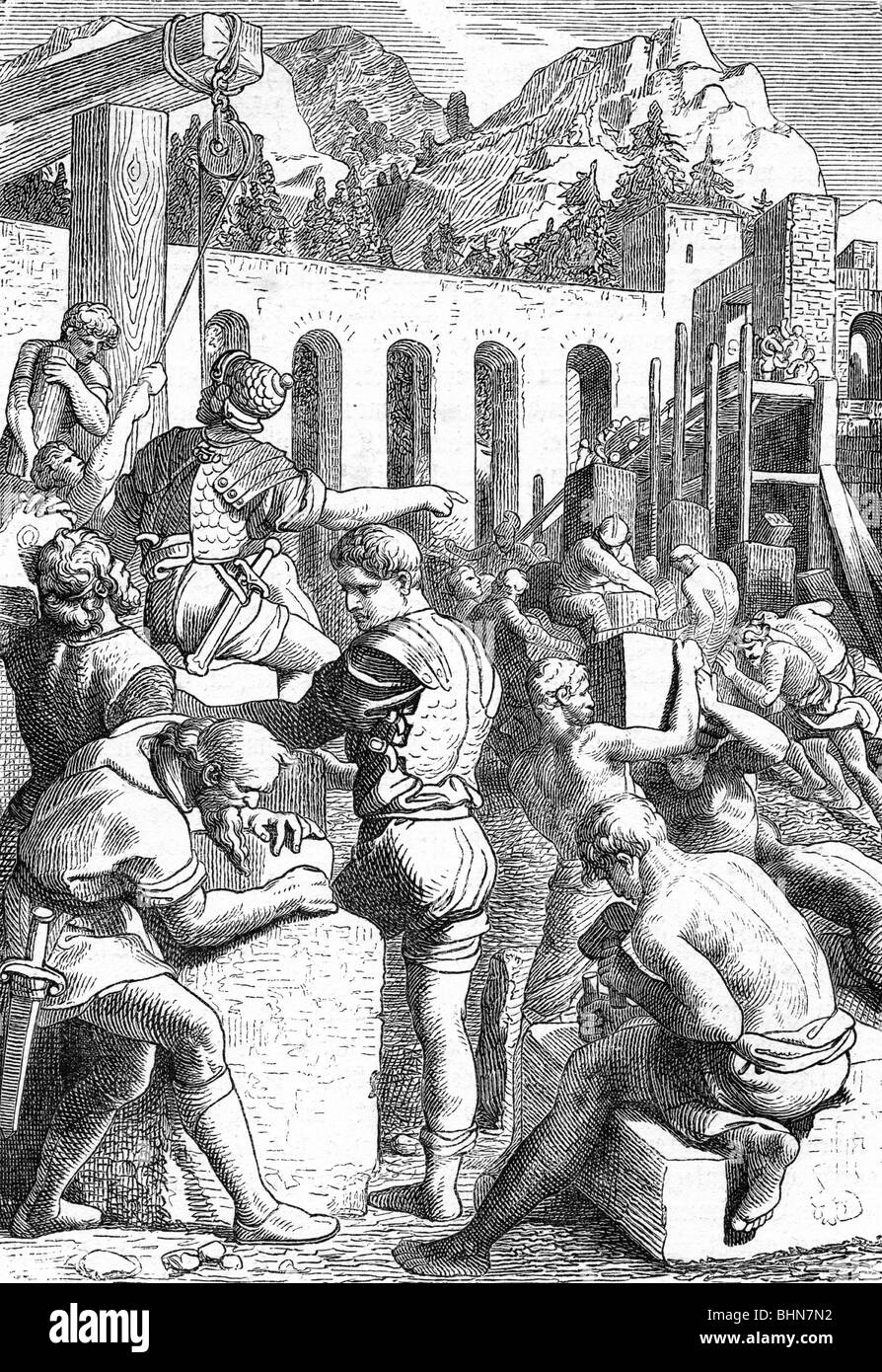 ancient world, Roman Empire, border, Roman soldiers constructing the limes, wood engraving, 19th century, Stock Photohttps://www.alamy.com/image-license-details/?v=1https://www.alamy.com/stock-photo-ancient-world-roman-empire-border-roman-soldiers-constructing-the-28126590.html
ancient world, Roman Empire, border, Roman soldiers constructing the limes, wood engraving, 19th century, Stock Photohttps://www.alamy.com/image-license-details/?v=1https://www.alamy.com/stock-photo-ancient-world-roman-empire-border-roman-soldiers-constructing-the-28126590.htmlRMBHN7N2–ancient world, Roman Empire, border, Roman soldiers constructing the limes, wood engraving, 19th century,
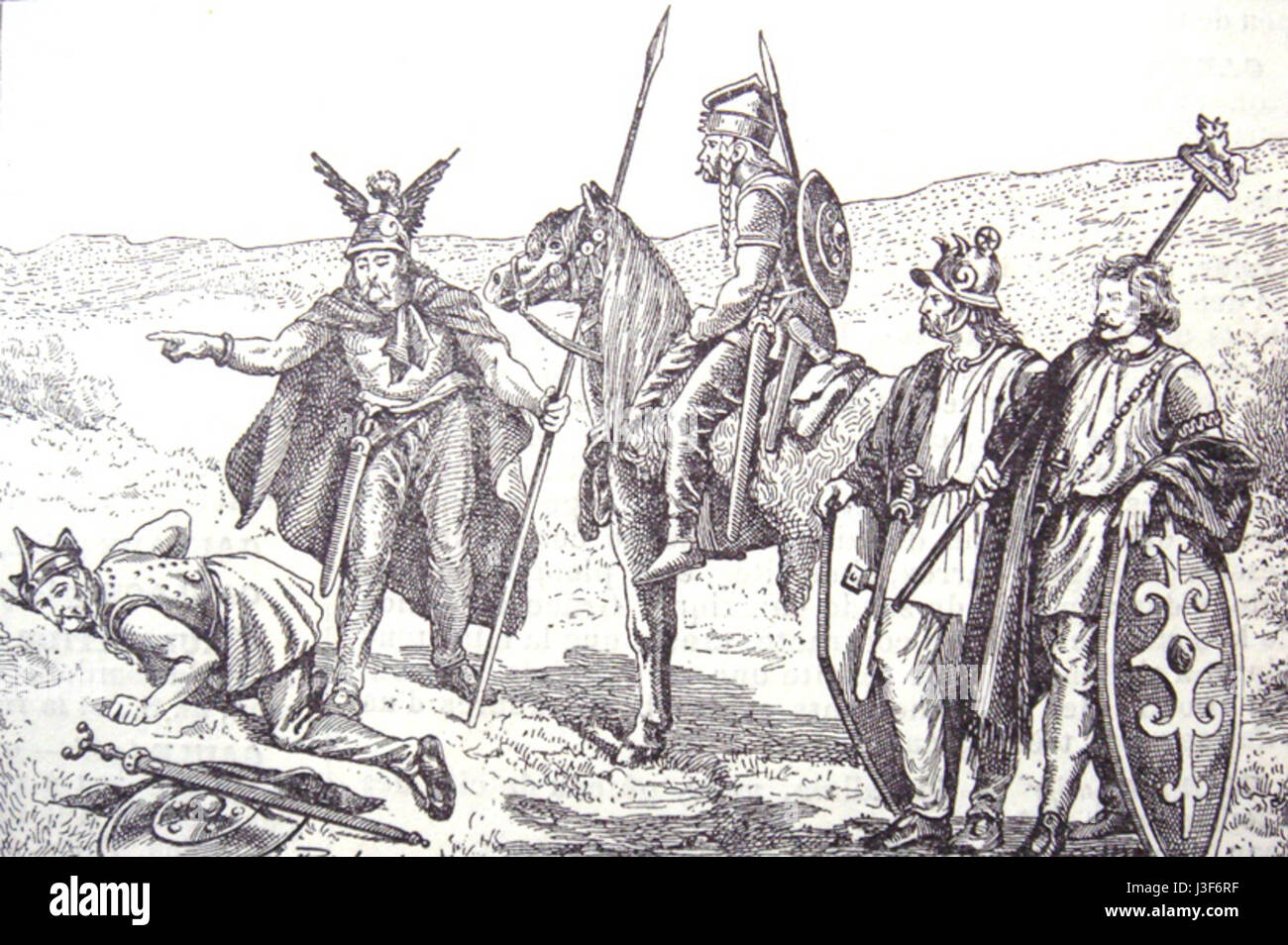 A historical depiction of Gaul soldiers, focusing on their attire, weaponry, and role in ancient history. Stock Photohttps://www.alamy.com/image-license-details/?v=1https://www.alamy.com/stock-photo-a-historical-depiction-of-gaul-soldiers-focusing-on-their-attire-weaponry-139861555.html
A historical depiction of Gaul soldiers, focusing on their attire, weaponry, and role in ancient history. Stock Photohttps://www.alamy.com/image-license-details/?v=1https://www.alamy.com/stock-photo-a-historical-depiction-of-gaul-soldiers-focusing-on-their-attire-weaponry-139861555.htmlRMJ3F6RF–A historical depiction of Gaul soldiers, focusing on their attire, weaponry, and role in ancient history.
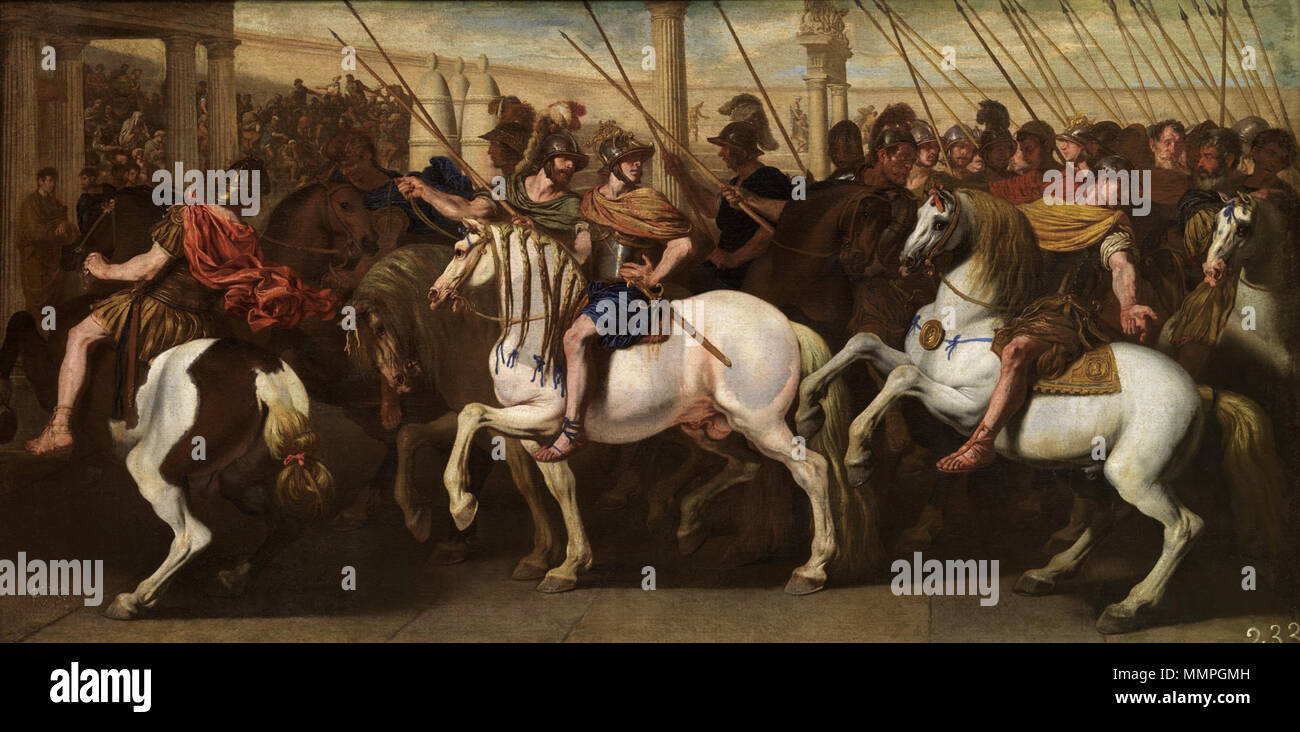 Roman soldiers in the circus. circa 1640. Aniello Falcone - Roman soldiers in the circus Stock Photohttps://www.alamy.com/image-license-details/?v=1https://www.alamy.com/roman-soldiers-in-the-circus-circa-1640-aniello-falcone-roman-soldiers-in-the-circus-image184892865.html
Roman soldiers in the circus. circa 1640. Aniello Falcone - Roman soldiers in the circus Stock Photohttps://www.alamy.com/image-license-details/?v=1https://www.alamy.com/roman-soldiers-in-the-circus-circa-1640-aniello-falcone-roman-soldiers-in-the-circus-image184892865.htmlRMMMPGMH–Roman soldiers in the circus. circa 1640. Aniello Falcone - Roman soldiers in the circus
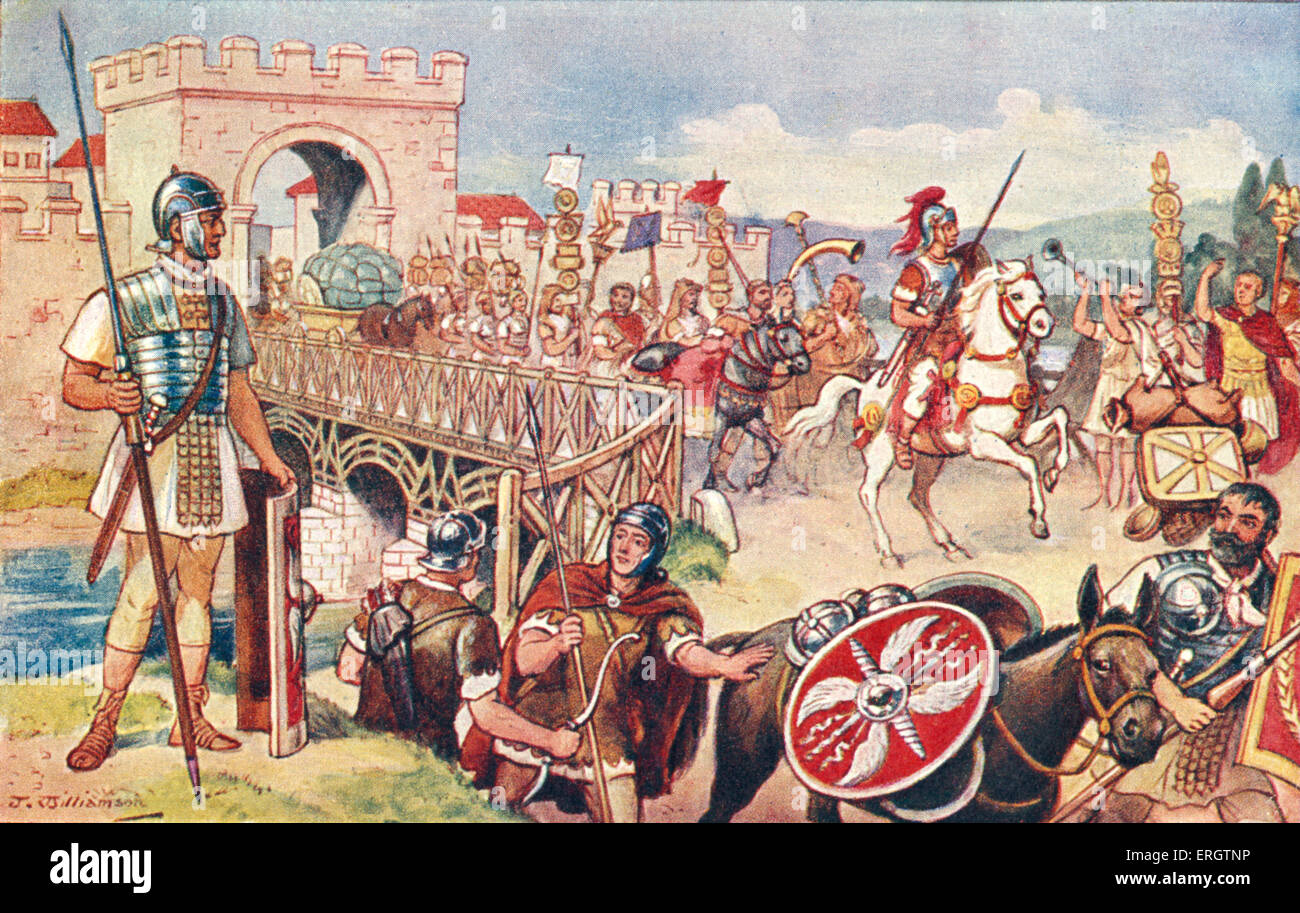 The Roman Empire - a column of soldiers advancing over a bridge. Procession. Helmet, spear, shield, horse, horses, armor, Stock Photohttps://www.alamy.com/image-license-details/?v=1https://www.alamy.com/stock-photo-the-roman-empire-a-column-of-soldiers-advancing-over-a-bridge-procession-83349218.html
The Roman Empire - a column of soldiers advancing over a bridge. Procession. Helmet, spear, shield, horse, horses, armor, Stock Photohttps://www.alamy.com/image-license-details/?v=1https://www.alamy.com/stock-photo-the-roman-empire-a-column-of-soldiers-advancing-over-a-bridge-procession-83349218.htmlRMERGTNP–The Roman Empire - a column of soldiers advancing over a bridge. Procession. Helmet, spear, shield, horse, horses, armor,
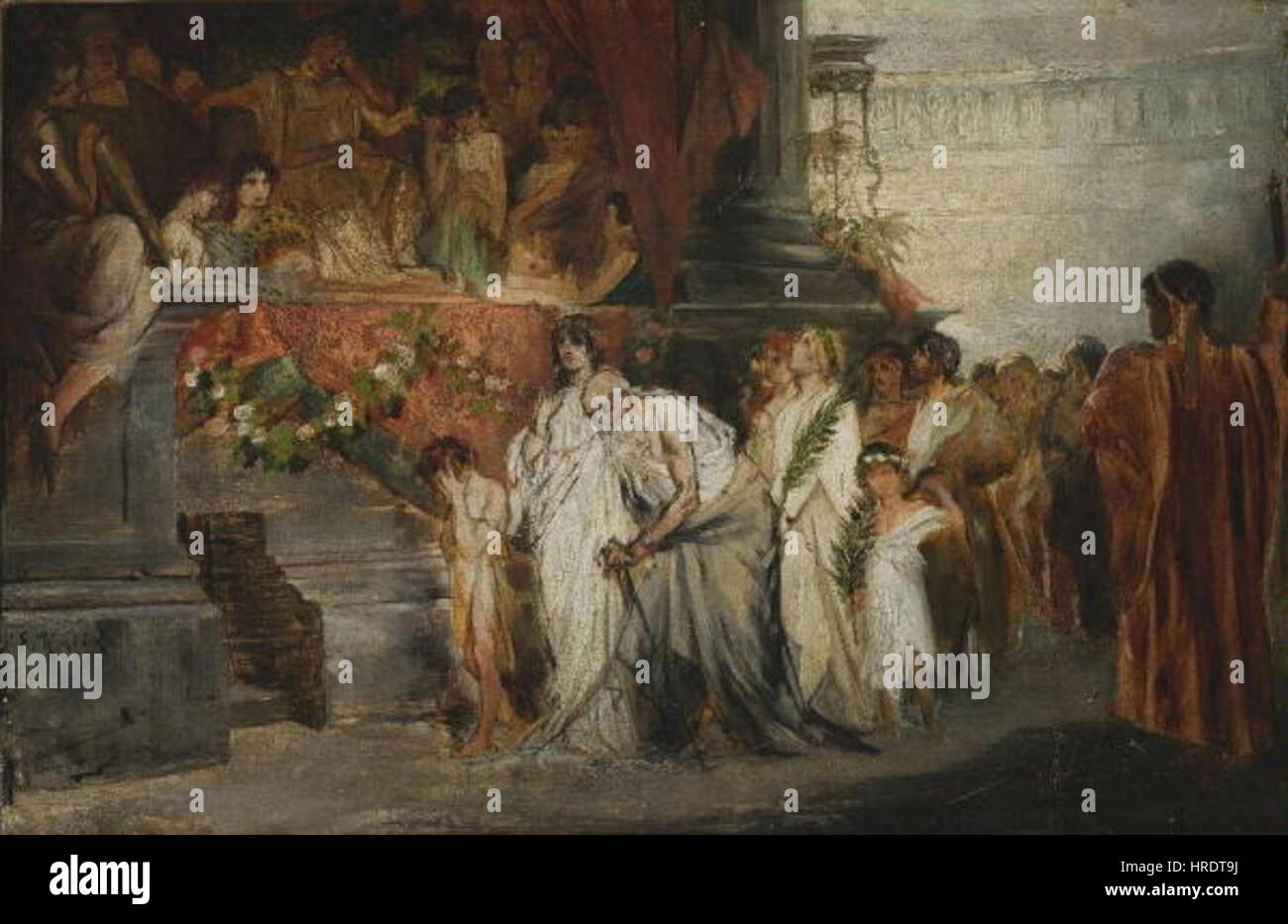 Emanuel Krescenc Liska’s 'Morituri te salutant Caesar' features a dramatic portrayal of gladiators in ancient Rome, offering a glimpse into the brutal combat and imperial spectacles of the Roman Empire. Stock Photohttps://www.alamy.com/image-license-details/?v=1https://www.alamy.com/stock-photo-emanuel-krescenc-liskas-morituri-te-salutant-caesar-features-a-dramatic-134914126.html
Emanuel Krescenc Liska’s 'Morituri te salutant Caesar' features a dramatic portrayal of gladiators in ancient Rome, offering a glimpse into the brutal combat and imperial spectacles of the Roman Empire. Stock Photohttps://www.alamy.com/image-license-details/?v=1https://www.alamy.com/stock-photo-emanuel-krescenc-liskas-morituri-te-salutant-caesar-features-a-dramatic-134914126.htmlRMHRDT9J–Emanuel Krescenc Liska’s 'Morituri te salutant Caesar' features a dramatic portrayal of gladiators in ancient Rome, offering a glimpse into the brutal combat and imperial spectacles of the Roman Empire.
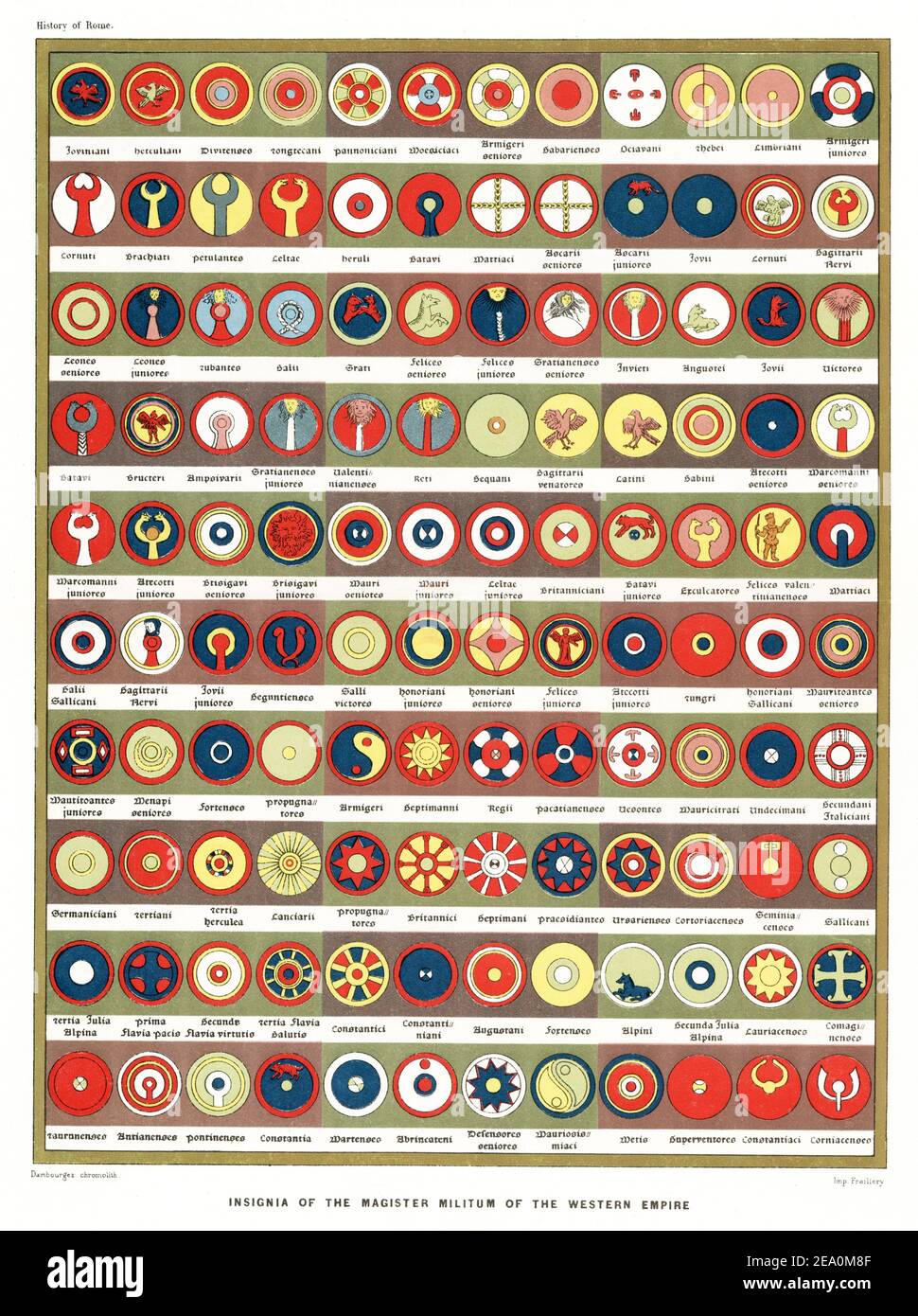 Seen here in this 1880s illustration are the insignia of the Magister Militum of the Western Roman Empire. Magister militum (Latin for 'Master of Soldiers') was a top-level military command used in the later Roman Empire, dating from the reign of Constantine the Great, who ruled from 306 to 337 AD The term referred to the senior military officer of the Empire. In Greek sources, the term is translated either as strategos or as stratelates. Stock Photohttps://www.alamy.com/image-license-details/?v=1https://www.alamy.com/seen-here-in-this-1880s-illustration-are-the-insignia-of-the-magister-militum-of-the-western-roman-empire-magister-militumlatinfor-master-of-soldiers-was-a-top-level-military-command-used-in-the-laterroman-empire-dating-from-the-reign-ofconstantine-the-great-who-ruled-from-306-to-337-ad-the-term-referred-to-the-senior-military-officer-of-the-empire-ingreeksources-the-term-is-translated-either-asstrategosor-asstratelates-image402000943.html
Seen here in this 1880s illustration are the insignia of the Magister Militum of the Western Roman Empire. Magister militum (Latin for 'Master of Soldiers') was a top-level military command used in the later Roman Empire, dating from the reign of Constantine the Great, who ruled from 306 to 337 AD The term referred to the senior military officer of the Empire. In Greek sources, the term is translated either as strategos or as stratelates. Stock Photohttps://www.alamy.com/image-license-details/?v=1https://www.alamy.com/seen-here-in-this-1880s-illustration-are-the-insignia-of-the-magister-militum-of-the-western-roman-empire-magister-militumlatinfor-master-of-soldiers-was-a-top-level-military-command-used-in-the-laterroman-empire-dating-from-the-reign-ofconstantine-the-great-who-ruled-from-306-to-337-ad-the-term-referred-to-the-senior-military-officer-of-the-empire-ingreeksources-the-term-is-translated-either-asstrategosor-asstratelates-image402000943.htmlRF2EA0M8F–Seen here in this 1880s illustration are the insignia of the Magister Militum of the Western Roman Empire. Magister militum (Latin for 'Master of Soldiers') was a top-level military command used in the later Roman Empire, dating from the reign of Constantine the Great, who ruled from 306 to 337 AD The term referred to the senior military officer of the Empire. In Greek sources, the term is translated either as strategos or as stratelates.
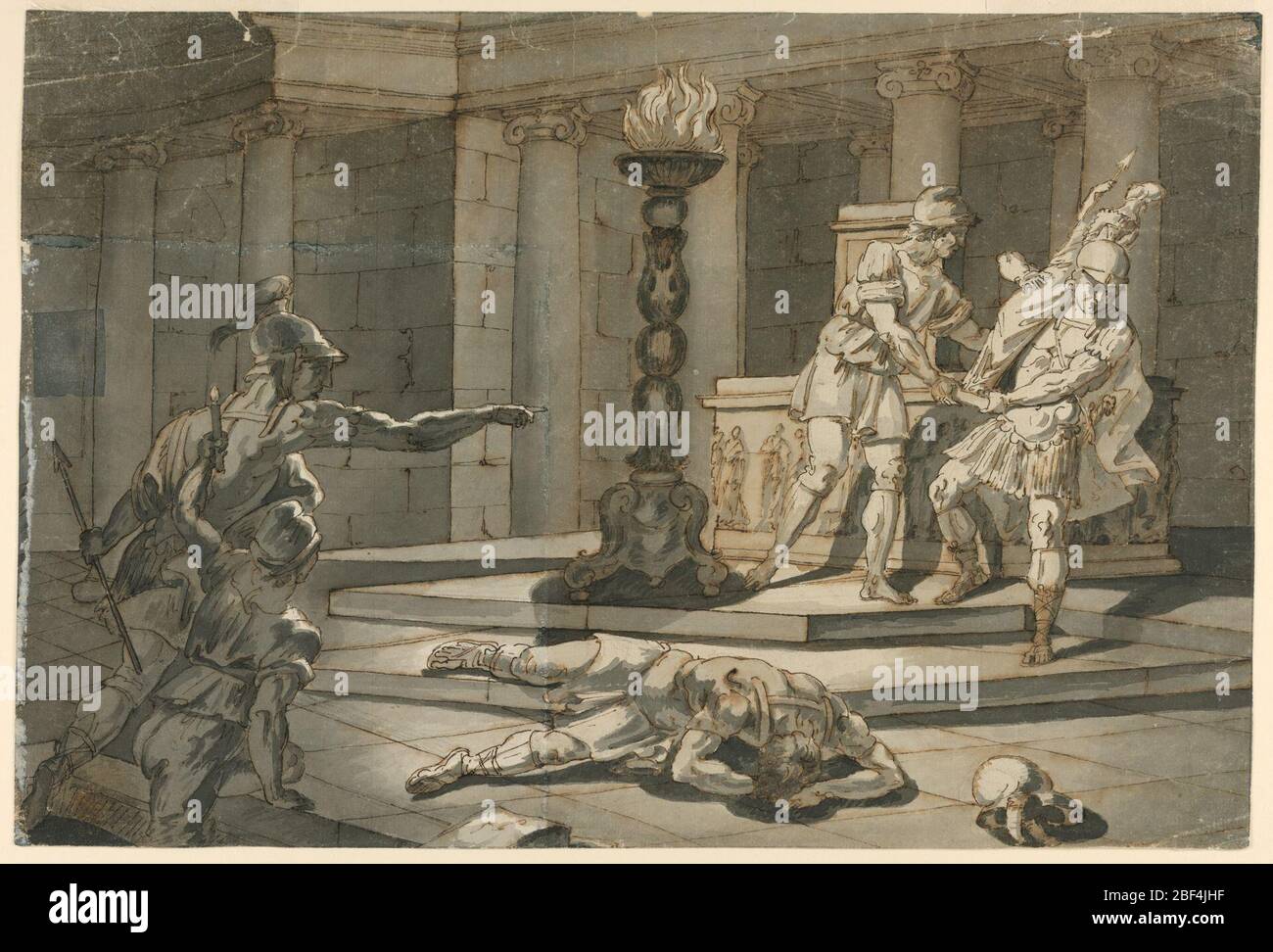 Scene of Roman Soldiers. Interior scene of ancient Roman temple. Three figures in military garb. Stock Photohttps://www.alamy.com/image-license-details/?v=1https://www.alamy.com/scene-of-roman-soldiers-interior-scene-of-ancient-roman-temple-three-figures-in-military-garb-image353529611.html
Scene of Roman Soldiers. Interior scene of ancient Roman temple. Three figures in military garb. Stock Photohttps://www.alamy.com/image-license-details/?v=1https://www.alamy.com/scene-of-roman-soldiers-interior-scene-of-ancient-roman-temple-three-figures-in-military-garb-image353529611.htmlRM2BF4JHF–Scene of Roman Soldiers. Interior scene of ancient Roman temple. Three figures in military garb.
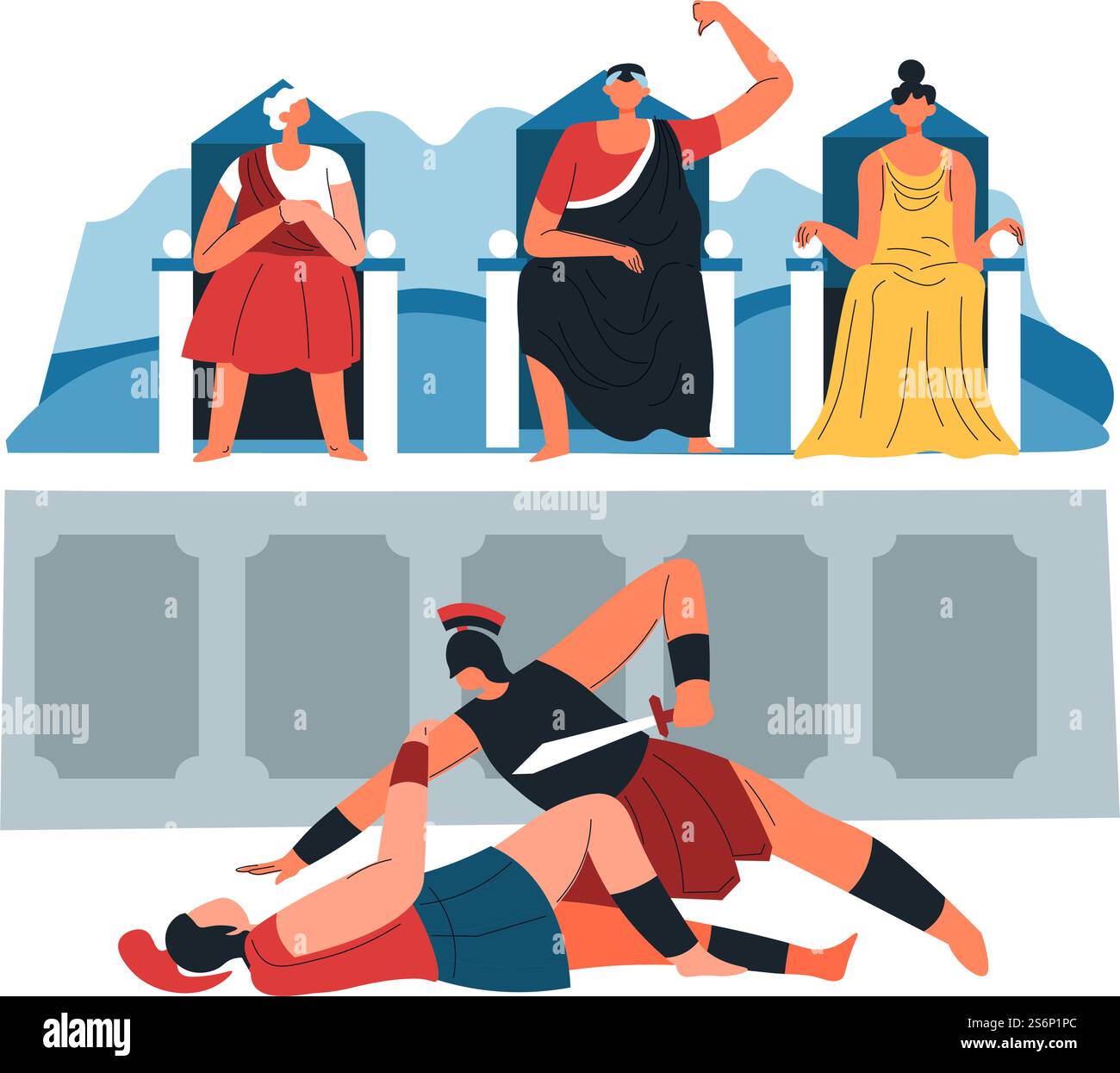 Roman empire performance and fun in ancient times. Gladiator fight and voting. Soldiers with sword, judge giving negative decision. Scene or stadium with people and jury. Vector in flat style. Gladiator fight and voting, roman performance Stock Vectorhttps://www.alamy.com/image-license-details/?v=1https://www.alamy.com/roman-empire-performance-and-fun-in-ancient-times-gladiator-fight-and-voting-soldiers-with-sword-judge-giving-negative-decision-scene-or-stadium-with-people-and-jury-vector-in-flat-style-gladiator-fight-and-voting-roman-performance-image640955908.html
Roman empire performance and fun in ancient times. Gladiator fight and voting. Soldiers with sword, judge giving negative decision. Scene or stadium with people and jury. Vector in flat style. Gladiator fight and voting, roman performance Stock Vectorhttps://www.alamy.com/image-license-details/?v=1https://www.alamy.com/roman-empire-performance-and-fun-in-ancient-times-gladiator-fight-and-voting-soldiers-with-sword-judge-giving-negative-decision-scene-or-stadium-with-people-and-jury-vector-in-flat-style-gladiator-fight-and-voting-roman-performance-image640955908.htmlRF2S6P1PC–Roman empire performance and fun in ancient times. Gladiator fight and voting. Soldiers with sword, judge giving negative decision. Scene or stadium with people and jury. Vector in flat style. Gladiator fight and voting, roman performance
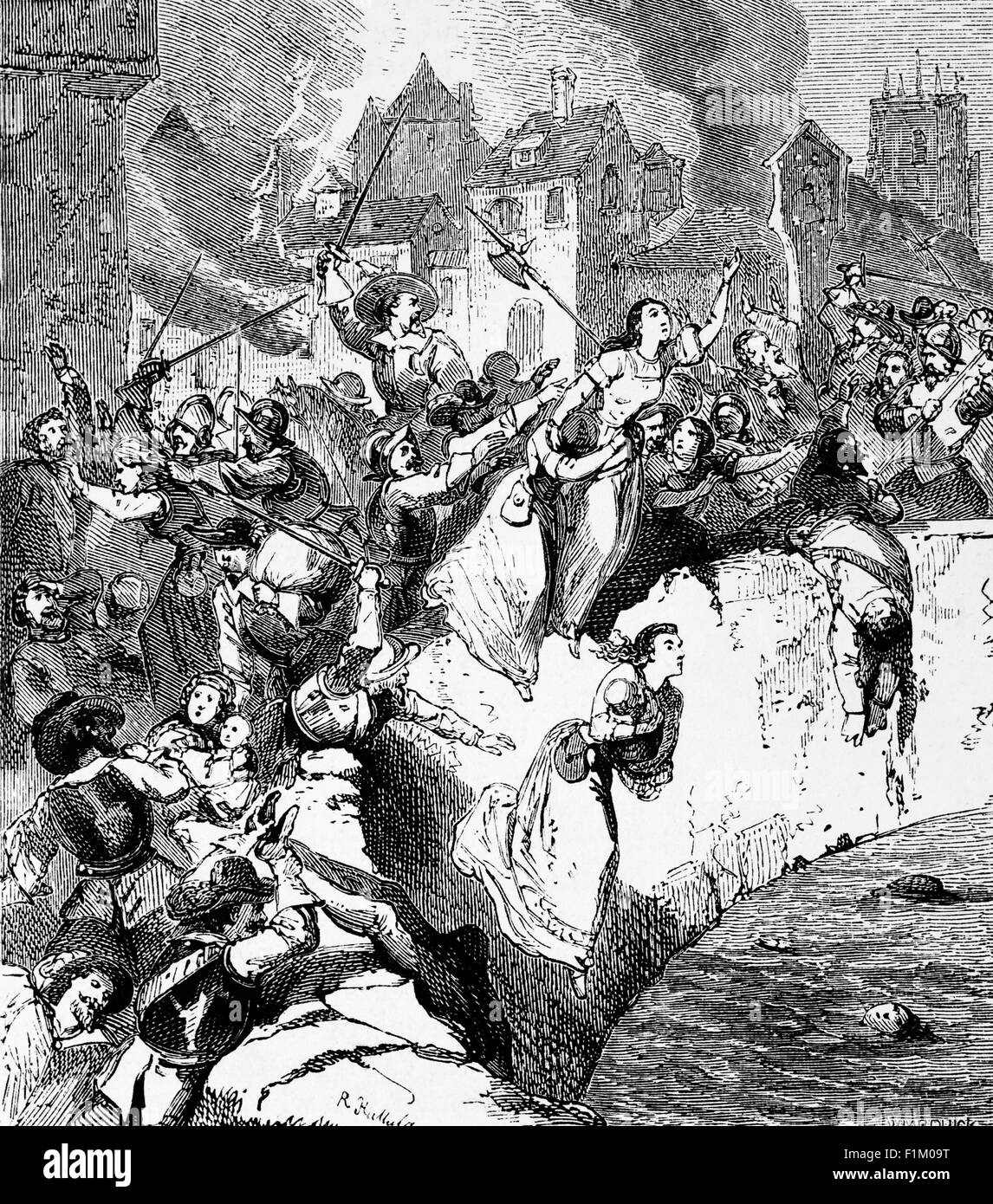 The Sack of Magdeburg, the siege and subsequent plundering of the largely Protestant city in Germany by the forces of the Holy Roman Empire during the Thirty Years' War. After its fall, (20 May 1631) the Imperial soldiers went out of control and massacred 25,000 of the inhabitants. Stock Photohttps://www.alamy.com/image-license-details/?v=1https://www.alamy.com/stock-photo-the-sack-of-magdeburg-the-siege-and-subsequent-plundering-of-the-largely-87105812.html
The Sack of Magdeburg, the siege and subsequent plundering of the largely Protestant city in Germany by the forces of the Holy Roman Empire during the Thirty Years' War. After its fall, (20 May 1631) the Imperial soldiers went out of control and massacred 25,000 of the inhabitants. Stock Photohttps://www.alamy.com/image-license-details/?v=1https://www.alamy.com/stock-photo-the-sack-of-magdeburg-the-siege-and-subsequent-plundering-of-the-largely-87105812.htmlRMF1M09T–The Sack of Magdeburg, the siege and subsequent plundering of the largely Protestant city in Germany by the forces of the Holy Roman Empire during the Thirty Years' War. After its fall, (20 May 1631) the Imperial soldiers went out of control and massacred 25,000 of the inhabitants.
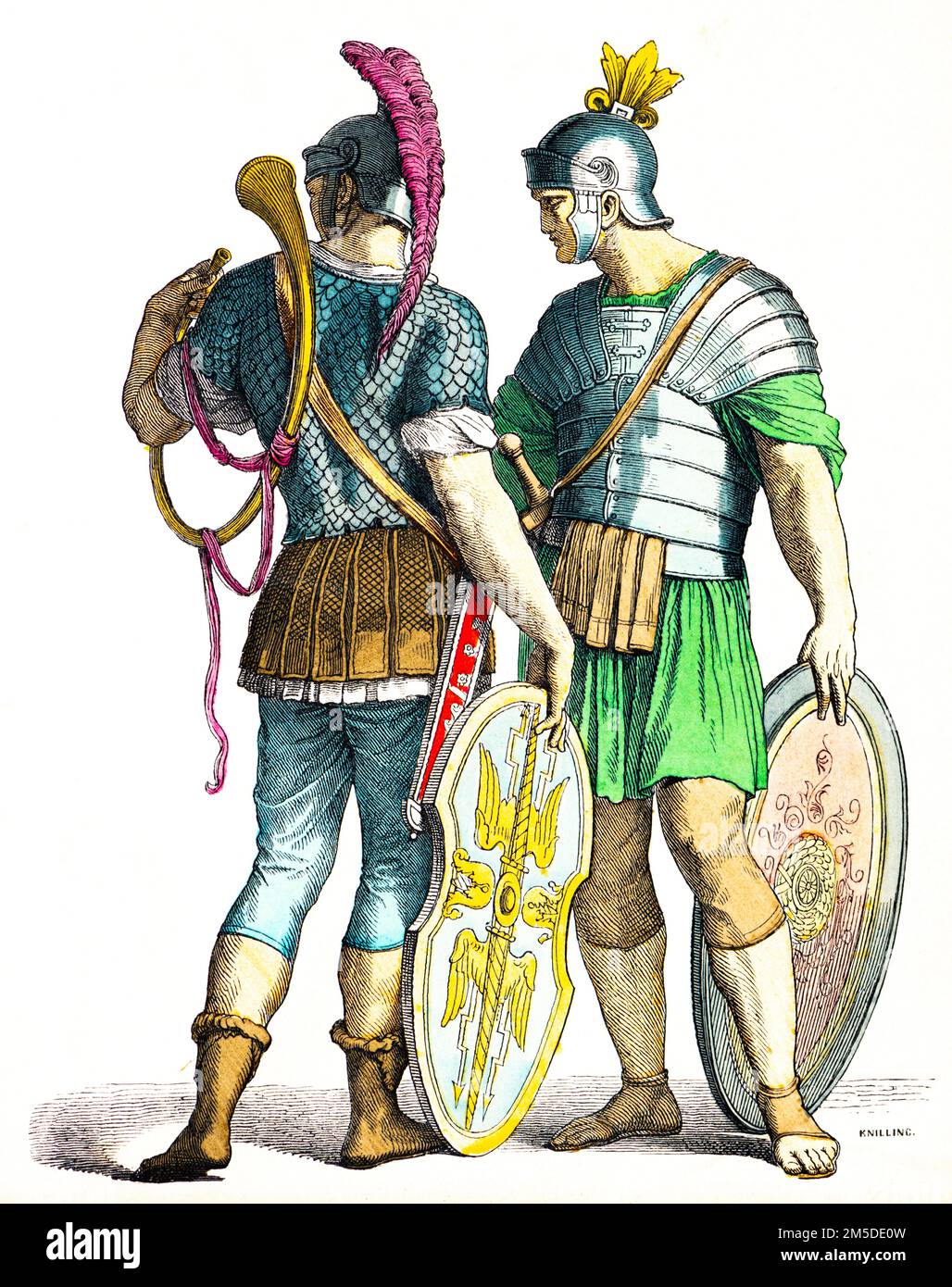 Historical costumes of two Roman soldiers, colored historical illustration, Münchener Bilderbogen, München 1890 Stock Photohttps://www.alamy.com/image-license-details/?v=1https://www.alamy.com/historical-costumes-of-two-roman-soldiers-colored-historical-illustration-mnchener-bilderbogen-mnchen-1890-image502470329.html
Historical costumes of two Roman soldiers, colored historical illustration, Münchener Bilderbogen, München 1890 Stock Photohttps://www.alamy.com/image-license-details/?v=1https://www.alamy.com/historical-costumes-of-two-roman-soldiers-colored-historical-illustration-mnchener-bilderbogen-mnchen-1890-image502470329.htmlRF2M5DE0W–Historical costumes of two Roman soldiers, colored historical illustration, Münchener Bilderbogen, München 1890
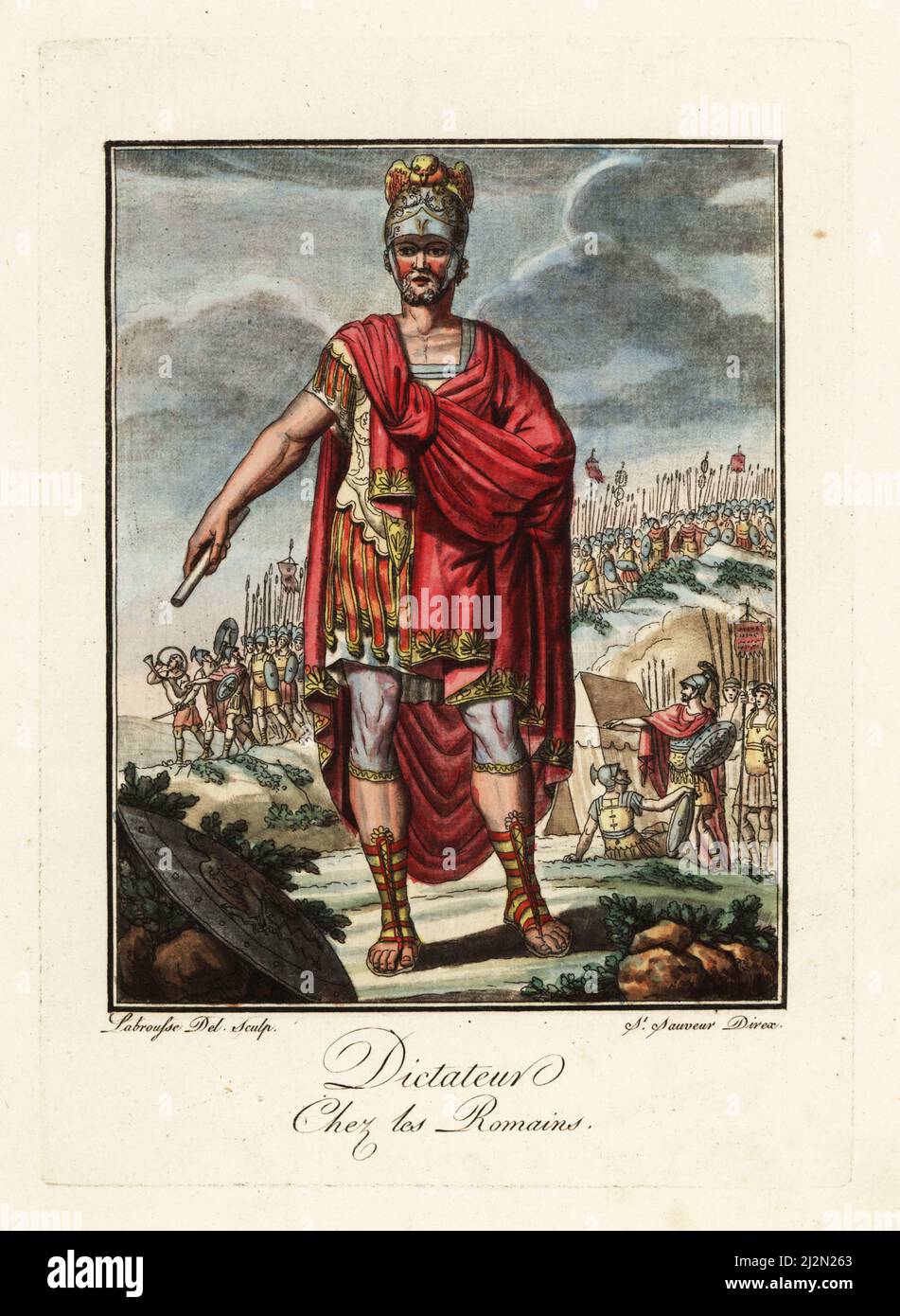 Dictator in military uniform, ancient Rome. Wearing galea or helmet, breastplate, paludamentum cloak, tunic, short trousers or sagulum gregale, and caligae hobnail boots. In front of a legion of soldiers with signifers and buccinators. Dictateur chez les Romains. Handcoloured copperplate drawn and engraved by L. Labrousse, artist of Bordeaux, under the direction of Jacques Grasset de Saint-Sauveur from his L’antique Rome, ou description historique et pittoresque, Ancient Rome, or historical and picturesque description, Chez Deroy, Paris, 1796. Stock Photohttps://www.alamy.com/image-license-details/?v=1https://www.alamy.com/dictator-in-military-uniform-ancient-rome-wearing-galea-or-helmet-breastplate-paludamentum-cloak-tunic-short-trousers-or-sagulum-gregale-and-caligae-hobnail-boots-in-front-of-a-legion-of-soldiers-with-signifers-and-buccinators-dictateur-chez-les-romains-handcoloured-copperplate-drawn-and-engraved-by-l-labrousse-artist-of-bordeaux-under-the-direction-of-jacques-grasset-de-saint-sauveur-from-his-lantique-rome-ou-description-historique-et-pittoresque-ancient-rome-or-historical-and-picturesque-description-chez-deroy-paris-1796-image466371979.html
Dictator in military uniform, ancient Rome. Wearing galea or helmet, breastplate, paludamentum cloak, tunic, short trousers or sagulum gregale, and caligae hobnail boots. In front of a legion of soldiers with signifers and buccinators. Dictateur chez les Romains. Handcoloured copperplate drawn and engraved by L. Labrousse, artist of Bordeaux, under the direction of Jacques Grasset de Saint-Sauveur from his L’antique Rome, ou description historique et pittoresque, Ancient Rome, or historical and picturesque description, Chez Deroy, Paris, 1796. Stock Photohttps://www.alamy.com/image-license-details/?v=1https://www.alamy.com/dictator-in-military-uniform-ancient-rome-wearing-galea-or-helmet-breastplate-paludamentum-cloak-tunic-short-trousers-or-sagulum-gregale-and-caligae-hobnail-boots-in-front-of-a-legion-of-soldiers-with-signifers-and-buccinators-dictateur-chez-les-romains-handcoloured-copperplate-drawn-and-engraved-by-l-labrousse-artist-of-bordeaux-under-the-direction-of-jacques-grasset-de-saint-sauveur-from-his-lantique-rome-ou-description-historique-et-pittoresque-ancient-rome-or-historical-and-picturesque-description-chez-deroy-paris-1796-image466371979.htmlRM2J2N263–Dictator in military uniform, ancient Rome. Wearing galea or helmet, breastplate, paludamentum cloak, tunic, short trousers or sagulum gregale, and caligae hobnail boots. In front of a legion of soldiers with signifers and buccinators. Dictateur chez les Romains. Handcoloured copperplate drawn and engraved by L. Labrousse, artist of Bordeaux, under the direction of Jacques Grasset de Saint-Sauveur from his L’antique Rome, ou description historique et pittoresque, Ancient Rome, or historical and picturesque description, Chez Deroy, Paris, 1796.
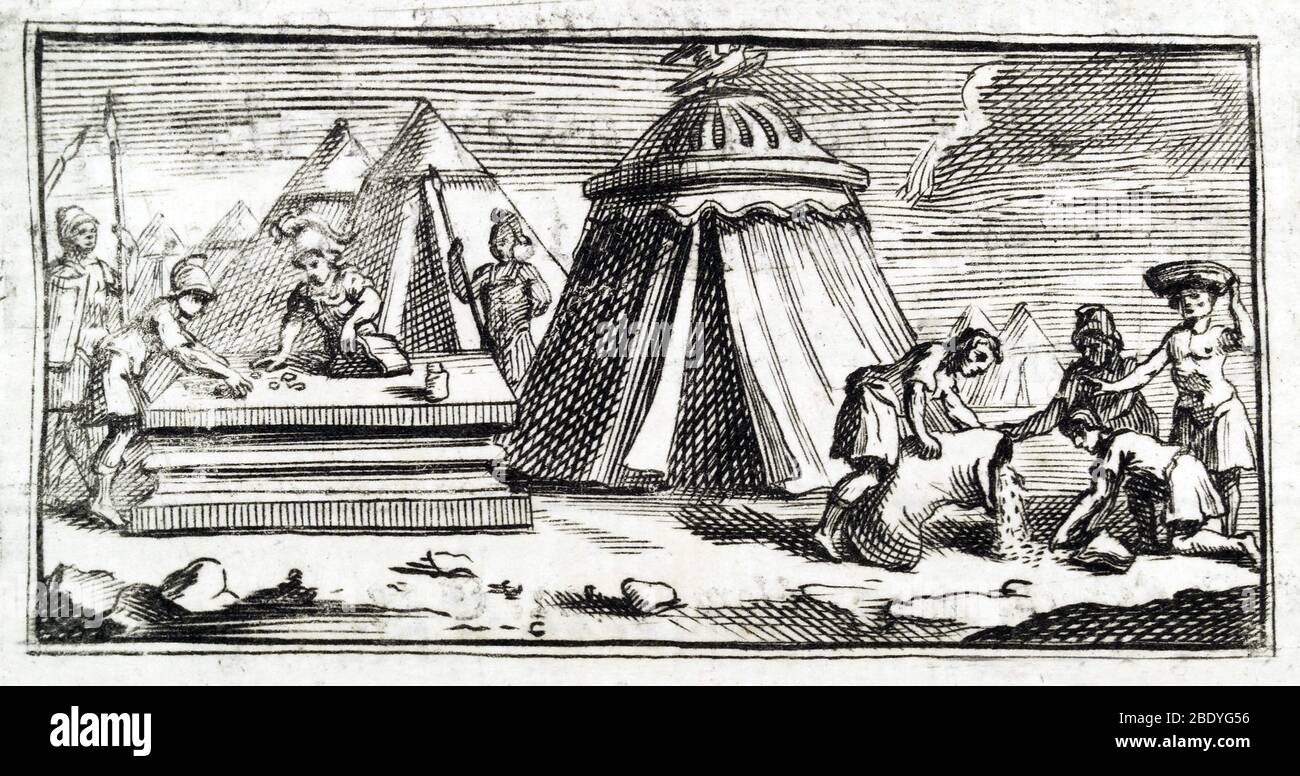 Ancient Roman Army, Pay Day Stock Photohttps://www.alamy.com/image-license-details/?v=1https://www.alamy.com/ancient-roman-army-pay-day-image352803282.html
Ancient Roman Army, Pay Day Stock Photohttps://www.alamy.com/image-license-details/?v=1https://www.alamy.com/ancient-roman-army-pay-day-image352803282.htmlRM2BDYG56–Ancient Roman Army, Pay Day
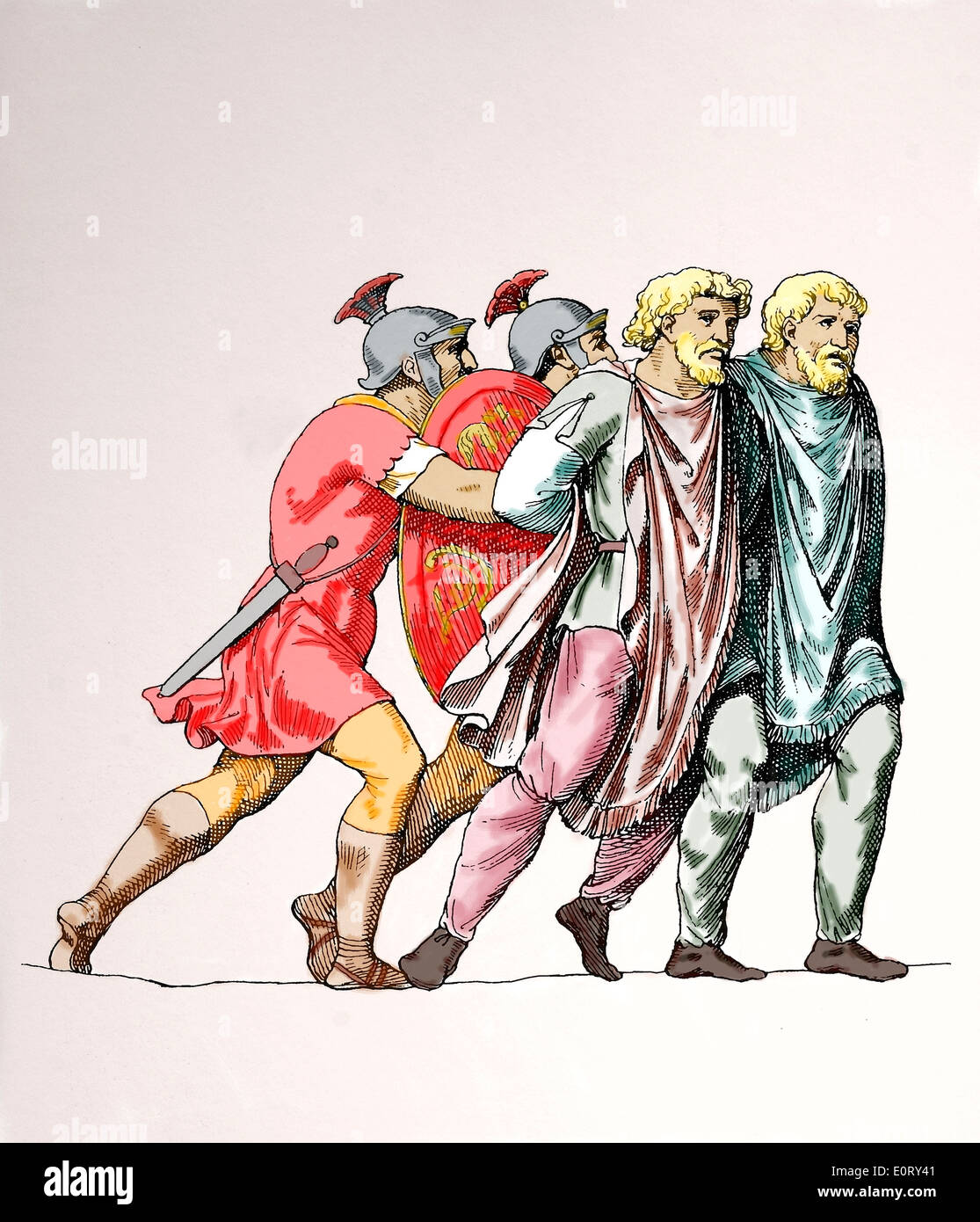 Ancient Rome. Germanic men with their roman captors. Engraving. Colored. Stock Photohttps://www.alamy.com/image-license-details/?v=1https://www.alamy.com/ancient-rome-germanic-men-with-their-roman-captors-engraving-colored-image69367649.html
Ancient Rome. Germanic men with their roman captors. Engraving. Colored. Stock Photohttps://www.alamy.com/image-license-details/?v=1https://www.alamy.com/ancient-rome-germanic-men-with-their-roman-captors-engraving-colored-image69367649.htmlRME0RY41–Ancient Rome. Germanic men with their roman captors. Engraving. Colored.
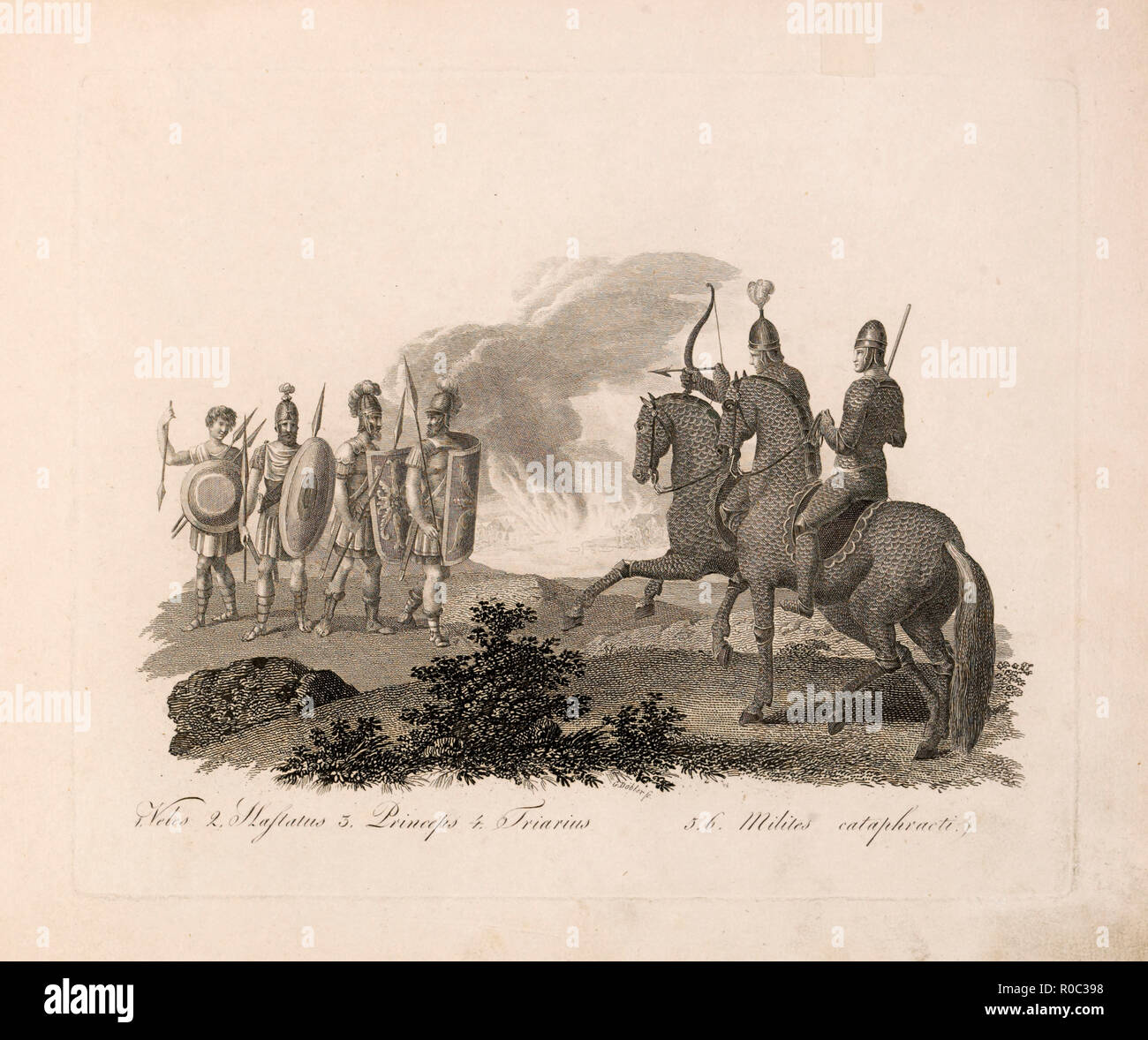 Veles (Roman Infantryman), Emperor, versus Armored Soldiers, Ancient Rome, Engraving, G. Dobler, 1819 Stock Photohttps://www.alamy.com/image-license-details/?v=1https://www.alamy.com/veles-roman-infantryman-emperor-versus-armored-soldiers-ancient-rome-engraving-g-dobler-1819-image224000820.html
Veles (Roman Infantryman), Emperor, versus Armored Soldiers, Ancient Rome, Engraving, G. Dobler, 1819 Stock Photohttps://www.alamy.com/image-license-details/?v=1https://www.alamy.com/veles-roman-infantryman-emperor-versus-armored-soldiers-ancient-rome-engraving-g-dobler-1819-image224000820.htmlRMR0C398–Veles (Roman Infantryman), Emperor, versus Armored Soldiers, Ancient Rome, Engraving, G. Dobler, 1819
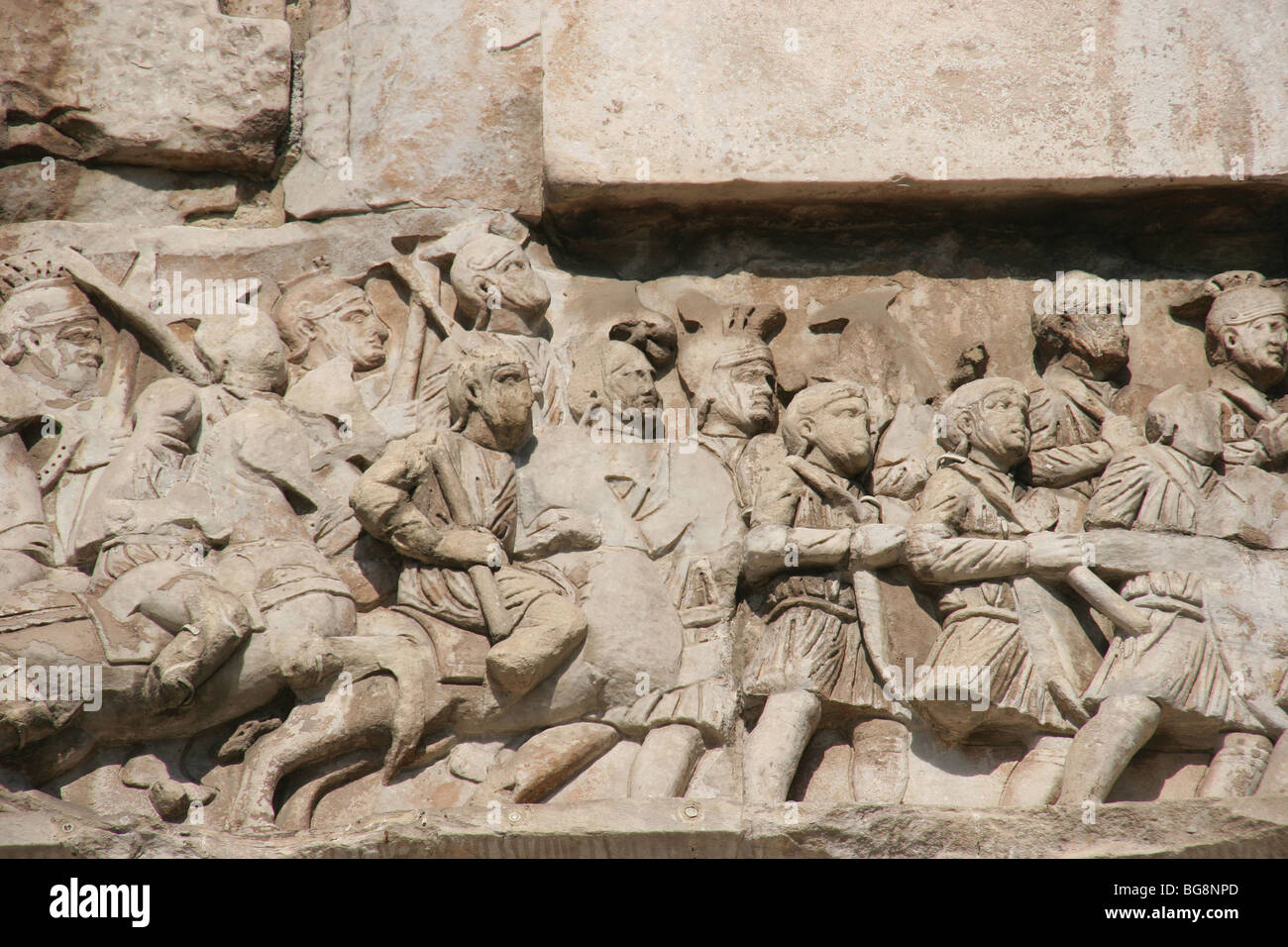 Arch of Constantine. Relief depicting soldiers in a battle. Rome. Stock Photohttps://www.alamy.com/image-license-details/?v=1https://www.alamy.com/stock-photo-arch-of-constantine-relief-depicting-soldiers-in-a-battle-rome-27237573.html
Arch of Constantine. Relief depicting soldiers in a battle. Rome. Stock Photohttps://www.alamy.com/image-license-details/?v=1https://www.alamy.com/stock-photo-arch-of-constantine-relief-depicting-soldiers-in-a-battle-rome-27237573.htmlRMBG8NPD–Arch of Constantine. Relief depicting soldiers in a battle. Rome.
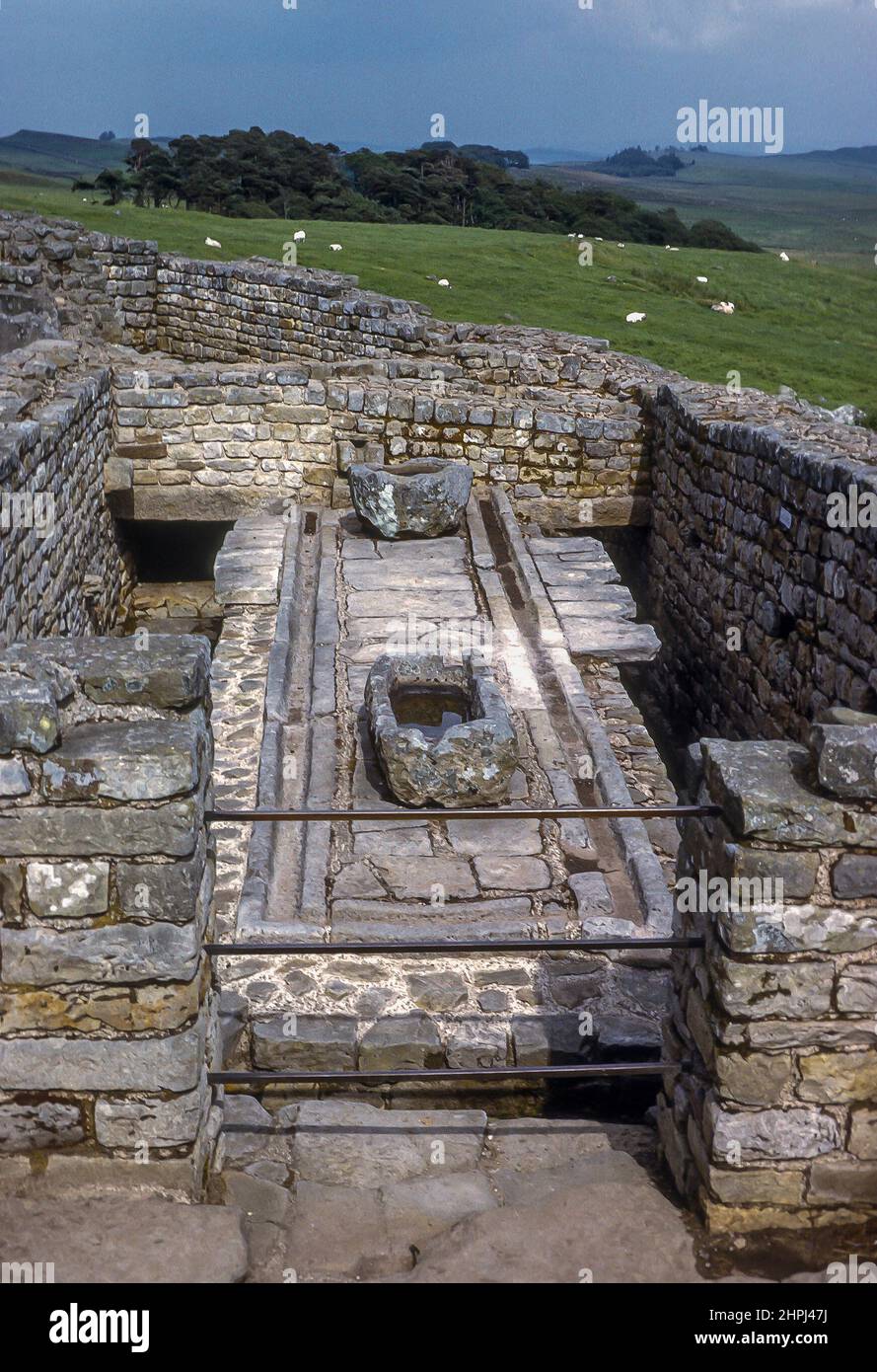 Roman soldiers' washroom at Housesteads, one of 15 forts along Hadrians Wall, England Stock Photohttps://www.alamy.com/image-license-details/?v=1https://www.alamy.com/roman-soldiers-washroom-at-housesteads-one-of-15-forts-along-hadrians-wall-england-image461390486.html
Roman soldiers' washroom at Housesteads, one of 15 forts along Hadrians Wall, England Stock Photohttps://www.alamy.com/image-license-details/?v=1https://www.alamy.com/roman-soldiers-washroom-at-housesteads-one-of-15-forts-along-hadrians-wall-england-image461390486.htmlRF2HPJ47J–Roman soldiers' washroom at Housesteads, one of 15 forts along Hadrians Wall, England
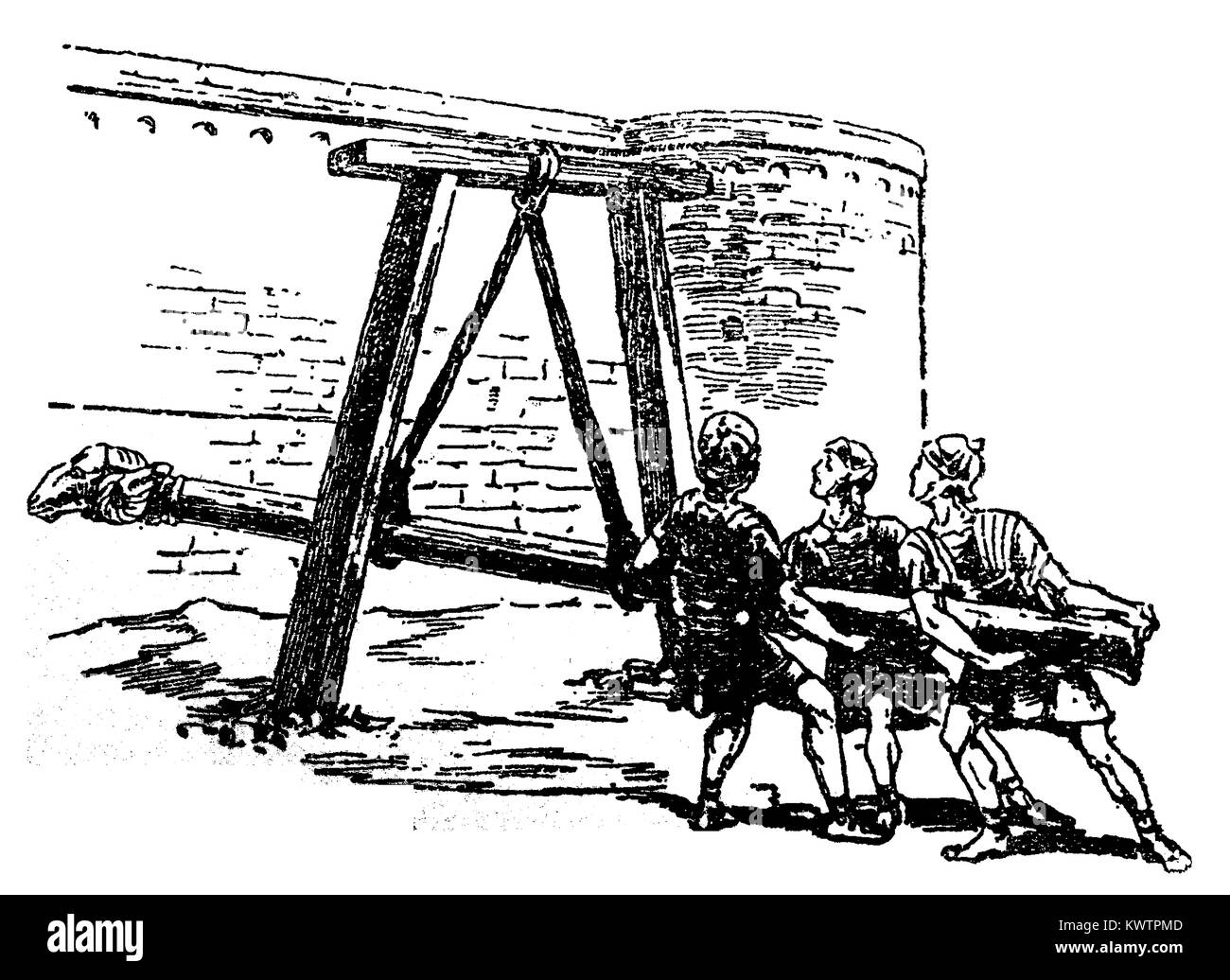 ROMAN SOLDIERS OPERATING A BATTERING RAM WITH A RAMS HEAD DESIGN METAL CAP (1930 ILLUSTRATION) Stock Photohttps://www.alamy.com/image-license-details/?v=1https://www.alamy.com/stock-photo-roman-soldiers-operating-a-battering-ram-with-a-rams-head-design-metal-170804381.html
ROMAN SOLDIERS OPERATING A BATTERING RAM WITH A RAMS HEAD DESIGN METAL CAP (1930 ILLUSTRATION) Stock Photohttps://www.alamy.com/image-license-details/?v=1https://www.alamy.com/stock-photo-roman-soldiers-operating-a-battering-ram-with-a-rams-head-design-metal-170804381.htmlRMKWTPMD–ROMAN SOLDIERS OPERATING A BATTERING RAM WITH A RAMS HEAD DESIGN METAL CAP (1930 ILLUSTRATION)
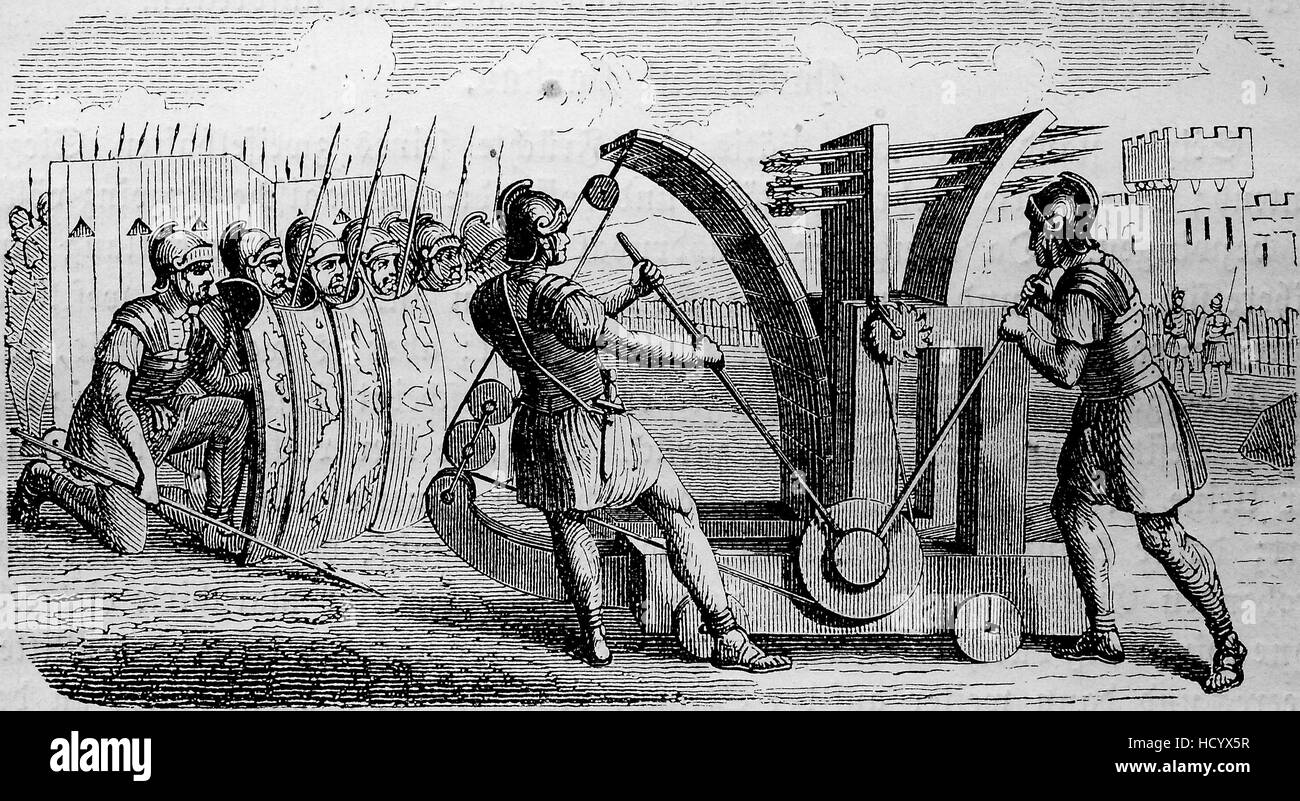 catapult for arrows, used by the roman soldiers in 210 BC, the story of the ancient Rome, roman Empire, Italy Stock Photohttps://www.alamy.com/image-license-details/?v=1https://www.alamy.com/stock-photo-catapult-for-arrows-used-by-the-roman-soldiers-in-210-bc-the-story-128461699.html
catapult for arrows, used by the roman soldiers in 210 BC, the story of the ancient Rome, roman Empire, Italy Stock Photohttps://www.alamy.com/image-license-details/?v=1https://www.alamy.com/stock-photo-catapult-for-arrows-used-by-the-roman-soldiers-in-210-bc-the-story-128461699.htmlRFHCYX5R–catapult for arrows, used by the roman soldiers in 210 BC, the story of the ancient Rome, roman Empire, Italy
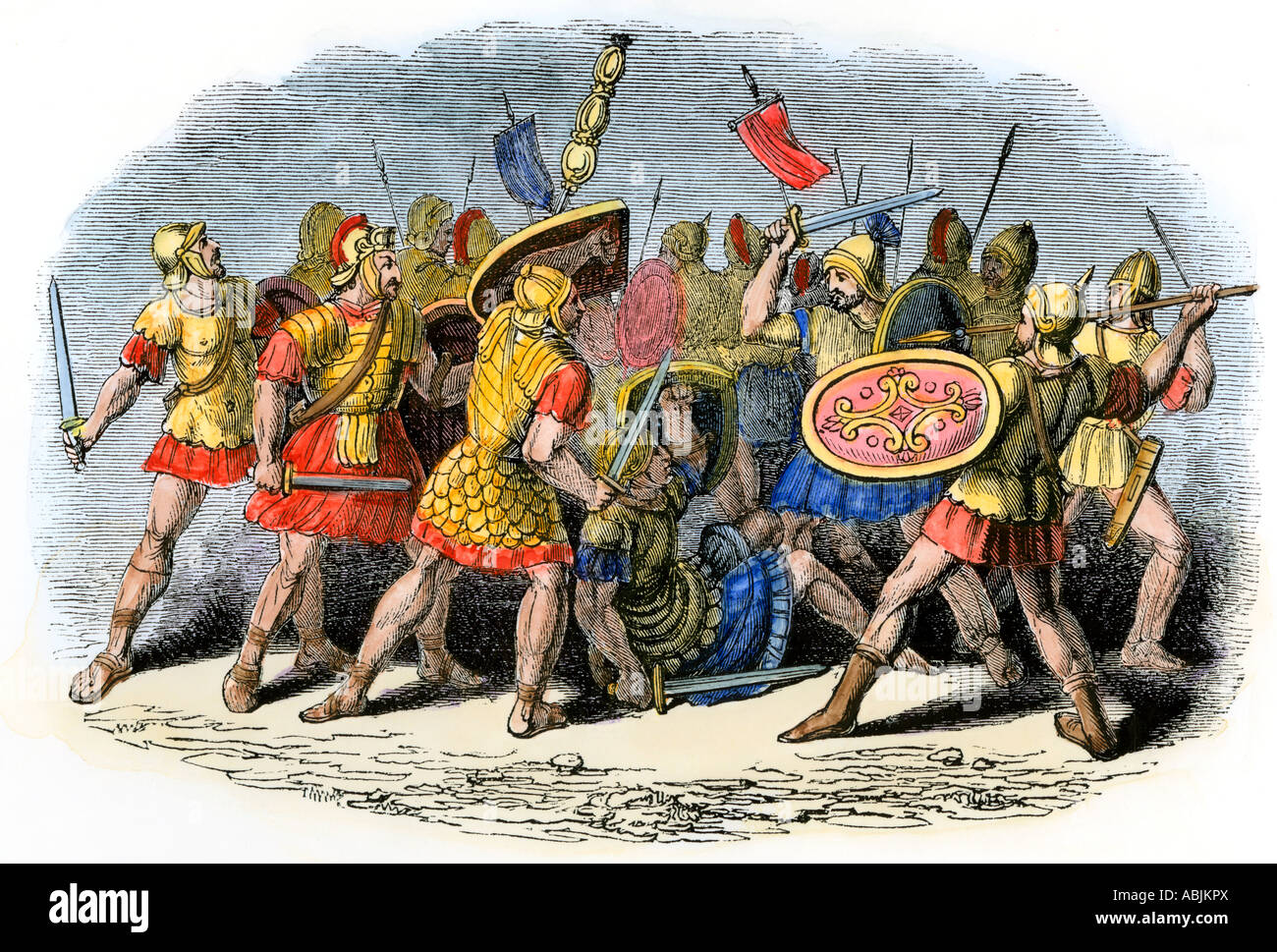 Battle of Roman soldiers against Sarmatians. Hand-colored woodcut Stock Photohttps://www.alamy.com/image-license-details/?v=1https://www.alamy.com/stock-photo-battle-of-roman-soldiers-against-sarmatians-hand-colored-woodcut-12908161.html
Battle of Roman soldiers against Sarmatians. Hand-colored woodcut Stock Photohttps://www.alamy.com/image-license-details/?v=1https://www.alamy.com/stock-photo-battle-of-roman-soldiers-against-sarmatians-hand-colored-woodcut-12908161.htmlRMABJKPX–Battle of Roman soldiers against Sarmatians. Hand-colored woodcut
 military, ancient world, Roman Empire, soldiers on landing stage, drawing after relief on Trajan's Column, circa 110 AD, historic, historical, infantry, Dacian war, Dacians, ancient world, people, Stock Photohttps://www.alamy.com/image-license-details/?v=1https://www.alamy.com/stock-photo-military-ancient-world-roman-empire-soldiers-on-landing-stage-drawing-28818839.html
military, ancient world, Roman Empire, soldiers on landing stage, drawing after relief on Trajan's Column, circa 110 AD, historic, historical, infantry, Dacian war, Dacians, ancient world, people, Stock Photohttps://www.alamy.com/image-license-details/?v=1https://www.alamy.com/stock-photo-military-ancient-world-roman-empire-soldiers-on-landing-stage-drawing-28818839.htmlRMBJTPM7–military, ancient world, Roman Empire, soldiers on landing stage, drawing after relief on Trajan's Column, circa 110 AD, historic, historical, infantry, Dacian war, Dacians, ancient world, people,
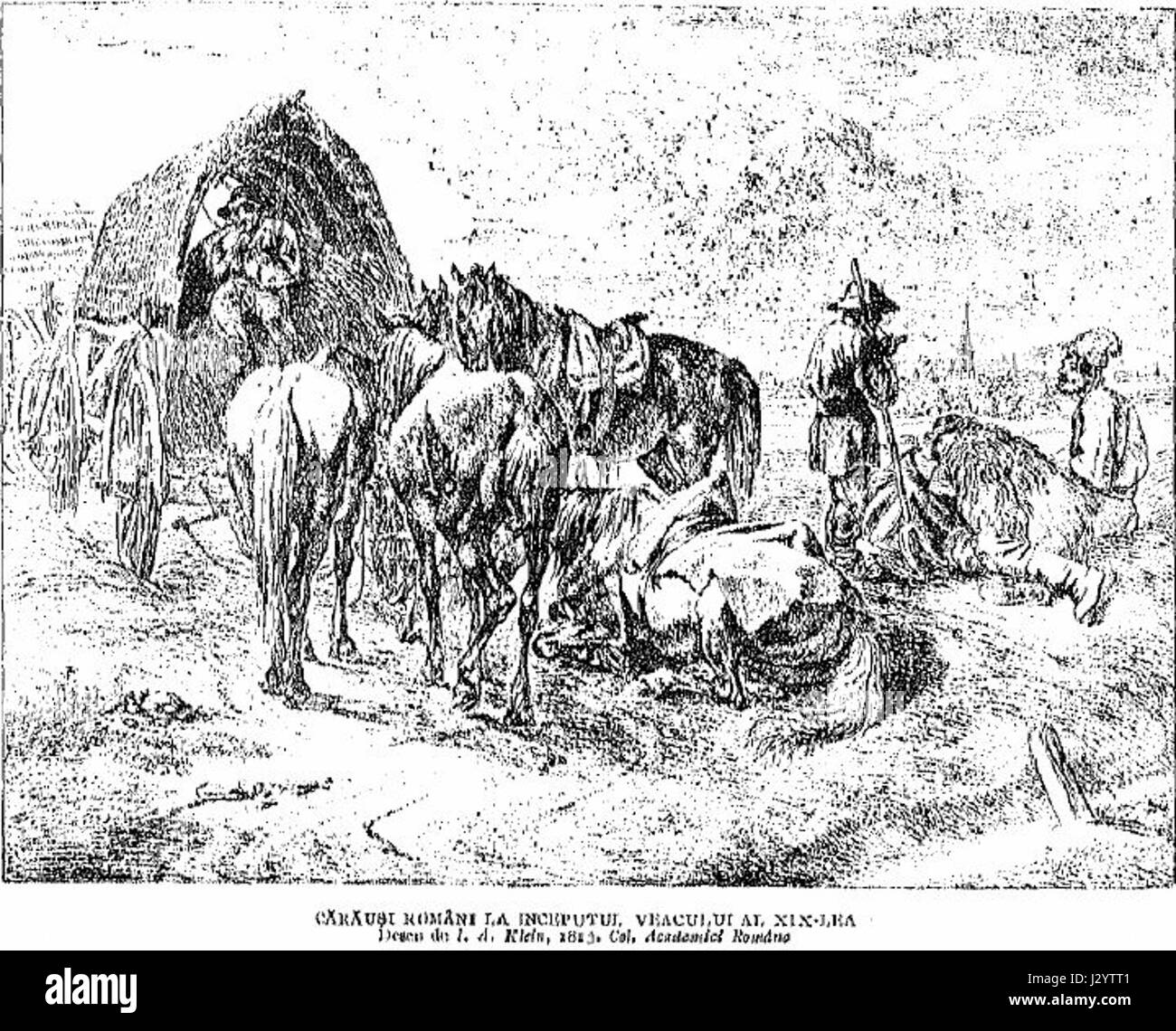 'Carausi Romani' refers to Roman soldiers from the 19th century, likely referencing the archaeological findings or historical studies of the Roman Empire during this time period. Stock Photohttps://www.alamy.com/image-license-details/?v=1https://www.alamy.com/stock-photo-carausi-romani-refers-to-roman-soldiers-from-the-19th-century-likely-139524449.html
'Carausi Romani' refers to Roman soldiers from the 19th century, likely referencing the archaeological findings or historical studies of the Roman Empire during this time period. Stock Photohttps://www.alamy.com/image-license-details/?v=1https://www.alamy.com/stock-photo-carausi-romani-refers-to-roman-soldiers-from-the-19th-century-likely-139524449.htmlRMJ2YTT1–'Carausi Romani' refers to Roman soldiers from the 19th century, likely referencing the archaeological findings or historical studies of the Roman Empire during this time period.
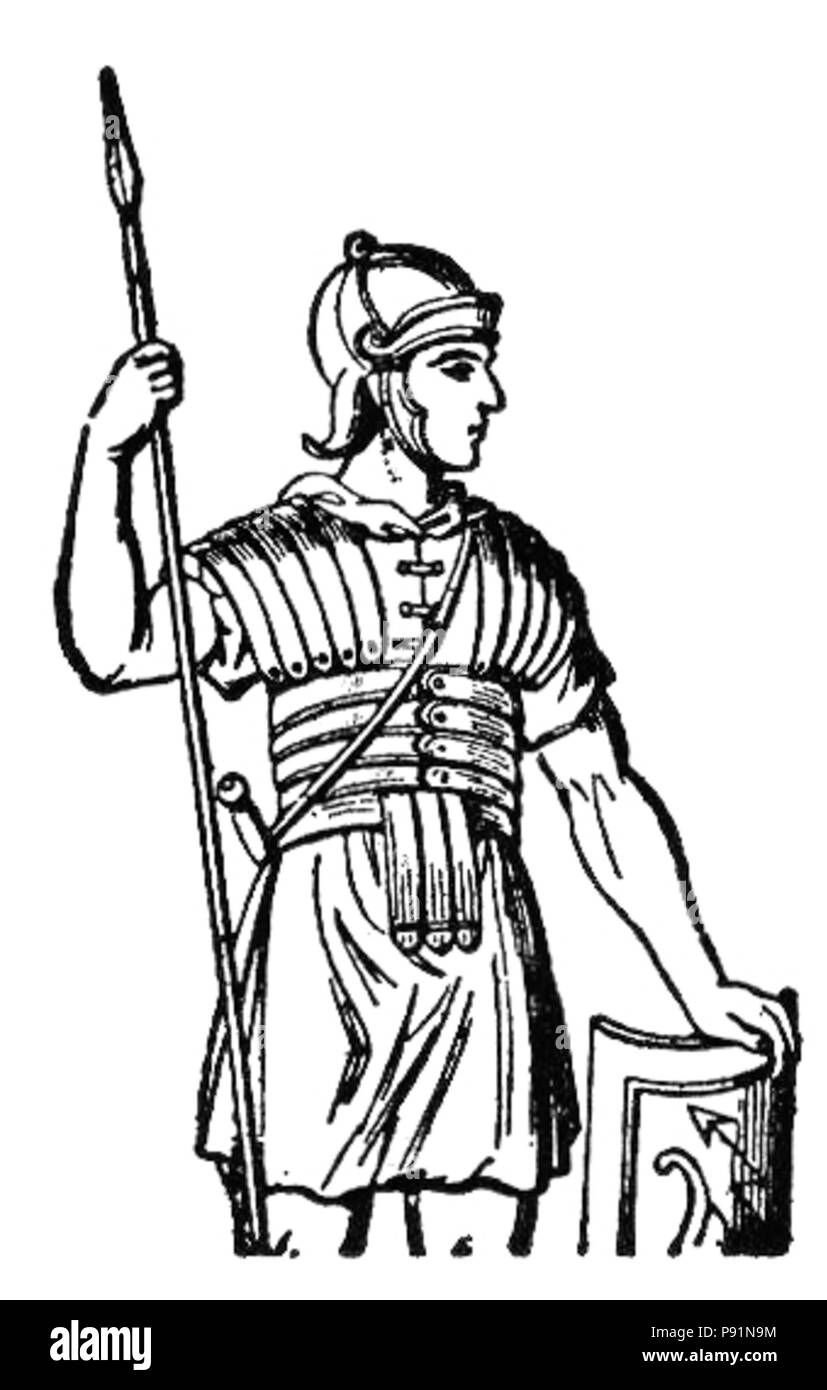 . 384 LA2-NSRW-1-0134-roman-cuirass-art Stock Photohttps://www.alamy.com/image-license-details/?v=1https://www.alamy.com/384-la2-nsrw-1-0134-roman-cuirass-art-image212095008.html
. 384 LA2-NSRW-1-0134-roman-cuirass-art Stock Photohttps://www.alamy.com/image-license-details/?v=1https://www.alamy.com/384-la2-nsrw-1-0134-roman-cuirass-art-image212095008.htmlRMP91N9M–. 384 LA2-NSRW-1-0134-roman-cuirass-art
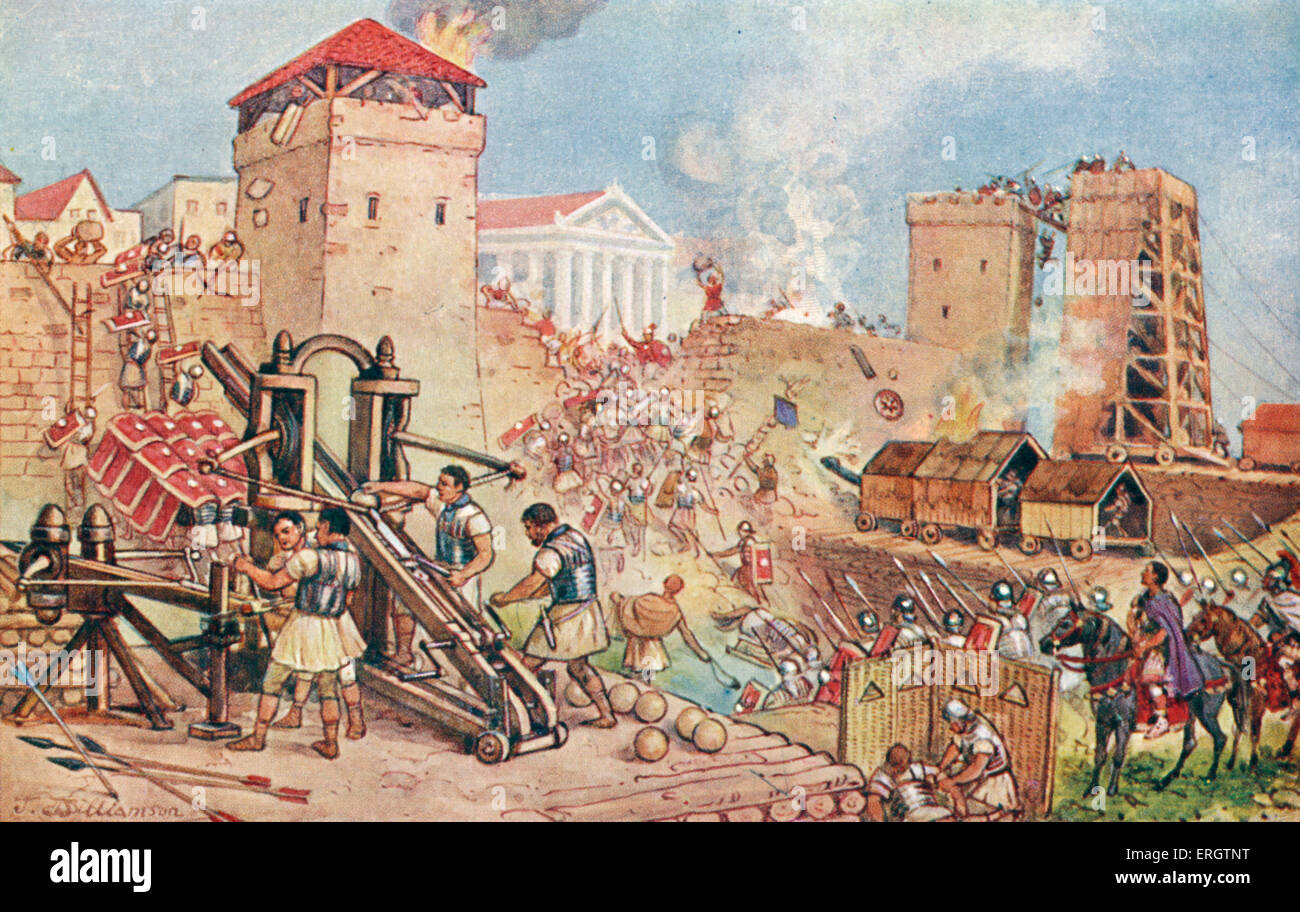 The Roman Empire - the siege Rampart, ramparts, citadel, citadels, fortress, catapult, soldier, soldiers, armor. Illustration Stock Photohttps://www.alamy.com/image-license-details/?v=1https://www.alamy.com/stock-photo-the-roman-empire-the-siege-rampart-ramparts-citadel-citadels-fortress-83349220.html
The Roman Empire - the siege Rampart, ramparts, citadel, citadels, fortress, catapult, soldier, soldiers, armor. Illustration Stock Photohttps://www.alamy.com/image-license-details/?v=1https://www.alamy.com/stock-photo-the-roman-empire-the-siege-rampart-ramparts-citadel-citadels-fortress-83349220.htmlRMERGTNT–The Roman Empire - the siege Rampart, ramparts, citadel, citadels, fortress, catapult, soldier, soldiers, armor. Illustration
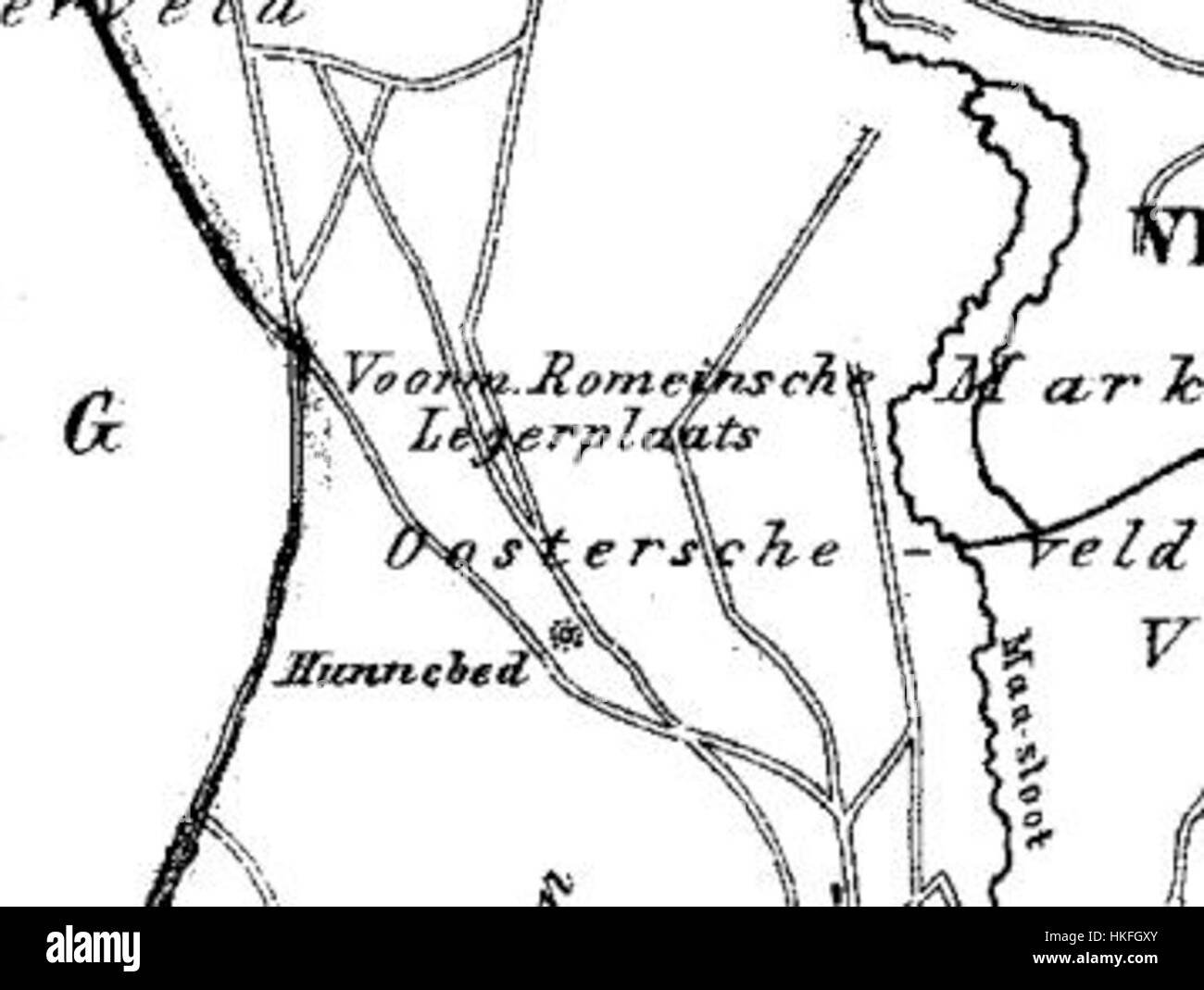 'RomLegerplaats' is a painting that reflects military life during the Roman Empire. The work depicts soldiers in camp, showcasing their daily routines and military discipline. The artwork serves as a historical representation of Roman military practices. Stock Photohttps://www.alamy.com/image-license-details/?v=1https://www.alamy.com/stock-photo-romlegerplaats-is-a-painting-that-reflects-military-life-during-the-132493619.html
'RomLegerplaats' is a painting that reflects military life during the Roman Empire. The work depicts soldiers in camp, showcasing their daily routines and military discipline. The artwork serves as a historical representation of Roman military practices. Stock Photohttps://www.alamy.com/image-license-details/?v=1https://www.alamy.com/stock-photo-romlegerplaats-is-a-painting-that-reflects-military-life-during-the-132493619.htmlRMHKFGXY–'RomLegerplaats' is a painting that reflects military life during the Roman Empire. The work depicts soldiers in camp, showcasing their daily routines and military discipline. The artwork serves as a historical representation of Roman military practices.
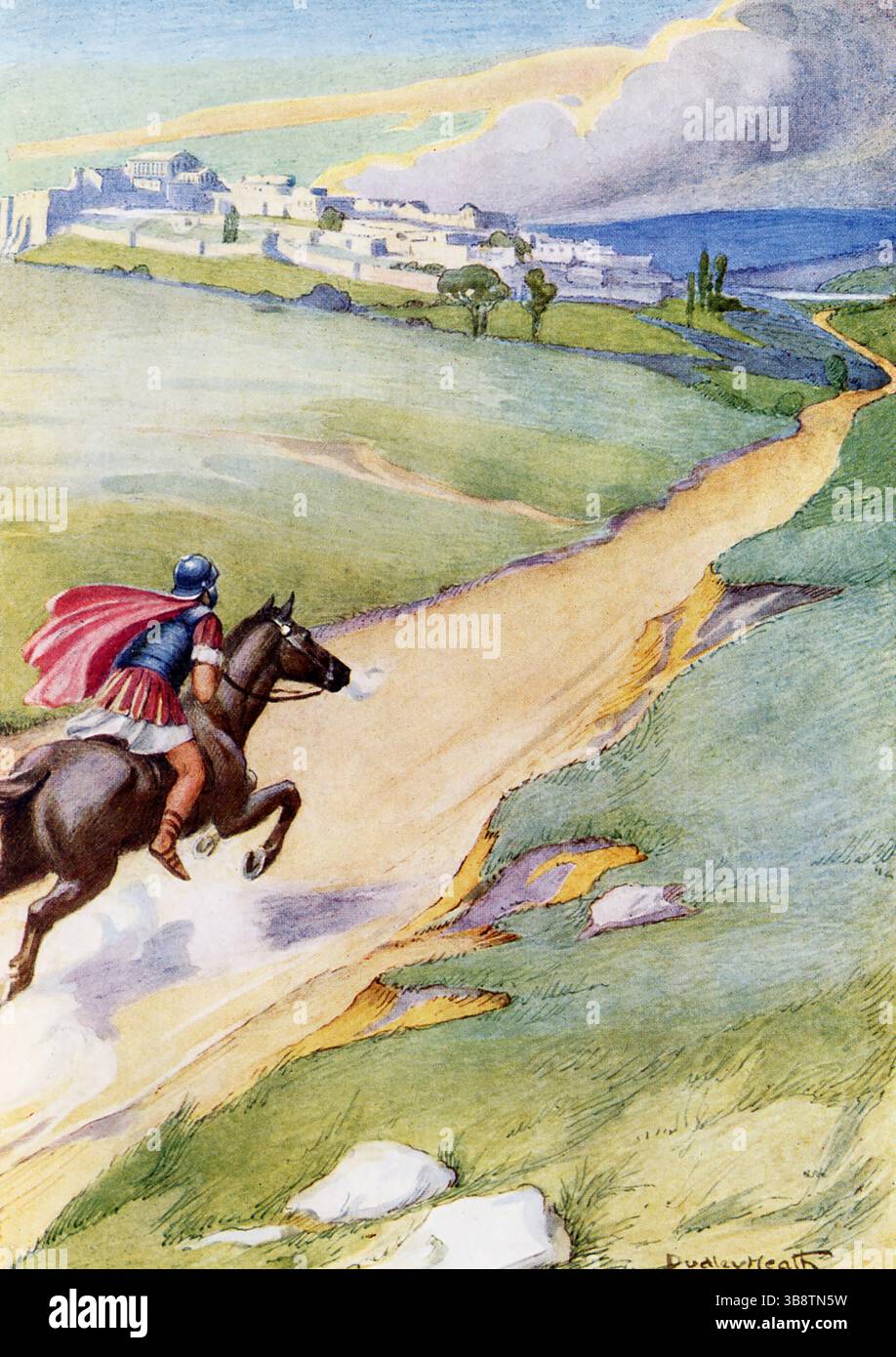 This early 1900s image shows a Roman messenger galloping toward Rome during the time of the Punic Wars around 200 BC. The Punic Wars were a series of three conflicts (264-146 BC) between the Roman Republic and the Carthaginian Empire, resulting in Roman dominance over the western Mediterranean and the eventual destruction of Carthage Stock Photohttps://www.alamy.com/image-license-details/?v=1https://www.alamy.com/this-early-1900s-image-shows-a-roman-messenger-galloping-toward-rome-during-the-time-of-the-punic-wars-around-200-bc-the-punic-wars-were-a-series-of-three-conflicts-264-146-bc-between-the-roman-republic-and-the-carthaginian-empire-resulting-in-roman-dominance-over-the-western-mediterranean-and-the-eventual-destruction-of-carthage-image676665077.html
This early 1900s image shows a Roman messenger galloping toward Rome during the time of the Punic Wars around 200 BC. The Punic Wars were a series of three conflicts (264-146 BC) between the Roman Republic and the Carthaginian Empire, resulting in Roman dominance over the western Mediterranean and the eventual destruction of Carthage Stock Photohttps://www.alamy.com/image-license-details/?v=1https://www.alamy.com/this-early-1900s-image-shows-a-roman-messenger-galloping-toward-rome-during-the-time-of-the-punic-wars-around-200-bc-the-punic-wars-were-a-series-of-three-conflicts-264-146-bc-between-the-roman-republic-and-the-carthaginian-empire-resulting-in-roman-dominance-over-the-western-mediterranean-and-the-eventual-destruction-of-carthage-image676665077.htmlRF3B8TN5W–This early 1900s image shows a Roman messenger galloping toward Rome during the time of the Punic Wars around 200 BC. The Punic Wars were a series of three conflicts (264-146 BC) between the Roman Republic and the Carthaginian Empire, resulting in Roman dominance over the western Mediterranean and the eventual destruction of Carthage
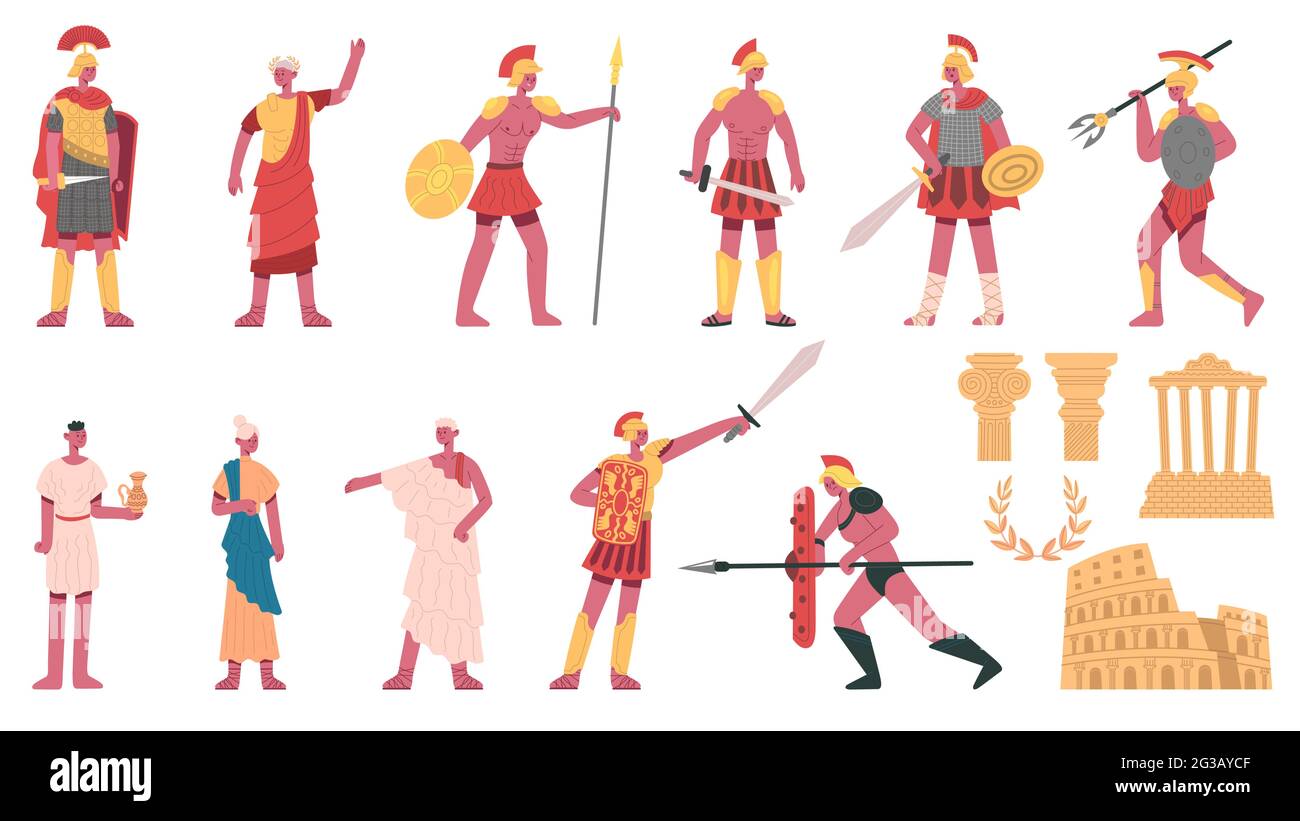 Ancient roman empire. Ancient roman characters, emperor, centurions, soldiers and plebs cartoon vector illustration set. Rome empire symbols Stock Vectorhttps://www.alamy.com/image-license-details/?v=1https://www.alamy.com/ancient-roman-empire-ancient-roman-characters-emperor-centurions-soldiers-and-plebs-cartoon-vector-illustration-set-rome-empire-symbols-image432344207.html
Ancient roman empire. Ancient roman characters, emperor, centurions, soldiers and plebs cartoon vector illustration set. Rome empire symbols Stock Vectorhttps://www.alamy.com/image-license-details/?v=1https://www.alamy.com/ancient-roman-empire-ancient-roman-characters-emperor-centurions-soldiers-and-plebs-cartoon-vector-illustration-set-rome-empire-symbols-image432344207.htmlRF2G3AYCF–Ancient roman empire. Ancient roman characters, emperor, centurions, soldiers and plebs cartoon vector illustration set. Rome empire symbols
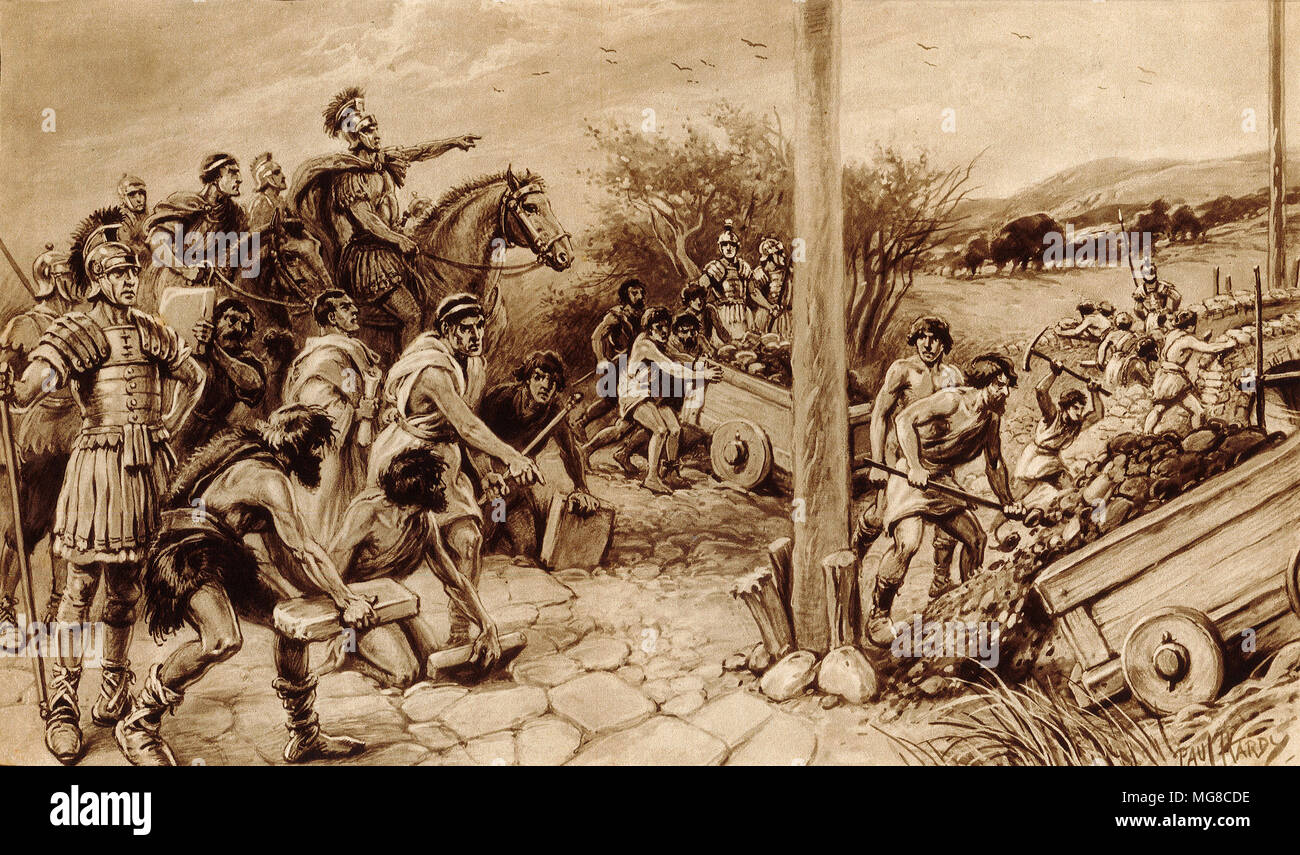 Roman soldiers direct the locals to build a road in Roman Britain. From an original painting by Paul Hardy. Stock Photohttps://www.alamy.com/image-license-details/?v=1https://www.alamy.com/roman-soldiers-direct-the-locals-to-build-a-road-in-roman-britain-from-an-original-painting-by-paul-hardy-image182123578.html
Roman soldiers direct the locals to build a road in Roman Britain. From an original painting by Paul Hardy. Stock Photohttps://www.alamy.com/image-license-details/?v=1https://www.alamy.com/roman-soldiers-direct-the-locals-to-build-a-road-in-roman-britain-from-an-original-painting-by-paul-hardy-image182123578.htmlRMMG8CDE–Roman soldiers direct the locals to build a road in Roman Britain. From an original painting by Paul Hardy.
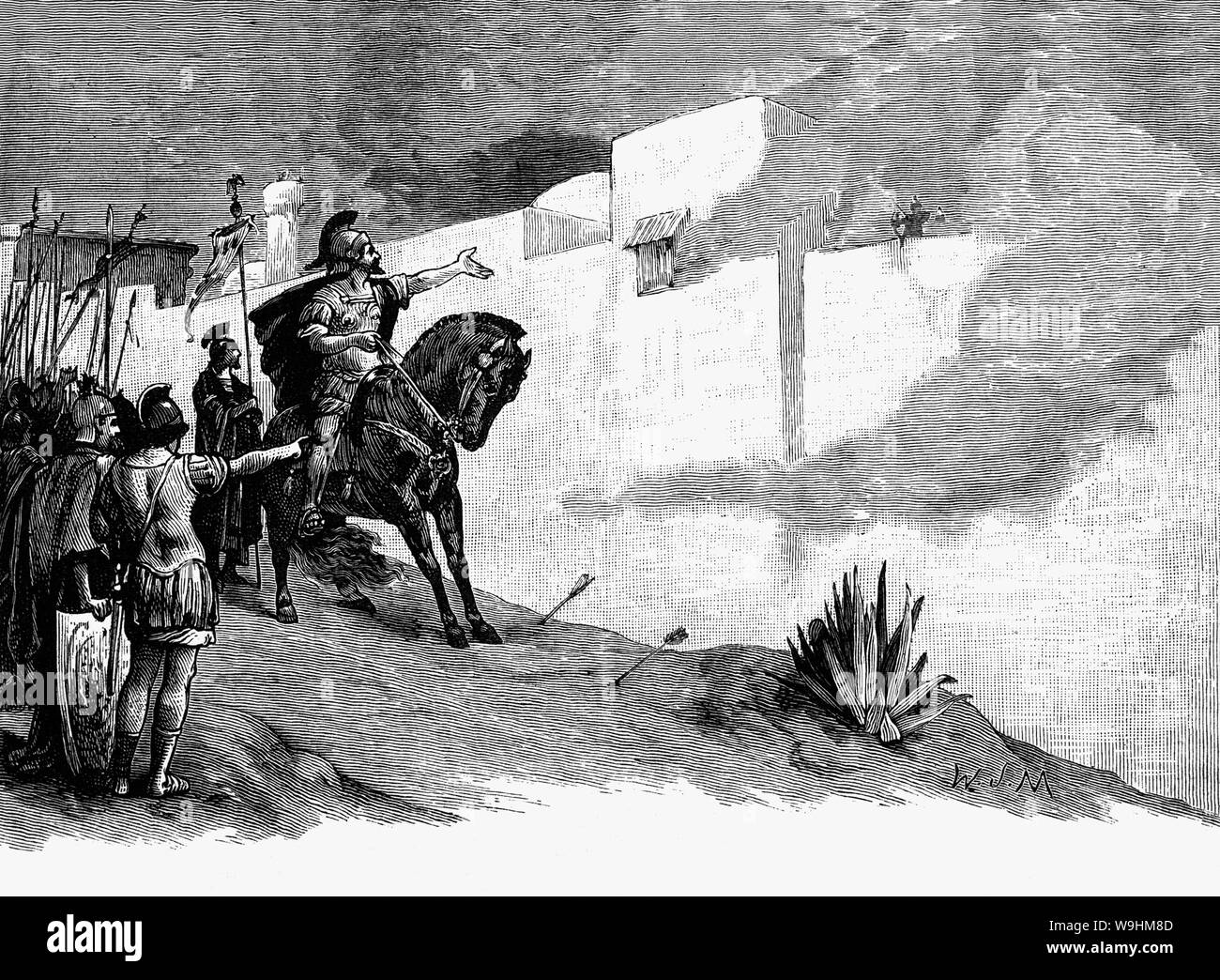 Marcus Junius Brutus (the Younger) (85 BC – 42 BC), often referred to as Brutus, outside the walls of Xanthus, a city in ancient Lycia, in Antalya Province, Turkey. Brutus was a politician of the late Roman Republic who took a leading role in the assassination of Julius Caesar. After the death of Caesar, Consul Mark Antony became the official head of the state, whilst Brutus took the opposing side. Xanthus supported Mark Antony and was destroyed in the Roman Civil Wars, circa 42 BC, by Brutus, but later rebuilt under Mark Antony. Stock Photohttps://www.alamy.com/image-license-details/?v=1https://www.alamy.com/marcus-junius-brutus-the-younger-85-bc-42-bc-often-referred-to-as-brutus-outside-the-walls-of-xanthus-a-city-in-ancient-lycia-in-antalya-province-turkey-brutus-was-a-politician-of-the-late-roman-republic-who-took-a-leading-role-in-the-assassination-of-julius-caesar-after-the-death-of-caesar-consul-mark-antony-became-the-official-head-of-the-state-whilst-brutus-took-the-opposing-side-xanthus-supported-mark-antony-and-was-destroyed-in-the-roman-civil-wars-circa-42-bc-by-brutus-but-later-rebuilt-under-mark-antony-image264076525.html
Marcus Junius Brutus (the Younger) (85 BC – 42 BC), often referred to as Brutus, outside the walls of Xanthus, a city in ancient Lycia, in Antalya Province, Turkey. Brutus was a politician of the late Roman Republic who took a leading role in the assassination of Julius Caesar. After the death of Caesar, Consul Mark Antony became the official head of the state, whilst Brutus took the opposing side. Xanthus supported Mark Antony and was destroyed in the Roman Civil Wars, circa 42 BC, by Brutus, but later rebuilt under Mark Antony. Stock Photohttps://www.alamy.com/image-license-details/?v=1https://www.alamy.com/marcus-junius-brutus-the-younger-85-bc-42-bc-often-referred-to-as-brutus-outside-the-walls-of-xanthus-a-city-in-ancient-lycia-in-antalya-province-turkey-brutus-was-a-politician-of-the-late-roman-republic-who-took-a-leading-role-in-the-assassination-of-julius-caesar-after-the-death-of-caesar-consul-mark-antony-became-the-official-head-of-the-state-whilst-brutus-took-the-opposing-side-xanthus-supported-mark-antony-and-was-destroyed-in-the-roman-civil-wars-circa-42-bc-by-brutus-but-later-rebuilt-under-mark-antony-image264076525.htmlRMW9HM8D–Marcus Junius Brutus (the Younger) (85 BC – 42 BC), often referred to as Brutus, outside the walls of Xanthus, a city in ancient Lycia, in Antalya Province, Turkey. Brutus was a politician of the late Roman Republic who took a leading role in the assassination of Julius Caesar. After the death of Caesar, Consul Mark Antony became the official head of the state, whilst Brutus took the opposing side. Xanthus supported Mark Antony and was destroyed in the Roman Civil Wars, circa 42 BC, by Brutus, but later rebuilt under Mark Antony.
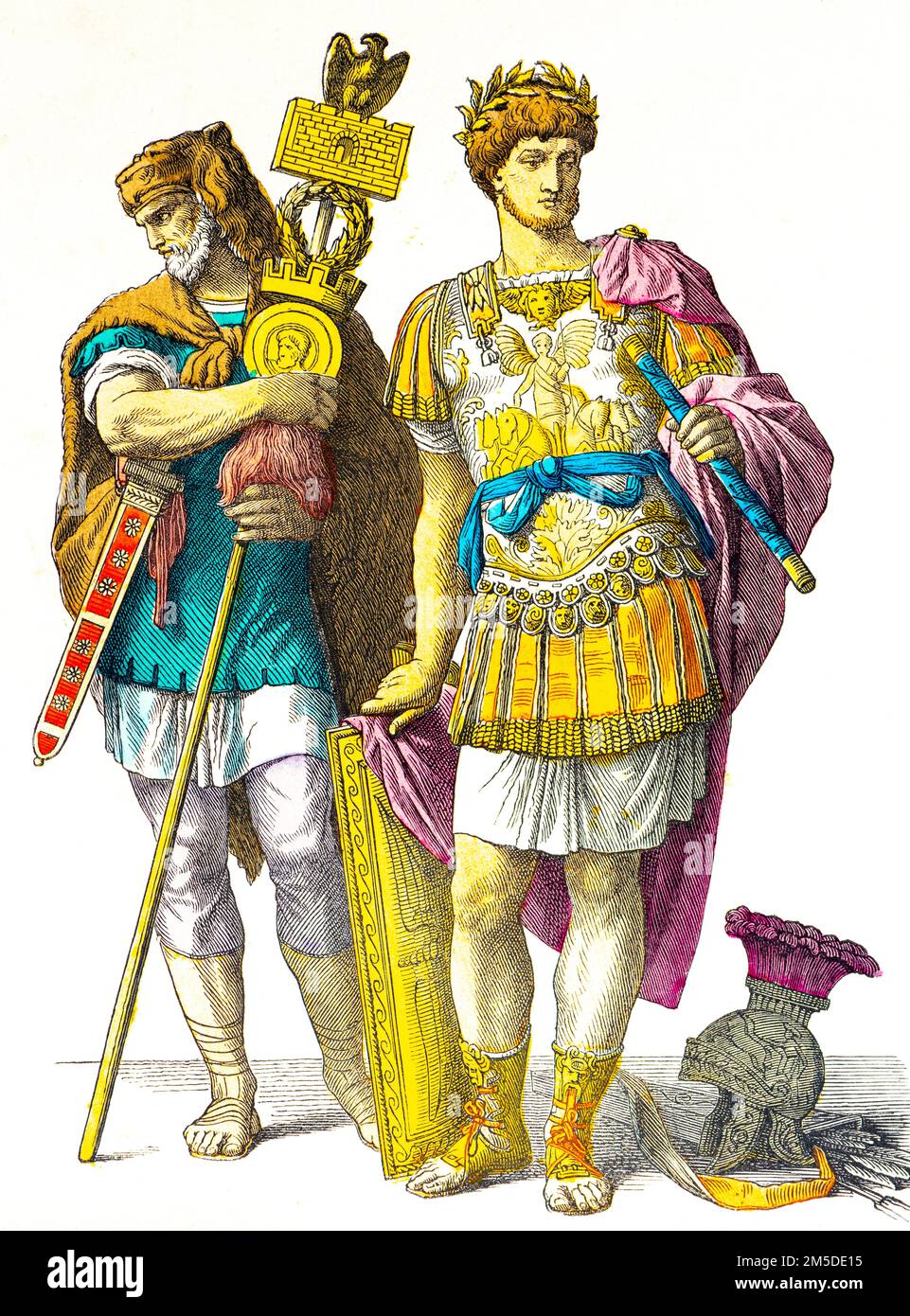 Historical costumes of two Roman soldiers, colored historical illustration, Münchener Bilderbogen, München 1890 Stock Photohttps://www.alamy.com/image-license-details/?v=1https://www.alamy.com/historical-costumes-of-two-roman-soldiers-colored-historical-illustration-mnchener-bilderbogen-mnchen-1890-image502470337.html
Historical costumes of two Roman soldiers, colored historical illustration, Münchener Bilderbogen, München 1890 Stock Photohttps://www.alamy.com/image-license-details/?v=1https://www.alamy.com/historical-costumes-of-two-roman-soldiers-colored-historical-illustration-mnchener-bilderbogen-mnchen-1890-image502470337.htmlRF2M5DE15–Historical costumes of two Roman soldiers, colored historical illustration, Münchener Bilderbogen, München 1890
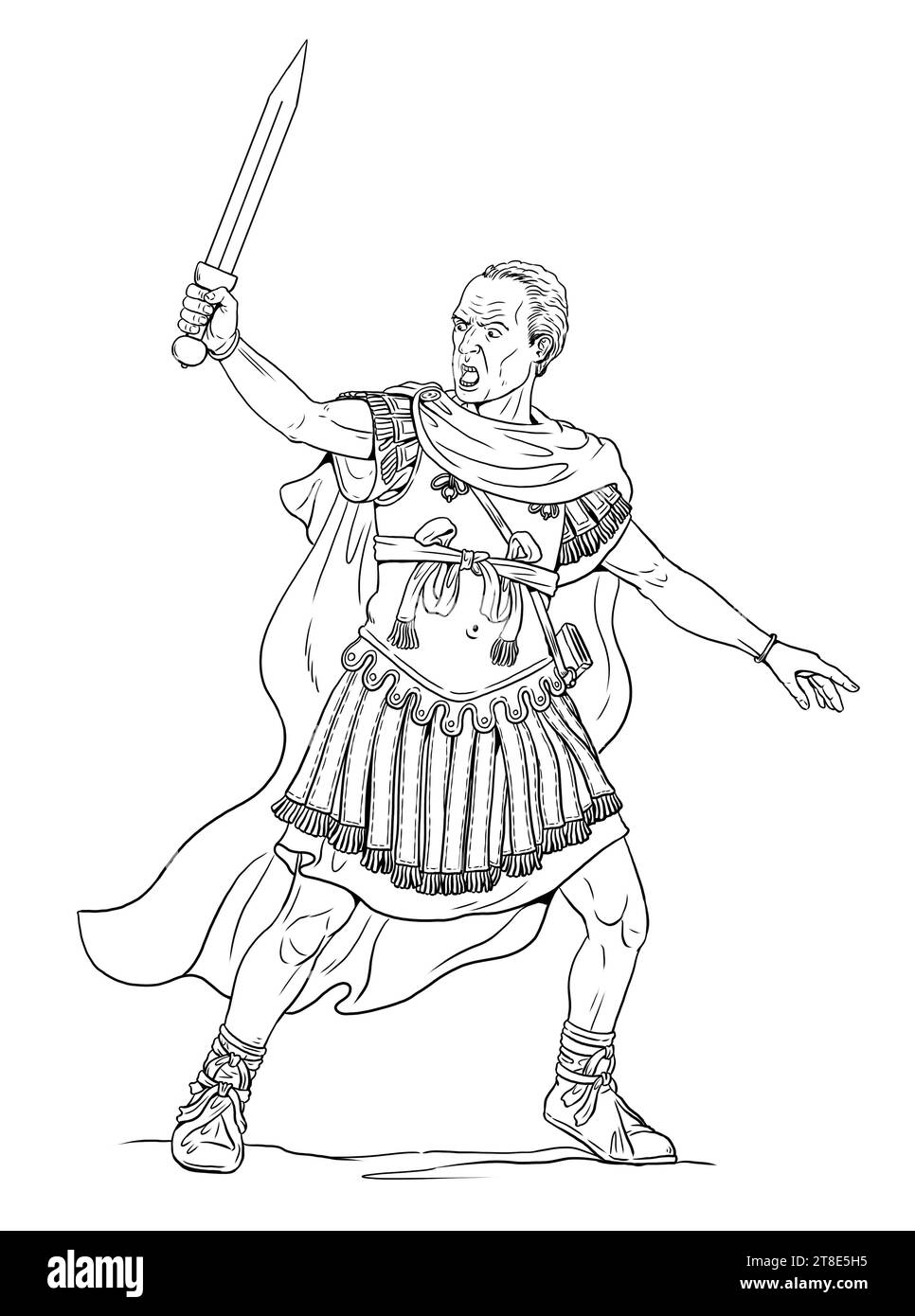 Roman general and imperator Gaius Julius Caesar. Handmade ancient warrior drawing. Stock Photohttps://www.alamy.com/image-license-details/?v=1https://www.alamy.com/roman-general-and-imperator-gaius-julius-caesar-handmade-ancient-warrior-drawing-image573171121.html
Roman general and imperator Gaius Julius Caesar. Handmade ancient warrior drawing. Stock Photohttps://www.alamy.com/image-license-details/?v=1https://www.alamy.com/roman-general-and-imperator-gaius-julius-caesar-handmade-ancient-warrior-drawing-image573171121.htmlRF2T8E5H5–Roman general and imperator Gaius Julius Caesar. Handmade ancient warrior drawing.
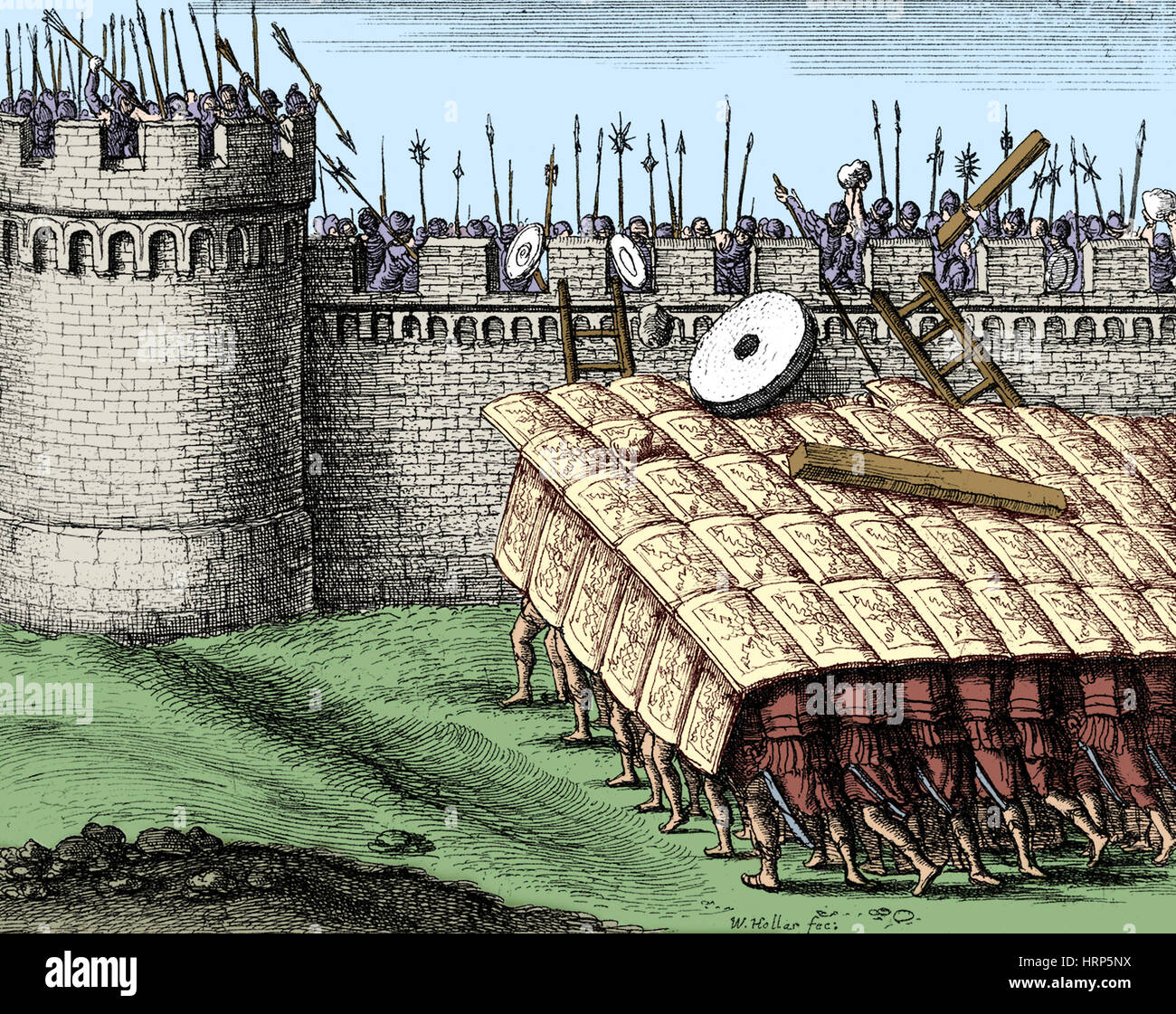 Testudo, Ancient Roman Warfare Stock Photohttps://www.alamy.com/image-license-details/?v=1https://www.alamy.com/stock-photo-testudo-ancient-roman-warfare-135097142.html
Testudo, Ancient Roman Warfare Stock Photohttps://www.alamy.com/image-license-details/?v=1https://www.alamy.com/stock-photo-testudo-ancient-roman-warfare-135097142.htmlRMHRP5NX–Testudo, Ancient Roman Warfare
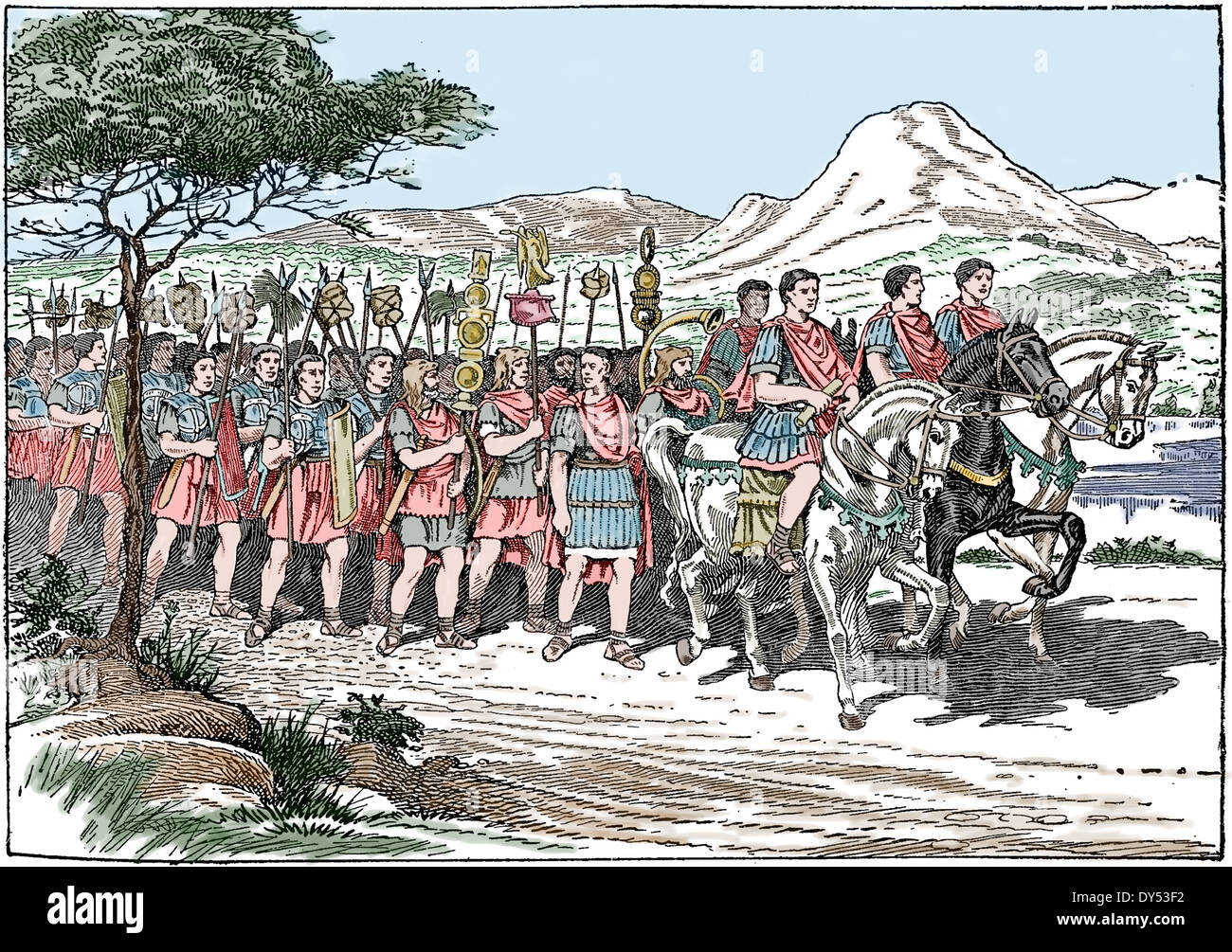 Ancient Rome. A legion of the Roman army marching. Engraving. Stock Photohttps://www.alamy.com/image-license-details/?v=1https://www.alamy.com/ancient-rome-a-legion-of-the-roman-army-marching-engraving-image68339350.html
Ancient Rome. A legion of the Roman army marching. Engraving. Stock Photohttps://www.alamy.com/image-license-details/?v=1https://www.alamy.com/ancient-rome-a-legion-of-the-roman-army-marching-engraving-image68339350.htmlRMDY53F2–Ancient Rome. A legion of the Roman army marching. Engraving.
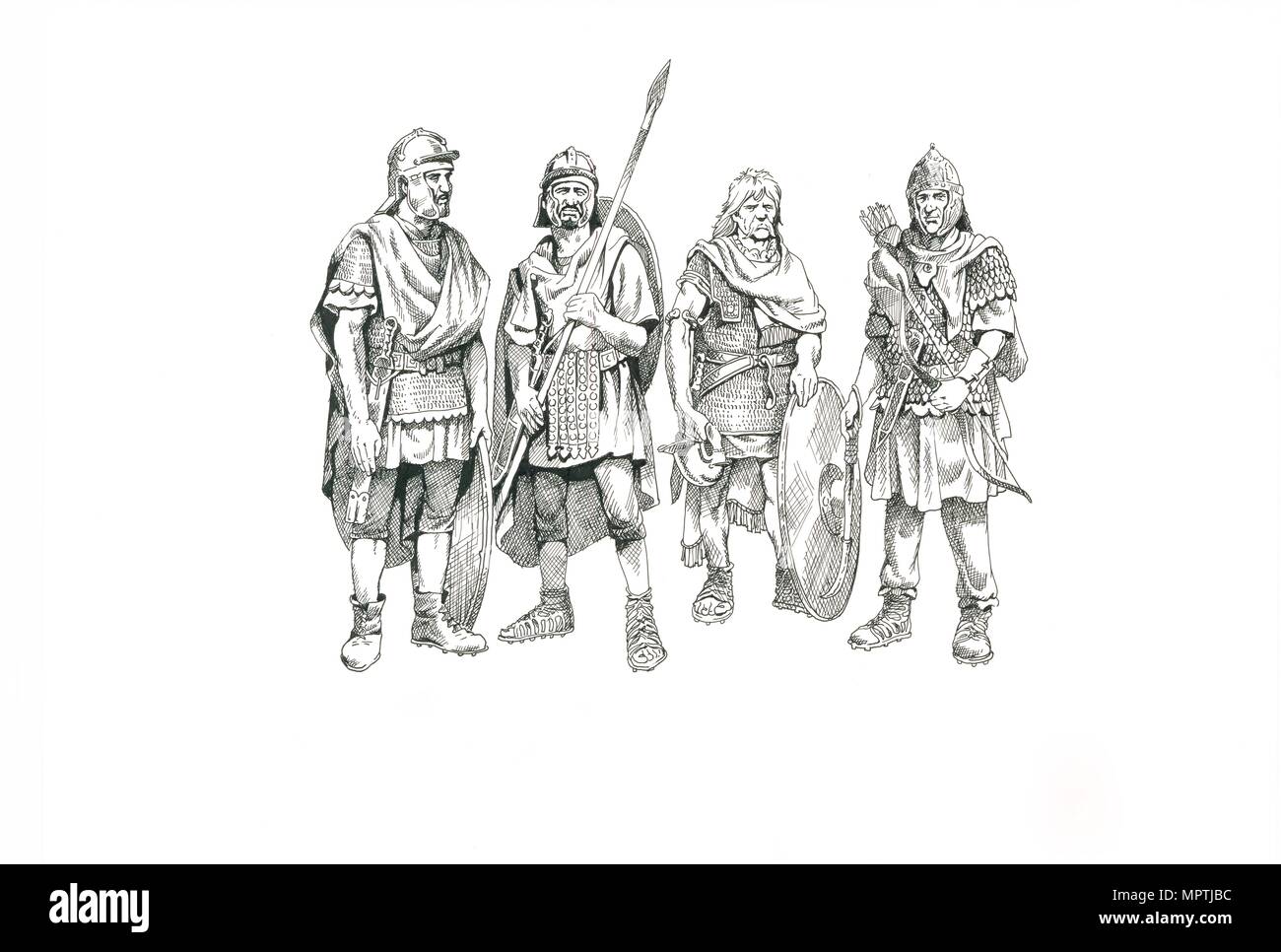 Roman soldiers, c1985-c2000. Artist: Philip Corke. Stock Photohttps://www.alamy.com/image-license-details/?v=1https://www.alamy.com/roman-soldiers-c1985-c2000-artist-philip-corke-image186167392.html
Roman soldiers, c1985-c2000. Artist: Philip Corke. Stock Photohttps://www.alamy.com/image-license-details/?v=1https://www.alamy.com/roman-soldiers-c1985-c2000-artist-philip-corke-image186167392.htmlRMMPTJBC–Roman soldiers, c1985-c2000. Artist: Philip Corke.
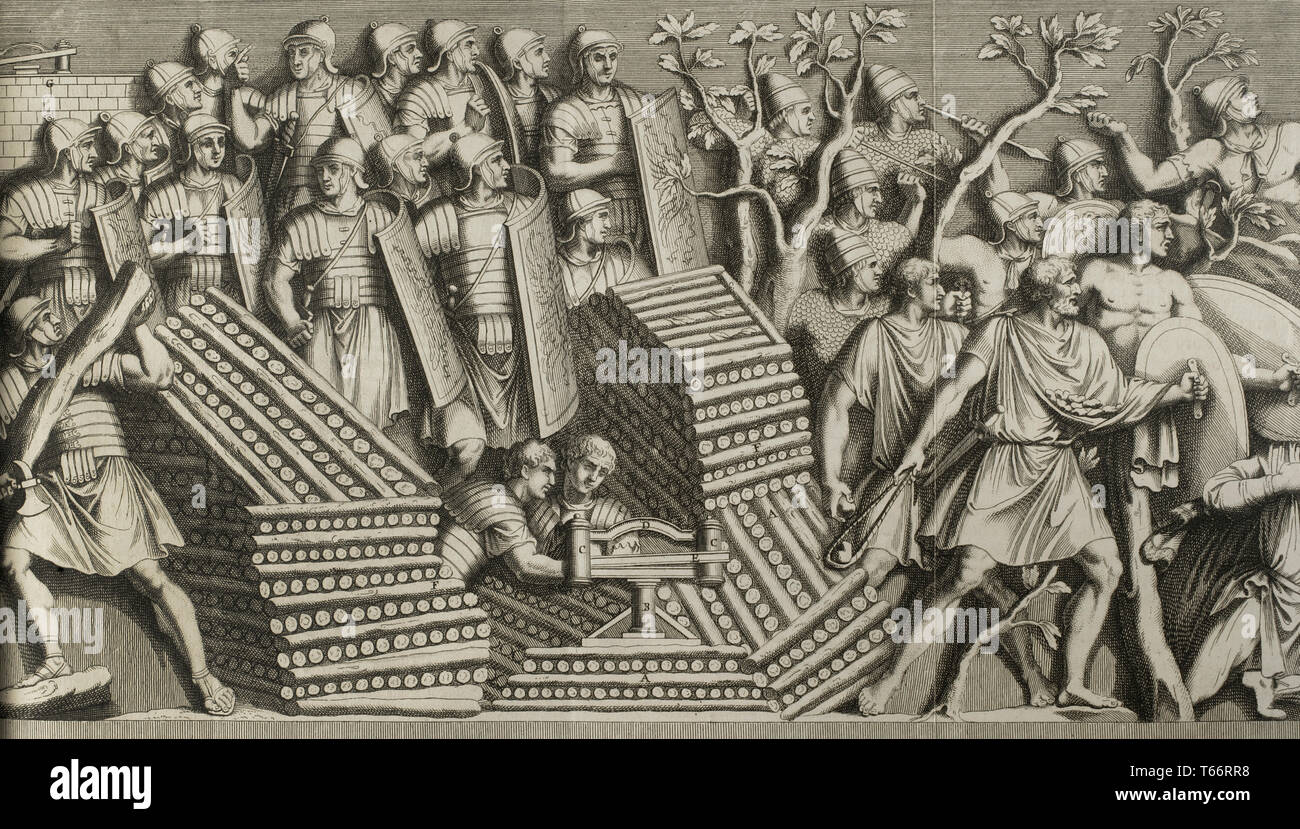 History by Polybius. Volume II. French edition translated from Greek by Dom Vincent Thuillier. Comments of Military Science enriched with critical and historical notes by M. De Folard. Paris, chez Pierre Gandouin, Julien-Michel Gandouin, Pierre-Francois Giffart and Nicolas-Pierre Armand, 1727. Printing by Jean-Baptiste Lamesle. Trajan's Dacian Wars. 2nd century AD. Engraving depicting reliefs from the Trajan Column. Scene of Roman army. Stock Photohttps://www.alamy.com/image-license-details/?v=1https://www.alamy.com/history-by-polybius-volume-ii-french-edition-translated-from-greek-by-dom-vincent-thuillier-comments-of-military-science-enriched-with-critical-and-historical-notes-by-m-de-folard-paris-chez-pierre-gandouin-julien-michel-gandouin-pierre-francois-giffart-and-nicolas-pierre-armand-1727-printing-by-jean-baptiste-lamesle-trajans-dacian-wars-2nd-century-ad-engraving-depicting-reliefs-from-the-trajan-column-scene-of-roman-army-image244783484.html
History by Polybius. Volume II. French edition translated from Greek by Dom Vincent Thuillier. Comments of Military Science enriched with critical and historical notes by M. De Folard. Paris, chez Pierre Gandouin, Julien-Michel Gandouin, Pierre-Francois Giffart and Nicolas-Pierre Armand, 1727. Printing by Jean-Baptiste Lamesle. Trajan's Dacian Wars. 2nd century AD. Engraving depicting reliefs from the Trajan Column. Scene of Roman army. Stock Photohttps://www.alamy.com/image-license-details/?v=1https://www.alamy.com/history-by-polybius-volume-ii-french-edition-translated-from-greek-by-dom-vincent-thuillier-comments-of-military-science-enriched-with-critical-and-historical-notes-by-m-de-folard-paris-chez-pierre-gandouin-julien-michel-gandouin-pierre-francois-giffart-and-nicolas-pierre-armand-1727-printing-by-jean-baptiste-lamesle-trajans-dacian-wars-2nd-century-ad-engraving-depicting-reliefs-from-the-trajan-column-scene-of-roman-army-image244783484.htmlRMT66RR8–History by Polybius. Volume II. French edition translated from Greek by Dom Vincent Thuillier. Comments of Military Science enriched with critical and historical notes by M. De Folard. Paris, chez Pierre Gandouin, Julien-Michel Gandouin, Pierre-Francois Giffart and Nicolas-Pierre Armand, 1727. Printing by Jean-Baptiste Lamesle. Trajan's Dacian Wars. 2nd century AD. Engraving depicting reliefs from the Trajan Column. Scene of Roman army.
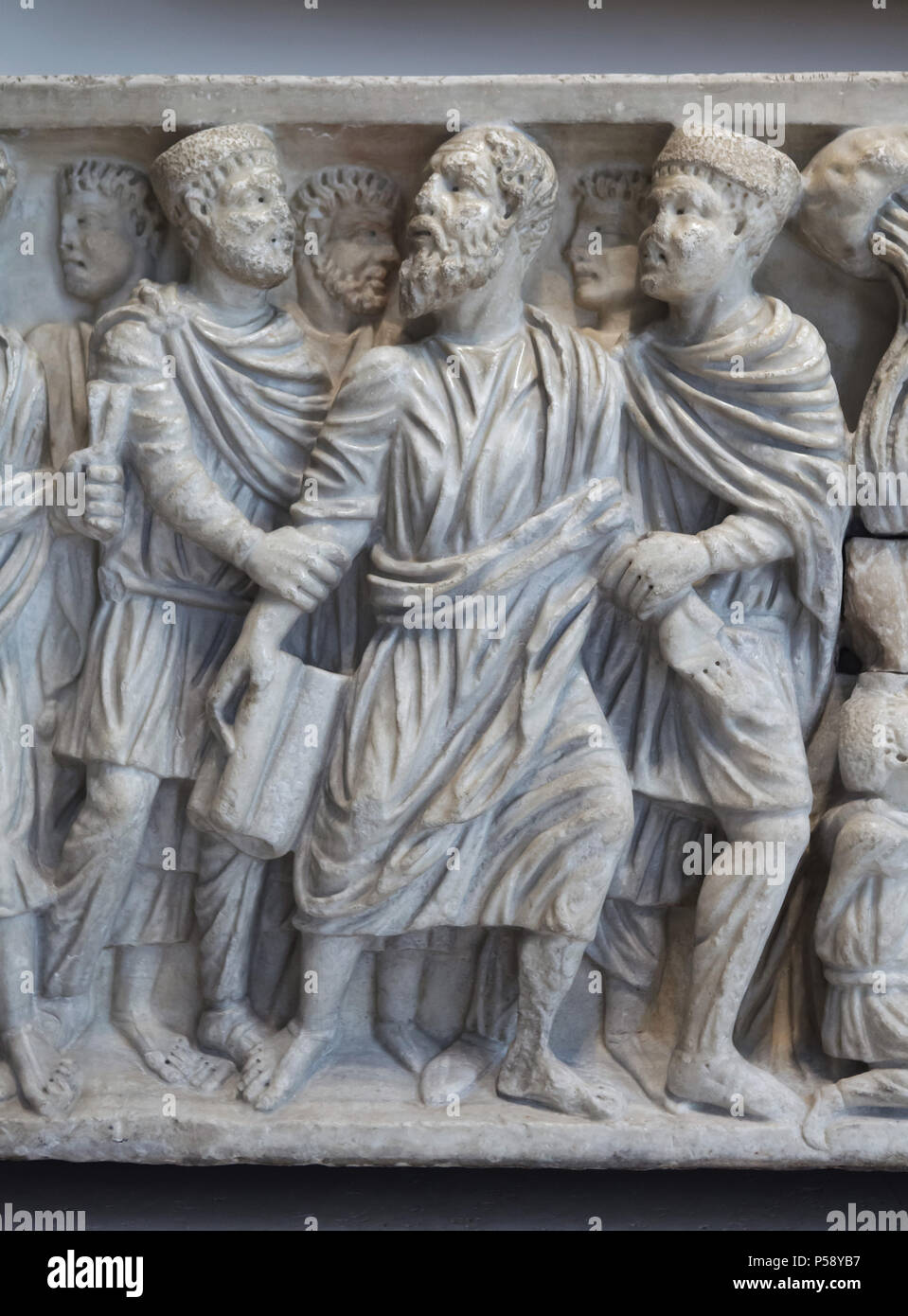 Arrest of Saint Peter. Detail of the Roman marble sarcophagus dated from circa 310 AD from the Astorga Cathedral in León Province on display in the National Archaeological Museum (Museo Arqueológico Nacional) in Madrid, Spain. Stock Photohttps://www.alamy.com/image-license-details/?v=1https://www.alamy.com/arrest-of-saint-peter-detail-of-the-roman-marble-sarcophagus-dated-from-circa-310-ad-from-the-astorga-cathedral-in-len-province-on-display-in-the-national-archaeological-museum-museo-arqueolgico-nacional-in-madrid-spain-image209794795.html
Arrest of Saint Peter. Detail of the Roman marble sarcophagus dated from circa 310 AD from the Astorga Cathedral in León Province on display in the National Archaeological Museum (Museo Arqueológico Nacional) in Madrid, Spain. Stock Photohttps://www.alamy.com/image-license-details/?v=1https://www.alamy.com/arrest-of-saint-peter-detail-of-the-roman-marble-sarcophagus-dated-from-circa-310-ad-from-the-astorga-cathedral-in-len-province-on-display-in-the-national-archaeological-museum-museo-arqueolgico-nacional-in-madrid-spain-image209794795.htmlRMP58YB7–Arrest of Saint Peter. Detail of the Roman marble sarcophagus dated from circa 310 AD from the Astorga Cathedral in León Province on display in the National Archaeological Museum (Museo Arqueológico Nacional) in Madrid, Spain.
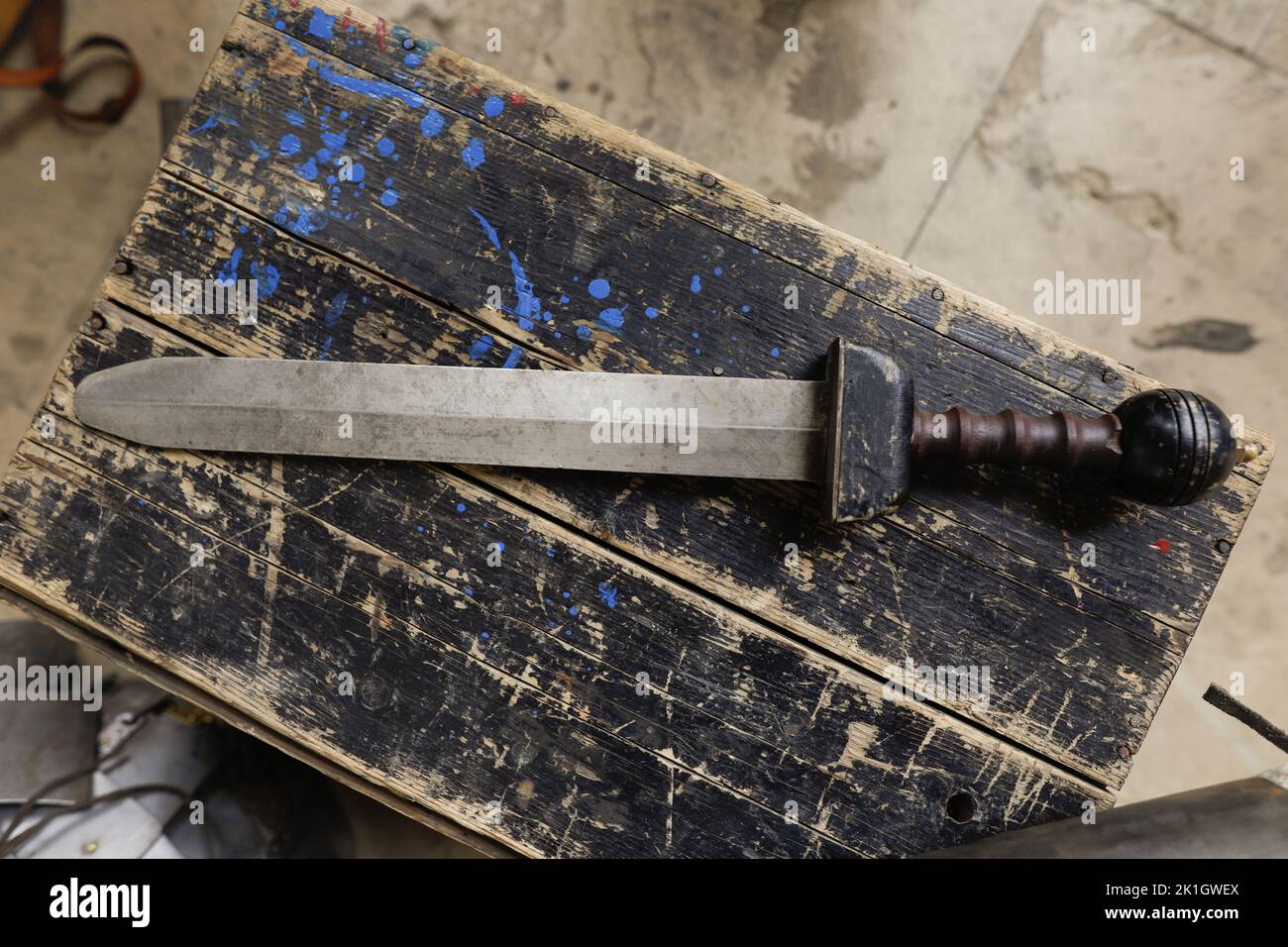 Details with an ancient Roman soldier's sword (gladius) during a historic reenactment event. Stock Photohttps://www.alamy.com/image-license-details/?v=1https://www.alamy.com/details-with-an-ancient-roman-soldiers-sword-gladius-during-a-historic-reenactment-event-image482876210.html
Details with an ancient Roman soldier's sword (gladius) during a historic reenactment event. Stock Photohttps://www.alamy.com/image-license-details/?v=1https://www.alamy.com/details-with-an-ancient-roman-soldiers-sword-gladius-during-a-historic-reenactment-event-image482876210.htmlRF2K1GWEX–Details with an ancient Roman soldier's sword (gladius) during a historic reenactment event.
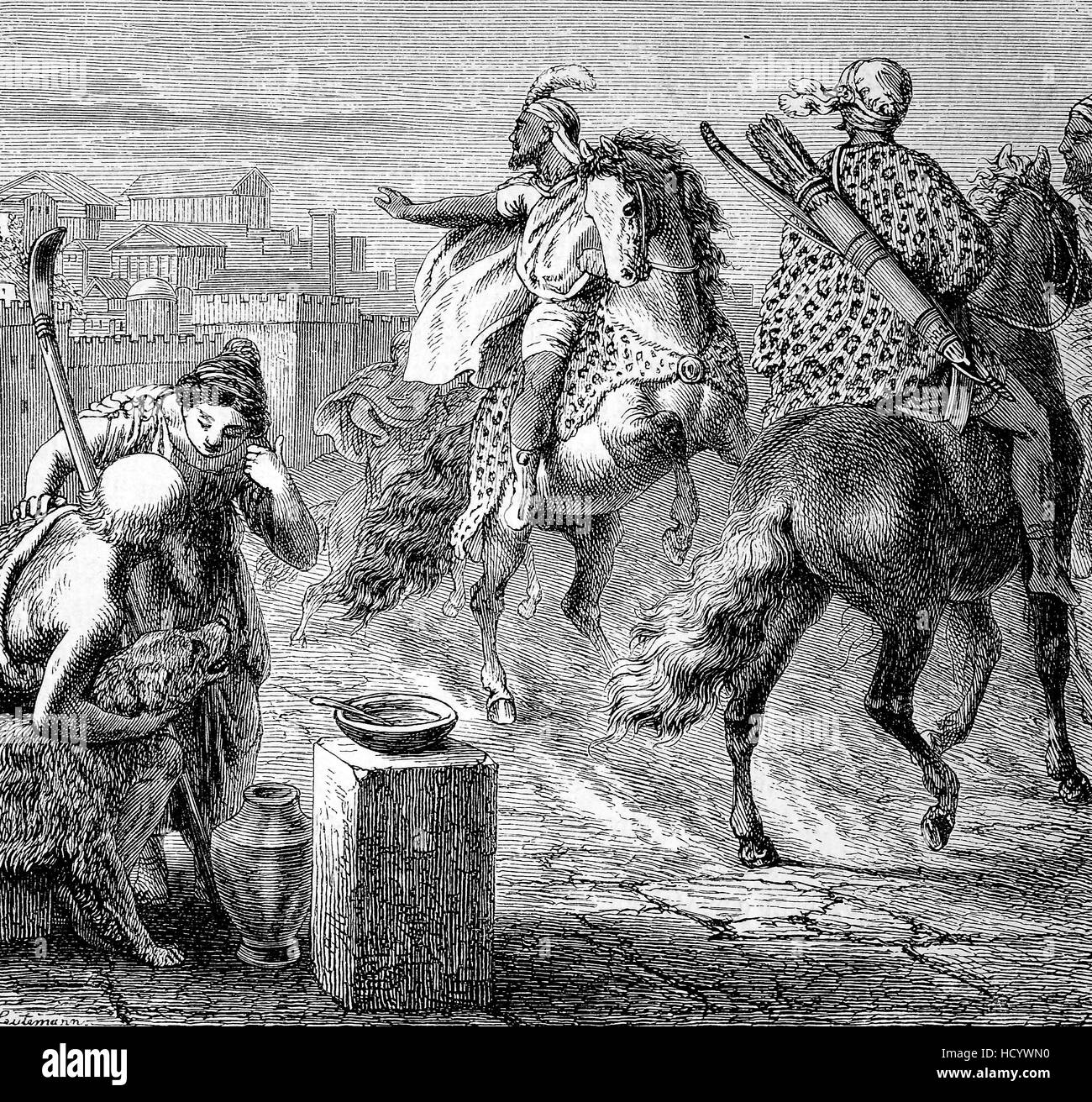 Jugurtha or Jugurthen, 160 BC -104 BC, a King of Numidia, leaving Rome, the story of the ancient Rome, roman Empire, Italy Stock Photohttps://www.alamy.com/image-license-details/?v=1https://www.alamy.com/stock-photo-jugurtha-or-jugurthen-160-bc-104-bc-a-king-of-numidia-leaving-rome-128461340.html
Jugurtha or Jugurthen, 160 BC -104 BC, a King of Numidia, leaving Rome, the story of the ancient Rome, roman Empire, Italy Stock Photohttps://www.alamy.com/image-license-details/?v=1https://www.alamy.com/stock-photo-jugurtha-or-jugurthen-160-bc-104-bc-a-king-of-numidia-leaving-rome-128461340.htmlRFHCYWN0–Jugurtha or Jugurthen, 160 BC -104 BC, a King of Numidia, leaving Rome, the story of the ancient Rome, roman Empire, Italy
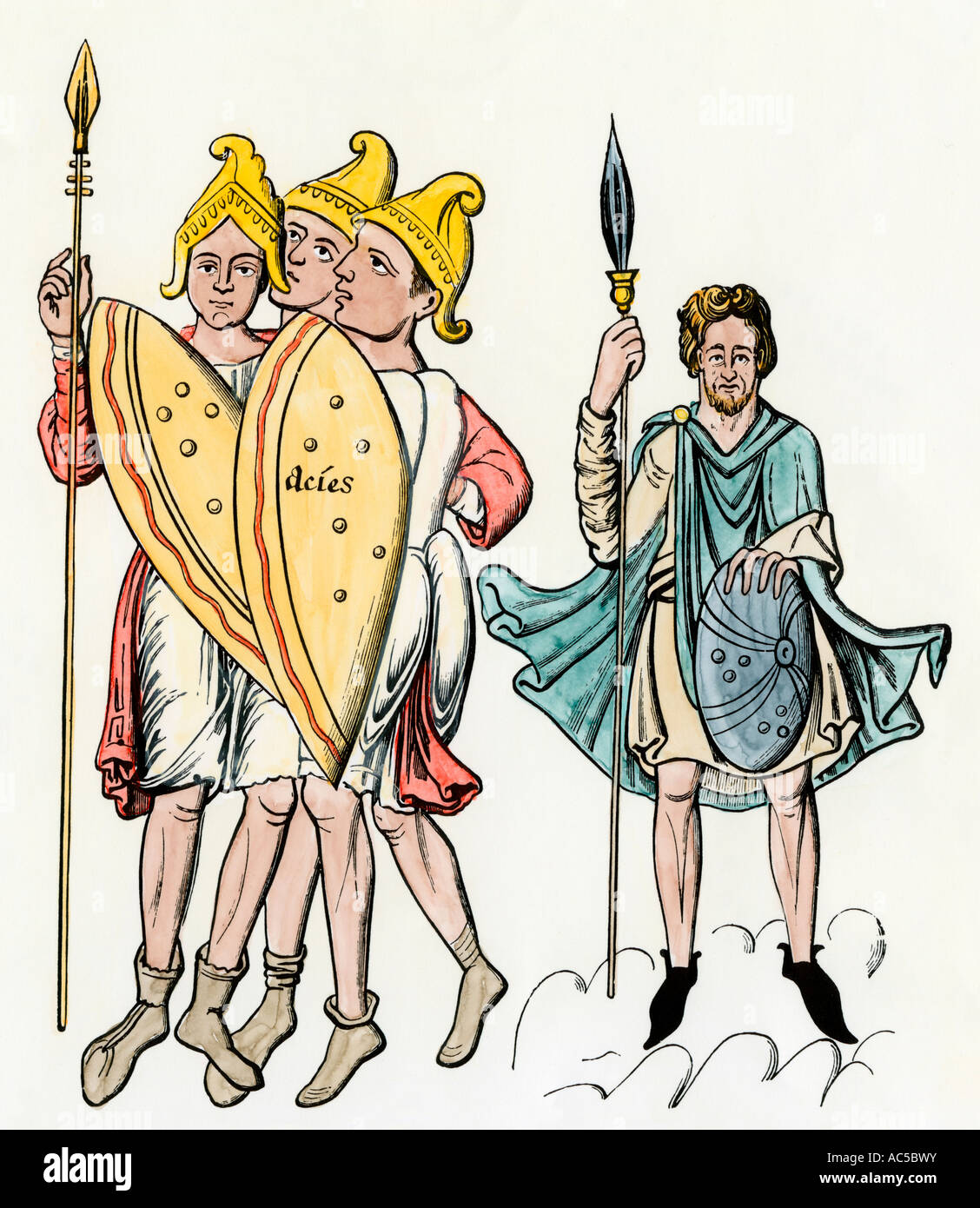 Roman soldiers left and a German soldier. Hand-colored woodcut Stock Photohttps://www.alamy.com/image-license-details/?v=1https://www.alamy.com/stock-photo-roman-soldiers-left-and-a-german-soldier-hand-colored-woodcut-13046630.html
Roman soldiers left and a German soldier. Hand-colored woodcut Stock Photohttps://www.alamy.com/image-license-details/?v=1https://www.alamy.com/stock-photo-roman-soldiers-left-and-a-german-soldier-hand-colored-woodcut-13046630.htmlRMAC5BWY–Roman soldiers left and a German soldier. Hand-colored woodcut
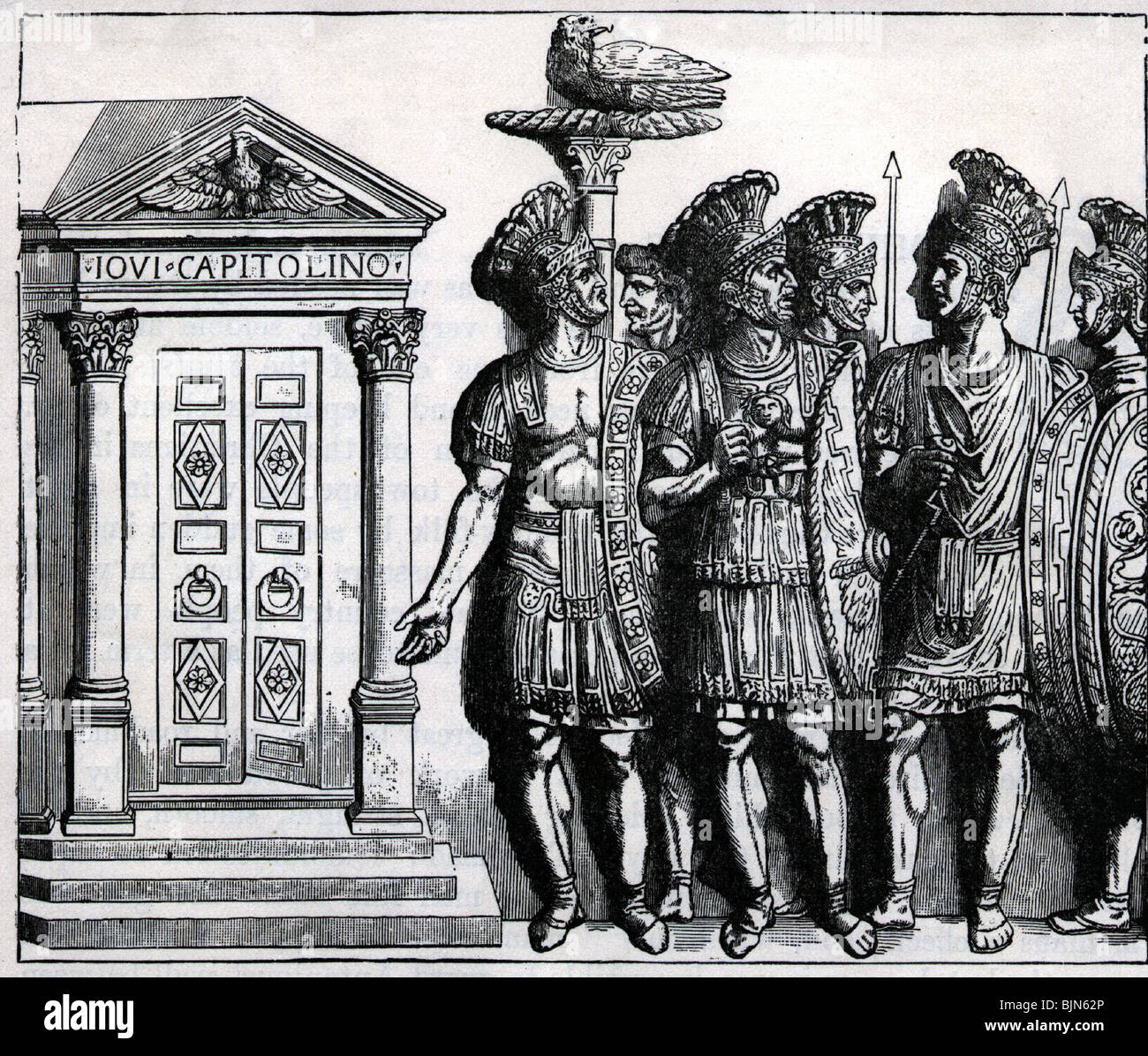 ancient world, Roman Empire, military, Praetorian Guard, soldiers in parade suit of armour, wood engraving after ancient relief, historic, historical, standard, guidon, eagle, soldier, life guards, ancient world, people, Stock Photohttps://www.alamy.com/image-license-details/?v=1https://www.alamy.com/stock-photo-ancient-world-roman-empire-military-praetorian-guard-soldiers-in-parade-28739950.html
ancient world, Roman Empire, military, Praetorian Guard, soldiers in parade suit of armour, wood engraving after ancient relief, historic, historical, standard, guidon, eagle, soldier, life guards, ancient world, people, Stock Photohttps://www.alamy.com/image-license-details/?v=1https://www.alamy.com/stock-photo-ancient-world-roman-empire-military-praetorian-guard-soldiers-in-parade-28739950.htmlRMBJN62P–ancient world, Roman Empire, military, Praetorian Guard, soldiers in parade suit of armour, wood engraving after ancient relief, historic, historical, standard, guidon, eagle, soldier, life guards, ancient world, people,
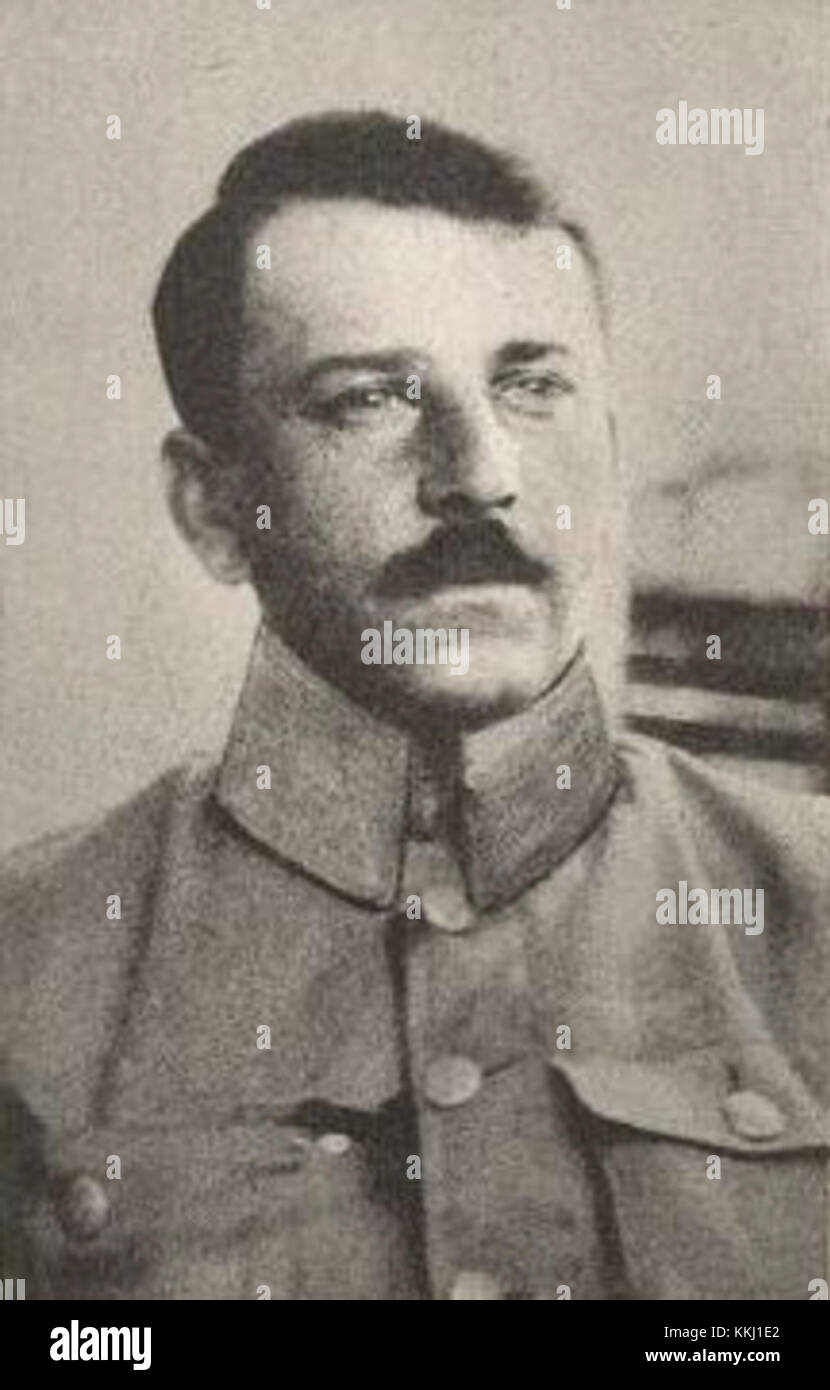 Fabrycy legionista refers to a historical figure, a legionnaire who played a significant role in military history, likely during the time of the legions in ancient Rome. This term is associated with historical studies of Roman soldiers. Stock Photohttps://www.alamy.com/image-license-details/?v=1https://www.alamy.com/stock-image-fabrycy-legionista-refers-to-a-historical-figure-a-legionnaire-who-166968090.html
Fabrycy legionista refers to a historical figure, a legionnaire who played a significant role in military history, likely during the time of the legions in ancient Rome. This term is associated with historical studies of Roman soldiers. Stock Photohttps://www.alamy.com/image-license-details/?v=1https://www.alamy.com/stock-image-fabrycy-legionista-refers-to-a-historical-figure-a-legionnaire-who-166968090.htmlRMKKJ1E2–Fabrycy legionista refers to a historical figure, a legionnaire who played a significant role in military history, likely during the time of the legions in ancient Rome. This term is associated with historical studies of Roman soldiers.
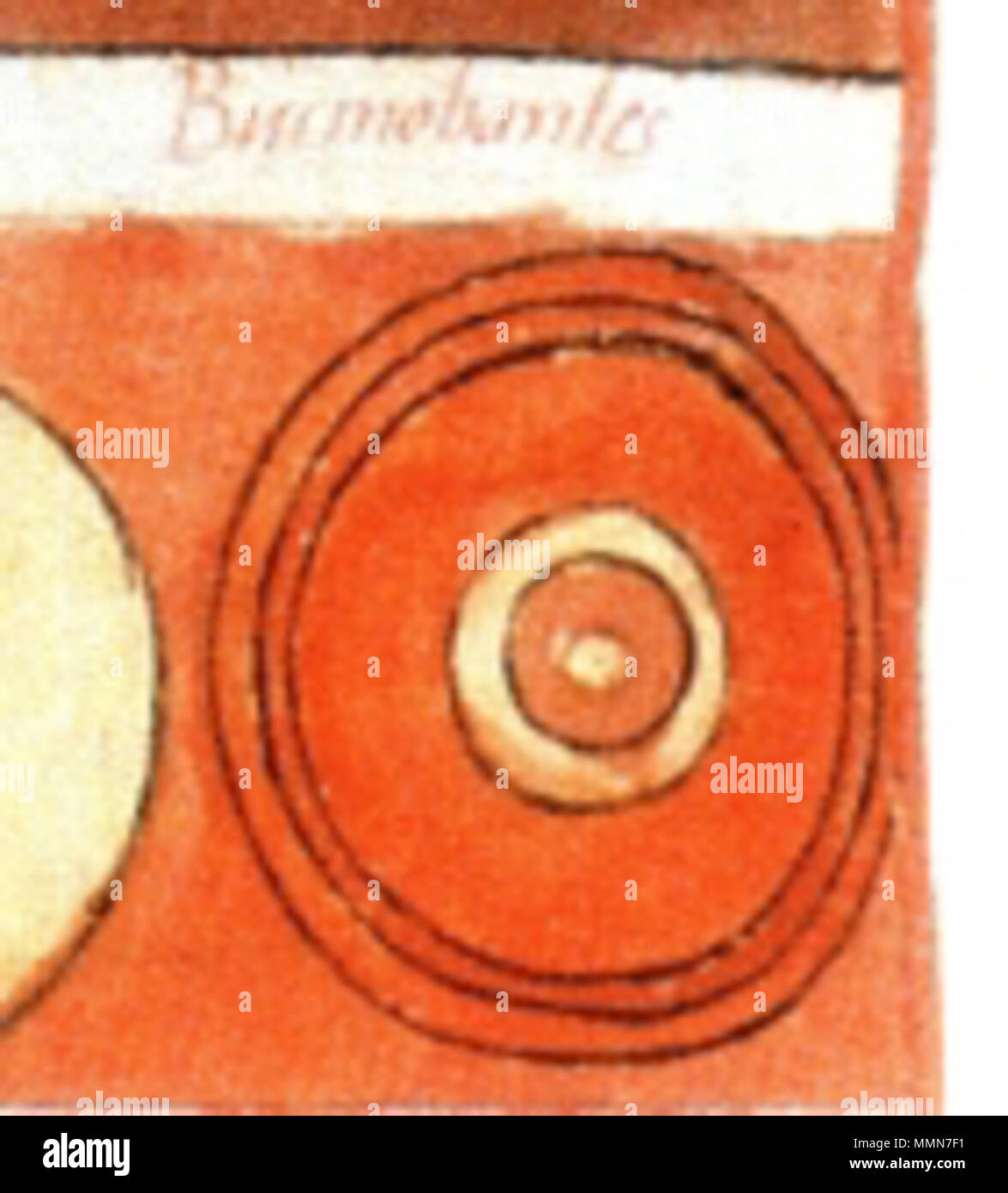 . Deutsch: Schildzeichen einer Abteilung Bucinobanten im spätrömischen Feldheer. English: Sign of the Bucinobantes on the shields of the ancient roman army. . 2005. User:Bullenwächter 103 Bucinobantes Stock Photohttps://www.alamy.com/image-license-details/?v=1https://www.alamy.com/deutsch-schildzeichen-einer-abteilung-bucinobanten-im-sptrmischen-feldheer-english-sign-of-the-bucinobantes-on-the-shields-of-the-ancient-roman-army-2005-userbullenwchter-103-bucinobantes-image184863701.html
. Deutsch: Schildzeichen einer Abteilung Bucinobanten im spätrömischen Feldheer. English: Sign of the Bucinobantes on the shields of the ancient roman army. . 2005. User:Bullenwächter 103 Bucinobantes Stock Photohttps://www.alamy.com/image-license-details/?v=1https://www.alamy.com/deutsch-schildzeichen-einer-abteilung-bucinobanten-im-sptrmischen-feldheer-english-sign-of-the-bucinobantes-on-the-shields-of-the-ancient-roman-army-2005-userbullenwchter-103-bucinobantes-image184863701.htmlRMMMN7F1–. Deutsch: Schildzeichen einer Abteilung Bucinobanten im spätrömischen Feldheer. English: Sign of the Bucinobantes on the shields of the ancient roman army. . 2005. User:Bullenwächter 103 Bucinobantes
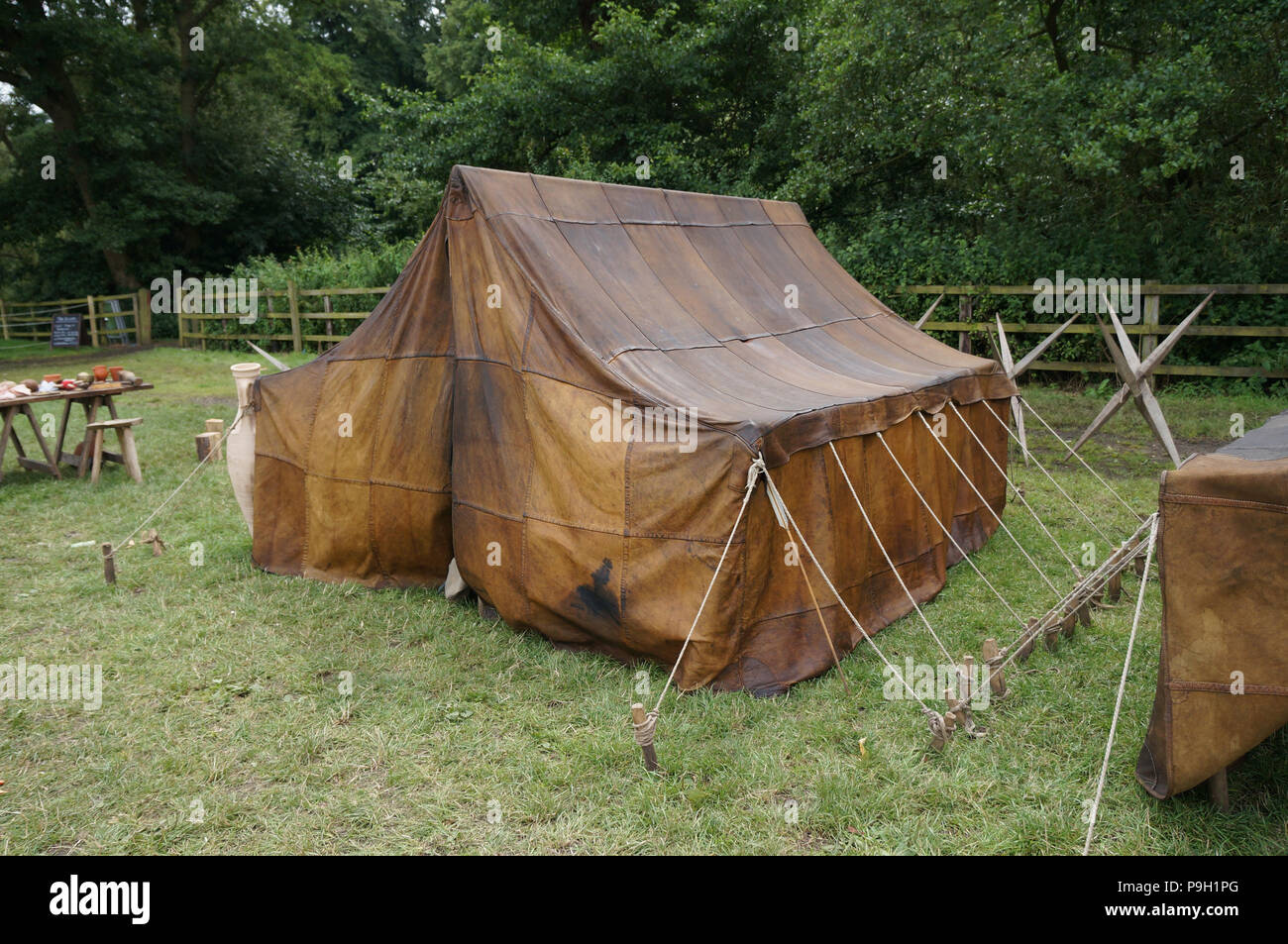 A replica Roman legionary tent, made of squares of leather stitched together. Stock Photohttps://www.alamy.com/image-license-details/?v=1https://www.alamy.com/a-replica-roman-legionary-tent-made-of-squares-of-leather-stitched-together-image212430920.html
A replica Roman legionary tent, made of squares of leather stitched together. Stock Photohttps://www.alamy.com/image-license-details/?v=1https://www.alamy.com/a-replica-roman-legionary-tent-made-of-squares-of-leather-stitched-together-image212430920.htmlRFP9H1PG–A replica Roman legionary tent, made of squares of leather stitched together.
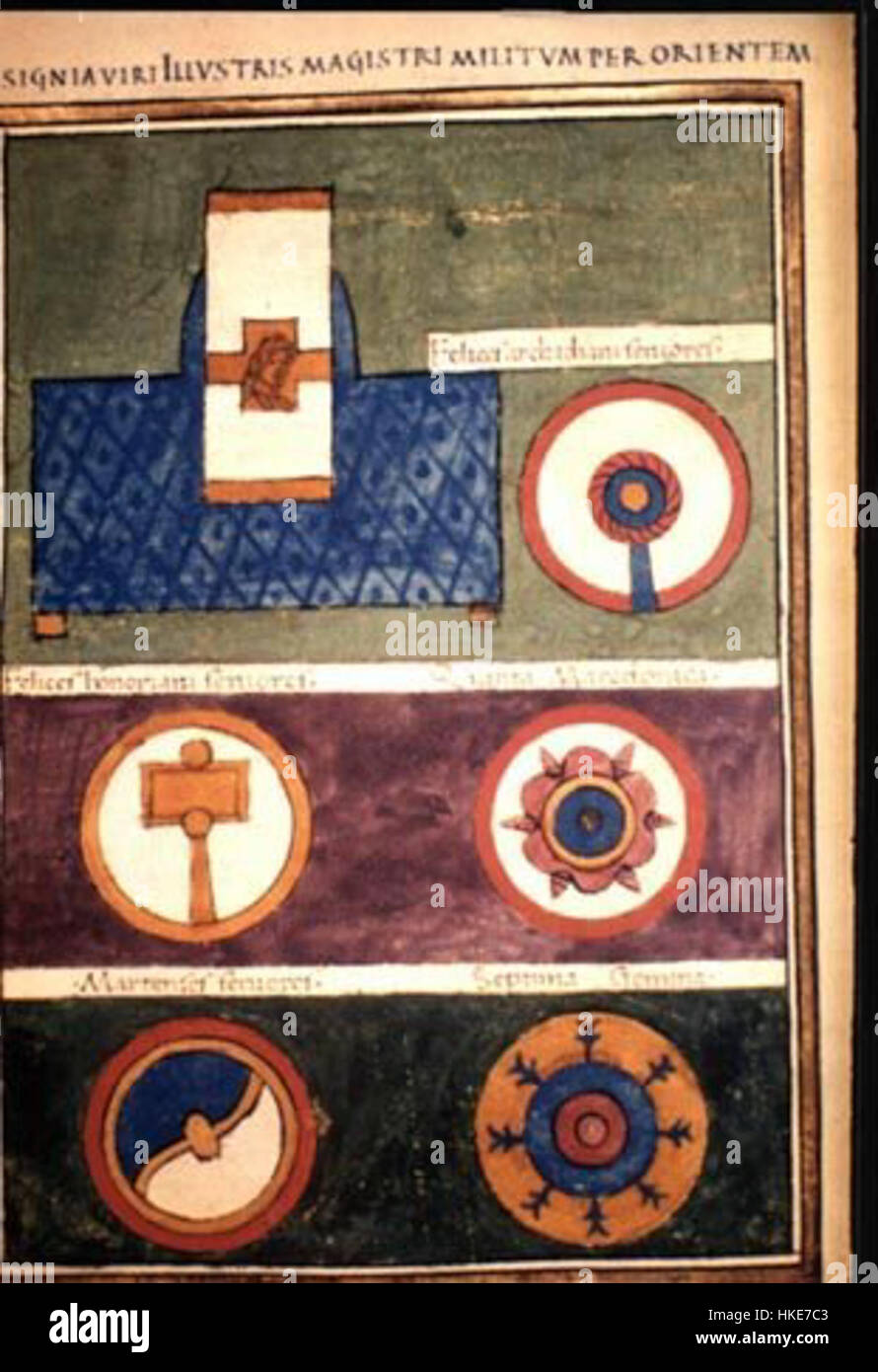 The artwork 'Magister Militum per Orientem' depicts a military leader from the Eastern Roman Empire. The title refers to a high-ranking officer in charge of the eastern forces, showcasing the importance of military leadership in ancient Rome during the 4th to 5th centuries. The depiction highlights Roman military attire and the authority of the officer. Stock Photohttps://www.alamy.com/image-license-details/?v=1https://www.alamy.com/stock-photo-the-artwork-magister-militum-per-orientem-depicts-a-military-leader-132464195.html
The artwork 'Magister Militum per Orientem' depicts a military leader from the Eastern Roman Empire. The title refers to a high-ranking officer in charge of the eastern forces, showcasing the importance of military leadership in ancient Rome during the 4th to 5th centuries. The depiction highlights Roman military attire and the authority of the officer. Stock Photohttps://www.alamy.com/image-license-details/?v=1https://www.alamy.com/stock-photo-the-artwork-magister-militum-per-orientem-depicts-a-military-leader-132464195.htmlRMHKE7C3–The artwork 'Magister Militum per Orientem' depicts a military leader from the Eastern Roman Empire. The title refers to a high-ranking officer in charge of the eastern forces, showcasing the importance of military leadership in ancient Rome during the 4th to 5th centuries. The depiction highlights Roman military attire and the authority of the officer.
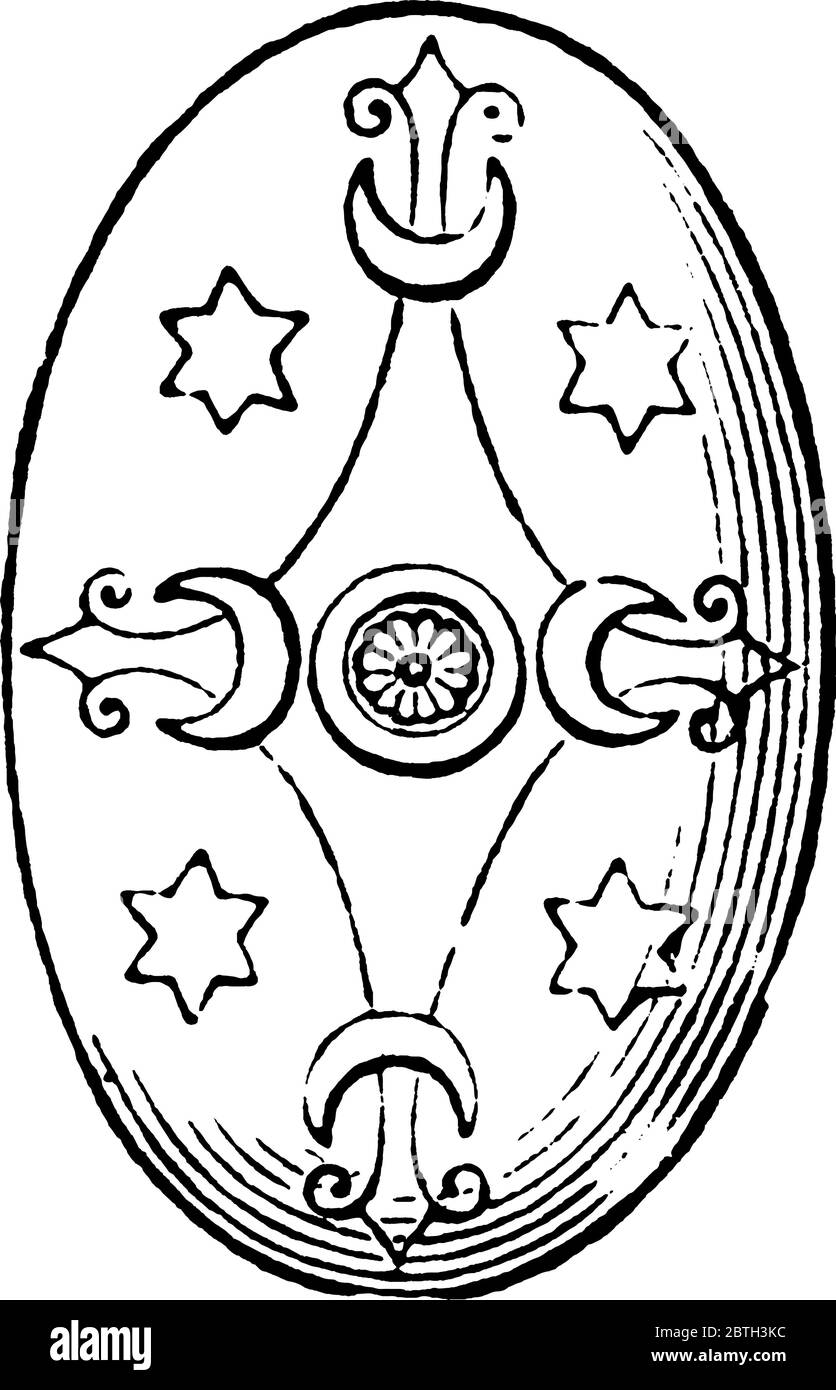 Scutum, a semi-cylindrical shield used by ancient Roman legionaries, vintage line drawing or engraving illustration. Stock Vectorhttps://www.alamy.com/image-license-details/?v=1https://www.alamy.com/scutum-a-semi-cylindrical-shield-used-by-ancient-roman-legionaries-vintage-line-drawing-or-engraving-illustration-image359335184.html
Scutum, a semi-cylindrical shield used by ancient Roman legionaries, vintage line drawing or engraving illustration. Stock Vectorhttps://www.alamy.com/image-license-details/?v=1https://www.alamy.com/scutum-a-semi-cylindrical-shield-used-by-ancient-roman-legionaries-vintage-line-drawing-or-engraving-illustration-image359335184.htmlRF2BTH3KC–Scutum, a semi-cylindrical shield used by ancient Roman legionaries, vintage line drawing or engraving illustration.
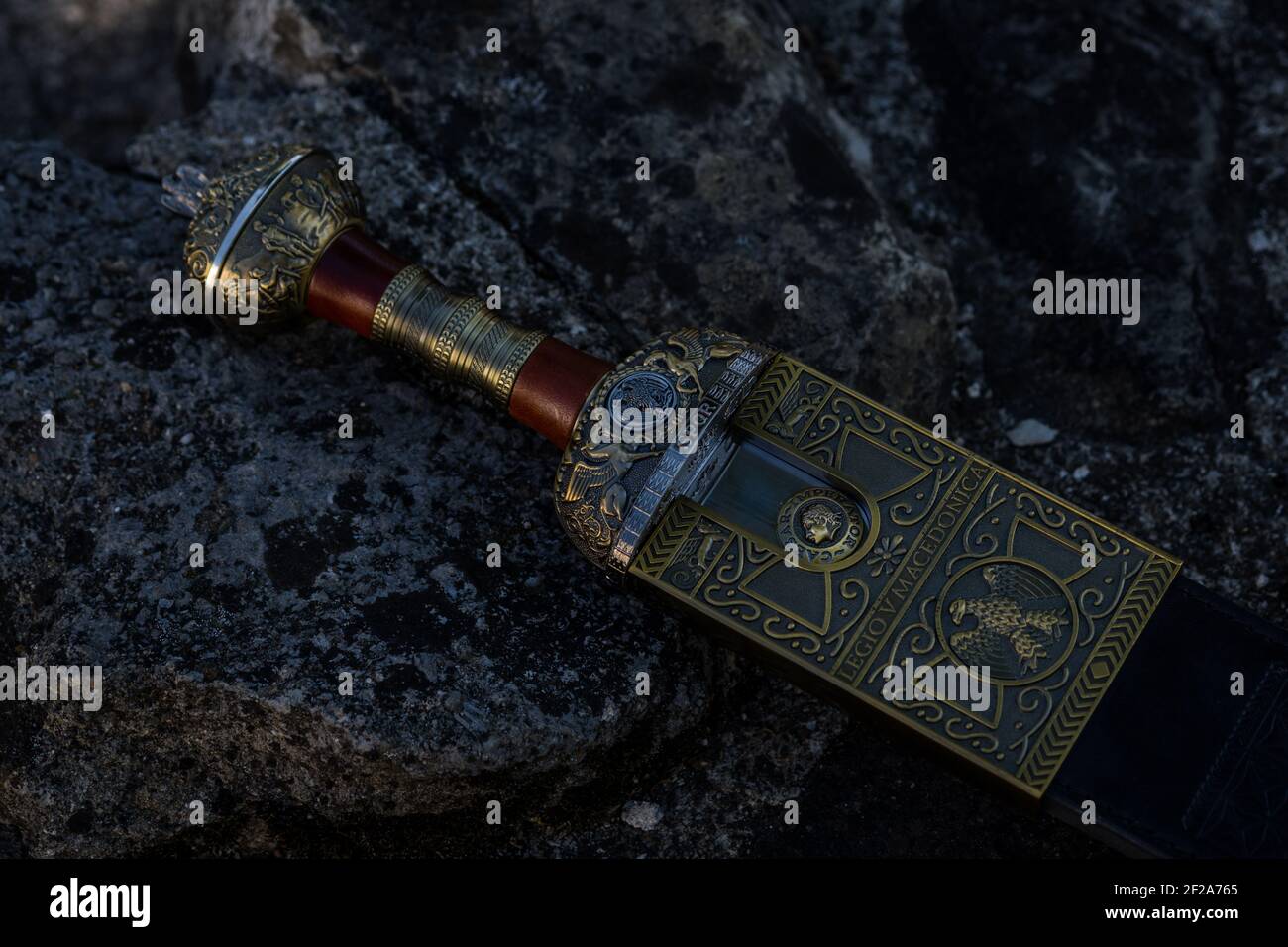 Roman History Empire Rome Stock Photohttps://www.alamy.com/image-license-details/?v=1https://www.alamy.com/roman-history-empire-rome-image414503325.html
Roman History Empire Rome Stock Photohttps://www.alamy.com/image-license-details/?v=1https://www.alamy.com/roman-history-empire-rome-image414503325.htmlRF2F2A765–Roman History Empire Rome
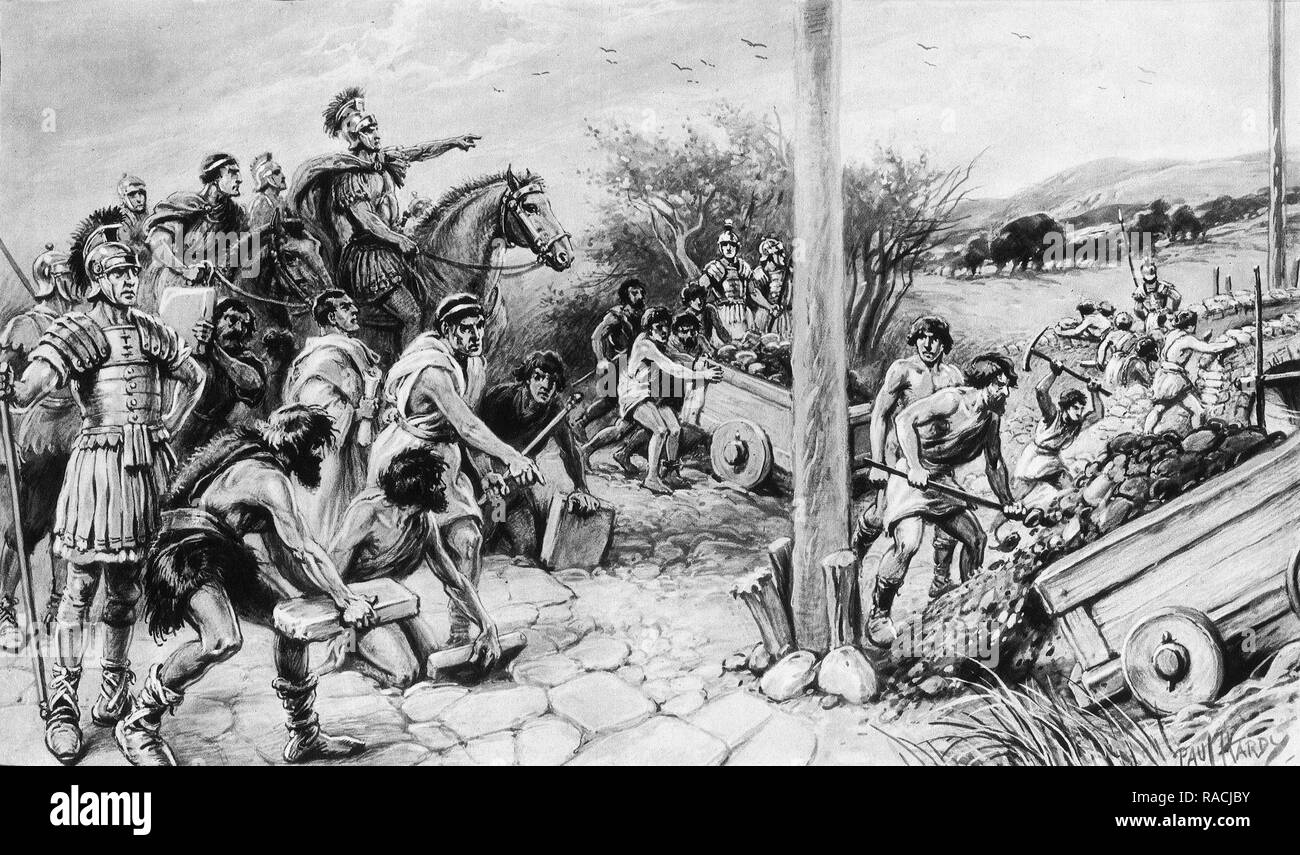 Roman soldiers direct the locals to build a road in Roman Britain. From an original painting by Paul Hardy. Stock Photohttps://www.alamy.com/image-license-details/?v=1https://www.alamy.com/roman-soldiers-direct-the-locals-to-build-a-road-in-roman-britain-from-an-original-painting-by-paul-hardy-image230159215.html
Roman soldiers direct the locals to build a road in Roman Britain. From an original painting by Paul Hardy. Stock Photohttps://www.alamy.com/image-license-details/?v=1https://www.alamy.com/roman-soldiers-direct-the-locals-to-build-a-road-in-roman-britain-from-an-original-painting-by-paul-hardy-image230159215.htmlRMRACJBY–Roman soldiers direct the locals to build a road in Roman Britain. From an original painting by Paul Hardy.
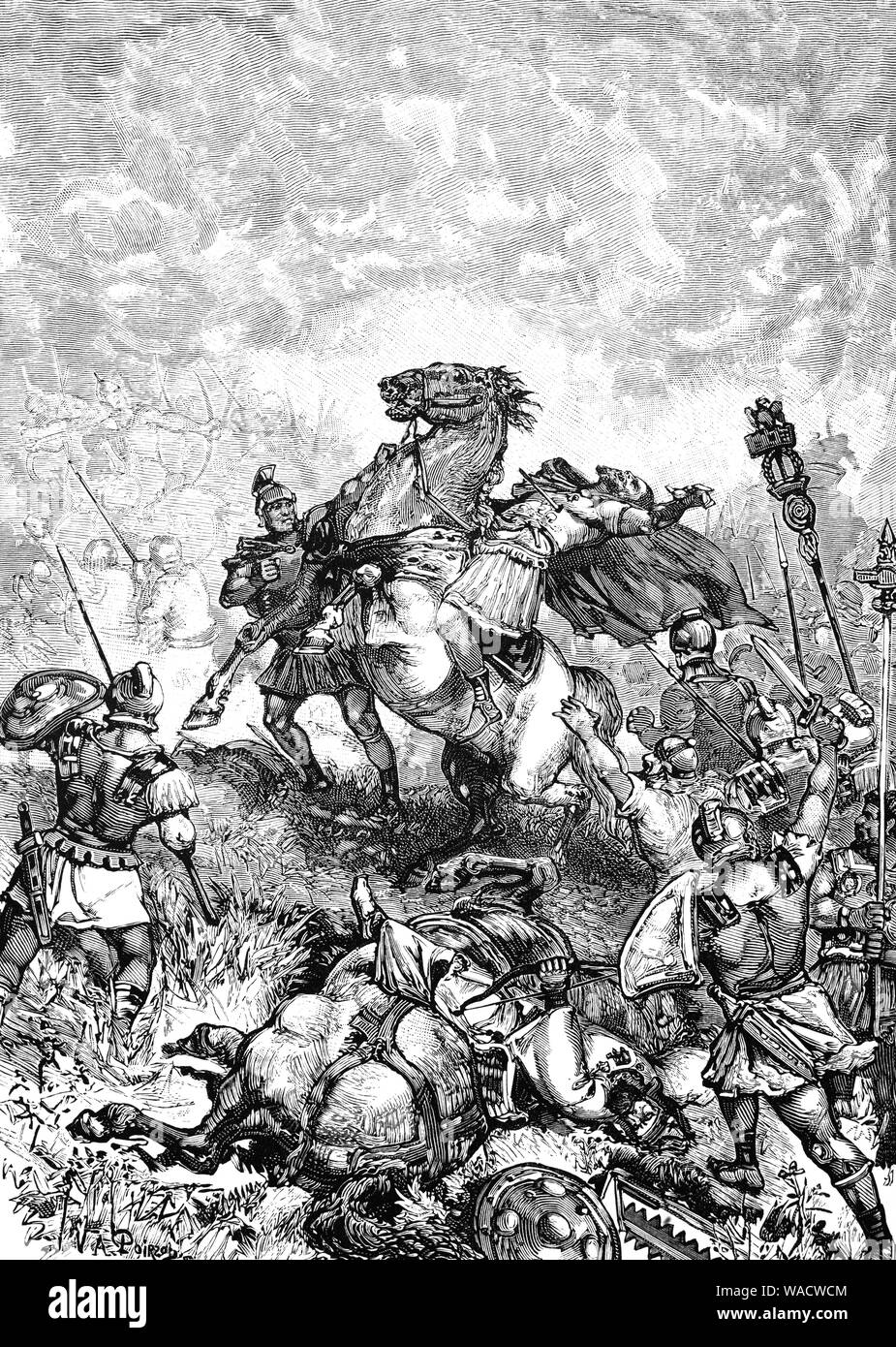 The death of Julian, Roman Emperor from 361 to 363. In his final year, he embarked on a campaign against the Sassanid Empire. Initially successful, however during the Battle of Samarra, Julian was mortally wounded under mysterious circumstances, A military commander, theosophist, social reformer, man of letters and the last non-Christian ruler of the Roman Empire. He wanted to restore the Empire's ancient Roman values and traditions in order to save it from dissolution, an aim that caused him to be remembered as Julian the Apostate by the Christian church. Stock Photohttps://www.alamy.com/image-license-details/?v=1https://www.alamy.com/the-death-of-julian-roman-emperor-from-361-to-363-in-his-final-year-he-embarked-on-a-campaign-against-the-sassanid-empire-initially-successful-however-during-the-battle-of-samarra-julian-was-mortally-wounded-under-mysterious-circumstances-a-military-commander-theosophist-social-reformer-man-of-letters-and-the-last-non-christian-ruler-of-the-roman-empire-he-wanted-to-restore-the-empires-ancient-roman-values-and-traditions-in-order-to-save-it-from-dissolution-an-aim-that-caused-him-to-be-remembered-as-julian-the-apostate-by-the-christian-church-image264585460.html
The death of Julian, Roman Emperor from 361 to 363. In his final year, he embarked on a campaign against the Sassanid Empire. Initially successful, however during the Battle of Samarra, Julian was mortally wounded under mysterious circumstances, A military commander, theosophist, social reformer, man of letters and the last non-Christian ruler of the Roman Empire. He wanted to restore the Empire's ancient Roman values and traditions in order to save it from dissolution, an aim that caused him to be remembered as Julian the Apostate by the Christian church. Stock Photohttps://www.alamy.com/image-license-details/?v=1https://www.alamy.com/the-death-of-julian-roman-emperor-from-361-to-363-in-his-final-year-he-embarked-on-a-campaign-against-the-sassanid-empire-initially-successful-however-during-the-battle-of-samarra-julian-was-mortally-wounded-under-mysterious-circumstances-a-military-commander-theosophist-social-reformer-man-of-letters-and-the-last-non-christian-ruler-of-the-roman-empire-he-wanted-to-restore-the-empires-ancient-roman-values-and-traditions-in-order-to-save-it-from-dissolution-an-aim-that-caused-him-to-be-remembered-as-julian-the-apostate-by-the-christian-church-image264585460.htmlRMWACWCM–The death of Julian, Roman Emperor from 361 to 363. In his final year, he embarked on a campaign against the Sassanid Empire. Initially successful, however during the Battle of Samarra, Julian was mortally wounded under mysterious circumstances, A military commander, theosophist, social reformer, man of letters and the last non-Christian ruler of the Roman Empire. He wanted to restore the Empire's ancient Roman values and traditions in order to save it from dissolution, an aim that caused him to be remembered as Julian the Apostate by the Christian church.
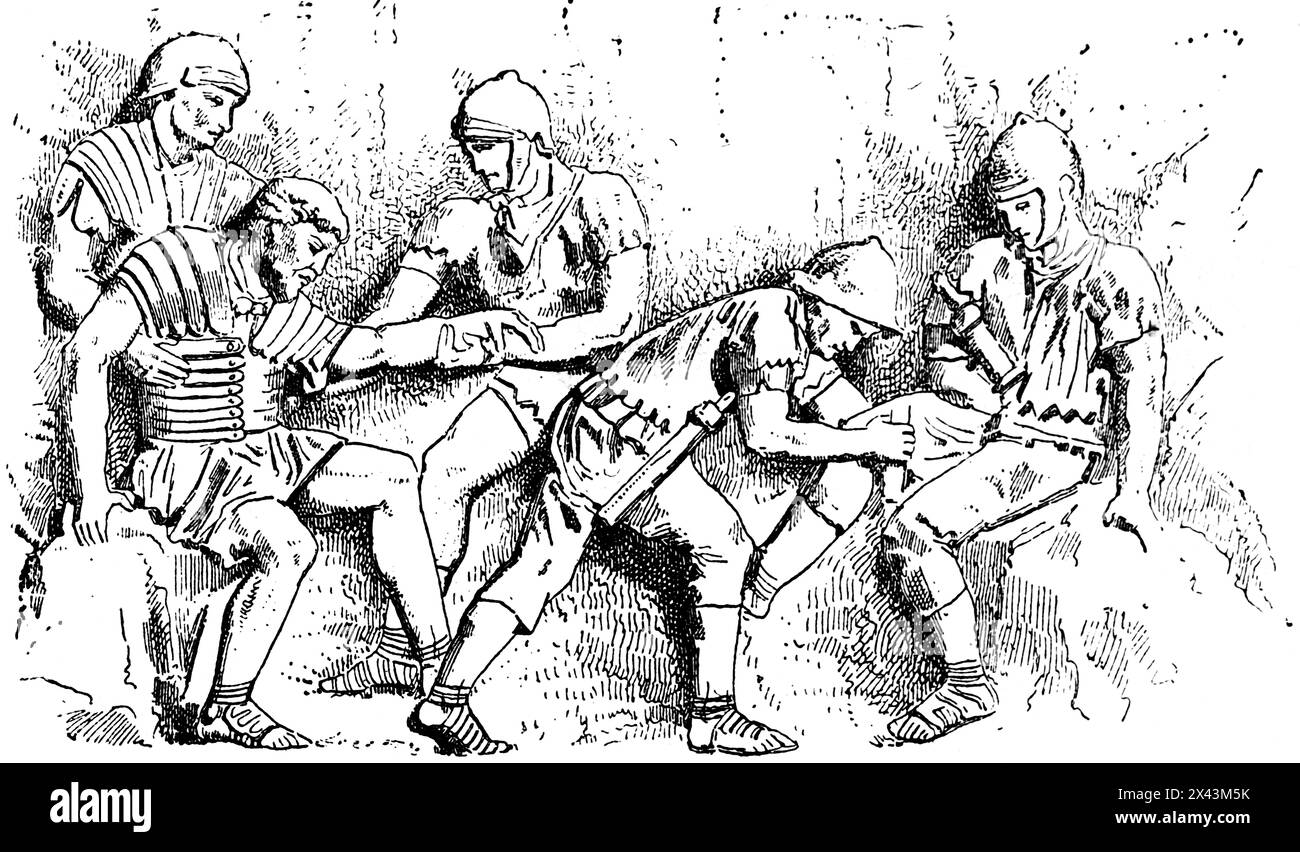 Roman military doctors doing their job with Roman soldiers, Roman Empire, Italy, historic illustration 1884 Stock Photohttps://www.alamy.com/image-license-details/?v=1https://www.alamy.com/roman-military-doctors-doing-their-job-with-roman-soldiers-roman-empire-italy-historic-illustration-1884-image604903199.html
Roman military doctors doing their job with Roman soldiers, Roman Empire, Italy, historic illustration 1884 Stock Photohttps://www.alamy.com/image-license-details/?v=1https://www.alamy.com/roman-military-doctors-doing-their-job-with-roman-soldiers-roman-empire-italy-historic-illustration-1884-image604903199.htmlRM2X43M5K–Roman military doctors doing their job with Roman soldiers, Roman Empire, Italy, historic illustration 1884
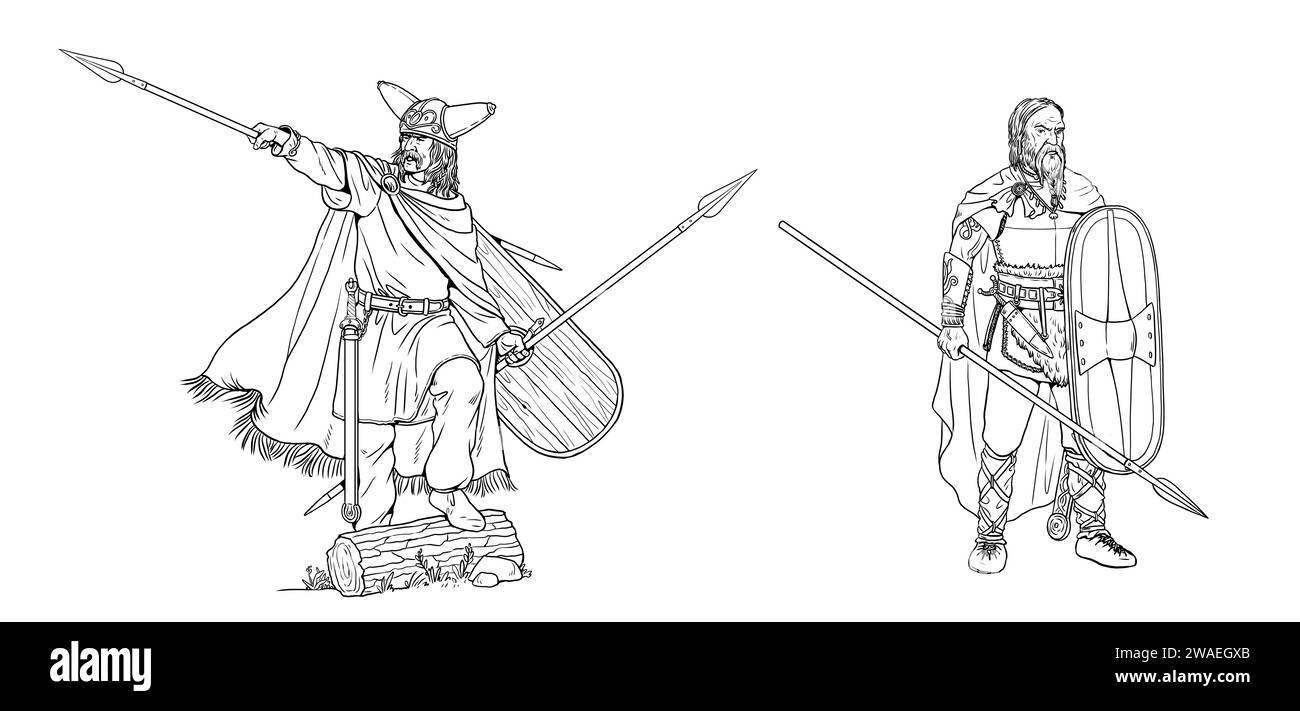 Celtic warriors. Ancient soldiers. Drawing with Roman enemies. Stock Photohttps://www.alamy.com/image-license-details/?v=1https://www.alamy.com/celtic-warriors-ancient-soldiers-drawing-with-roman-enemies-image591619683.html
Celtic warriors. Ancient soldiers. Drawing with Roman enemies. Stock Photohttps://www.alamy.com/image-license-details/?v=1https://www.alamy.com/celtic-warriors-ancient-soldiers-drawing-with-roman-enemies-image591619683.htmlRF2WAEGXB–Celtic warriors. Ancient soldiers. Drawing with Roman enemies.
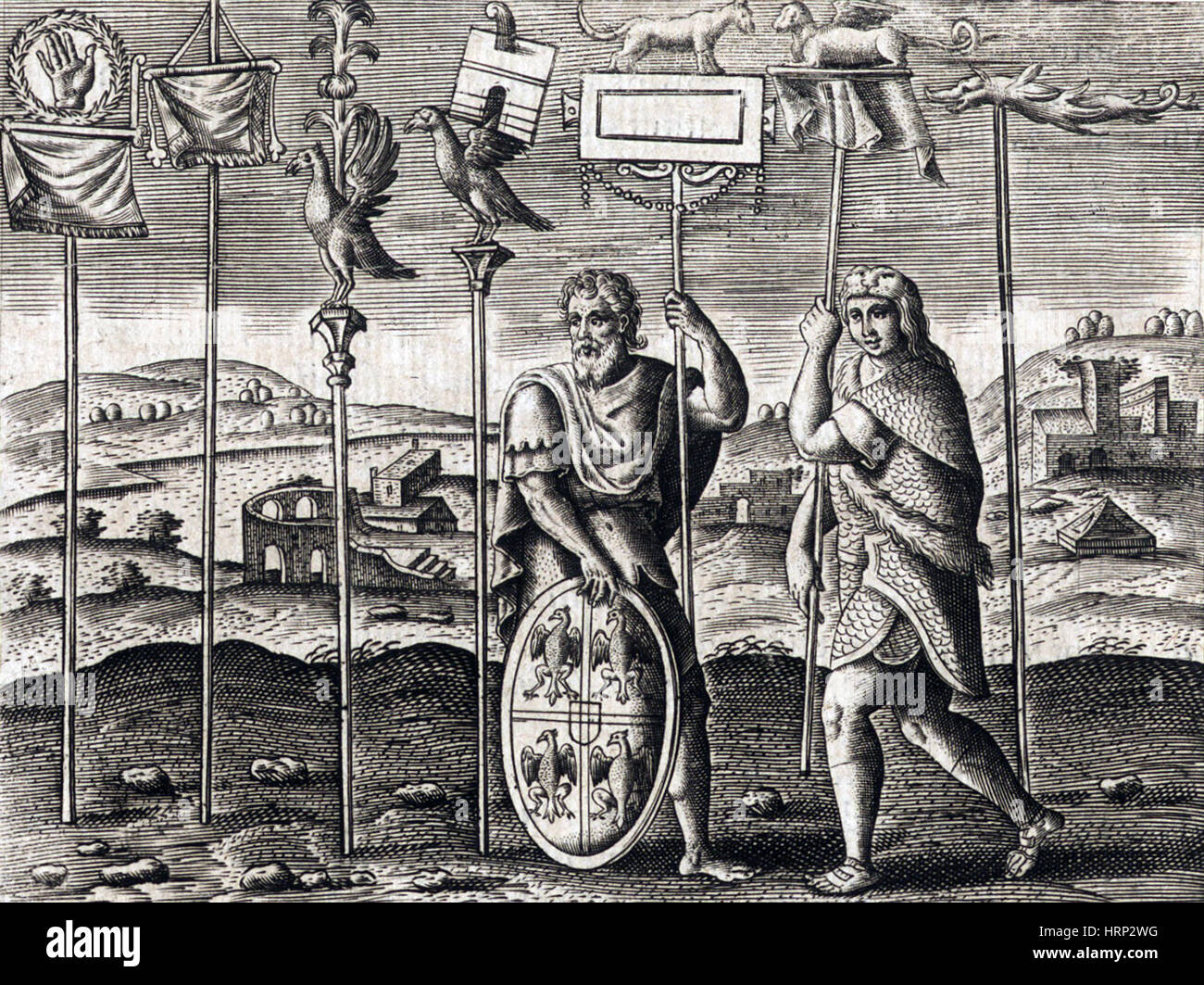 Legion Standards, Ancient Roman Warfare Stock Photohttps://www.alamy.com/image-license-details/?v=1https://www.alamy.com/stock-photo-legion-standards-ancient-roman-warfare-135094892.html
Legion Standards, Ancient Roman Warfare Stock Photohttps://www.alamy.com/image-license-details/?v=1https://www.alamy.com/stock-photo-legion-standards-ancient-roman-warfare-135094892.htmlRMHRP2WG–Legion Standards, Ancient Roman Warfare
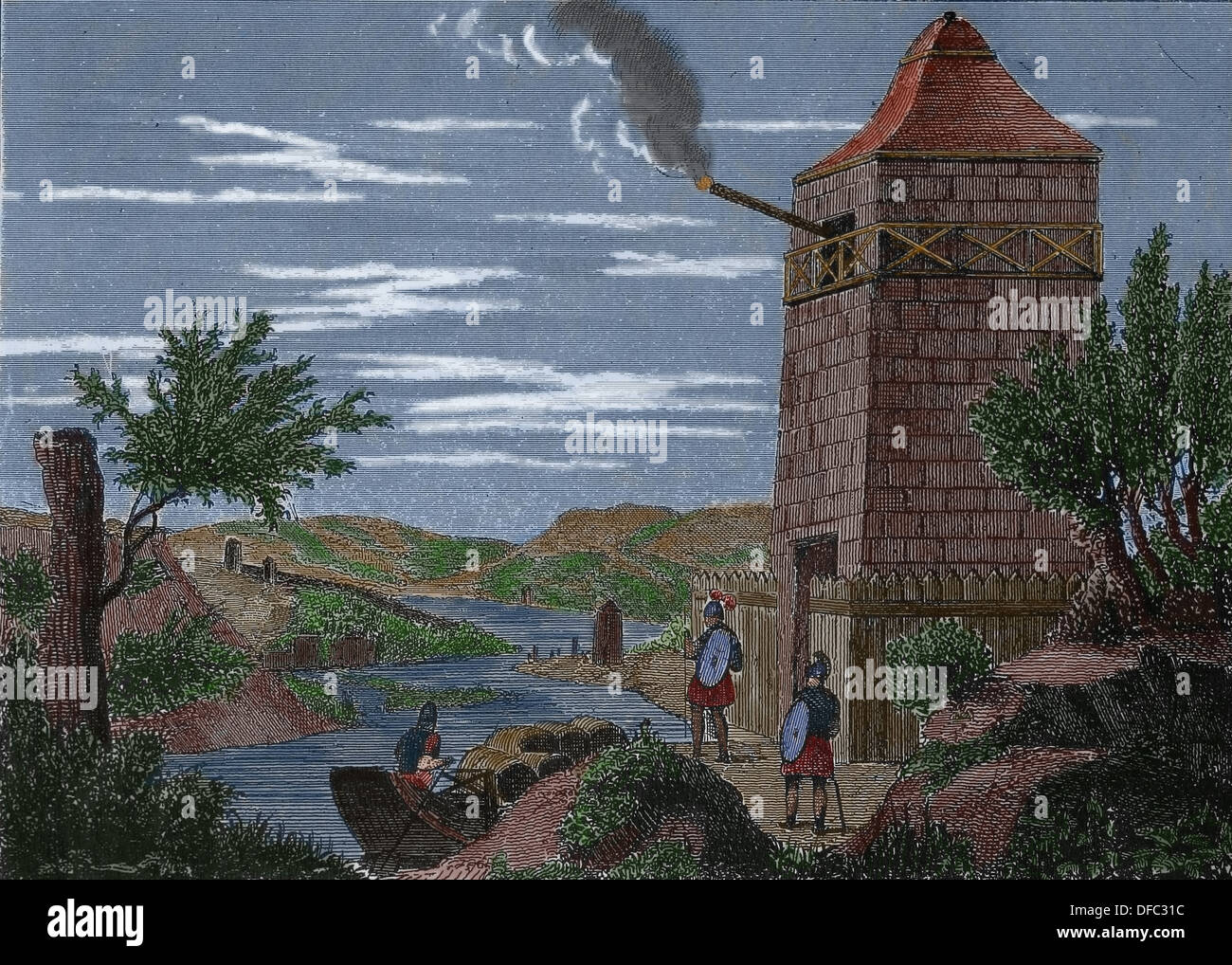 Roman Empire. Roman watchtower. Colored engraving. Stock Photohttps://www.alamy.com/image-license-details/?v=1https://www.alamy.com/roman-empire-roman-watchtower-colored-engraving-image61116760.html
Roman Empire. Roman watchtower. Colored engraving. Stock Photohttps://www.alamy.com/image-license-details/?v=1https://www.alamy.com/roman-empire-roman-watchtower-colored-engraving-image61116760.htmlRMDFC31C–Roman Empire. Roman watchtower. Colored engraving.
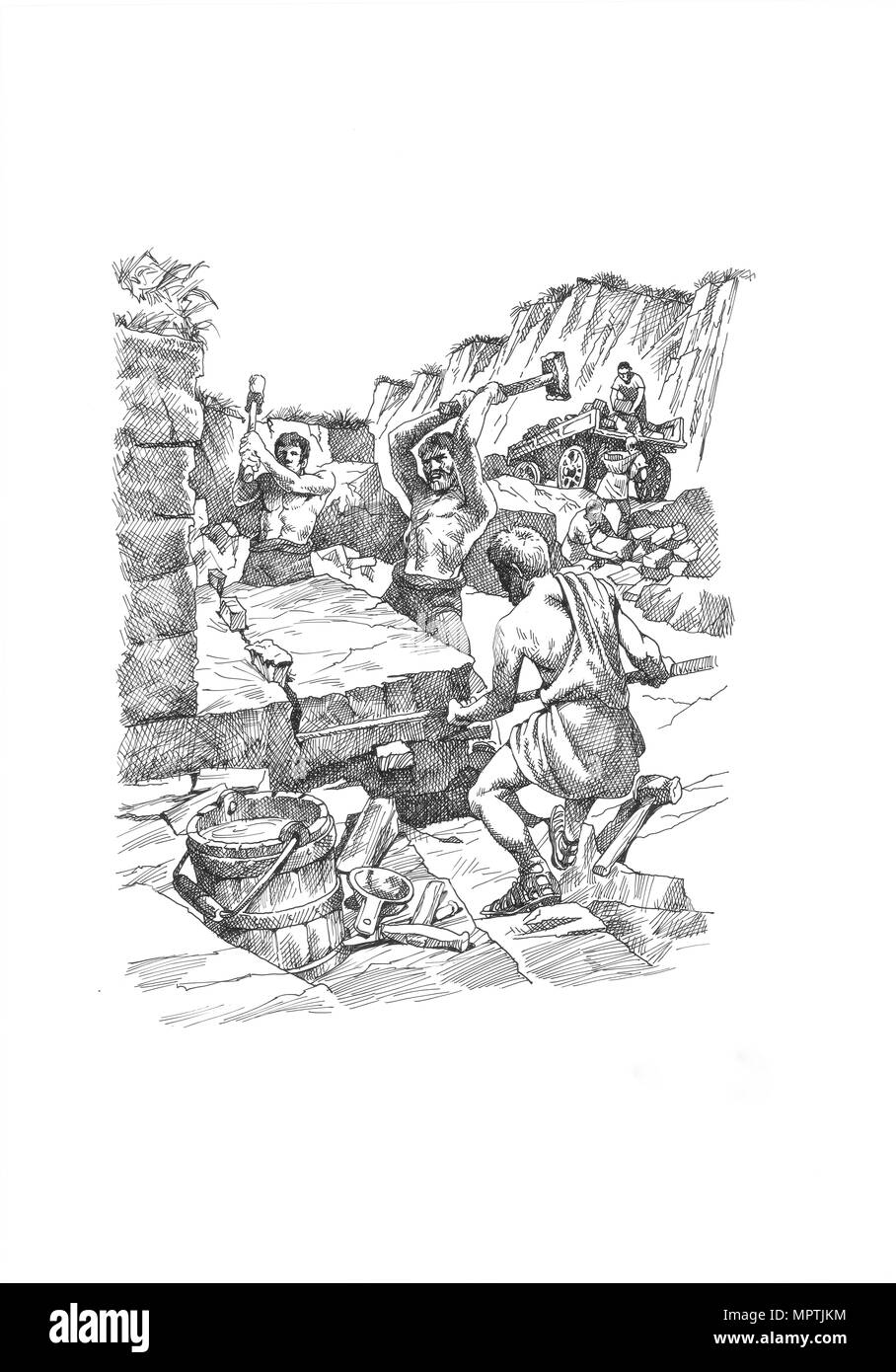 Roman soldiers quarrying stone, Hadrian's Wall, c1985-c2000. Artist: Philip Corke. Stock Photohttps://www.alamy.com/image-license-details/?v=1https://www.alamy.com/roman-soldiers-quarrying-stone-hadrians-wall-c1985-c2000-artist-philip-corke-image186167624.html
Roman soldiers quarrying stone, Hadrian's Wall, c1985-c2000. Artist: Philip Corke. Stock Photohttps://www.alamy.com/image-license-details/?v=1https://www.alamy.com/roman-soldiers-quarrying-stone-hadrians-wall-c1985-c2000-artist-philip-corke-image186167624.htmlRMMPTJKM–Roman soldiers quarrying stone, Hadrian's Wall, c1985-c2000. Artist: Philip Corke.
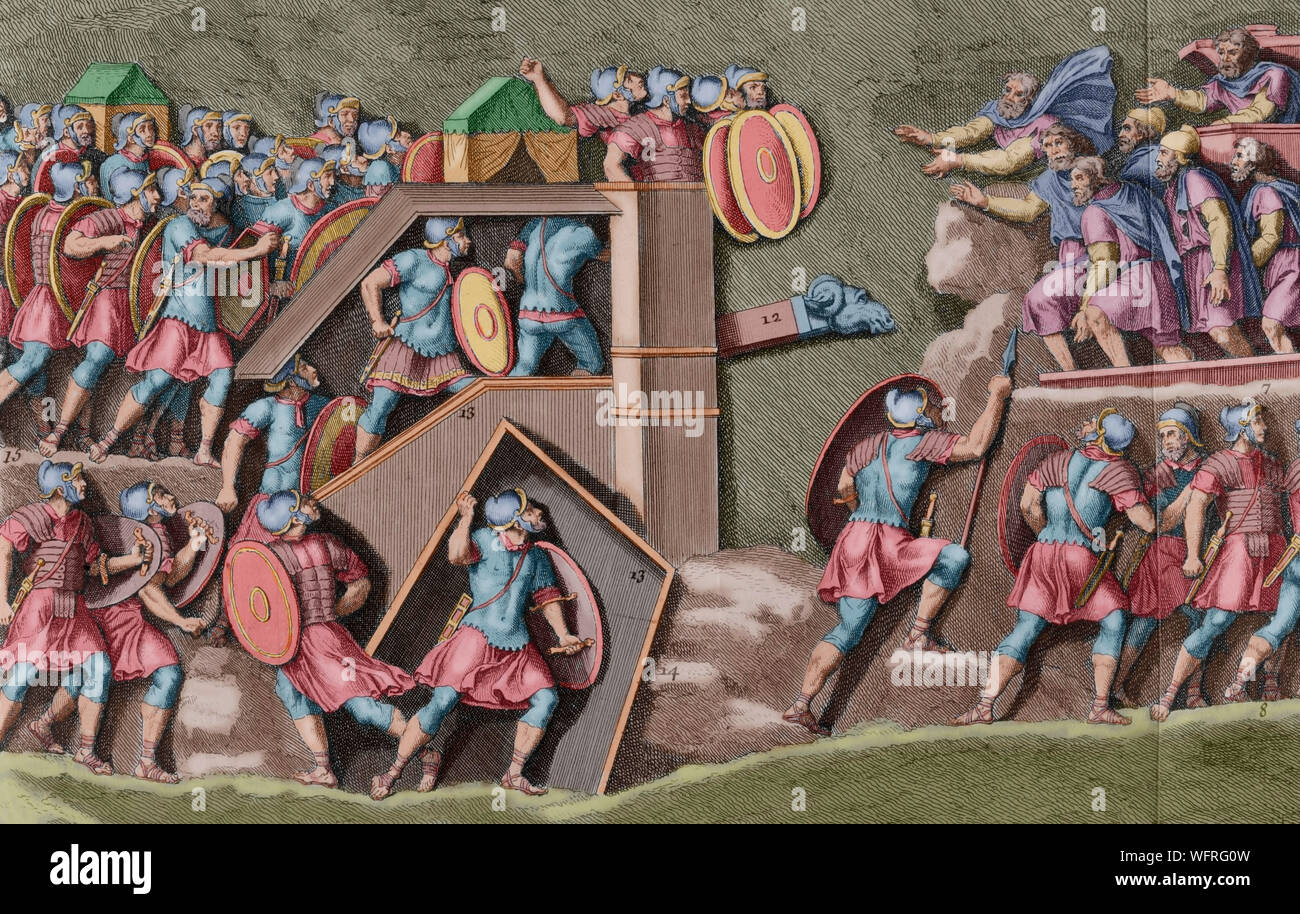 History by Polybius. Volume II. French edition translated from Greek by Dom Vincent Thuillier. Comments of Military Science enriched with critical and historical notes by M. De Folard. Paris, chez Pierre Gandouin, Julien-Michel Gandouin, Pierre-Francois Giffart and Nicolas-Pierre Armand, 1727. Printing by Jean-Baptiste Lamesle. Trajan's Dacian Wars. 2nd century AD. Engraving depicting reliefs of the Arch of Septimius Severus. Invasion of Mesopotamia, 2nd century. Roman-Parthian Wars. Engraving. Later colouration. Stock Photohttps://www.alamy.com/image-license-details/?v=1https://www.alamy.com/history-by-polybius-volume-ii-french-edition-translated-from-greek-by-dom-vincent-thuillier-comments-of-military-science-enriched-with-critical-and-historical-notes-by-m-de-folard-paris-chez-pierre-gandouin-julien-michel-gandouin-pierre-francois-giffart-and-nicolas-pierre-armand-1727-printing-by-jean-baptiste-lamesle-trajans-dacian-wars-2nd-century-ad-engraving-depicting-reliefs-of-the-arch-of-septimius-severus-invasion-of-mesopotamia-2nd-century-roman-parthian-wars-engraving-later-colouration-image267892825.html
History by Polybius. Volume II. French edition translated from Greek by Dom Vincent Thuillier. Comments of Military Science enriched with critical and historical notes by M. De Folard. Paris, chez Pierre Gandouin, Julien-Michel Gandouin, Pierre-Francois Giffart and Nicolas-Pierre Armand, 1727. Printing by Jean-Baptiste Lamesle. Trajan's Dacian Wars. 2nd century AD. Engraving depicting reliefs of the Arch of Septimius Severus. Invasion of Mesopotamia, 2nd century. Roman-Parthian Wars. Engraving. Later colouration. Stock Photohttps://www.alamy.com/image-license-details/?v=1https://www.alamy.com/history-by-polybius-volume-ii-french-edition-translated-from-greek-by-dom-vincent-thuillier-comments-of-military-science-enriched-with-critical-and-historical-notes-by-m-de-folard-paris-chez-pierre-gandouin-julien-michel-gandouin-pierre-francois-giffart-and-nicolas-pierre-armand-1727-printing-by-jean-baptiste-lamesle-trajans-dacian-wars-2nd-century-ad-engraving-depicting-reliefs-of-the-arch-of-septimius-severus-invasion-of-mesopotamia-2nd-century-roman-parthian-wars-engraving-later-colouration-image267892825.htmlRMWFRG0W–History by Polybius. Volume II. French edition translated from Greek by Dom Vincent Thuillier. Comments of Military Science enriched with critical and historical notes by M. De Folard. Paris, chez Pierre Gandouin, Julien-Michel Gandouin, Pierre-Francois Giffart and Nicolas-Pierre Armand, 1727. Printing by Jean-Baptiste Lamesle. Trajan's Dacian Wars. 2nd century AD. Engraving depicting reliefs of the Arch of Septimius Severus. Invasion of Mesopotamia, 2nd century. Roman-Parthian Wars. Engraving. Later colouration.
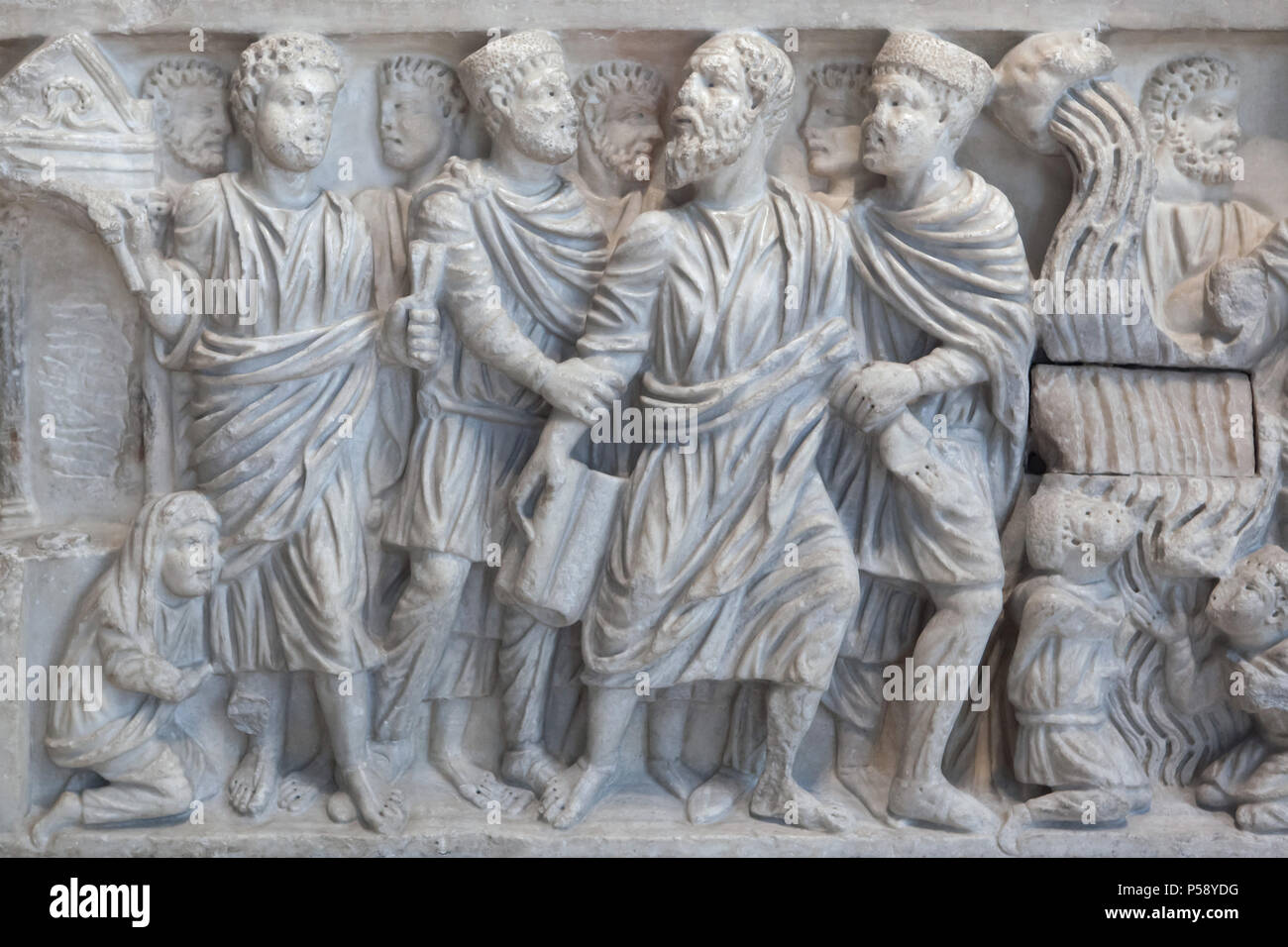 Arrest of Saint Peter. Detail of the Roman marble sarcophagus dated from circa 310 AD from the Astorga Cathedral in León Province on display in the National Archaeological Museum (Museo Arqueológico Nacional) in Madrid, Spain. Stock Photohttps://www.alamy.com/image-license-details/?v=1https://www.alamy.com/arrest-of-saint-peter-detail-of-the-roman-marble-sarcophagus-dated-from-circa-310-ad-from-the-astorga-cathedral-in-len-province-on-display-in-the-national-archaeological-museum-museo-arqueolgico-nacional-in-madrid-spain-image209794860.html
Arrest of Saint Peter. Detail of the Roman marble sarcophagus dated from circa 310 AD from the Astorga Cathedral in León Province on display in the National Archaeological Museum (Museo Arqueológico Nacional) in Madrid, Spain. Stock Photohttps://www.alamy.com/image-license-details/?v=1https://www.alamy.com/arrest-of-saint-peter-detail-of-the-roman-marble-sarcophagus-dated-from-circa-310-ad-from-the-astorga-cathedral-in-len-province-on-display-in-the-national-archaeological-museum-museo-arqueolgico-nacional-in-madrid-spain-image209794860.htmlRMP58YDG–Arrest of Saint Peter. Detail of the Roman marble sarcophagus dated from circa 310 AD from the Astorga Cathedral in León Province on display in the National Archaeological Museum (Museo Arqueológico Nacional) in Madrid, Spain.
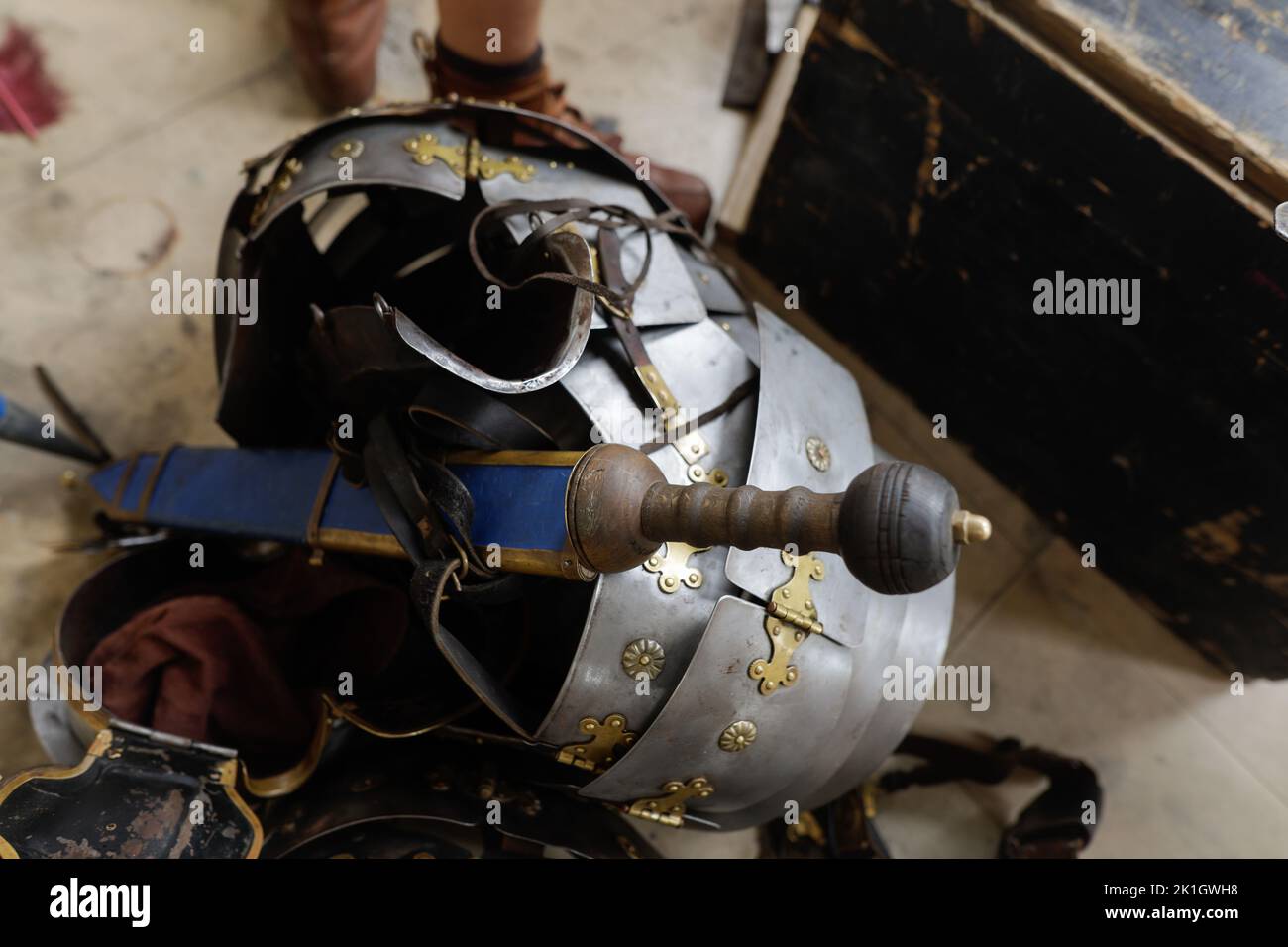 Details with an ancient Roman soldier's sword and body armour during a historic reenactment event. Stock Photohttps://www.alamy.com/image-license-details/?v=1https://www.alamy.com/details-with-an-ancient-roman-soldiers-sword-and-body-armour-during-a-historic-reenactment-event-image482876276.html
Details with an ancient Roman soldier's sword and body armour during a historic reenactment event. Stock Photohttps://www.alamy.com/image-license-details/?v=1https://www.alamy.com/details-with-an-ancient-roman-soldiers-sword-and-body-armour-during-a-historic-reenactment-event-image482876276.htmlRF2K1GWH8–Details with an ancient Roman soldier's sword and body armour during a historic reenactment event.
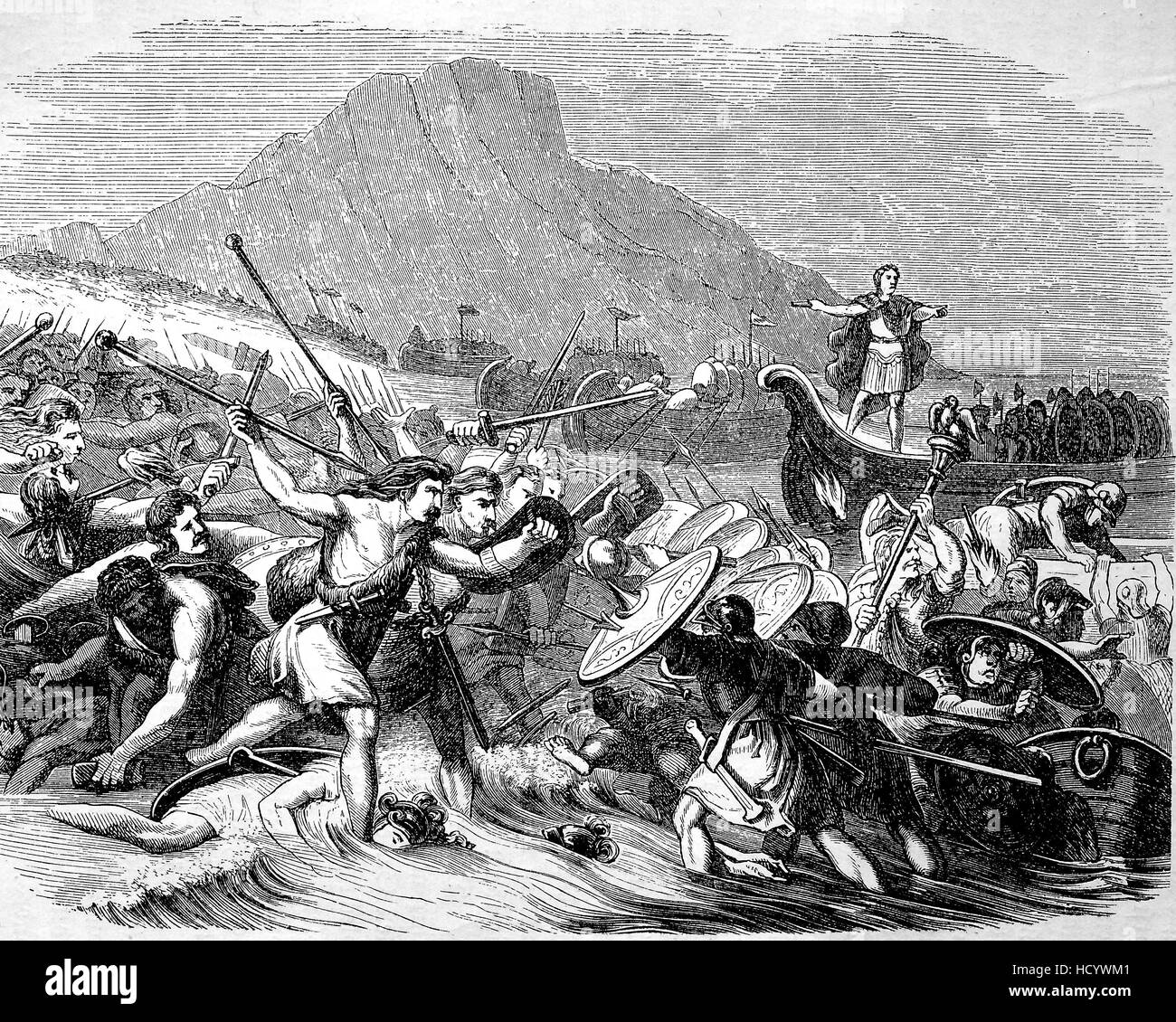 Gaius Iulius Caesar and his soldiers arrived Britain, 55 BC, the story of the ancient Rome, roman Empire, Italy Stock Photohttps://www.alamy.com/image-license-details/?v=1https://www.alamy.com/stock-photo-gaius-iulius-caesar-and-his-soldiers-arrived-britain-55-bc-the-story-128461313.html
Gaius Iulius Caesar and his soldiers arrived Britain, 55 BC, the story of the ancient Rome, roman Empire, Italy Stock Photohttps://www.alamy.com/image-license-details/?v=1https://www.alamy.com/stock-photo-gaius-iulius-caesar-and-his-soldiers-arrived-britain-55-bc-the-story-128461313.htmlRFHCYWM1–Gaius Iulius Caesar and his soldiers arrived Britain, 55 BC, the story of the ancient Rome, roman Empire, Italy
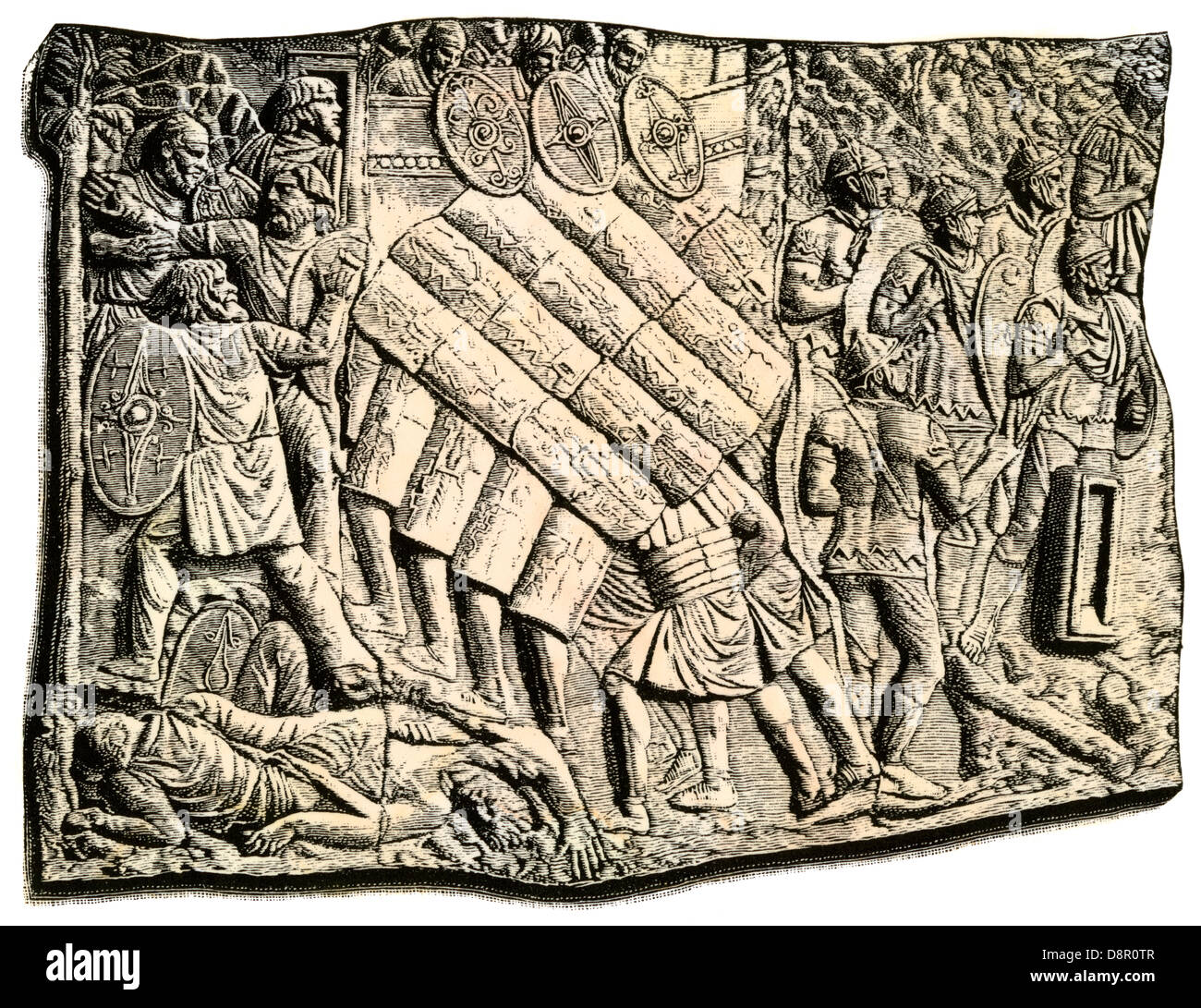 Roman soldiers attacking a German fortress, a detail of the Column of Trajan. Woodcut with a watercolor wash Stock Photohttps://www.alamy.com/image-license-details/?v=1https://www.alamy.com/stock-photo-roman-soldiers-attacking-a-german-fortress-a-detail-of-the-column-57053943.html
Roman soldiers attacking a German fortress, a detail of the Column of Trajan. Woodcut with a watercolor wash Stock Photohttps://www.alamy.com/image-license-details/?v=1https://www.alamy.com/stock-photo-roman-soldiers-attacking-a-german-fortress-a-detail-of-the-column-57053943.htmlRMD8R0TR–Roman soldiers attacking a German fortress, a detail of the Column of Trajan. Woodcut with a watercolor wash
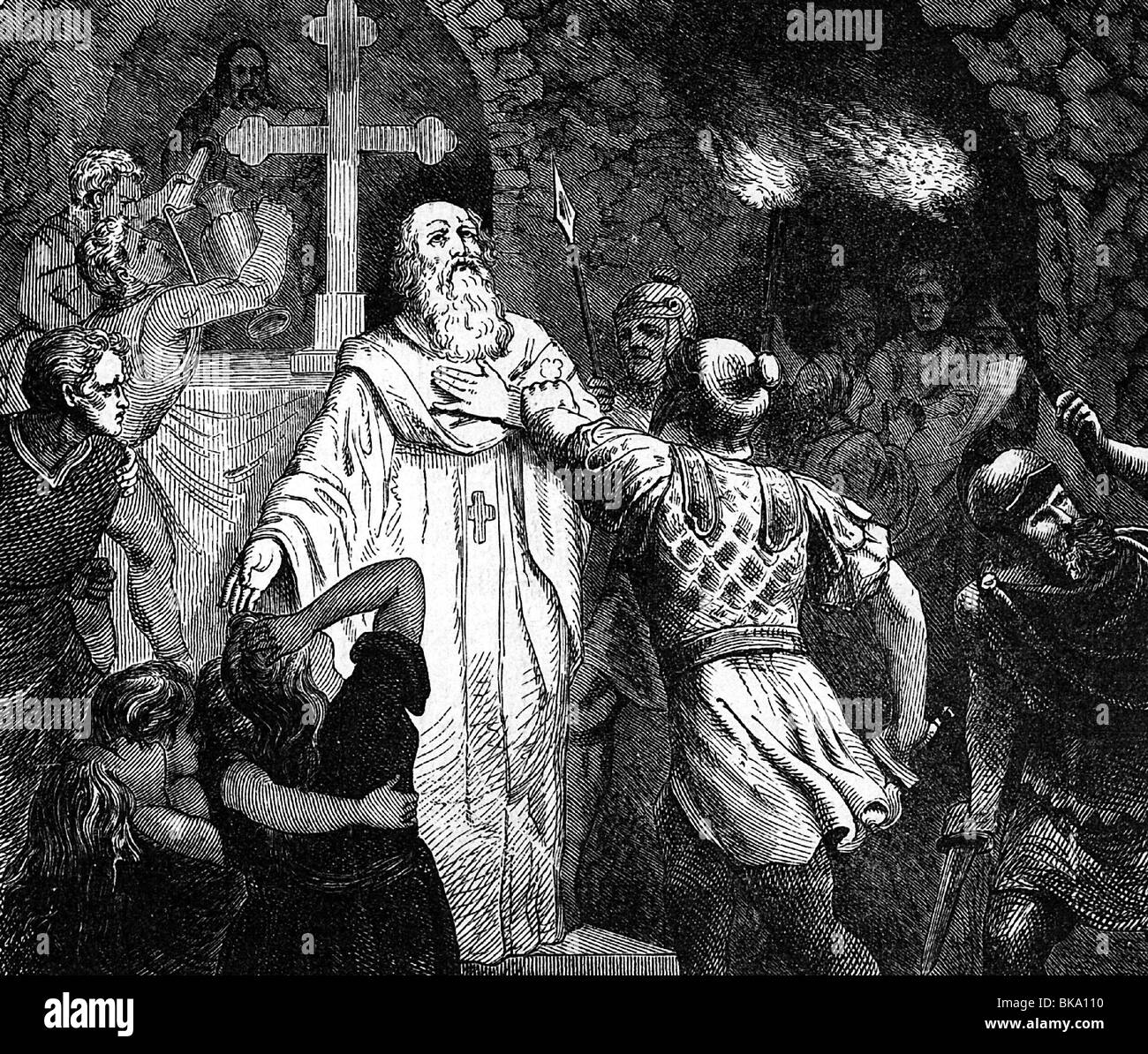 ancient world, Roman Empire, persecution of Christians, Roman soldiers arresting Christians in the catacombs, wood engraving, 19th century, historic, historical, Christianity, persecution, persecutions, arrest, violence, catacomb, catacombs, religion, heathen, pagan, heathen, pagans, ancient world, people, Stock Photohttps://www.alamy.com/image-license-details/?v=1https://www.alamy.com/stock-photo-ancient-world-roman-empire-persecution-of-christians-roman-soldiers-29109164.html
ancient world, Roman Empire, persecution of Christians, Roman soldiers arresting Christians in the catacombs, wood engraving, 19th century, historic, historical, Christianity, persecution, persecutions, arrest, violence, catacomb, catacombs, religion, heathen, pagan, heathen, pagans, ancient world, people, Stock Photohttps://www.alamy.com/image-license-details/?v=1https://www.alamy.com/stock-photo-ancient-world-roman-empire-persecution-of-christians-roman-soldiers-29109164.htmlRMBKA110–ancient world, Roman Empire, persecution of Christians, Roman soldiers arresting Christians in the catacombs, wood engraving, 19th century, historic, historical, Christianity, persecution, persecutions, arrest, violence, catacomb, catacombs, religion, heathen, pagan, heathen, pagans, ancient world, people,
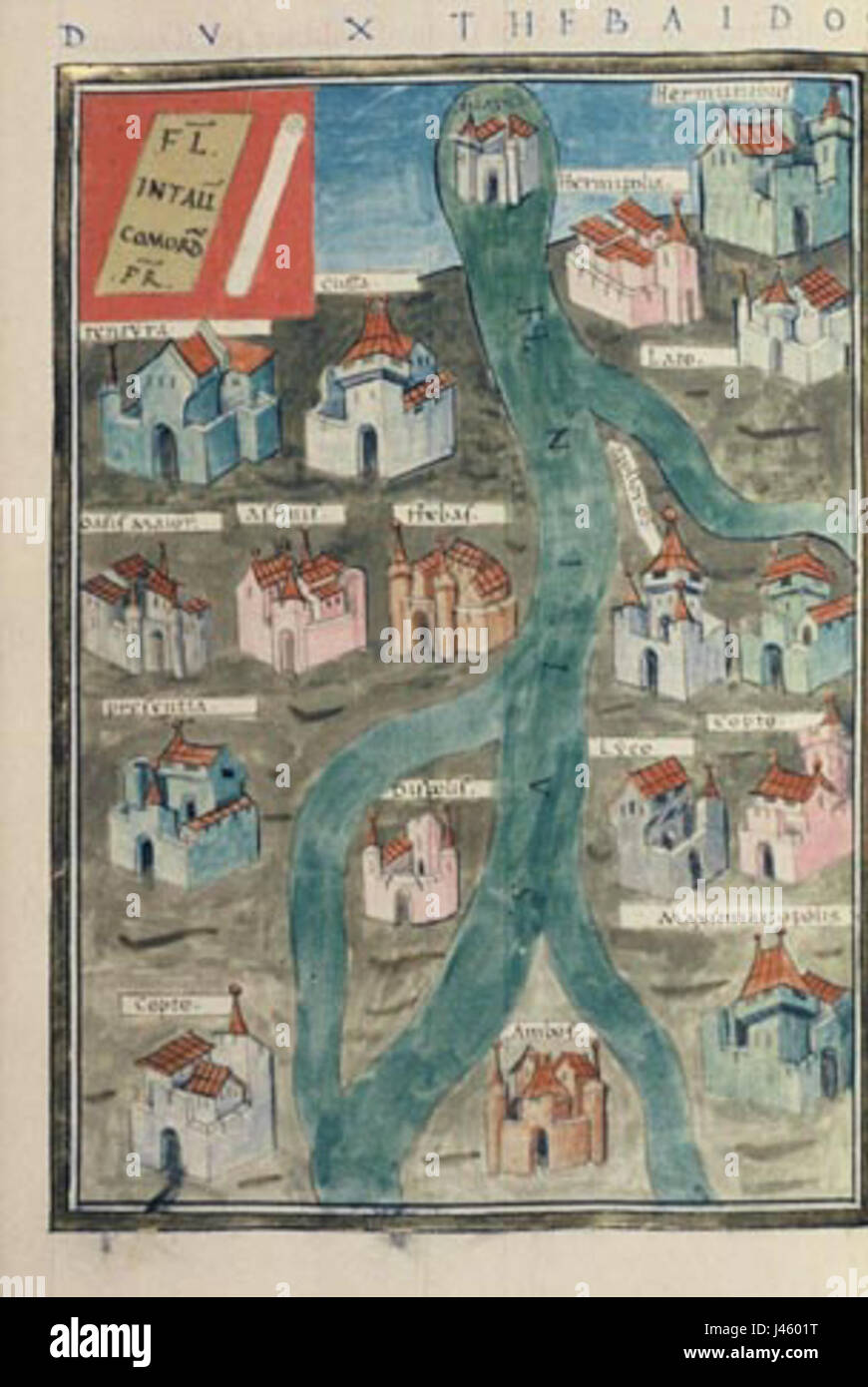 *Notitia Dignitatum* is an ancient Roman document that lists the offices and military positions within the Roman Empire. 'Dux Thebaidos' refers to the leader of the Theban military forces. Stock Photohttps://www.alamy.com/image-license-details/?v=1https://www.alamy.com/stock-photo-notitia-dignitatum-is-an-ancient-roman-document-that-lists-the-offices-140273332.html
*Notitia Dignitatum* is an ancient Roman document that lists the offices and military positions within the Roman Empire. 'Dux Thebaidos' refers to the leader of the Theban military forces. Stock Photohttps://www.alamy.com/image-license-details/?v=1https://www.alamy.com/stock-photo-notitia-dignitatum-is-an-ancient-roman-document-that-lists-the-offices-140273332.htmlRMJ4601T–*Notitia Dignitatum* is an ancient Roman document that lists the offices and military positions within the Roman Empire. 'Dux Thebaidos' refers to the leader of the Theban military forces.
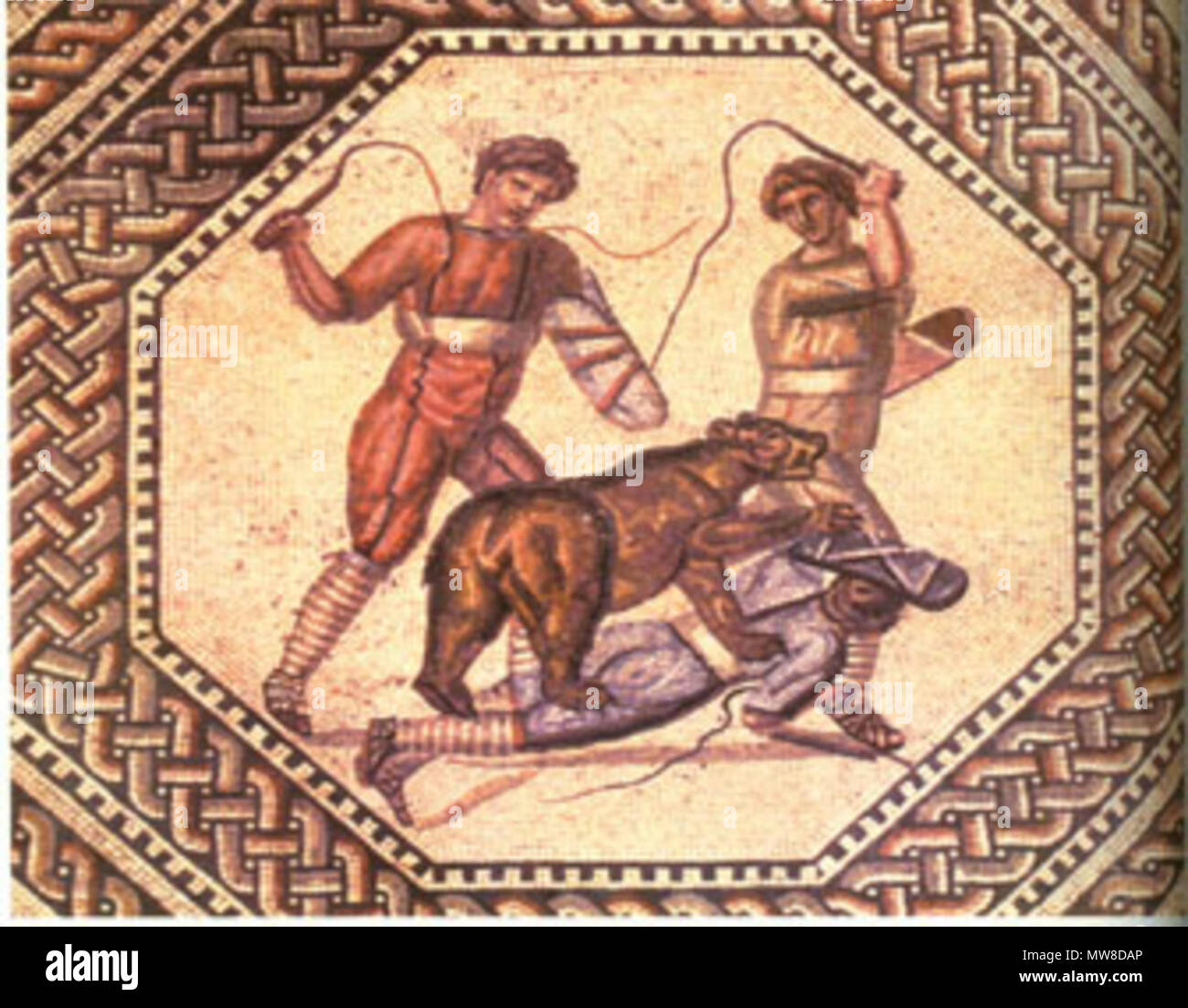 . English: roman mosaic . roman empire. anonimous 83 Bestiarii2 Stock Photohttps://www.alamy.com/image-license-details/?v=1https://www.alamy.com/english-roman-mosaic-roman-empire-anonimous-83-bestiarii2-image187656190.html
. English: roman mosaic . roman empire. anonimous 83 Bestiarii2 Stock Photohttps://www.alamy.com/image-license-details/?v=1https://www.alamy.com/english-roman-mosaic-roman-empire-anonimous-83-bestiarii2-image187656190.htmlRMMW8DAP–. English: roman mosaic . roman empire. anonimous 83 Bestiarii2
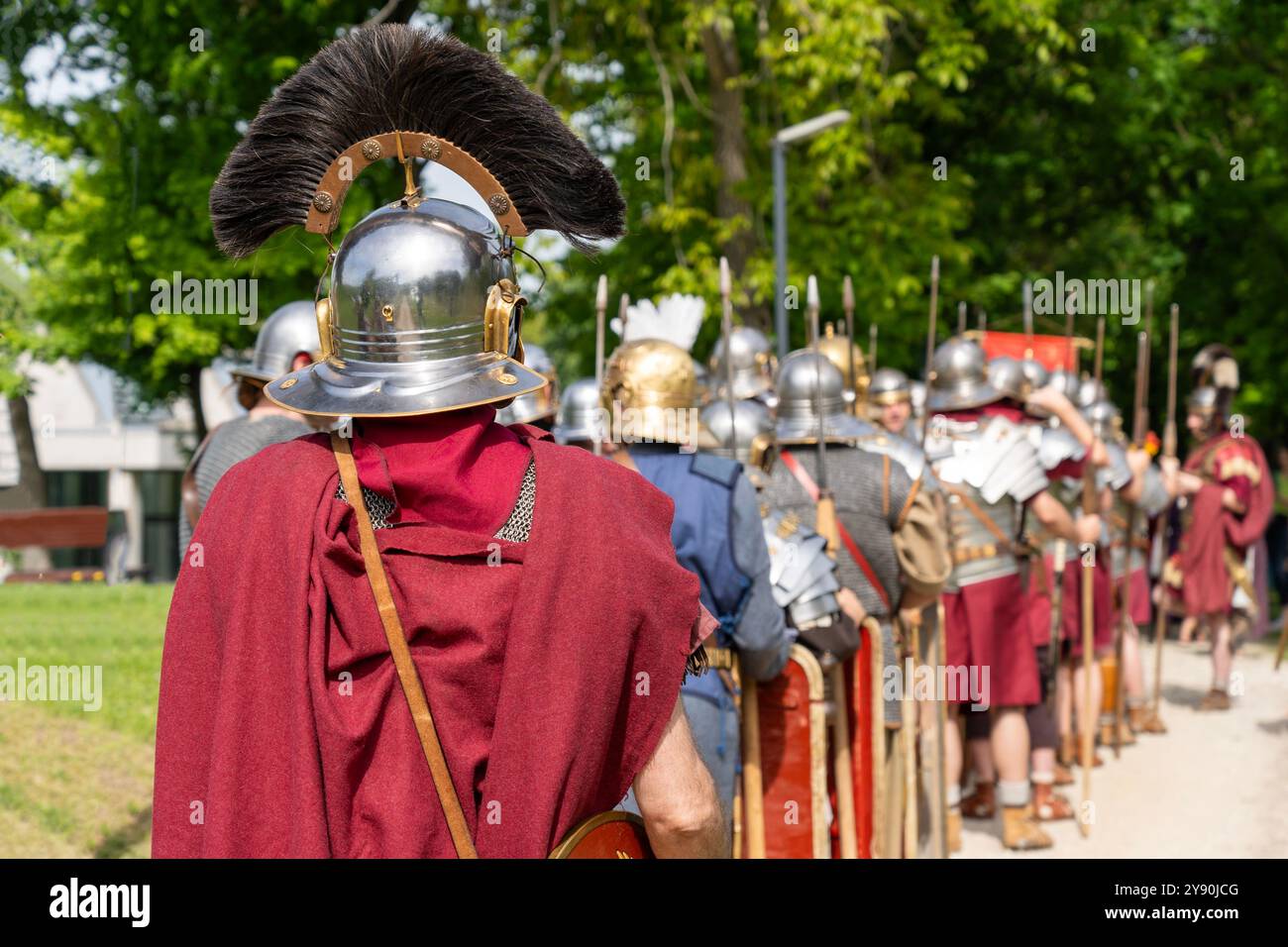 Armor of ancient Roman soldiers on a historical re-enactment Stock Photohttps://www.alamy.com/image-license-details/?v=1https://www.alamy.com/armor-of-ancient-roman-soldiers-on-a-historical-re-enactment-image625119616.html
Armor of ancient Roman soldiers on a historical re-enactment Stock Photohttps://www.alamy.com/image-license-details/?v=1https://www.alamy.com/armor-of-ancient-roman-soldiers-on-a-historical-re-enactment-image625119616.htmlRF2Y90JCG–Armor of ancient Roman soldiers on a historical re-enactment
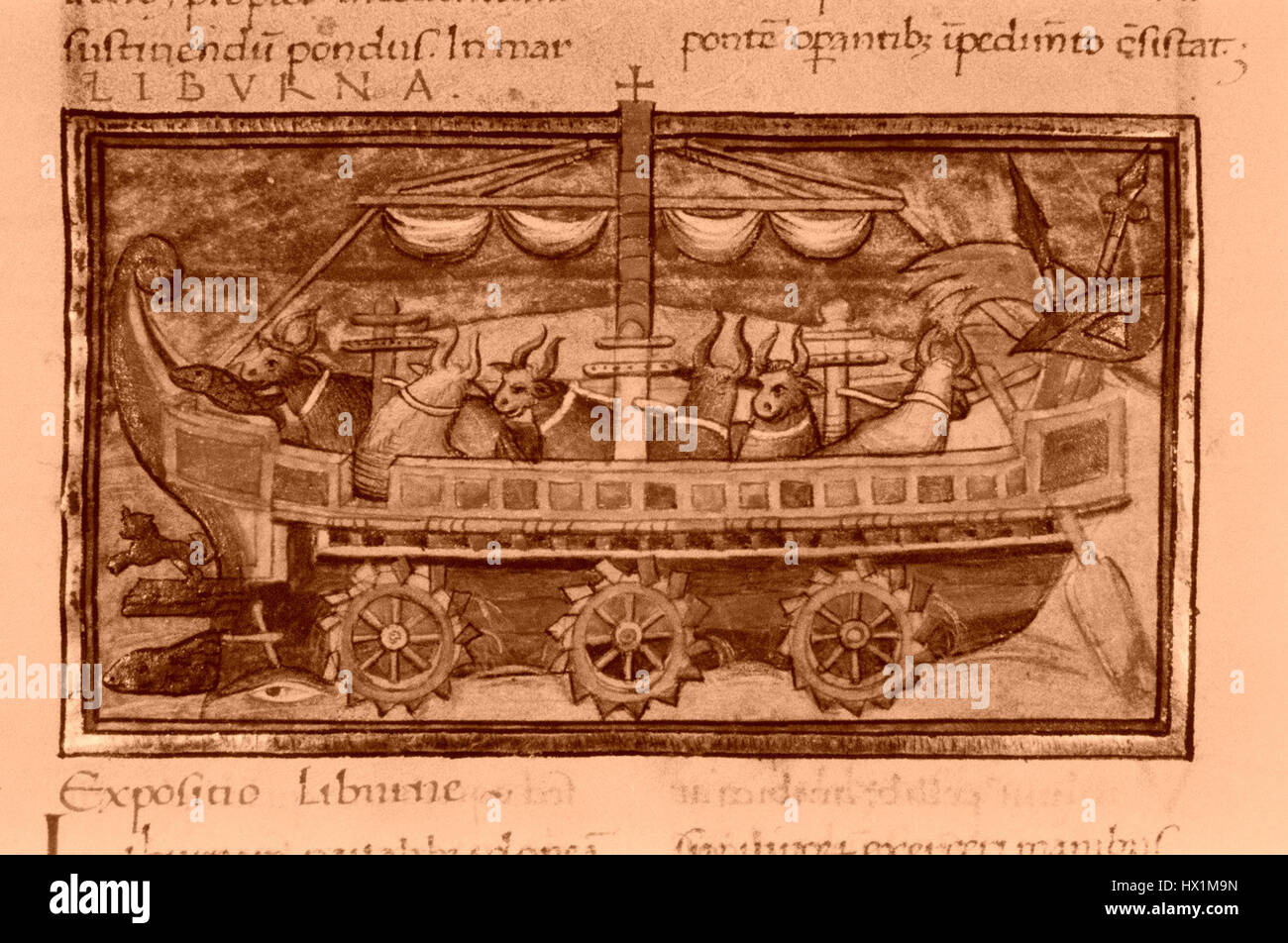 'De Rebus Bellicis' is an anonymous work from the 4th century detailing military history. This sepia manuscript illustrates ancient warfare and tactical strategies from the Roman Empire. Stock Photohttps://www.alamy.com/image-license-details/?v=1https://www.alamy.com/stock-photo-de-rebus-bellicis-is-an-anonymous-work-from-the-4th-century-detailing-136491537.html
'De Rebus Bellicis' is an anonymous work from the 4th century detailing military history. This sepia manuscript illustrates ancient warfare and tactical strategies from the Roman Empire. Stock Photohttps://www.alamy.com/image-license-details/?v=1https://www.alamy.com/stock-photo-de-rebus-bellicis-is-an-anonymous-work-from-the-4th-century-detailing-136491537.htmlRMHX1M9N–'De Rebus Bellicis' is an anonymous work from the 4th century detailing military history. This sepia manuscript illustrates ancient warfare and tactical strategies from the Roman Empire.
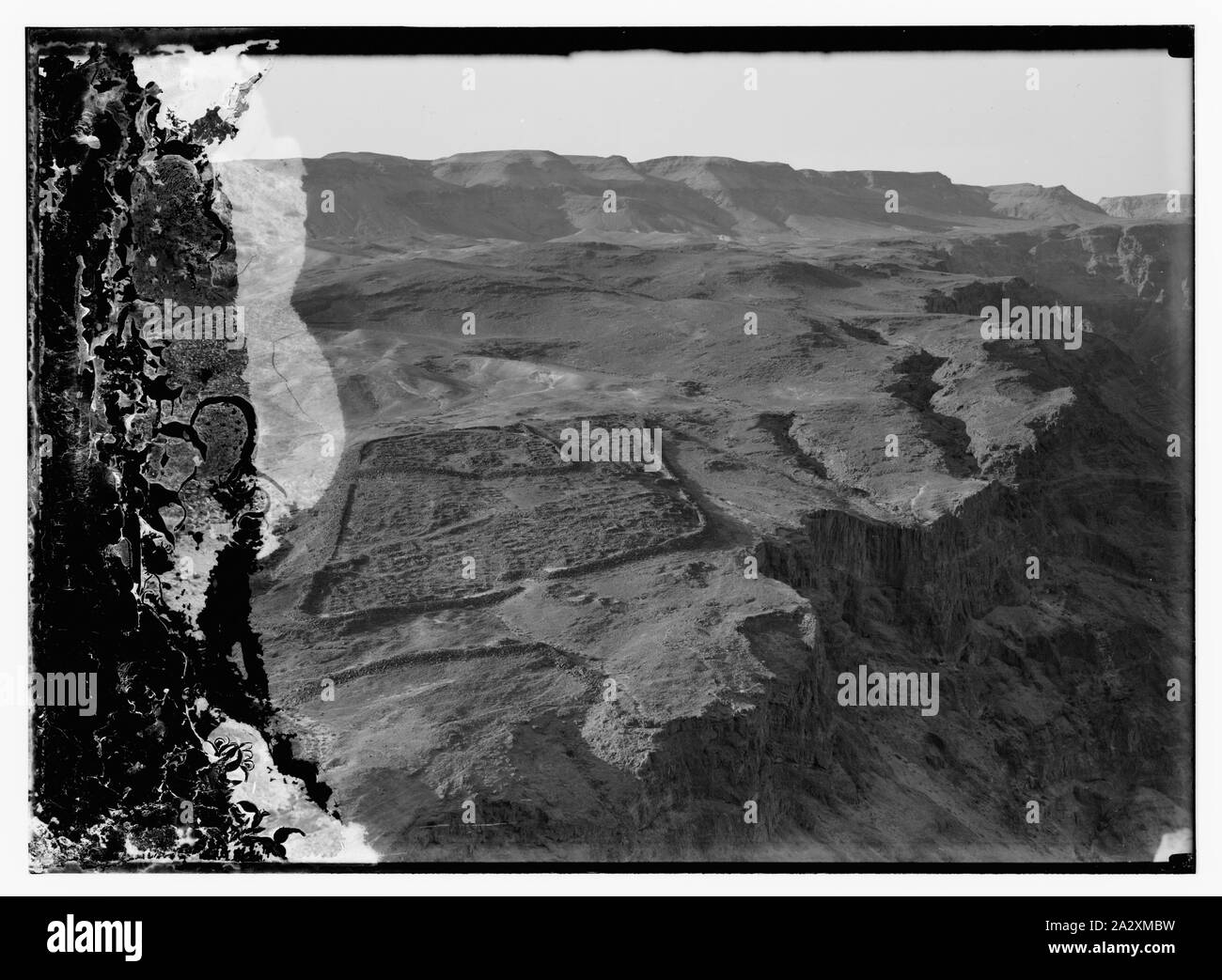 Roman encampment from Masada Stock Photohttps://www.alamy.com/image-license-details/?v=1https://www.alamy.com/roman-encampment-from-masada-image328813069.html
Roman encampment from Masada Stock Photohttps://www.alamy.com/image-license-details/?v=1https://www.alamy.com/roman-encampment-from-masada-image328813069.htmlRM2A2XMBW–Roman encampment from Masada
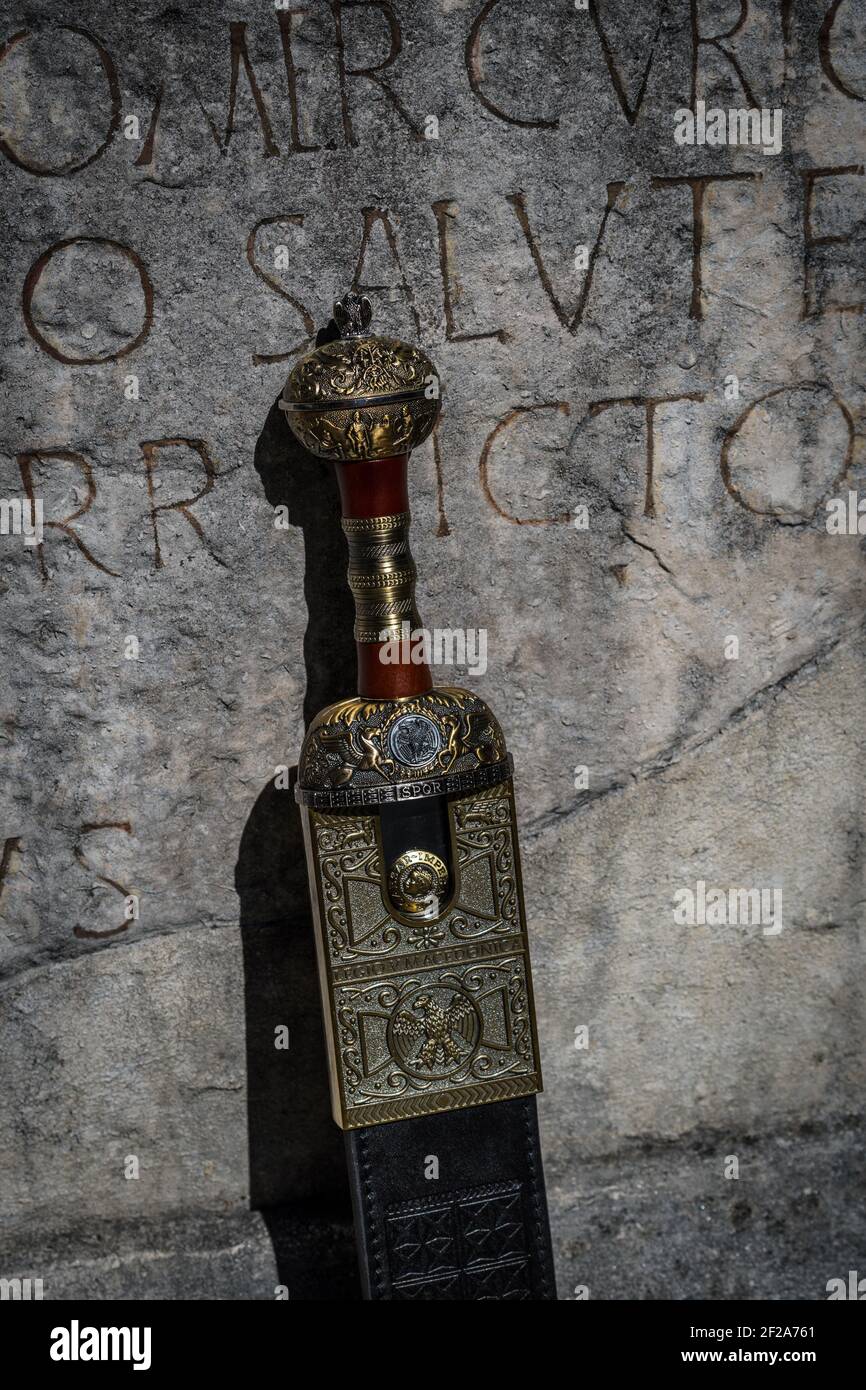 Roman History Empire Rome Stock Photohttps://www.alamy.com/image-license-details/?v=1https://www.alamy.com/roman-history-empire-rome-image414503321.html
Roman History Empire Rome Stock Photohttps://www.alamy.com/image-license-details/?v=1https://www.alamy.com/roman-history-empire-rome-image414503321.htmlRF2F2A761–Roman History Empire Rome
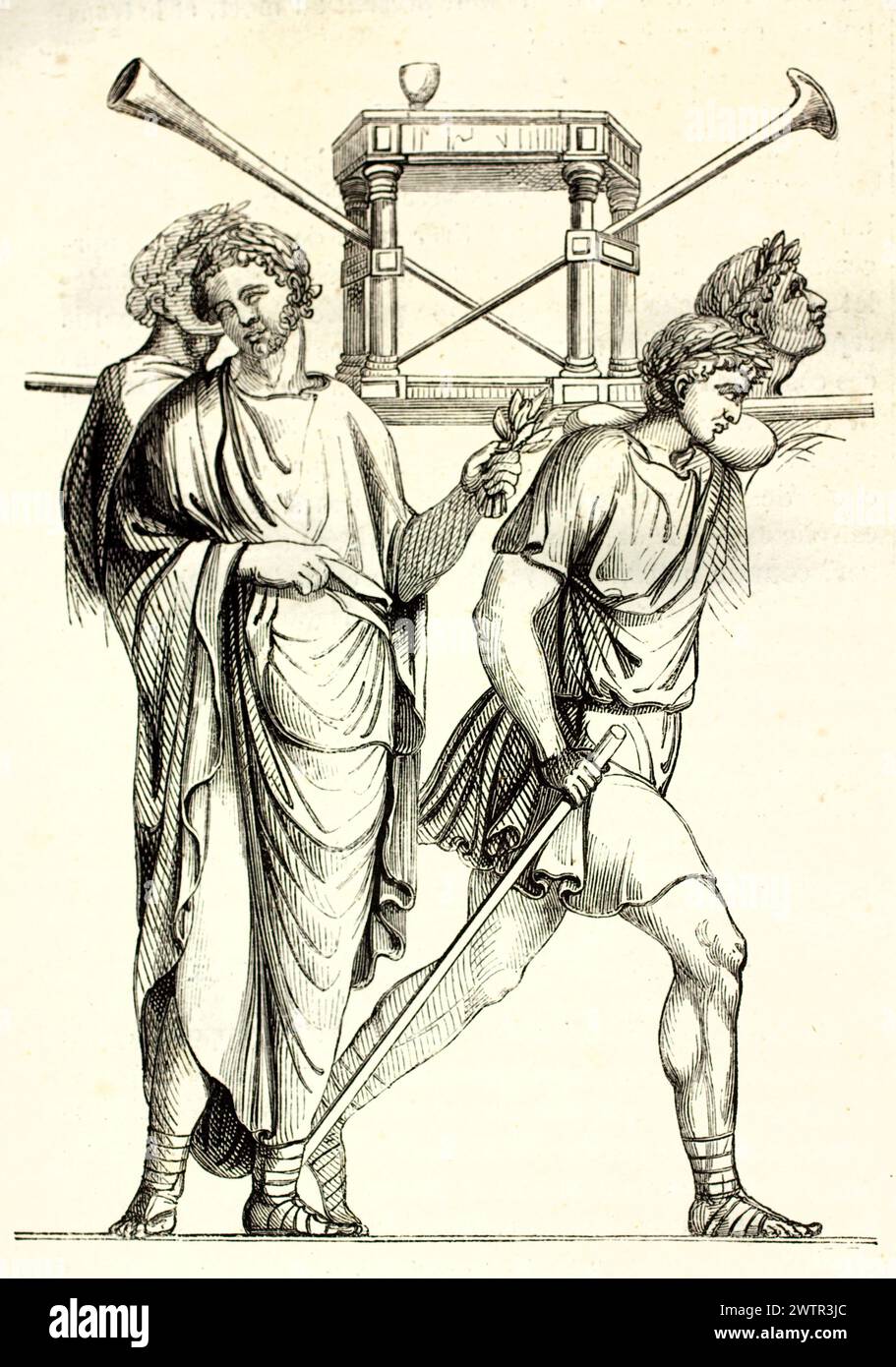 Processional scene from bas-relief on Arch of Titus, with Roman figures carrying spoils. Engraved reproduction by unknown author, published in 1852. Stock Photohttps://www.alamy.com/image-license-details/?v=1https://www.alamy.com/processional-scene-from-bas-relief-on-arch-of-titus-with-roman-figures-carrying-spoils-engraved-reproduction-by-unknown-author-published-in-1852-image600412020.html
Processional scene from bas-relief on Arch of Titus, with Roman figures carrying spoils. Engraved reproduction by unknown author, published in 1852. Stock Photohttps://www.alamy.com/image-license-details/?v=1https://www.alamy.com/processional-scene-from-bas-relief-on-arch-of-titus-with-roman-figures-carrying-spoils-engraved-reproduction-by-unknown-author-published-in-1852-image600412020.htmlRF2WTR3JC–Processional scene from bas-relief on Arch of Titus, with Roman figures carrying spoils. Engraved reproduction by unknown author, published in 1852.
 Germanicus buries the bones of the Romans killed in The Battle of the Teutoburg Forest, 9 AD. Germanicus, aka Germanicus Julius Caesar, 15 BC – 19AD. Member of the Julio-Claudian dynasty and a prominent general of the Roman Empire. From Ward and Lock's Illustrated History of the World, published c.1882. Stock Photohttps://www.alamy.com/image-license-details/?v=1https://www.alamy.com/stock-image-germanicus-buries-the-bones-of-the-romans-killed-in-the-battle-of-166413946.html
Germanicus buries the bones of the Romans killed in The Battle of the Teutoburg Forest, 9 AD. Germanicus, aka Germanicus Julius Caesar, 15 BC – 19AD. Member of the Julio-Claudian dynasty and a prominent general of the Roman Empire. From Ward and Lock's Illustrated History of the World, published c.1882. Stock Photohttps://www.alamy.com/image-license-details/?v=1https://www.alamy.com/stock-image-germanicus-buries-the-bones-of-the-romans-killed-in-the-battle-of-166413946.htmlRMKJMPK6–Germanicus buries the bones of the Romans killed in The Battle of the Teutoburg Forest, 9 AD. Germanicus, aka Germanicus Julius Caesar, 15 BC – 19AD. Member of the Julio-Claudian dynasty and a prominent general of the Roman Empire. From Ward and Lock's Illustrated History of the World, published c.1882.
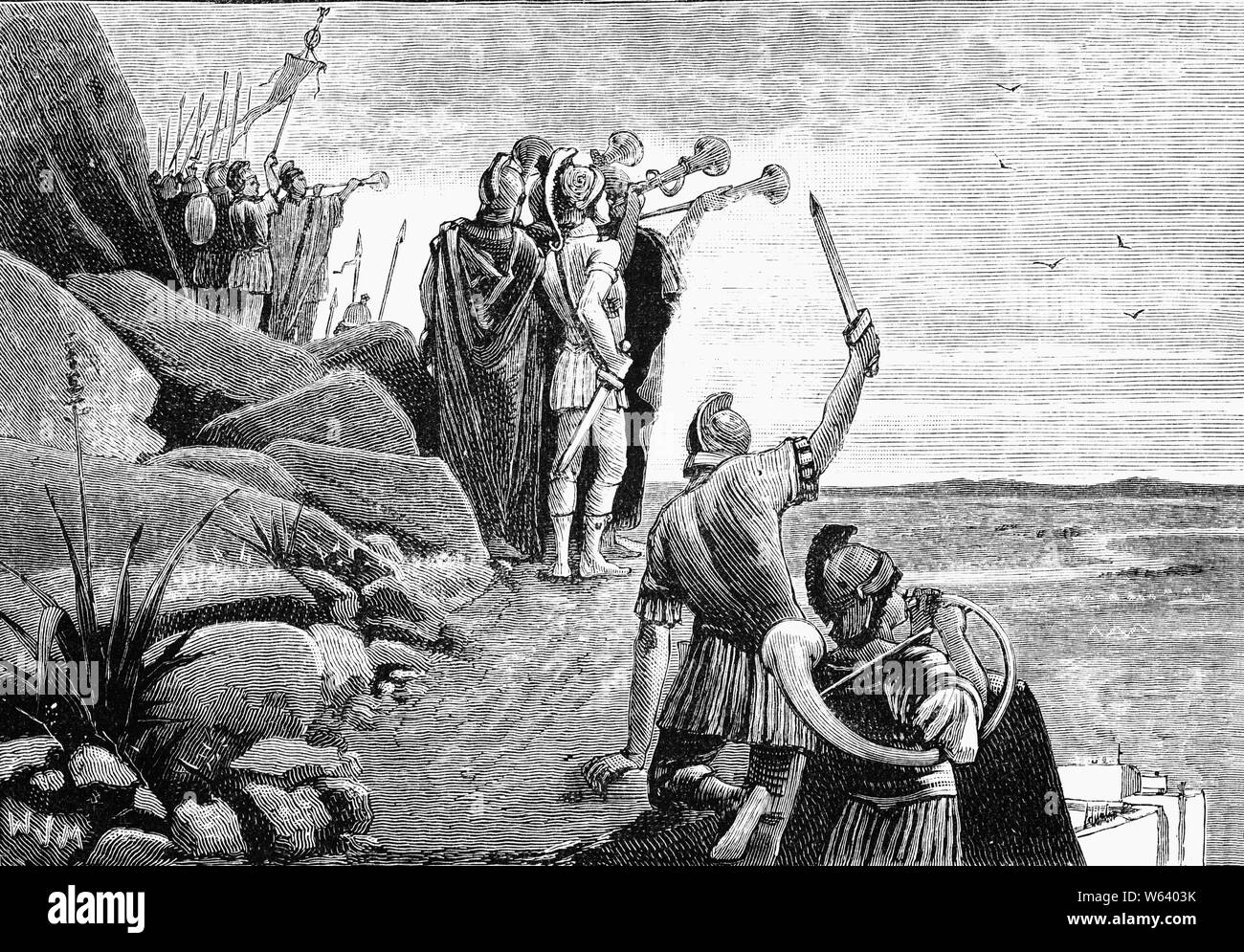 An incident during the Jugurthine War that took place in 112–106 BC, between Rome and Jugurtha of Numidia, a kingdom on the north African coast (now Algeria). Jugurtha was the nephew and adopted son of Micipsa, King of Numidia, whom he succeeded on the throne, overcoming his rivals through assassination, war, and bribery. The war constituted an important phase in the Roman subjugation of Northern Africa, but Numidia did not become a Roman province until 46 BC. Following Jugurtha's usurpation of the throne of Numidia, a loyal ally of Rome since the Punic Wars, Rome felt compelled to intervene Stock Photohttps://www.alamy.com/image-license-details/?v=1https://www.alamy.com/an-incident-during-the-jugurthine-war-that-took-place-in-112106-bc-between-rome-and-jugurtha-of-numidia-a-kingdom-on-the-north-african-coast-now-algeria-jugurtha-was-the-nephew-and-adopted-son-of-micipsa-king-of-numidia-whom-he-succeeded-on-the-throne-overcoming-his-rivals-through-assassination-war-and-bribery-the-war-constituted-an-important-phase-in-the-roman-subjugation-of-northern-africa-but-numidia-did-not-become-a-roman-province-until-46-bc-following-jugurthas-usurpation-of-the-throne-of-numidia-a-loyal-ally-of-rome-since-the-punic-wars-rome-felt-compelled-to-intervene-image261931367.html
An incident during the Jugurthine War that took place in 112–106 BC, between Rome and Jugurtha of Numidia, a kingdom on the north African coast (now Algeria). Jugurtha was the nephew and adopted son of Micipsa, King of Numidia, whom he succeeded on the throne, overcoming his rivals through assassination, war, and bribery. The war constituted an important phase in the Roman subjugation of Northern Africa, but Numidia did not become a Roman province until 46 BC. Following Jugurtha's usurpation of the throne of Numidia, a loyal ally of Rome since the Punic Wars, Rome felt compelled to intervene Stock Photohttps://www.alamy.com/image-license-details/?v=1https://www.alamy.com/an-incident-during-the-jugurthine-war-that-took-place-in-112106-bc-between-rome-and-jugurtha-of-numidia-a-kingdom-on-the-north-african-coast-now-algeria-jugurtha-was-the-nephew-and-adopted-son-of-micipsa-king-of-numidia-whom-he-succeeded-on-the-throne-overcoming-his-rivals-through-assassination-war-and-bribery-the-war-constituted-an-important-phase-in-the-roman-subjugation-of-northern-africa-but-numidia-did-not-become-a-roman-province-until-46-bc-following-jugurthas-usurpation-of-the-throne-of-numidia-a-loyal-ally-of-rome-since-the-punic-wars-rome-felt-compelled-to-intervene-image261931367.htmlRMW6403K–An incident during the Jugurthine War that took place in 112–106 BC, between Rome and Jugurtha of Numidia, a kingdom on the north African coast (now Algeria). Jugurtha was the nephew and adopted son of Micipsa, King of Numidia, whom he succeeded on the throne, overcoming his rivals through assassination, war, and bribery. The war constituted an important phase in the Roman subjugation of Northern Africa, but Numidia did not become a Roman province until 46 BC. Following Jugurtha's usurpation of the throne of Numidia, a loyal ally of Rome since the Punic Wars, Rome felt compelled to intervene
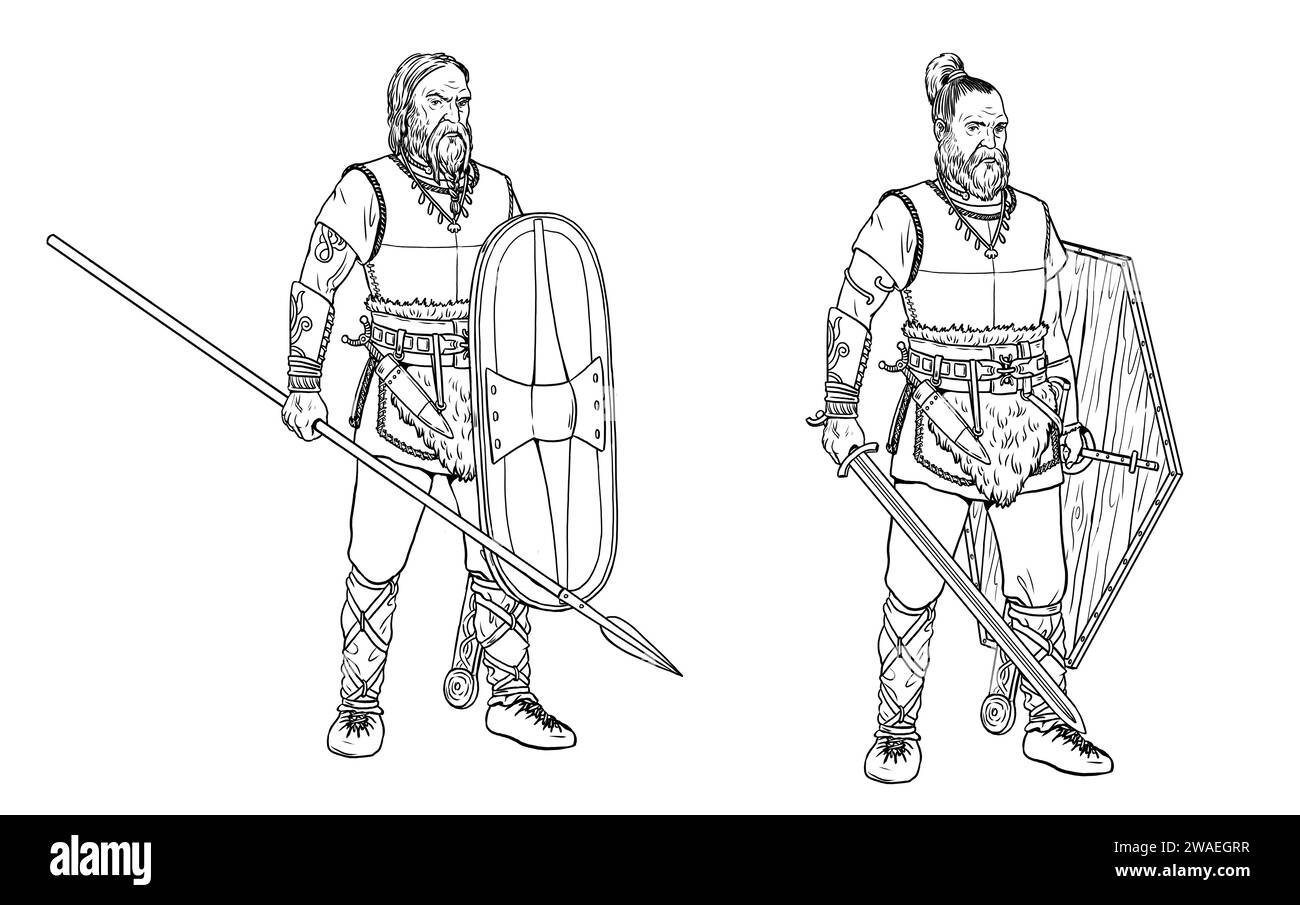 Celtic warriors. Ancient soldiers. Drawing with Roman enemies. Stock Photohttps://www.alamy.com/image-license-details/?v=1https://www.alamy.com/celtic-warriors-ancient-soldiers-drawing-with-roman-enemies-image591619611.html
Celtic warriors. Ancient soldiers. Drawing with Roman enemies. Stock Photohttps://www.alamy.com/image-license-details/?v=1https://www.alamy.com/celtic-warriors-ancient-soldiers-drawing-with-roman-enemies-image591619611.htmlRF2WAEGRR–Celtic warriors. Ancient soldiers. Drawing with Roman enemies.
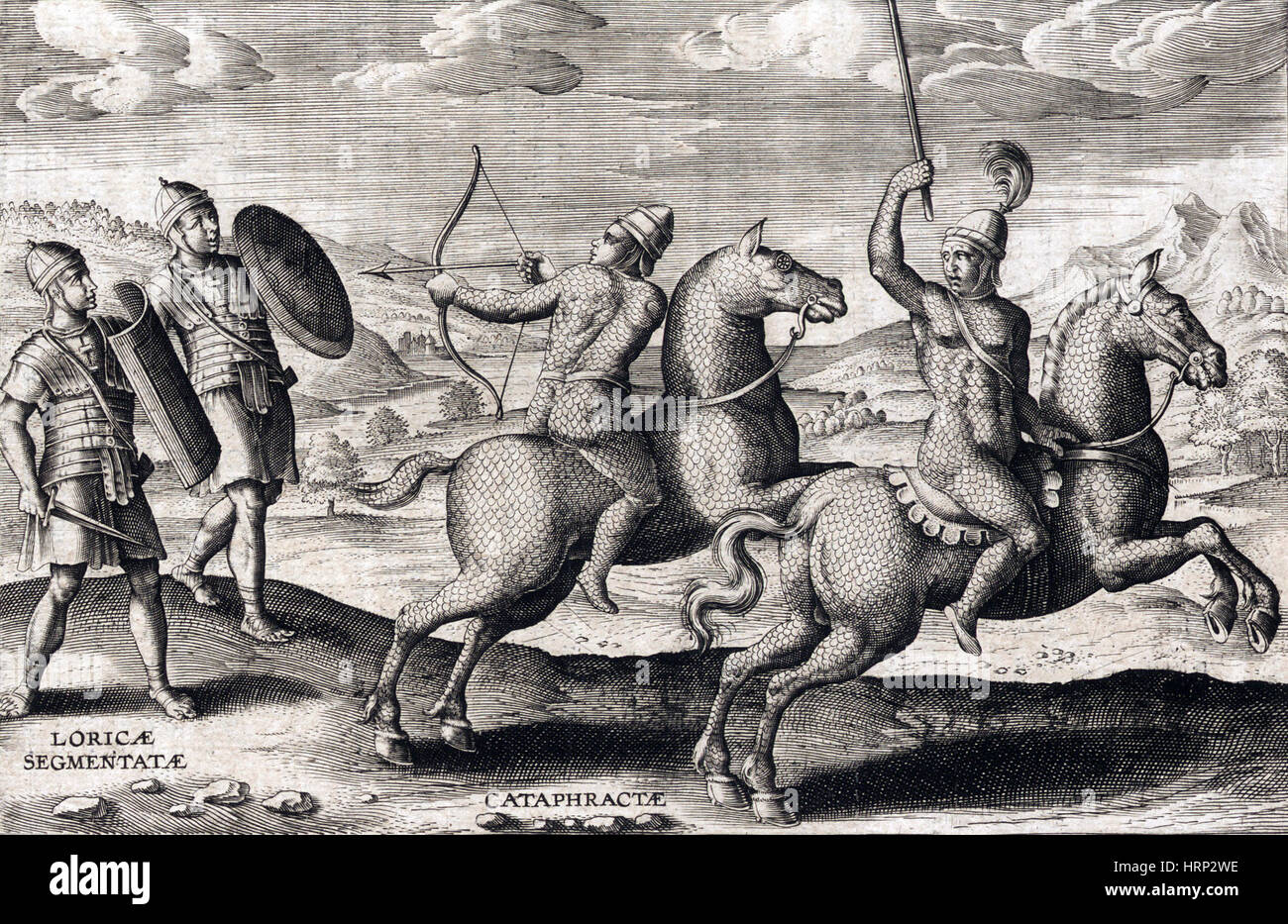 Armored Breastplates, Ancient Roman Warfare Stock Photohttps://www.alamy.com/image-license-details/?v=1https://www.alamy.com/stock-photo-armored-breastplates-ancient-roman-warfare-135094890.html
Armored Breastplates, Ancient Roman Warfare Stock Photohttps://www.alamy.com/image-license-details/?v=1https://www.alamy.com/stock-photo-armored-breastplates-ancient-roman-warfare-135094890.htmlRMHRP2WE–Armored Breastplates, Ancient Roman Warfare
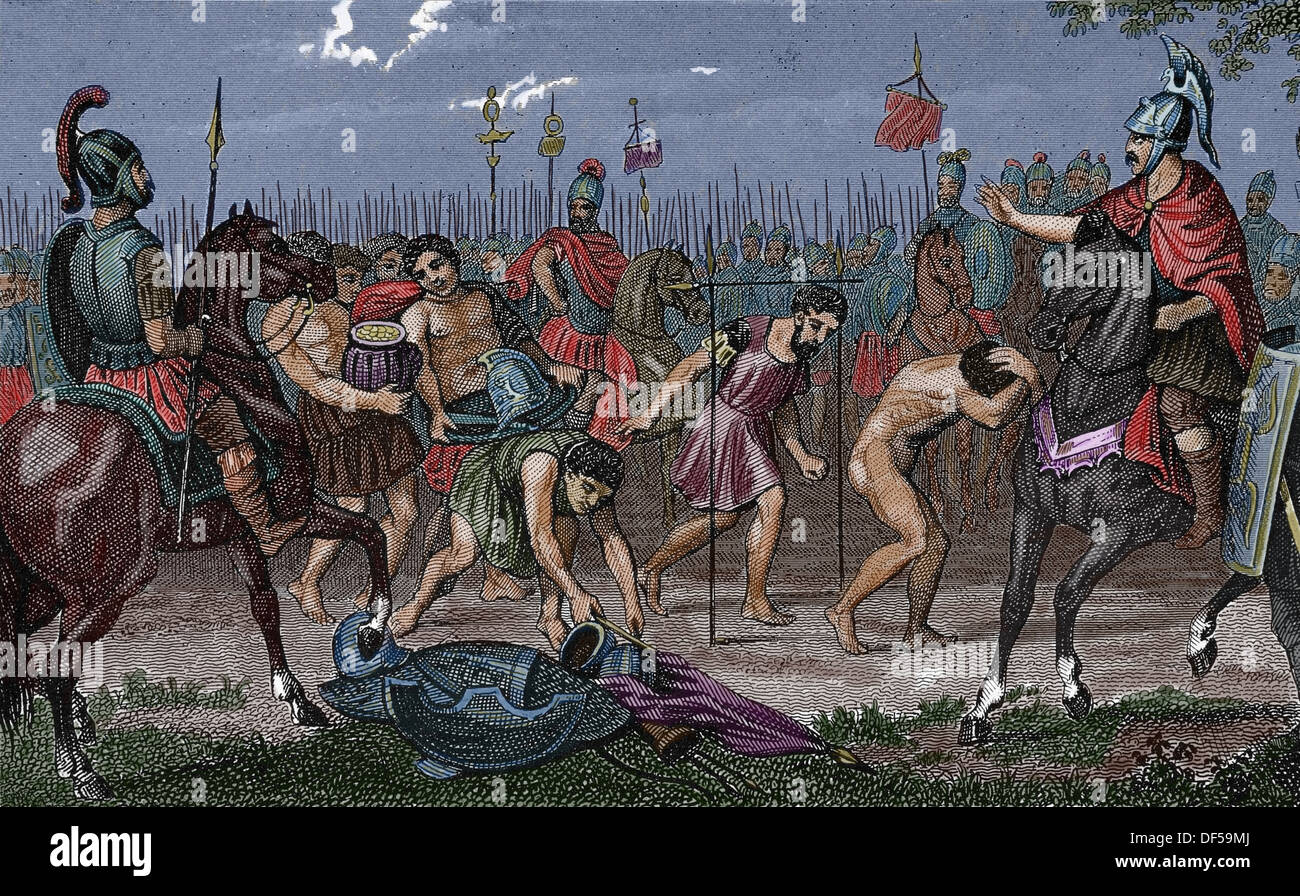 Roman Empire. Roman prisioners passing under the yoke. Engraving. (Later colouration) Stock Photohttps://www.alamy.com/image-license-details/?v=1https://www.alamy.com/roman-empire-roman-prisioners-passing-under-the-yoke-engraving-later-image60968338.html
Roman Empire. Roman prisioners passing under the yoke. Engraving. (Later colouration) Stock Photohttps://www.alamy.com/image-license-details/?v=1https://www.alamy.com/roman-empire-roman-prisioners-passing-under-the-yoke-engraving-later-image60968338.htmlRMDF59MJ–Roman Empire. Roman prisioners passing under the yoke. Engraving. (Later colouration)
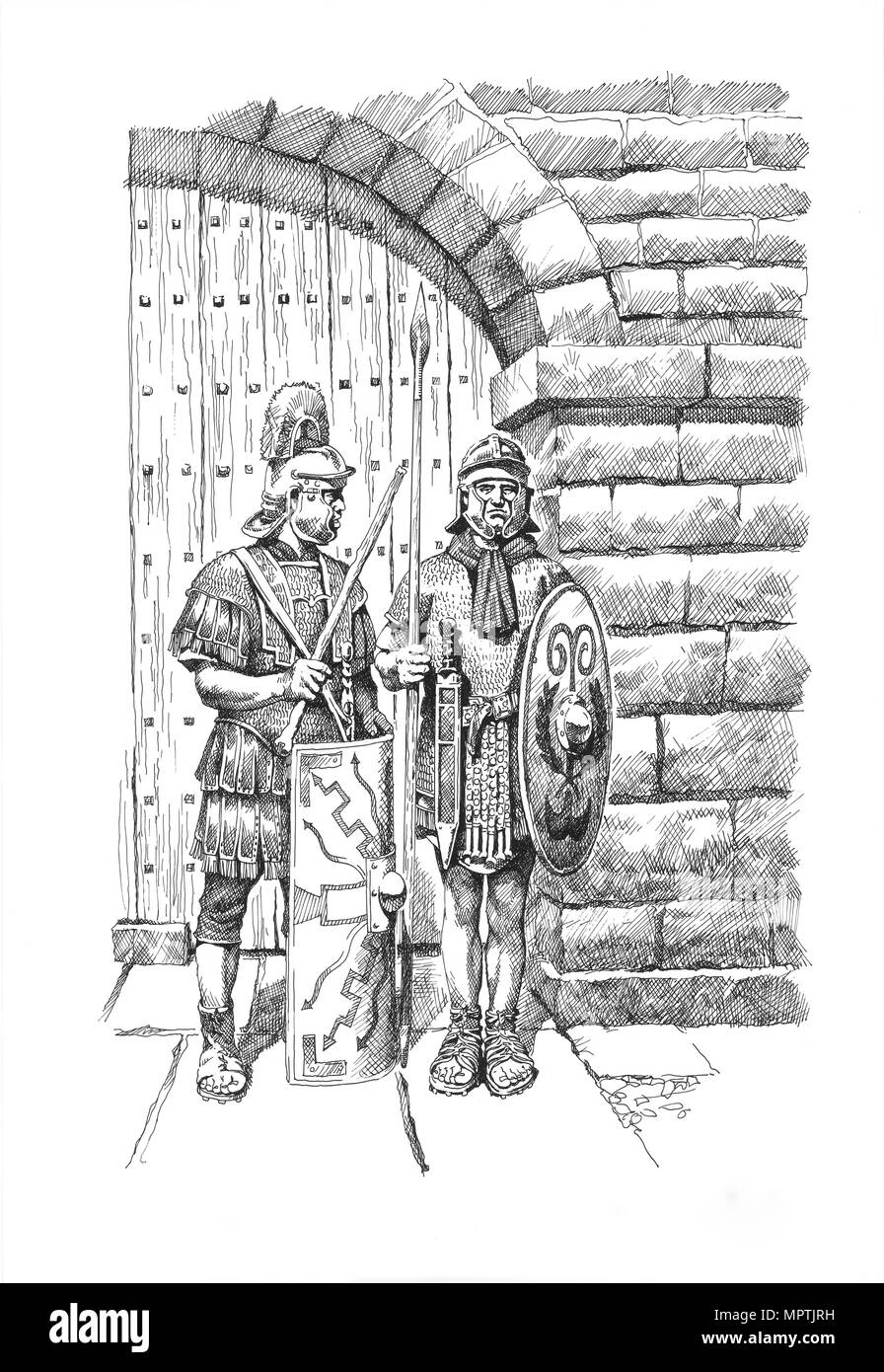 Roman soldiers on sentry duty on Hadrian's Wall, c1985-c2000. Artist: Philip Corke. Stock Photohttps://www.alamy.com/image-license-details/?v=1https://www.alamy.com/roman-soldiers-on-sentry-duty-on-hadrians-wall-c1985-c2000-artist-philip-corke-image186167733.html
Roman soldiers on sentry duty on Hadrian's Wall, c1985-c2000. Artist: Philip Corke. Stock Photohttps://www.alamy.com/image-license-details/?v=1https://www.alamy.com/roman-soldiers-on-sentry-duty-on-hadrians-wall-c1985-c2000-artist-philip-corke-image186167733.htmlRMMPTJRH–Roman soldiers on sentry duty on Hadrian's Wall, c1985-c2000. Artist: Philip Corke.
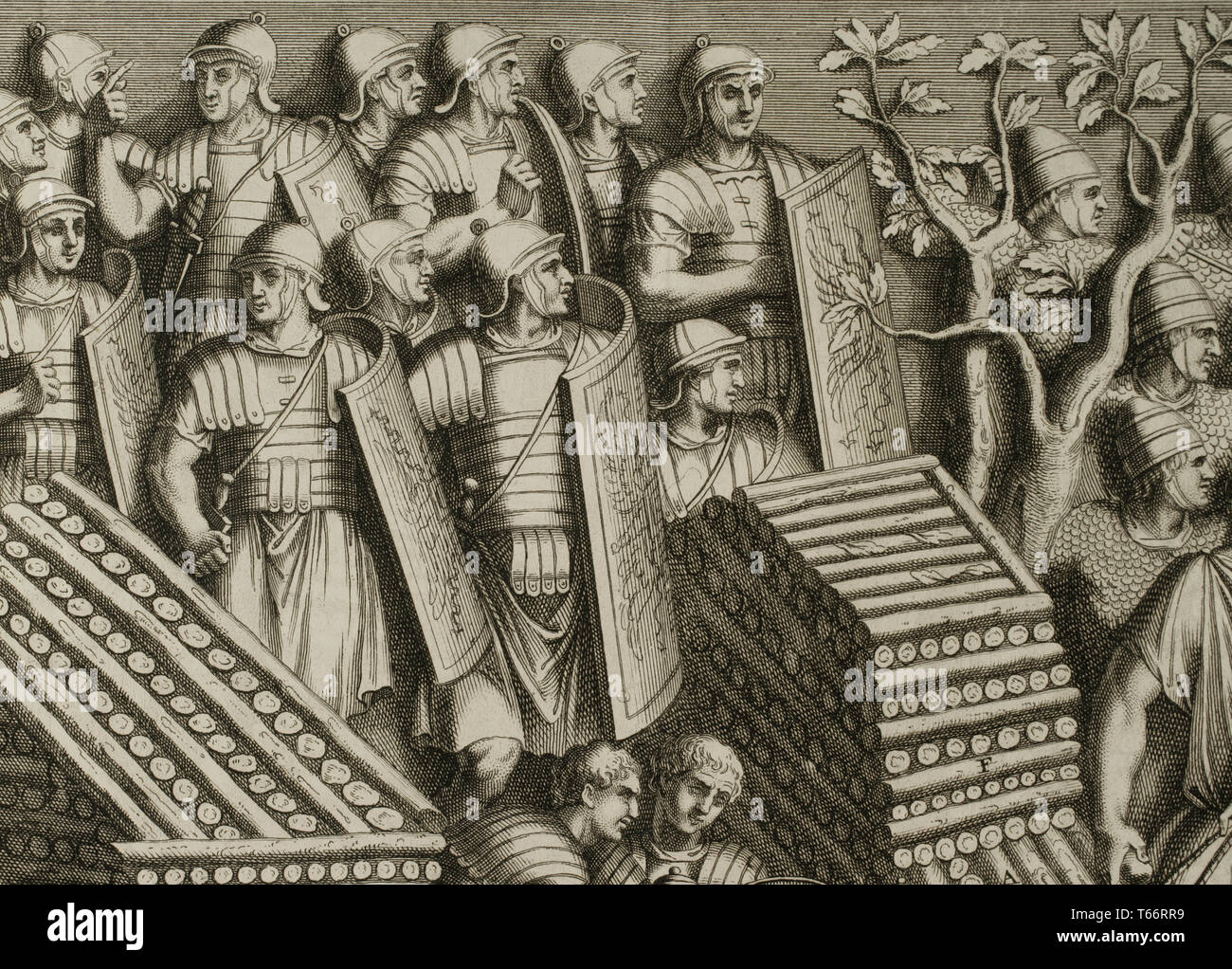 History by Polybius. Volume II. French edition translated from Greek by Dom Vincent Thuillier. Comments of Military Science enriched with critical and historical notes by M. De Folard. Paris, chez Pierre Gandouin, Julien-Michel Gandouin, Pierre-Francois Giffart and Nicolas-Pierre Armand, 1727. Printing by Jean-Baptiste Lamesle. Trajan's Dacian Wars. 2nd century AD. Engraving depicting reliefs from the Trajan Column. Scene of Roman army. Stock Photohttps://www.alamy.com/image-license-details/?v=1https://www.alamy.com/history-by-polybius-volume-ii-french-edition-translated-from-greek-by-dom-vincent-thuillier-comments-of-military-science-enriched-with-critical-and-historical-notes-by-m-de-folard-paris-chez-pierre-gandouin-julien-michel-gandouin-pierre-francois-giffart-and-nicolas-pierre-armand-1727-printing-by-jean-baptiste-lamesle-trajans-dacian-wars-2nd-century-ad-engraving-depicting-reliefs-from-the-trajan-column-scene-of-roman-army-image244783485.html
History by Polybius. Volume II. French edition translated from Greek by Dom Vincent Thuillier. Comments of Military Science enriched with critical and historical notes by M. De Folard. Paris, chez Pierre Gandouin, Julien-Michel Gandouin, Pierre-Francois Giffart and Nicolas-Pierre Armand, 1727. Printing by Jean-Baptiste Lamesle. Trajan's Dacian Wars. 2nd century AD. Engraving depicting reliefs from the Trajan Column. Scene of Roman army. Stock Photohttps://www.alamy.com/image-license-details/?v=1https://www.alamy.com/history-by-polybius-volume-ii-french-edition-translated-from-greek-by-dom-vincent-thuillier-comments-of-military-science-enriched-with-critical-and-historical-notes-by-m-de-folard-paris-chez-pierre-gandouin-julien-michel-gandouin-pierre-francois-giffart-and-nicolas-pierre-armand-1727-printing-by-jean-baptiste-lamesle-trajans-dacian-wars-2nd-century-ad-engraving-depicting-reliefs-from-the-trajan-column-scene-of-roman-army-image244783485.htmlRMT66RR9–History by Polybius. Volume II. French edition translated from Greek by Dom Vincent Thuillier. Comments of Military Science enriched with critical and historical notes by M. De Folard. Paris, chez Pierre Gandouin, Julien-Michel Gandouin, Pierre-Francois Giffart and Nicolas-Pierre Armand, 1727. Printing by Jean-Baptiste Lamesle. Trajan's Dacian Wars. 2nd century AD. Engraving depicting reliefs from the Trajan Column. Scene of Roman army.
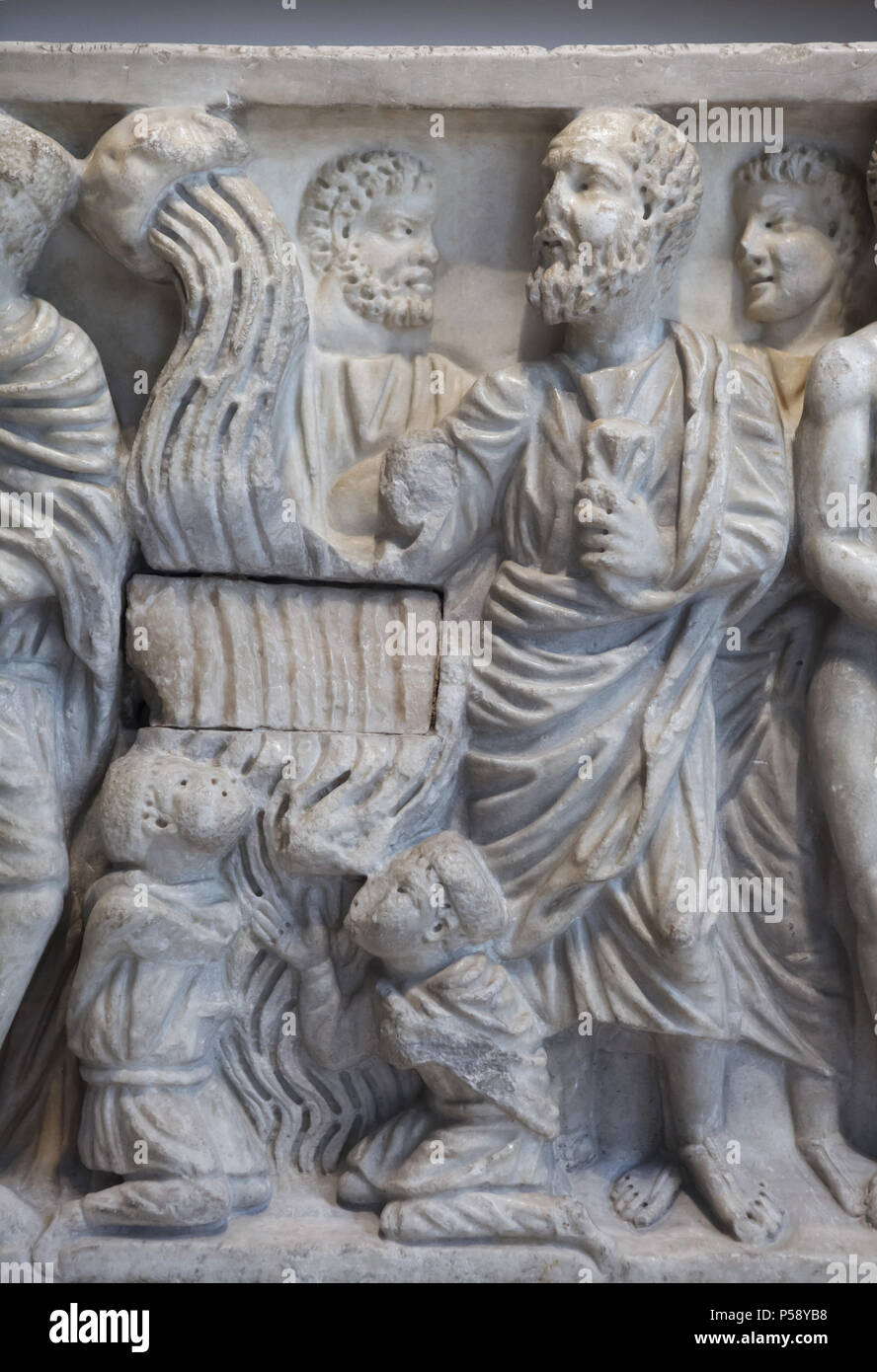 Miracle of the spring. Detail of the Roman marble sarcophagus dated from circa 310 AD from the Astorga Cathedral in León Province on display in the National Archaeological Museum (Museo Arqueológico Nacional) in Madrid, Spain. The Miracle of the spring is a story from the life of Saint Peter when in prison he causes water to well up so that he can baptize two soldiers. Stock Photohttps://www.alamy.com/image-license-details/?v=1https://www.alamy.com/miracle-of-the-spring-detail-of-the-roman-marble-sarcophagus-dated-from-circa-310-ad-from-the-astorga-cathedral-in-len-province-on-display-in-the-national-archaeological-museum-museo-arqueolgico-nacional-in-madrid-spain-the-miracle-of-the-spring-is-a-story-from-the-life-of-saint-peter-when-in-prison-he-causes-water-to-well-up-so-that-he-can-baptize-two-soldiers-image209794796.html
Miracle of the spring. Detail of the Roman marble sarcophagus dated from circa 310 AD from the Astorga Cathedral in León Province on display in the National Archaeological Museum (Museo Arqueológico Nacional) in Madrid, Spain. The Miracle of the spring is a story from the life of Saint Peter when in prison he causes water to well up so that he can baptize two soldiers. Stock Photohttps://www.alamy.com/image-license-details/?v=1https://www.alamy.com/miracle-of-the-spring-detail-of-the-roman-marble-sarcophagus-dated-from-circa-310-ad-from-the-astorga-cathedral-in-len-province-on-display-in-the-national-archaeological-museum-museo-arqueolgico-nacional-in-madrid-spain-the-miracle-of-the-spring-is-a-story-from-the-life-of-saint-peter-when-in-prison-he-causes-water-to-well-up-so-that-he-can-baptize-two-soldiers-image209794796.htmlRMP58YB8–Miracle of the spring. Detail of the Roman marble sarcophagus dated from circa 310 AD from the Astorga Cathedral in León Province on display in the National Archaeological Museum (Museo Arqueológico Nacional) in Madrid, Spain. The Miracle of the spring is a story from the life of Saint Peter when in prison he causes water to well up so that he can baptize two soldiers.
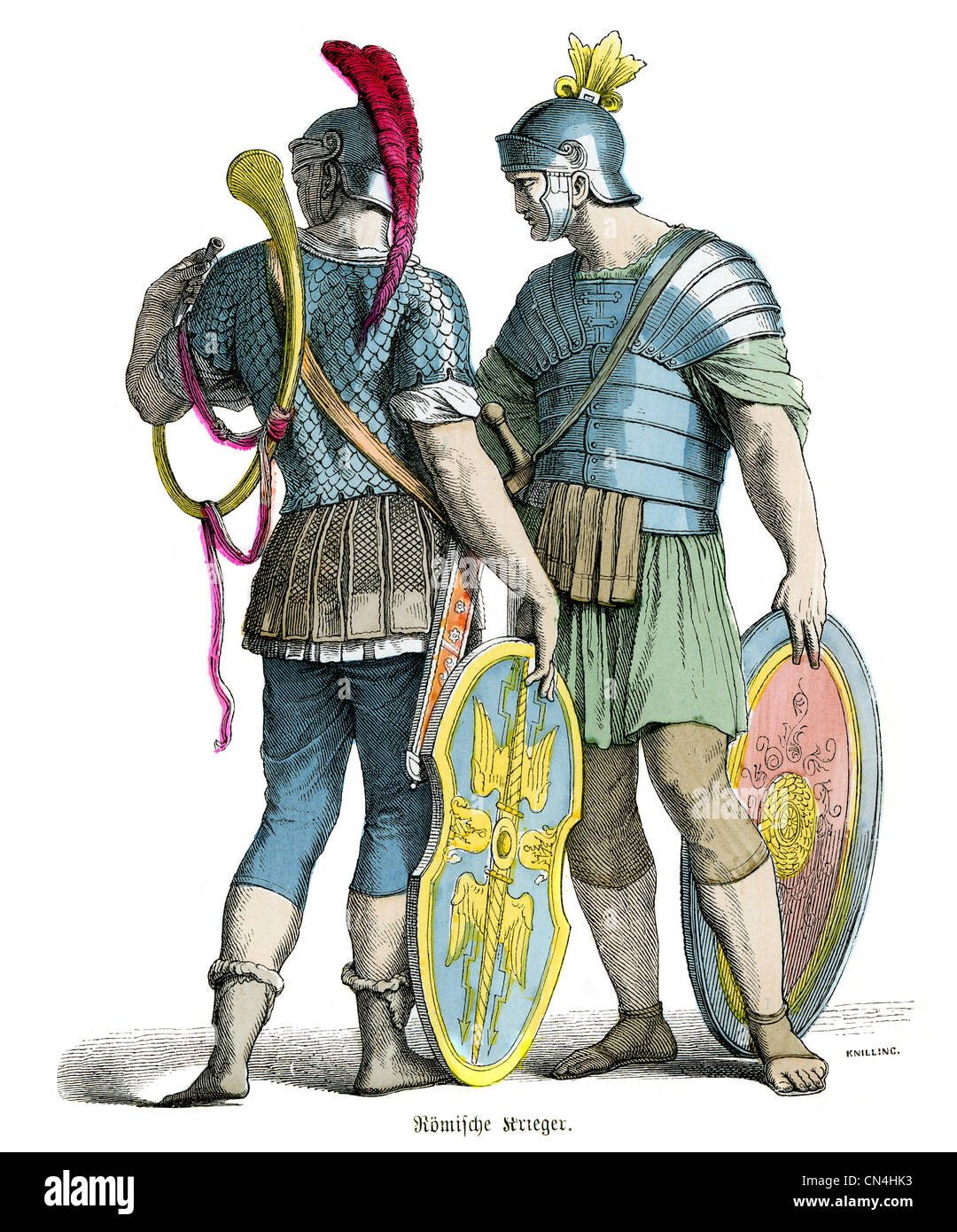 Ancient Roman soldiers Stock Photohttps://www.alamy.com/image-license-details/?v=1https://www.alamy.com/stock-photo-ancient-roman-soldiers-47430183.html
Ancient Roman soldiers Stock Photohttps://www.alamy.com/image-license-details/?v=1https://www.alamy.com/stock-photo-ancient-roman-soldiers-47430183.htmlRMCN4HK3–Ancient Roman soldiers
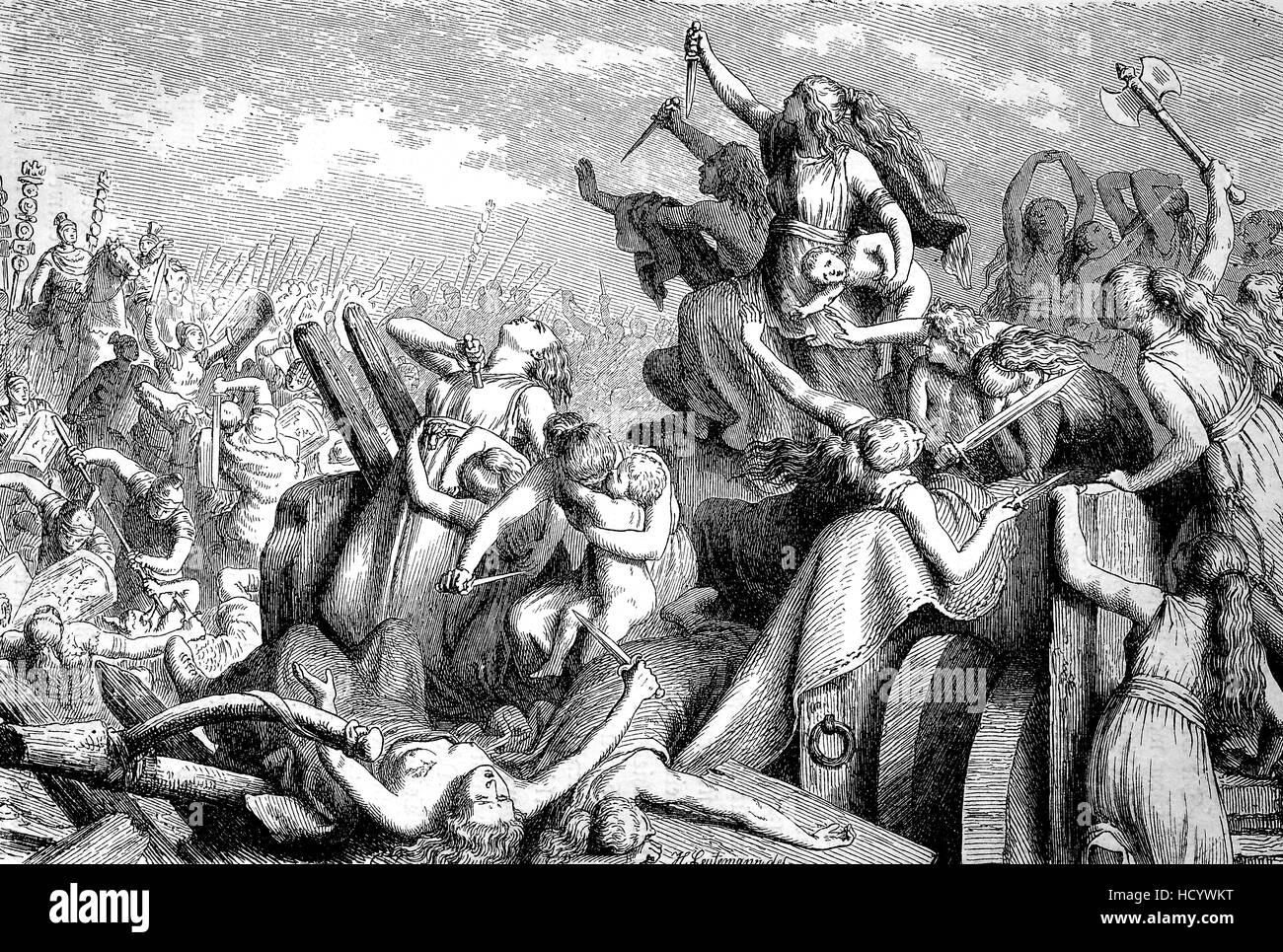 the ancient people ot the Cimbri and Teutones defend their Wagon fort against the roman soldiers, the story of the ancient Rome, roman Empire, Italy Stock Photohttps://www.alamy.com/image-license-details/?v=1https://www.alamy.com/stock-photo-the-ancient-people-ot-the-cimbri-and-teutones-defend-their-wagon-fort-128461308.html
the ancient people ot the Cimbri and Teutones defend their Wagon fort against the roman soldiers, the story of the ancient Rome, roman Empire, Italy Stock Photohttps://www.alamy.com/image-license-details/?v=1https://www.alamy.com/stock-photo-the-ancient-people-ot-the-cimbri-and-teutones-defend-their-wagon-fort-128461308.htmlRFHCYWKT–the ancient people ot the Cimbri and Teutones defend their Wagon fort against the roman soldiers, the story of the ancient Rome, roman Empire, Italy
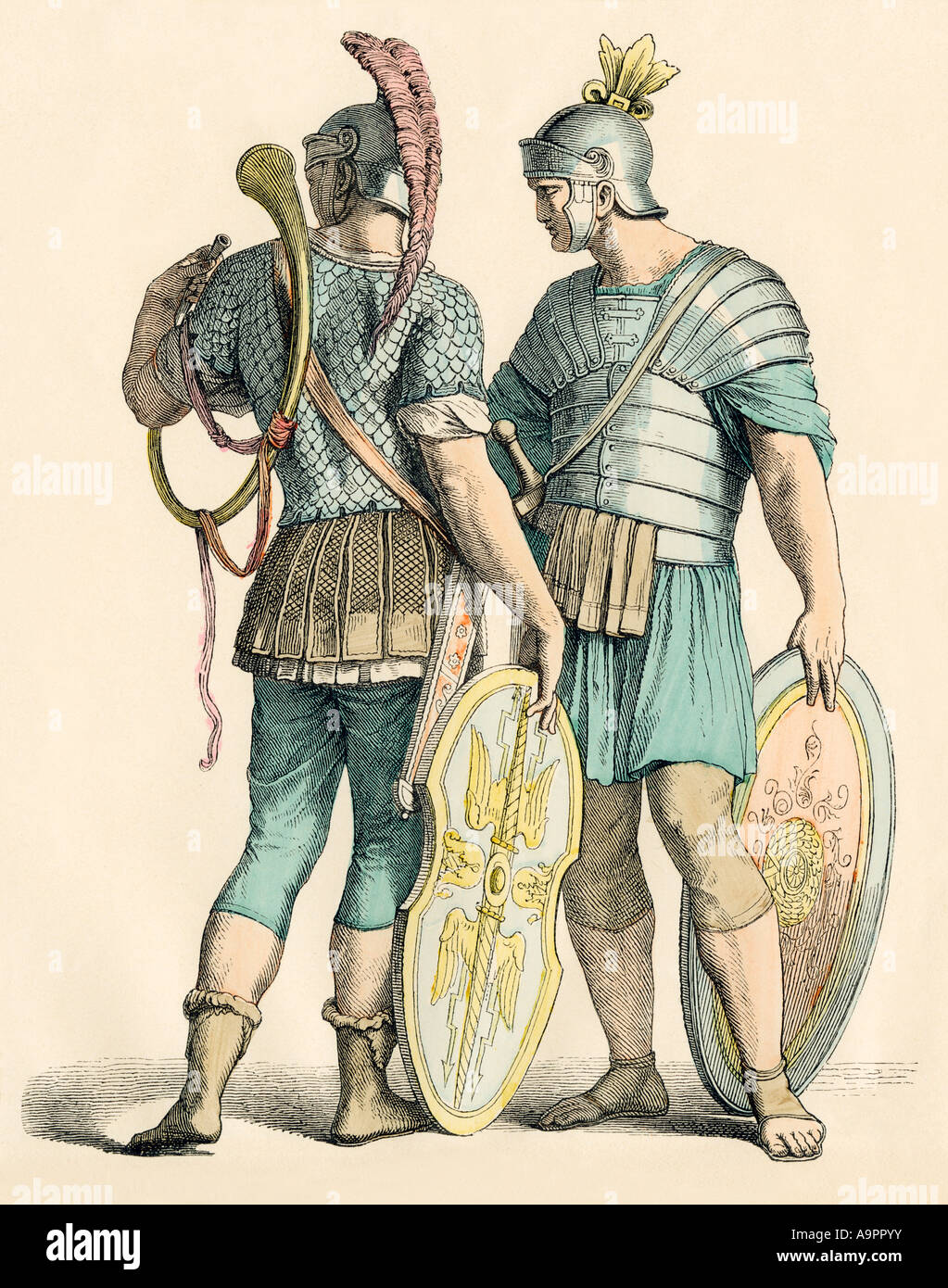 Roman soldiers. Hand-colored print Stock Photohttps://www.alamy.com/image-license-details/?v=1https://www.alamy.com/stock-photo-roman-soldiers-hand-colored-print-12420014.html
Roman soldiers. Hand-colored print Stock Photohttps://www.alamy.com/image-license-details/?v=1https://www.alamy.com/stock-photo-roman-soldiers-hand-colored-print-12420014.htmlRMA9PPYY–Roman soldiers. Hand-colored print
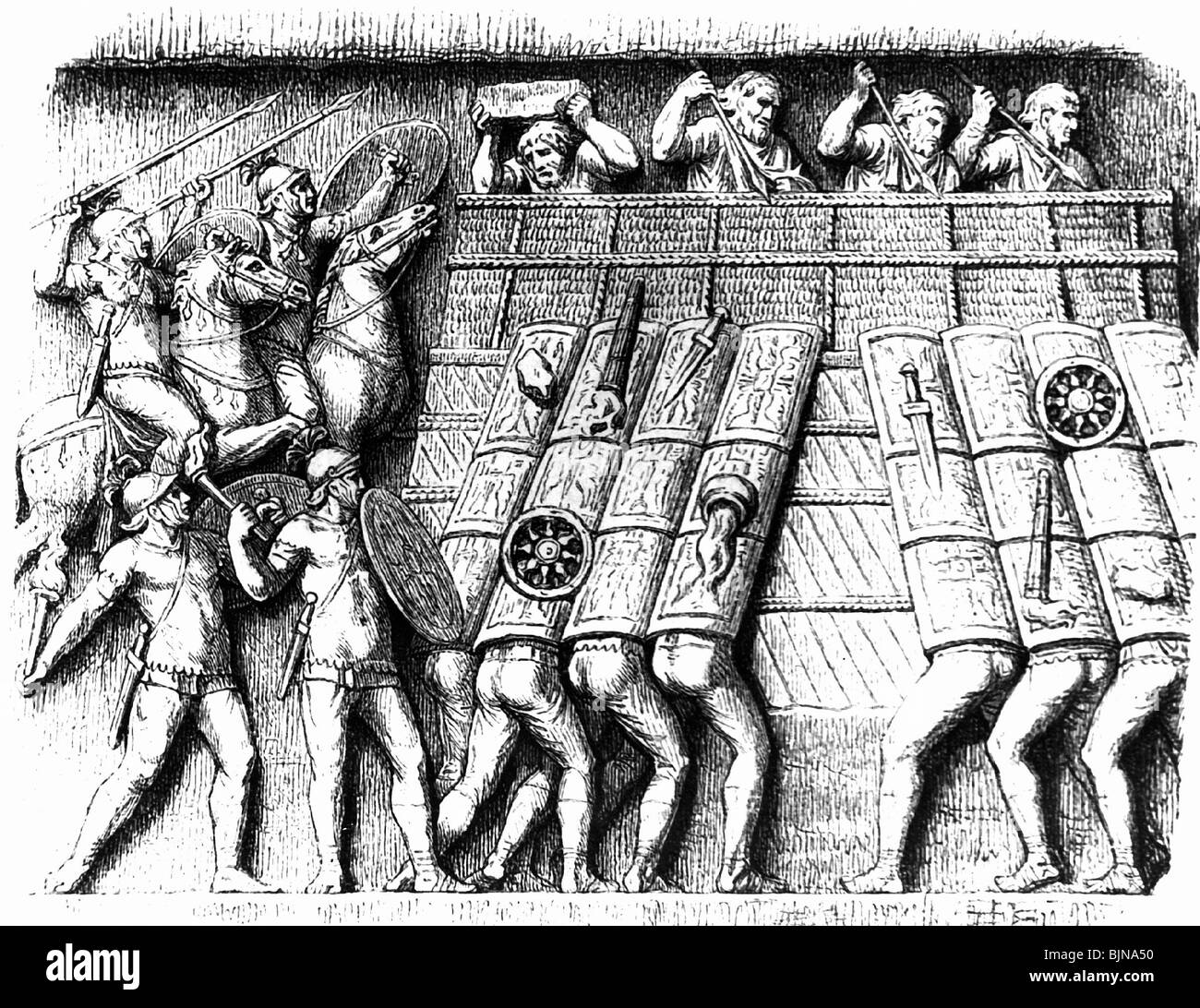 military, ancient world, Roman soldiers attacking a Germanic redoubt, drawing, 19th century, after a detail from the Column of Marcus Aurelius, Rome, 193 AD, historic, historical, legionnaire, legionaries, Roman Empire, formation, tortoise, turtle, testudo, soldiers, ancient world, people, Stock Photohttps://www.alamy.com/image-license-details/?v=1https://www.alamy.com/stock-photo-military-ancient-world-roman-soldiers-attacking-a-germanic-redoubt-28743148.html
military, ancient world, Roman soldiers attacking a Germanic redoubt, drawing, 19th century, after a detail from the Column of Marcus Aurelius, Rome, 193 AD, historic, historical, legionnaire, legionaries, Roman Empire, formation, tortoise, turtle, testudo, soldiers, ancient world, people, Stock Photohttps://www.alamy.com/image-license-details/?v=1https://www.alamy.com/stock-photo-military-ancient-world-roman-soldiers-attacking-a-germanic-redoubt-28743148.htmlRMBJNA50–military, ancient world, Roman soldiers attacking a Germanic redoubt, drawing, 19th century, after a detail from the Column of Marcus Aurelius, Rome, 193 AD, historic, historical, legionnaire, legionaries, Roman Empire, formation, tortoise, turtle, testudo, soldiers, ancient world, people,
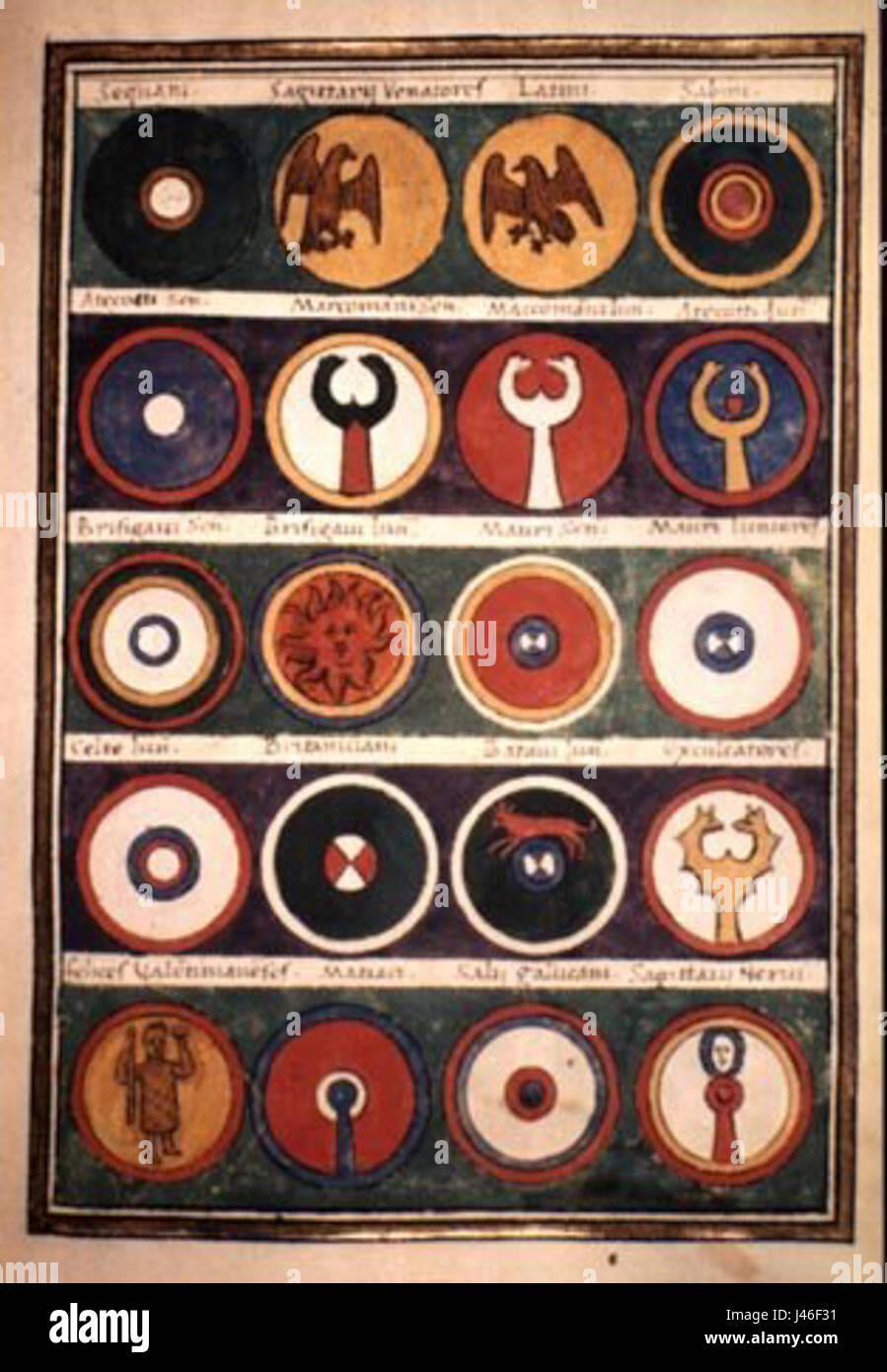 Notitia Dignitatum is an important ancient Roman document listing officials and military units. The reference to Magister Peditum refers to the officer in charge of infantry during the Roman Empire. Stock Photohttps://www.alamy.com/image-license-details/?v=1https://www.alamy.com/stock-photo-notitia-dignitatum-is-an-important-ancient-roman-document-listing-140285125.html
Notitia Dignitatum is an important ancient Roman document listing officials and military units. The reference to Magister Peditum refers to the officer in charge of infantry during the Roman Empire. Stock Photohttps://www.alamy.com/image-license-details/?v=1https://www.alamy.com/stock-photo-notitia-dignitatum-is-an-important-ancient-roman-document-listing-140285125.htmlRMJ46F31–Notitia Dignitatum is an important ancient Roman document listing officials and military units. The reference to Magister Peditum refers to the officer in charge of infantry during the Roman Empire.
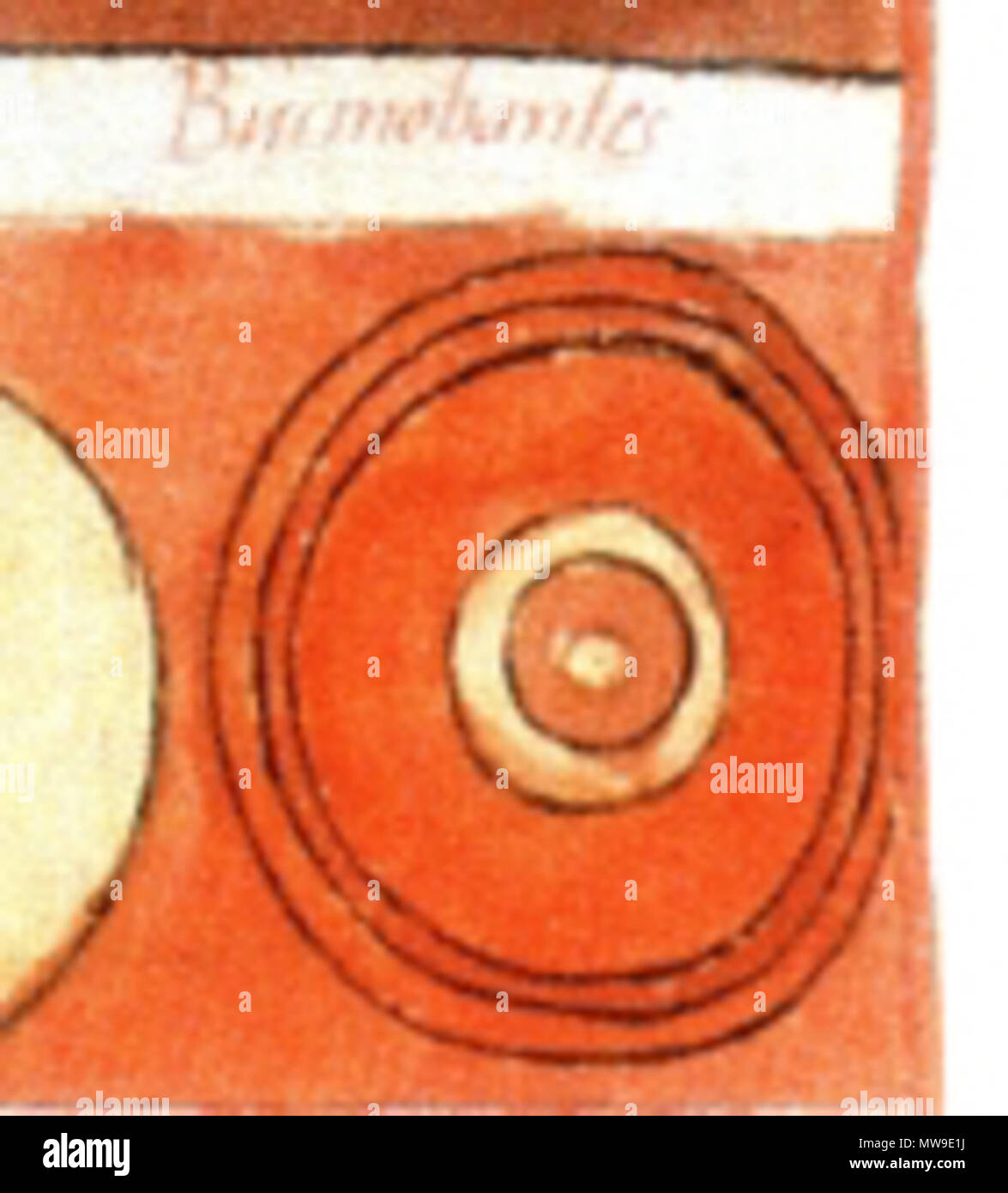 . Deutsch: Schildzeichen einer Abteilung Bucinobanten im spätrömischen Feldheer. English: Sign of the Bucinobantes on the shields of the ancient roman army. 2005. User:Bullenwächter 103 Bucinobantes Stock Photohttps://www.alamy.com/image-license-details/?v=1https://www.alamy.com/deutsch-schildzeichen-einer-abteilung-bucinobanten-im-sptrmischen-feldheer-english-sign-of-the-bucinobantes-on-the-shields-of-the-ancient-roman-army-2005-userbullenwchter-103-bucinobantes-image187678670.html
. Deutsch: Schildzeichen einer Abteilung Bucinobanten im spätrömischen Feldheer. English: Sign of the Bucinobantes on the shields of the ancient roman army. 2005. User:Bullenwächter 103 Bucinobantes Stock Photohttps://www.alamy.com/image-license-details/?v=1https://www.alamy.com/deutsch-schildzeichen-einer-abteilung-bucinobanten-im-sptrmischen-feldheer-english-sign-of-the-bucinobantes-on-the-shields-of-the-ancient-roman-army-2005-userbullenwchter-103-bucinobantes-image187678670.htmlRMMW9E1J–. Deutsch: Schildzeichen einer Abteilung Bucinobanten im spätrömischen Feldheer. English: Sign of the Bucinobantes on the shields of the ancient roman army. 2005. User:Bullenwächter 103 Bucinobantes
 Funerary stele of Caius Julius Helius. Last 20 years of the 1st century AD. Lunense marble - The shoemaker Caius Julius Helius owned a tomb near the ancient Via Triumphalis, where this funerary stele was discovered. Thanks to the dedication on the base, we know that his shop was located at Porta Fortinalis, near the Capitoline Hille. Judging by the two shoe shapes depicted in the upper area of the aedicule, the shoemaker must have specialised in making lace-up sandals, which were mostly worn by soldiers. The figure is depicted proudly: the features of his face are realistic and very expressive Stock Photohttps://www.alamy.com/image-license-details/?v=1https://www.alamy.com/funerary-stele-of-caius-julius-helius-last-20-years-of-the-1st-century-ad-lunense-marble-the-shoemaker-caius-julius-helius-owned-a-tomb-near-the-ancient-via-triumphalis-where-this-funerary-stele-was-discovered-thanks-to-the-dedication-on-the-base-we-know-that-his-shop-was-located-at-porta-fortinalis-near-the-capitoline-hille-judging-by-the-two-shoe-shapes-depicted-in-the-upper-area-of-the-aedicule-the-shoemaker-must-have-specialised-in-making-lace-up-sandals-which-were-mostly-worn-by-soldiers-the-figure-is-depicted-proudly-the-features-of-his-face-are-realistic-and-very-expressive-image576221424.html
Funerary stele of Caius Julius Helius. Last 20 years of the 1st century AD. Lunense marble - The shoemaker Caius Julius Helius owned a tomb near the ancient Via Triumphalis, where this funerary stele was discovered. Thanks to the dedication on the base, we know that his shop was located at Porta Fortinalis, near the Capitoline Hille. Judging by the two shoe shapes depicted in the upper area of the aedicule, the shoemaker must have specialised in making lace-up sandals, which were mostly worn by soldiers. The figure is depicted proudly: the features of his face are realistic and very expressive Stock Photohttps://www.alamy.com/image-license-details/?v=1https://www.alamy.com/funerary-stele-of-caius-julius-helius-last-20-years-of-the-1st-century-ad-lunense-marble-the-shoemaker-caius-julius-helius-owned-a-tomb-near-the-ancient-via-triumphalis-where-this-funerary-stele-was-discovered-thanks-to-the-dedication-on-the-base-we-know-that-his-shop-was-located-at-porta-fortinalis-near-the-capitoline-hille-judging-by-the-two-shoe-shapes-depicted-in-the-upper-area-of-the-aedicule-the-shoemaker-must-have-specialised-in-making-lace-up-sandals-which-were-mostly-worn-by-soldiers-the-figure-is-depicted-proudly-the-features-of-his-face-are-realistic-and-very-expressive-image576221424.htmlRM2TDD48G–Funerary stele of Caius Julius Helius. Last 20 years of the 1st century AD. Lunense marble - The shoemaker Caius Julius Helius owned a tomb near the ancient Via Triumphalis, where this funerary stele was discovered. Thanks to the dedication on the base, we know that his shop was located at Porta Fortinalis, near the Capitoline Hille. Judging by the two shoe shapes depicted in the upper area of the aedicule, the shoemaker must have specialised in making lace-up sandals, which were mostly worn by soldiers. The figure is depicted proudly: the features of his face are realistic and very expressive
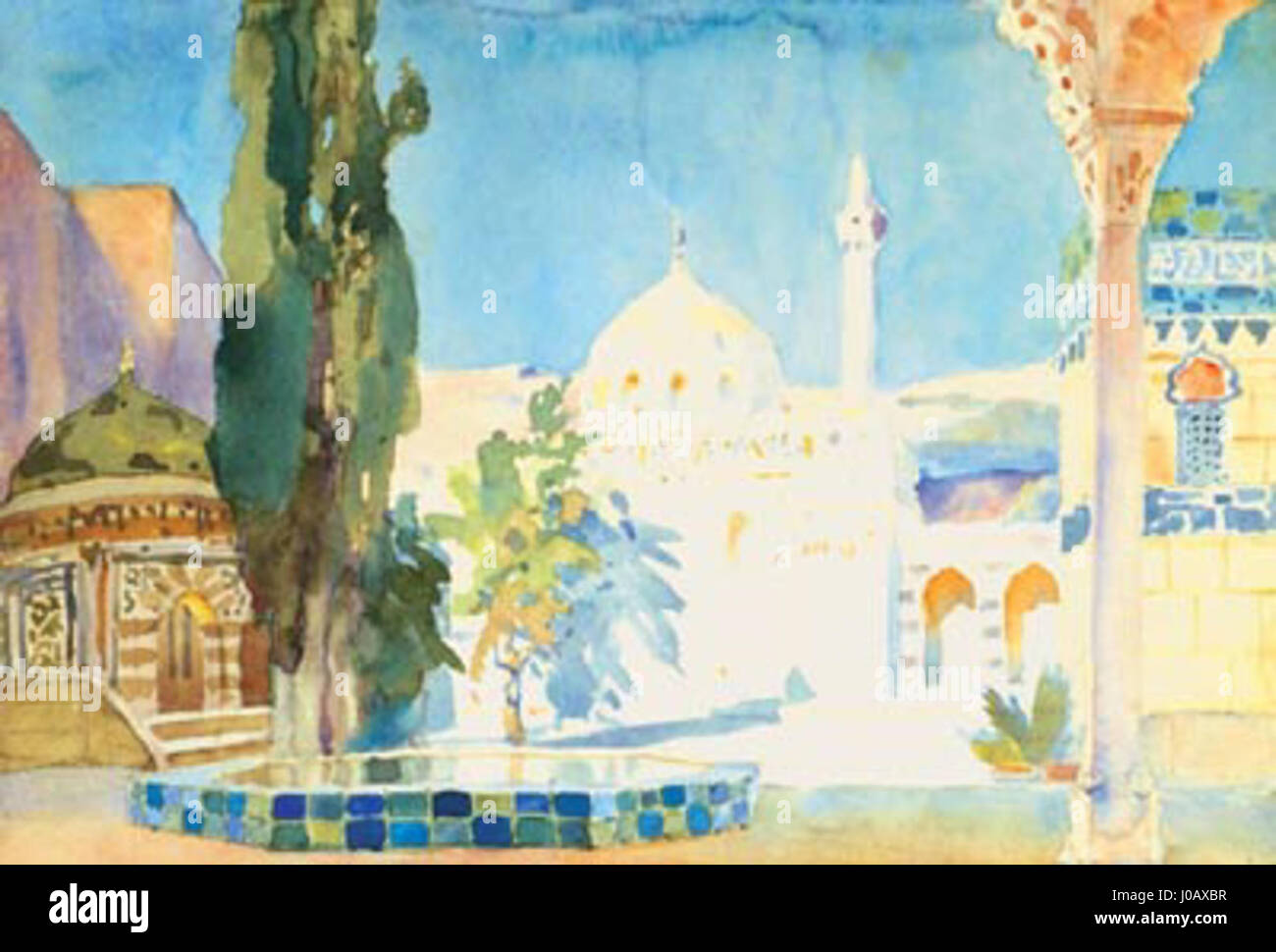 The painting 'Roman Battle' from 1913 illustrates a historical battle scene set in ancient Rome. The artwork depicts Roman soldiers in combat, emphasizing the military strategy and valor of the ancient warriors. Stock Photohttps://www.alamy.com/image-license-details/?v=1https://www.alamy.com/stock-photo-the-painting-roman-battle-from-1913-illustrates-a-historical-battle-137923179.html
The painting 'Roman Battle' from 1913 illustrates a historical battle scene set in ancient Rome. The artwork depicts Roman soldiers in combat, emphasizing the military strategy and valor of the ancient warriors. Stock Photohttps://www.alamy.com/image-license-details/?v=1https://www.alamy.com/stock-photo-the-painting-roman-battle-from-1913-illustrates-a-historical-battle-137923179.htmlRMJ0AXBR–The painting 'Roman Battle' from 1913 illustrates a historical battle scene set in ancient Rome. The artwork depicts Roman soldiers in combat, emphasizing the military strategy and valor of the ancient warriors.
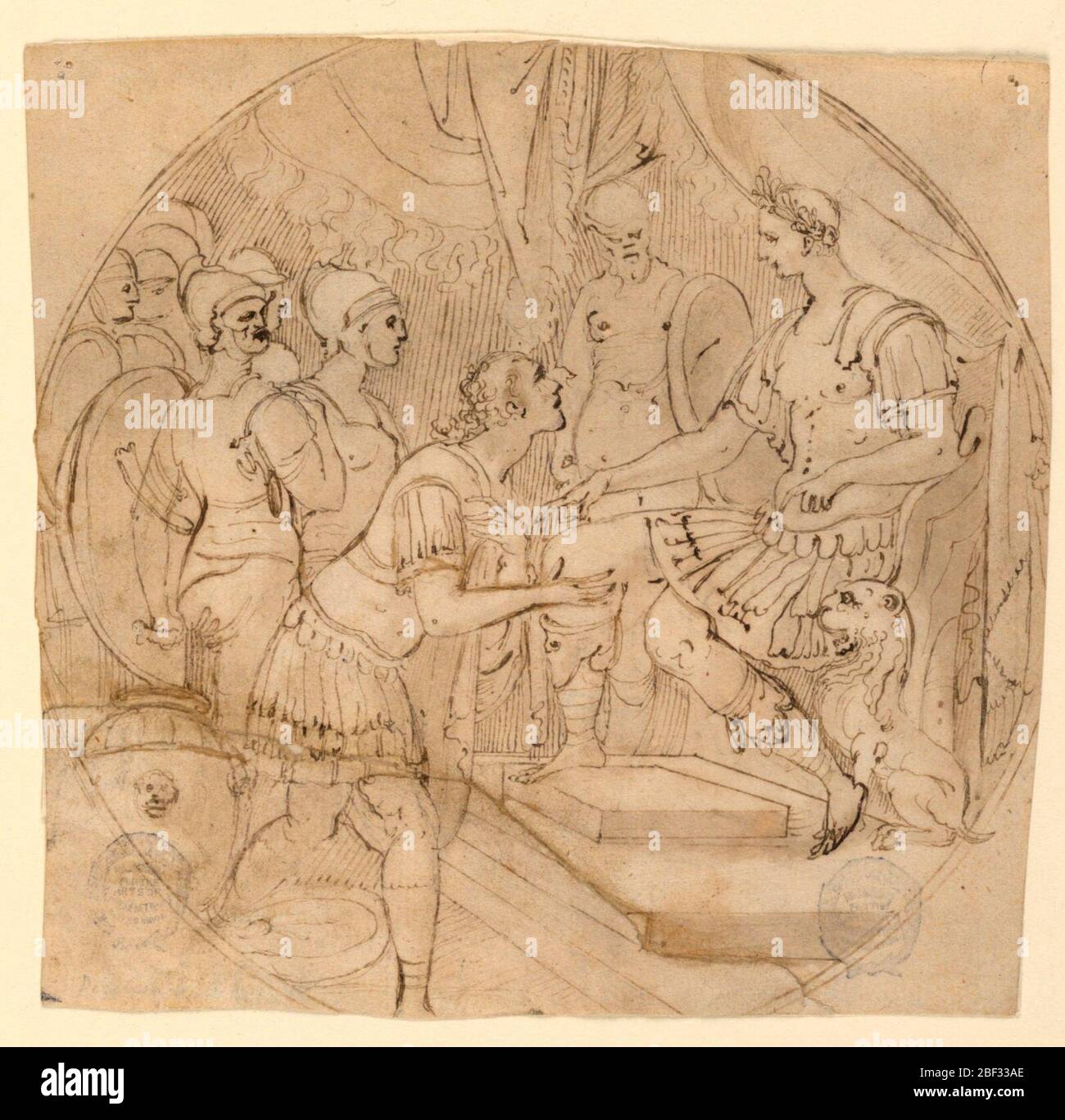 Design for a Plate or a Tondo Soldiers supplicant before a Roman General. Stock Photohttps://www.alamy.com/image-license-details/?v=1https://www.alamy.com/design-for-a-plate-or-a-tondo-soldiers-supplicant-before-a-roman-general-image353495702.html
Design for a Plate or a Tondo Soldiers supplicant before a Roman General. Stock Photohttps://www.alamy.com/image-license-details/?v=1https://www.alamy.com/design-for-a-plate-or-a-tondo-soldiers-supplicant-before-a-roman-general-image353495702.htmlRM2BF33AE–Design for a Plate or a Tondo Soldiers supplicant before a Roman General.
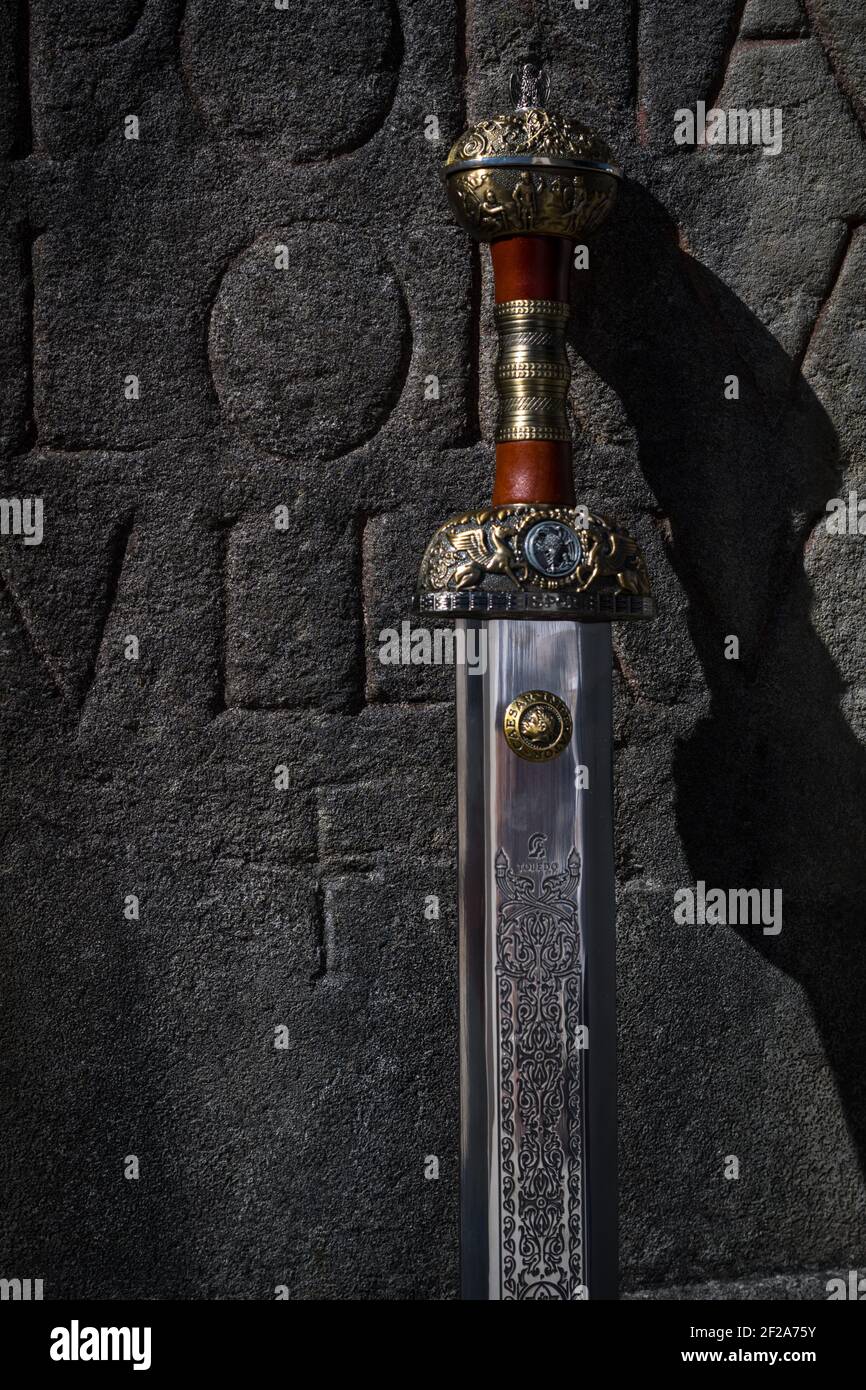 Roman History Empire Rome Stock Photohttps://www.alamy.com/image-license-details/?v=1https://www.alamy.com/roman-history-empire-rome-image414503319.html
Roman History Empire Rome Stock Photohttps://www.alamy.com/image-license-details/?v=1https://www.alamy.com/roman-history-empire-rome-image414503319.htmlRF2F2A75Y–Roman History Empire Rome
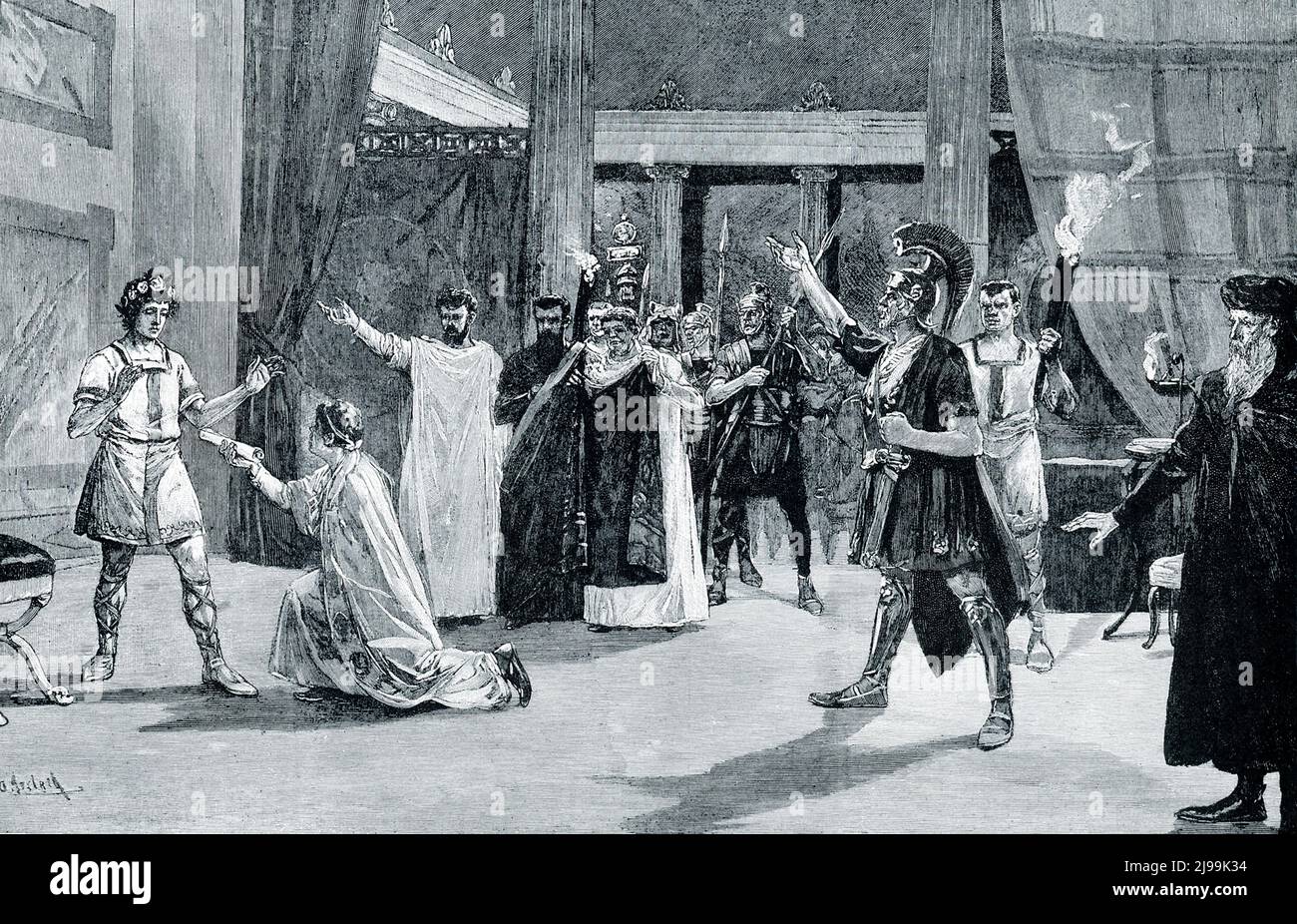 The 1906 caption reads: “JULIAN DECLARED EMPEROR BY HIS SOLDIERS AT PARIS.—This takes us back to the time when France or Gaul was still Roman. The young general Julian had so successfully defended Gaul against the barbarian Franks, that when the jealous Roman Emperor would have degraded him, his soldiers declared him Emperor in place of his rival. He marched off to fight for his title in Italy, leaving Gaul to its ravagers.”I n 360 AD, Julian was proclaimed emperor by his soldiers at Lutetia (present-day Paris), sparking a civil war with his father, the emperor Constantius II. However, Constan Stock Photohttps://www.alamy.com/image-license-details/?v=1https://www.alamy.com/the-1906-caption-reads-julian-declared-emperor-by-his-soldiers-at-paristhis-takes-us-back-to-the-time-when-france-or-gaul-was-still-roman-the-young-general-julian-had-so-successfully-defended-gaul-against-the-barbarian-franks-that-when-the-jealous-roman-emperor-would-have-degraded-him-his-soldiers-declared-him-emperor-in-place-of-his-rival-he-marched-off-to-fight-for-his-title-in-italy-leaving-gaul-to-its-ravagersi-n-360-ad-julian-was-proclaimed-emperor-by-his-soldiers-at-lutetia-present-day-paris-sparking-a-civil-war-with-his-father-the-emperor-constantius-ii-however-constan-image470424392.html
The 1906 caption reads: “JULIAN DECLARED EMPEROR BY HIS SOLDIERS AT PARIS.—This takes us back to the time when France or Gaul was still Roman. The young general Julian had so successfully defended Gaul against the barbarian Franks, that when the jealous Roman Emperor would have degraded him, his soldiers declared him Emperor in place of his rival. He marched off to fight for his title in Italy, leaving Gaul to its ravagers.”I n 360 AD, Julian was proclaimed emperor by his soldiers at Lutetia (present-day Paris), sparking a civil war with his father, the emperor Constantius II. However, Constan Stock Photohttps://www.alamy.com/image-license-details/?v=1https://www.alamy.com/the-1906-caption-reads-julian-declared-emperor-by-his-soldiers-at-paristhis-takes-us-back-to-the-time-when-france-or-gaul-was-still-roman-the-young-general-julian-had-so-successfully-defended-gaul-against-the-barbarian-franks-that-when-the-jealous-roman-emperor-would-have-degraded-him-his-soldiers-declared-him-emperor-in-place-of-his-rival-he-marched-off-to-fight-for-his-title-in-italy-leaving-gaul-to-its-ravagersi-n-360-ad-julian-was-proclaimed-emperor-by-his-soldiers-at-lutetia-present-day-paris-sparking-a-civil-war-with-his-father-the-emperor-constantius-ii-however-constan-image470424392.htmlRF2J99K34–The 1906 caption reads: “JULIAN DECLARED EMPEROR BY HIS SOLDIERS AT PARIS.—This takes us back to the time when France or Gaul was still Roman. The young general Julian had so successfully defended Gaul against the barbarian Franks, that when the jealous Roman Emperor would have degraded him, his soldiers declared him Emperor in place of his rival. He marched off to fight for his title in Italy, leaving Gaul to its ravagers.”I n 360 AD, Julian was proclaimed emperor by his soldiers at Lutetia (present-day Paris), sparking a civil war with his father, the emperor Constantius II. However, Constan
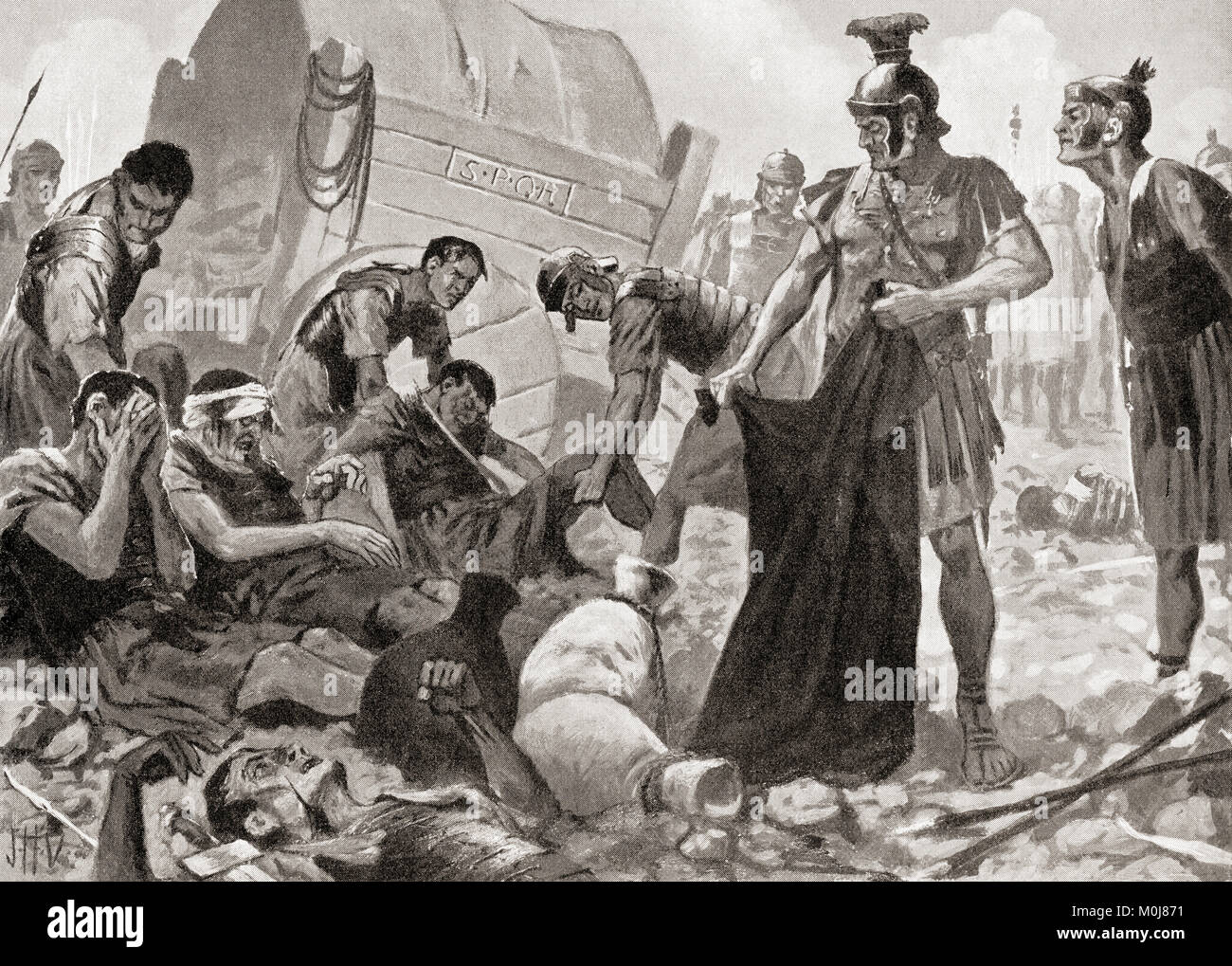 During a battle against the Dacians near Tapae, such a large number of soldiers were wounded that the bandages gave out, legend tells that the Emperor Trajan tore his own clothing to pieces to make bandages. Trajan, 53 – 117 AD. Roman emperor. After the painting by J.H. Valda, d. 1941. From Hutchinson's History of the Nations, published 1915. Stock Photohttps://www.alamy.com/image-license-details/?v=1https://www.alamy.com/stock-photo-during-a-battle-against-the-dacians-near-tapae-such-a-large-number-172505285.html
During a battle against the Dacians near Tapae, such a large number of soldiers were wounded that the bandages gave out, legend tells that the Emperor Trajan tore his own clothing to pieces to make bandages. Trajan, 53 – 117 AD. Roman emperor. After the painting by J.H. Valda, d. 1941. From Hutchinson's History of the Nations, published 1915. Stock Photohttps://www.alamy.com/image-license-details/?v=1https://www.alamy.com/stock-photo-during-a-battle-against-the-dacians-near-tapae-such-a-large-number-172505285.htmlRMM0J871–During a battle against the Dacians near Tapae, such a large number of soldiers were wounded that the bandages gave out, legend tells that the Emperor Trajan tore his own clothing to pieces to make bandages. Trajan, 53 – 117 AD. Roman emperor. After the painting by J.H. Valda, d. 1941. From Hutchinson's History of the Nations, published 1915.
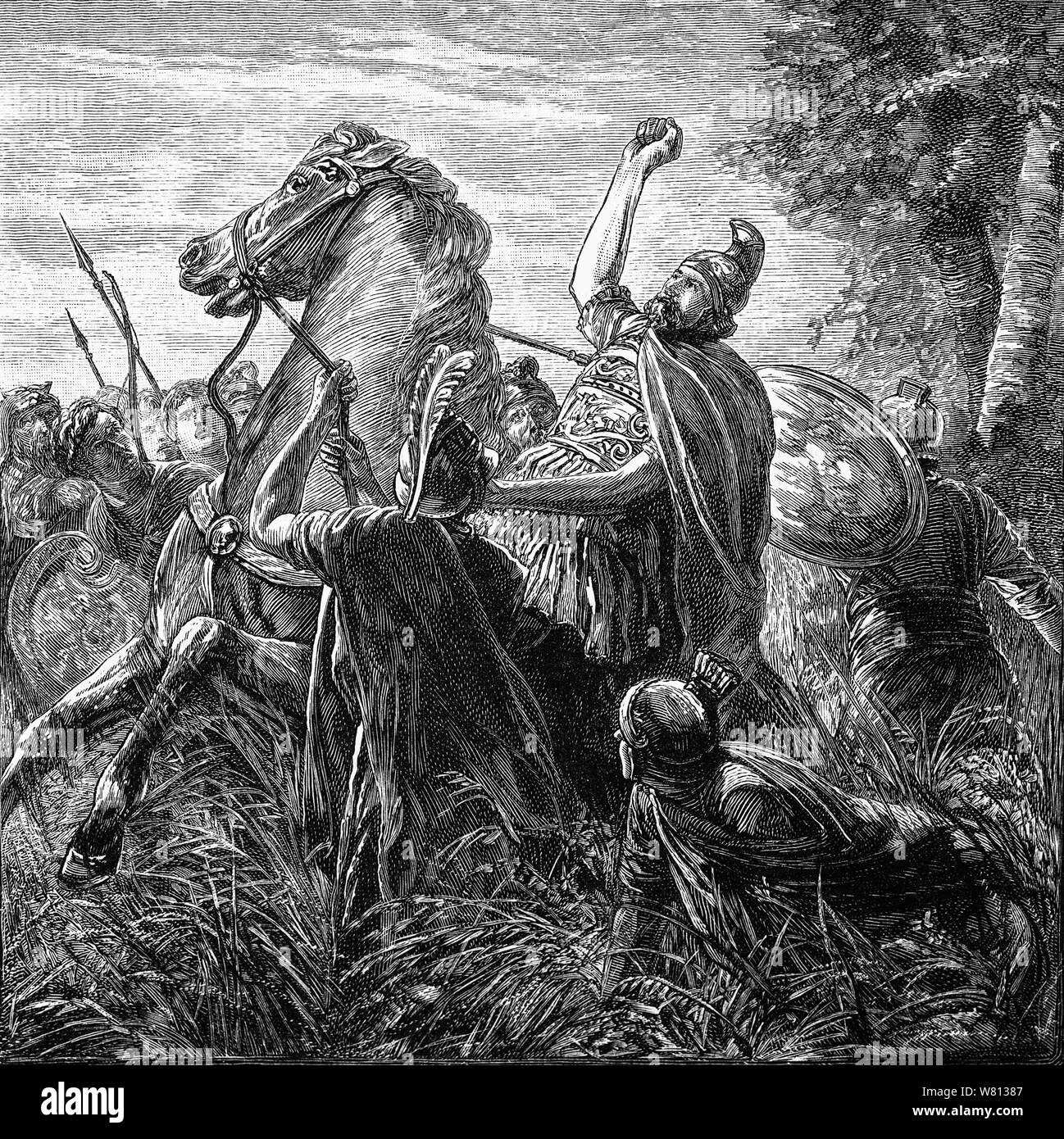 Marcus Licinius Crassus (115 BC – 53 BCE) was a Roman general, Politician and political and financial patron of Julius Caesar playing a key role in the transformation of the Roman Republic into the Roman Empire. Appointed military commander under Lucius Cornelius Sulla Crassus was appointed as the Governor of Roman Syria and used it as base for a military campaign against the Parthian Empire, but the campaign was a failure. The Parthian general Surena, proposed a truce, but at the meeting, a Parthian pulled at Crassus' reins, sparking violence resulting in the death of Crassus. Stock Photohttps://www.alamy.com/image-license-details/?v=1https://www.alamy.com/marcus-licinius-crassus-115-bc-53-bce-was-a-roman-general-politician-and-political-and-financial-patron-of-julius-caesar-playing-a-key-role-in-the-transformation-of-the-roman-republic-into-the-roman-empire-appointed-military-commander-under-lucius-cornelius-sulla-crassus-was-appointed-as-the-governor-of-roman-syria-and-used-it-as-base-for-a-military-campaign-against-the-parthian-empire-but-the-campaign-was-a-failure-the-parthian-general-surena-proposed-a-truce-but-at-the-meeting-a-parthian-pulled-at-crassus-reins-sparking-violence-resulting-in-the-death-of-crassus-image263097303.html
Marcus Licinius Crassus (115 BC – 53 BCE) was a Roman general, Politician and political and financial patron of Julius Caesar playing a key role in the transformation of the Roman Republic into the Roman Empire. Appointed military commander under Lucius Cornelius Sulla Crassus was appointed as the Governor of Roman Syria and used it as base for a military campaign against the Parthian Empire, but the campaign was a failure. The Parthian general Surena, proposed a truce, but at the meeting, a Parthian pulled at Crassus' reins, sparking violence resulting in the death of Crassus. Stock Photohttps://www.alamy.com/image-license-details/?v=1https://www.alamy.com/marcus-licinius-crassus-115-bc-53-bce-was-a-roman-general-politician-and-political-and-financial-patron-of-julius-caesar-playing-a-key-role-in-the-transformation-of-the-roman-republic-into-the-roman-empire-appointed-military-commander-under-lucius-cornelius-sulla-crassus-was-appointed-as-the-governor-of-roman-syria-and-used-it-as-base-for-a-military-campaign-against-the-parthian-empire-but-the-campaign-was-a-failure-the-parthian-general-surena-proposed-a-truce-but-at-the-meeting-a-parthian-pulled-at-crassus-reins-sparking-violence-resulting-in-the-death-of-crassus-image263097303.htmlRMW81387–Marcus Licinius Crassus (115 BC – 53 BCE) was a Roman general, Politician and political and financial patron of Julius Caesar playing a key role in the transformation of the Roman Republic into the Roman Empire. Appointed military commander under Lucius Cornelius Sulla Crassus was appointed as the Governor of Roman Syria and used it as base for a military campaign against the Parthian Empire, but the campaign was a failure. The Parthian general Surena, proposed a truce, but at the meeting, a Parthian pulled at Crassus' reins, sparking violence resulting in the death of Crassus.
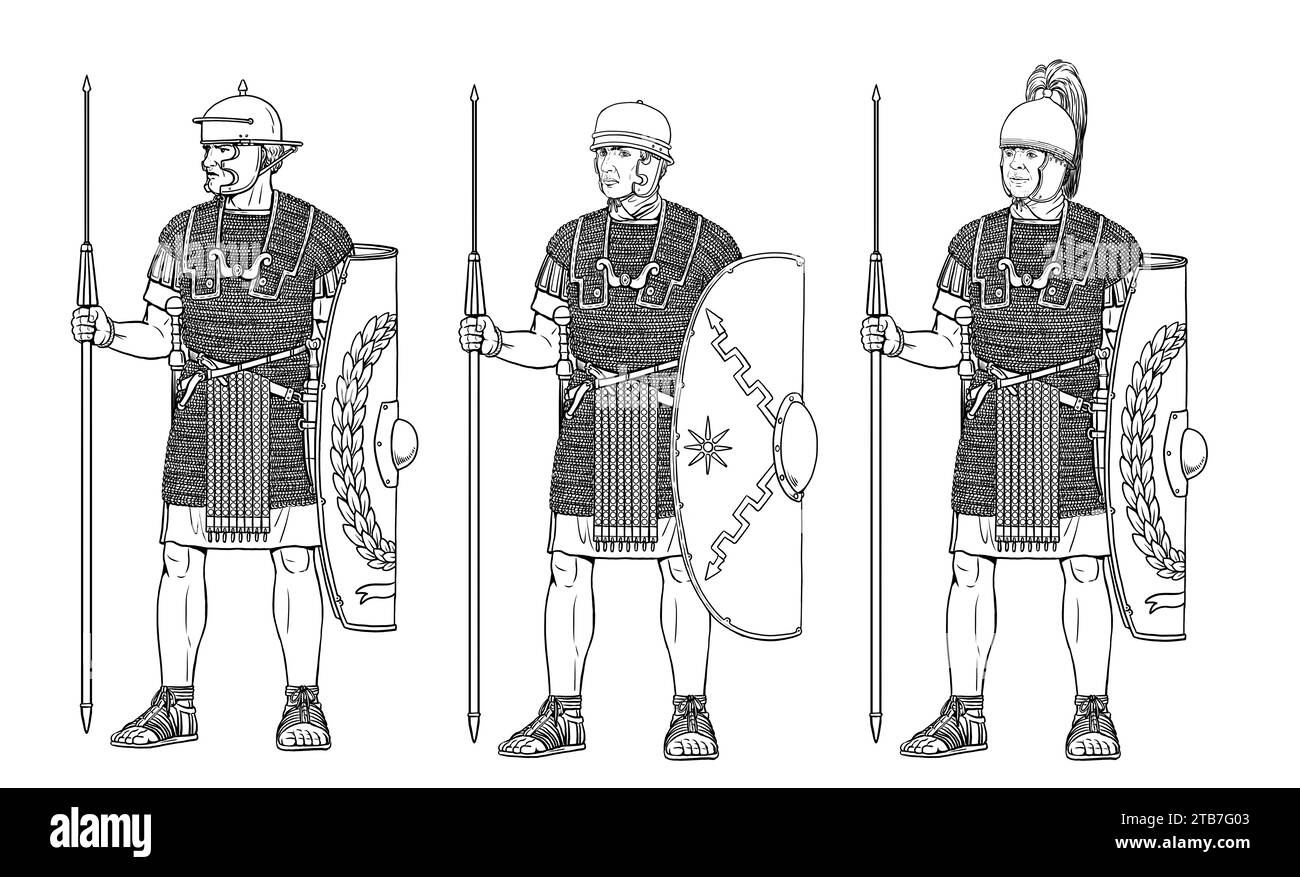 Roman legionnaires before the battle. Historical drawing. Stock Photohttps://www.alamy.com/image-license-details/?v=1https://www.alamy.com/roman-legionnaires-before-the-battle-historical-drawing-image574869571.html
Roman legionnaires before the battle. Historical drawing. Stock Photohttps://www.alamy.com/image-license-details/?v=1https://www.alamy.com/roman-legionnaires-before-the-battle-historical-drawing-image574869571.htmlRF2TB7G03–Roman legionnaires before the battle. Historical drawing.
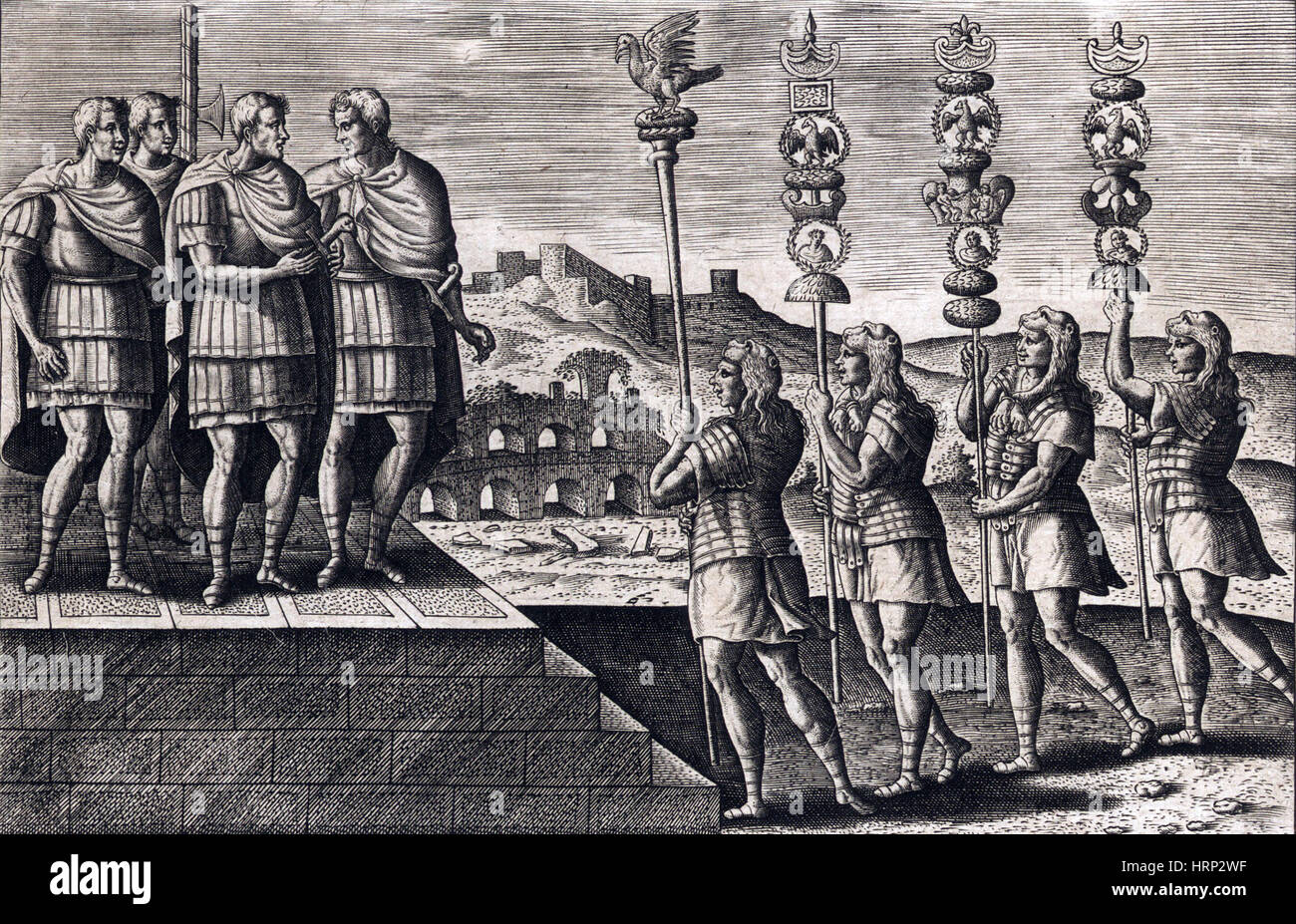 Legion Standards, Ancient Roman Warfare Stock Photohttps://www.alamy.com/image-license-details/?v=1https://www.alamy.com/stock-photo-legion-standards-ancient-roman-warfare-135094891.html
Legion Standards, Ancient Roman Warfare Stock Photohttps://www.alamy.com/image-license-details/?v=1https://www.alamy.com/stock-photo-legion-standards-ancient-roman-warfare-135094891.htmlRMHRP2WF–Legion Standards, Ancient Roman Warfare
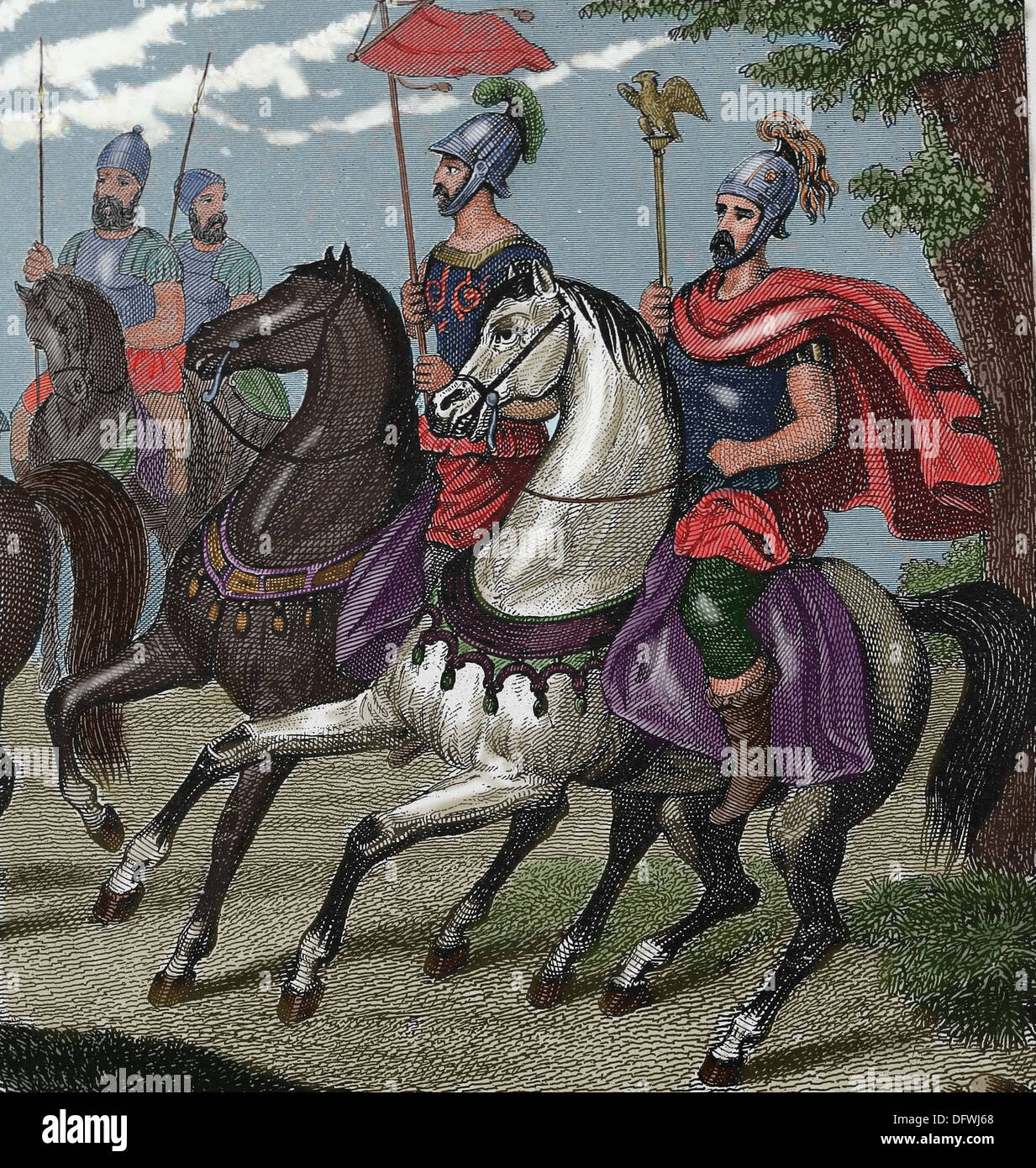 Roman Empire. Roman standard-bearers.Colored engraving. 19th century. Stock Photohttps://www.alamy.com/image-license-details/?v=1https://www.alamy.com/roman-empire-roman-standard-bearerscolored-engraving-19th-century-image61414032.html
Roman Empire. Roman standard-bearers.Colored engraving. 19th century. Stock Photohttps://www.alamy.com/image-license-details/?v=1https://www.alamy.com/roman-empire-roman-standard-bearerscolored-engraving-19th-century-image61414032.htmlRMDFWJ68–Roman Empire. Roman standard-bearers.Colored engraving. 19th century.
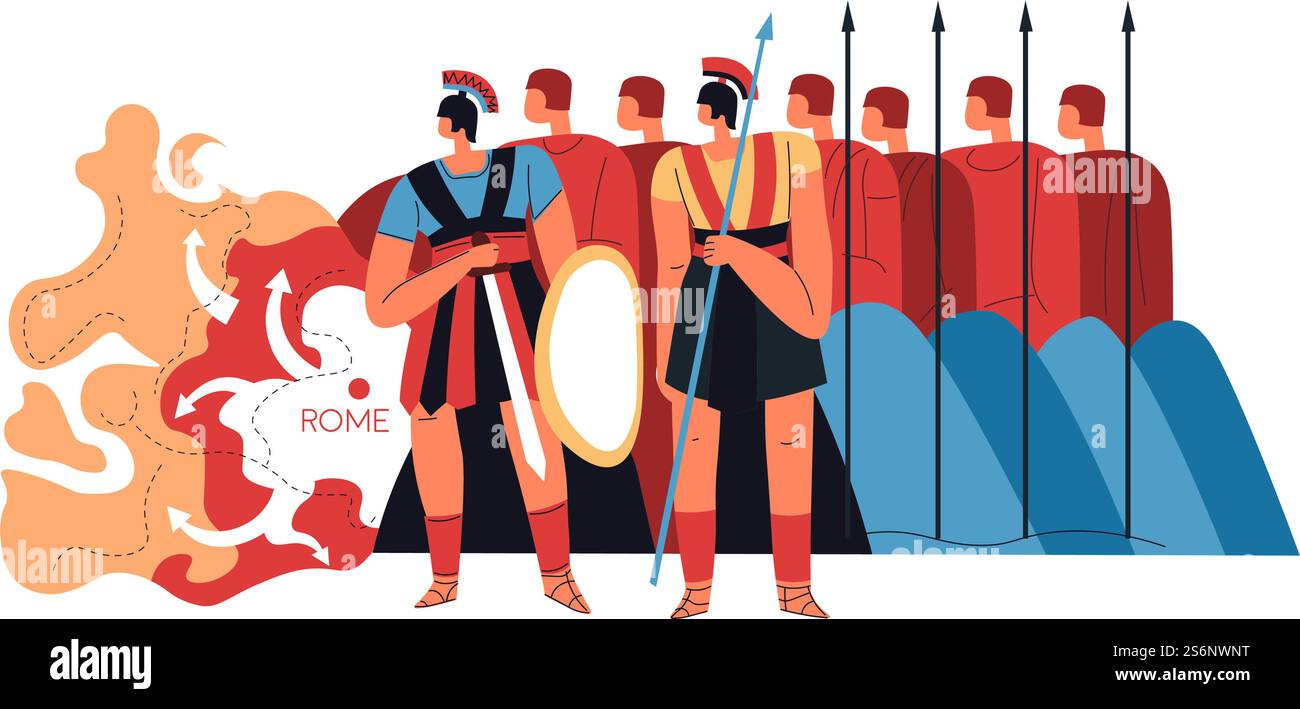 Warriors and soldiers of roman legion, men with weapons. Large army formation of Roman empire wearing armor and holding spears and shields. Gladiators protecting or invading. Vector in flat style. Roman legion, warriors with spears and shields Stock Vectorhttps://www.alamy.com/image-license-details/?v=1https://www.alamy.com/warriors-and-soldiers-of-roman-legion-men-with-weapons-large-army-formation-of-roman-empire-wearing-armor-and-holding-spears-and-shields-gladiators-protecting-or-invading-vector-in-flat-style-roman-legion-warriors-with-spears-and-shields-image640952756.html
Warriors and soldiers of roman legion, men with weapons. Large army formation of Roman empire wearing armor and holding spears and shields. Gladiators protecting or invading. Vector in flat style. Roman legion, warriors with spears and shields Stock Vectorhttps://www.alamy.com/image-license-details/?v=1https://www.alamy.com/warriors-and-soldiers-of-roman-legion-men-with-weapons-large-army-formation-of-roman-empire-wearing-armor-and-holding-spears-and-shields-gladiators-protecting-or-invading-vector-in-flat-style-roman-legion-warriors-with-spears-and-shields-image640952756.htmlRF2S6NWNT–Warriors and soldiers of roman legion, men with weapons. Large army formation of Roman empire wearing armor and holding spears and shields. Gladiators protecting or invading. Vector in flat style. Roman legion, warriors with spears and shields
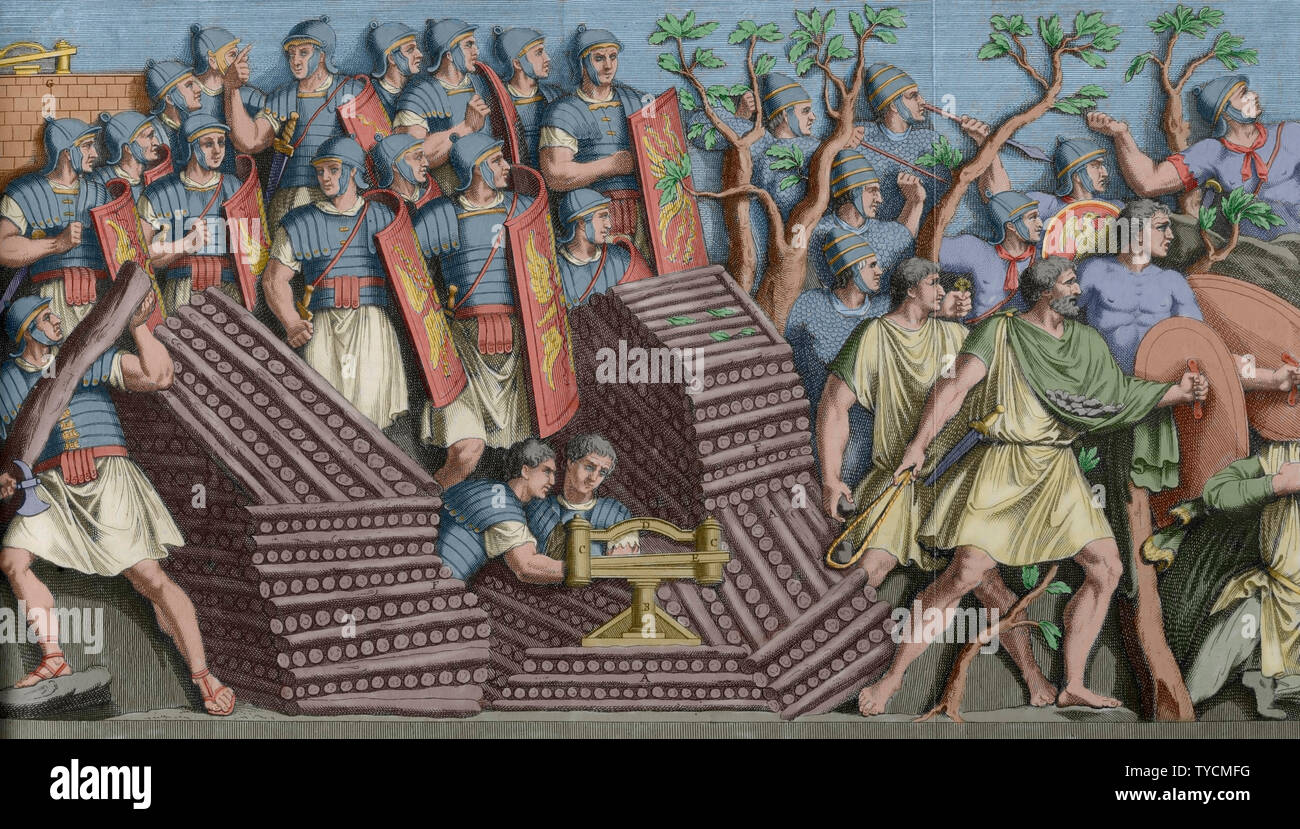 History by Polybius. Volume II. French edition translated from Greek by Dom Vincent Thuillier. Comments of Military Science enriched with critical and historical notes by M. De Folard. Paris, chez Pierre Gandouin, Julien-Michel Gandouin, Pierre-Francois Giffart and Nicolas-Pierre Armand, 1727. Printing by Jean-Baptiste Lamesle. Trajan's Dacian Wars. 2nd century AD. Engraving depicting reliefs from the Trajan Column. Scene of Roman army. Later colouration. Stock Photohttps://www.alamy.com/image-license-details/?v=1https://www.alamy.com/history-by-polybius-volume-ii-french-edition-translated-from-greek-by-dom-vincent-thuillier-comments-of-military-science-enriched-with-critical-and-historical-notes-by-m-de-folard-paris-chez-pierre-gandouin-julien-michel-gandouin-pierre-francois-giffart-and-nicolas-pierre-armand-1727-printing-by-jean-baptiste-lamesle-trajans-dacian-wars-2nd-century-ad-engraving-depicting-reliefs-from-the-trajan-column-scene-of-roman-army-later-colouration-image257820404.html
History by Polybius. Volume II. French edition translated from Greek by Dom Vincent Thuillier. Comments of Military Science enriched with critical and historical notes by M. De Folard. Paris, chez Pierre Gandouin, Julien-Michel Gandouin, Pierre-Francois Giffart and Nicolas-Pierre Armand, 1727. Printing by Jean-Baptiste Lamesle. Trajan's Dacian Wars. 2nd century AD. Engraving depicting reliefs from the Trajan Column. Scene of Roman army. Later colouration. Stock Photohttps://www.alamy.com/image-license-details/?v=1https://www.alamy.com/history-by-polybius-volume-ii-french-edition-translated-from-greek-by-dom-vincent-thuillier-comments-of-military-science-enriched-with-critical-and-historical-notes-by-m-de-folard-paris-chez-pierre-gandouin-julien-michel-gandouin-pierre-francois-giffart-and-nicolas-pierre-armand-1727-printing-by-jean-baptiste-lamesle-trajans-dacian-wars-2nd-century-ad-engraving-depicting-reliefs-from-the-trajan-column-scene-of-roman-army-later-colouration-image257820404.htmlRMTYCMFG–History by Polybius. Volume II. French edition translated from Greek by Dom Vincent Thuillier. Comments of Military Science enriched with critical and historical notes by M. De Folard. Paris, chez Pierre Gandouin, Julien-Michel Gandouin, Pierre-Francois Giffart and Nicolas-Pierre Armand, 1727. Printing by Jean-Baptiste Lamesle. Trajan's Dacian Wars. 2nd century AD. Engraving depicting reliefs from the Trajan Column. Scene of Roman army. Later colouration.
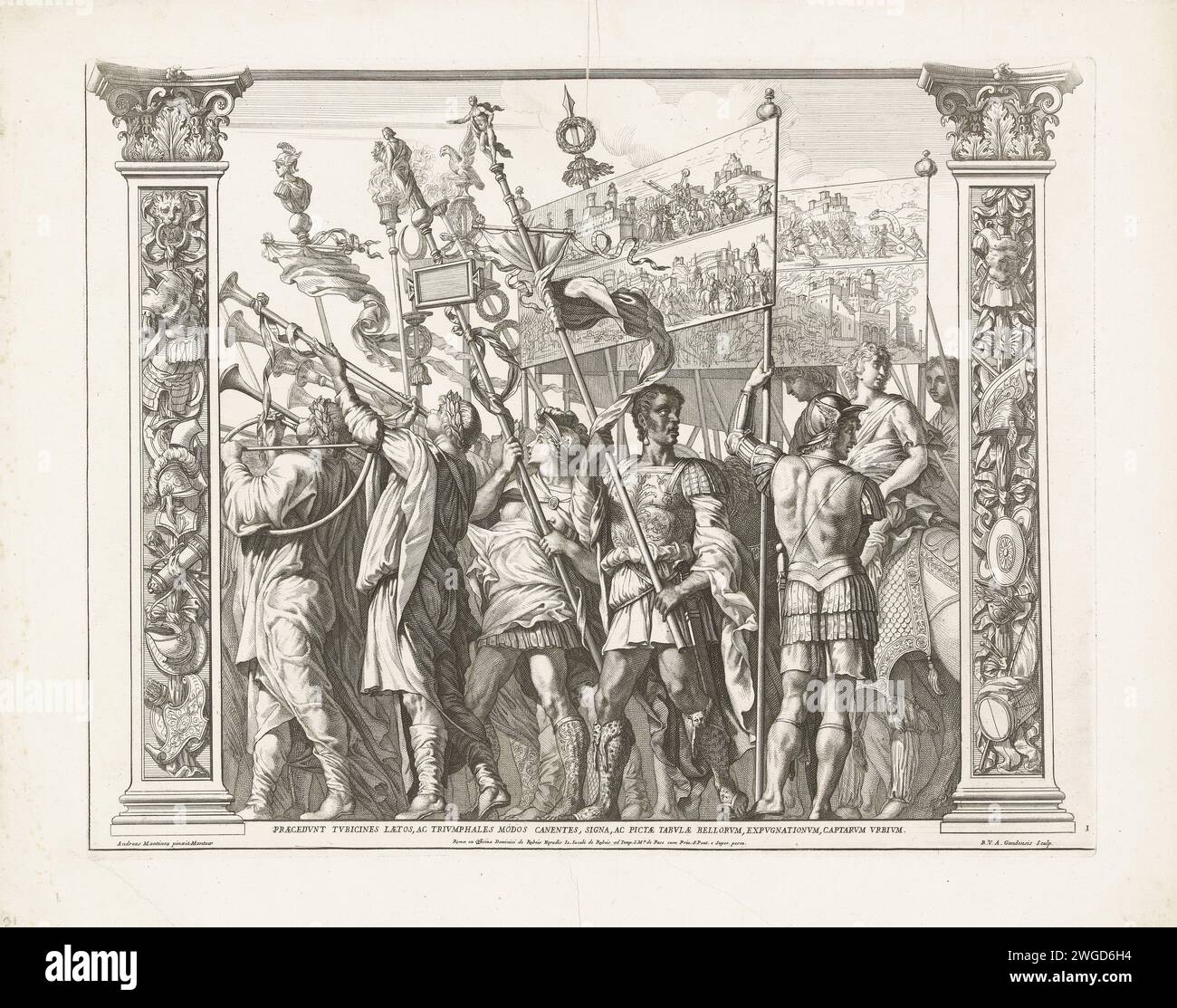 Soldiers wear banners with the heroic deeds of Caesar, Robert van Audenaerd, after Andrea Mantegna, 1692 print Soldiers from the different regions of the Holy Roman Empire are joining in a parade in honor of Julius Caesar. They wear banners with scenes of successful sieges of cities. Rome paper etching / engraving triumph of Caesar Stock Photohttps://www.alamy.com/image-license-details/?v=1https://www.alamy.com/soldiers-wear-banners-with-the-heroic-deeds-of-caesar-robert-van-audenaerd-after-andrea-mantegna-1692-print-soldiers-from-the-different-regions-of-the-holy-roman-empire-are-joining-in-a-parade-in-honor-of-julius-caesar-they-wear-banners-with-scenes-of-successful-sieges-of-cities-rome-paper-etching-engraving-triumph-of-caesar-image595277568.html
Soldiers wear banners with the heroic deeds of Caesar, Robert van Audenaerd, after Andrea Mantegna, 1692 print Soldiers from the different regions of the Holy Roman Empire are joining in a parade in honor of Julius Caesar. They wear banners with scenes of successful sieges of cities. Rome paper etching / engraving triumph of Caesar Stock Photohttps://www.alamy.com/image-license-details/?v=1https://www.alamy.com/soldiers-wear-banners-with-the-heroic-deeds-of-caesar-robert-van-audenaerd-after-andrea-mantegna-1692-print-soldiers-from-the-different-regions-of-the-holy-roman-empire-are-joining-in-a-parade-in-honor-of-julius-caesar-they-wear-banners-with-scenes-of-successful-sieges-of-cities-rome-paper-etching-engraving-triumph-of-caesar-image595277568.htmlRM2WGD6H4–Soldiers wear banners with the heroic deeds of Caesar, Robert van Audenaerd, after Andrea Mantegna, 1692 print Soldiers from the different regions of the Holy Roman Empire are joining in a parade in honor of Julius Caesar. They wear banners with scenes of successful sieges of cities. Rome paper etching / engraving triumph of Caesar
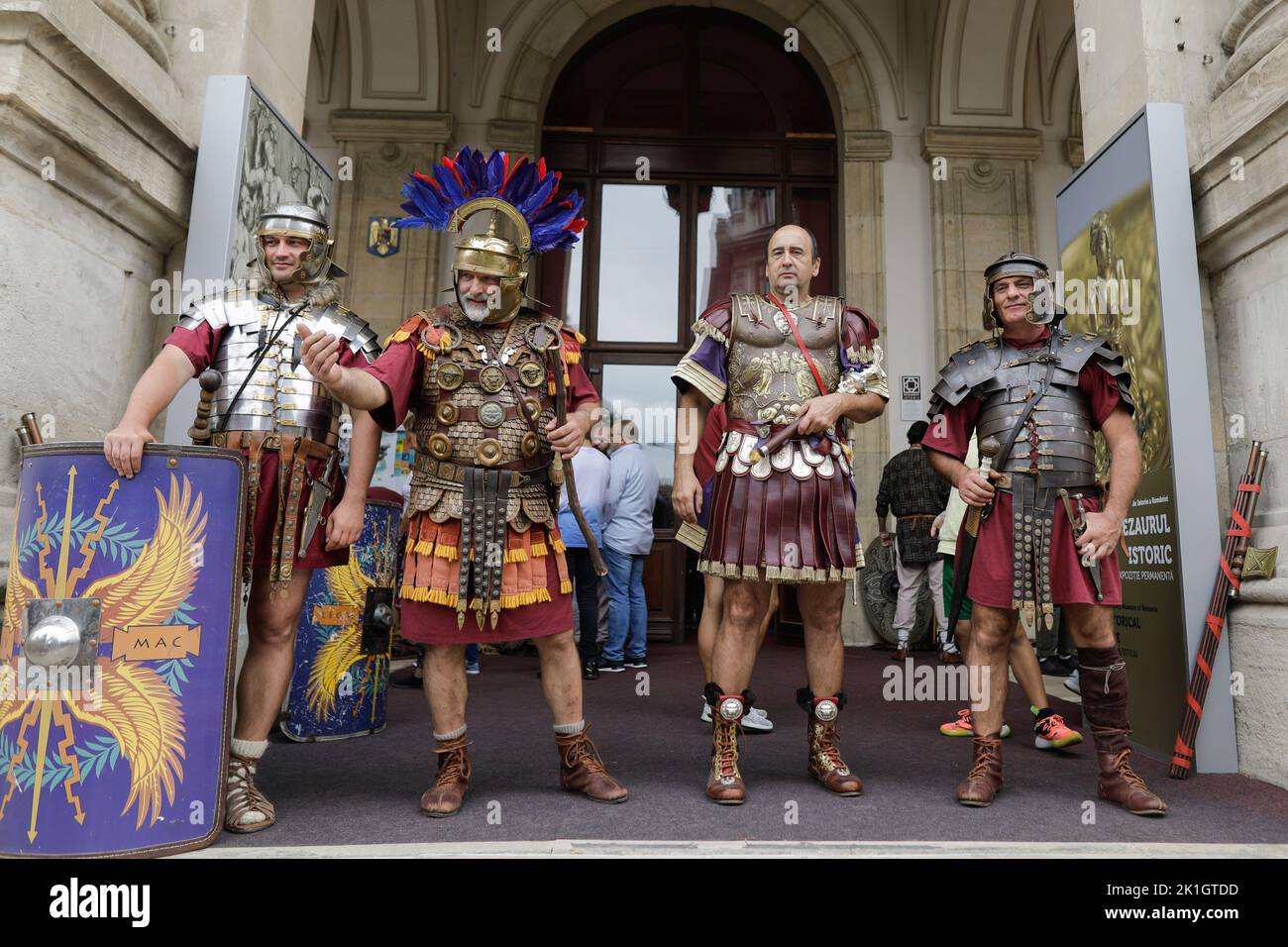 Bucharest, Romania - September 17, 2022: Ancient Roman soldiers, generals and emperor during a historic reenactment event. Stock Photohttps://www.alamy.com/image-license-details/?v=1https://www.alamy.com/bucharest-romania-september-17-2022-ancient-roman-soldiers-generals-and-emperor-during-a-historic-reenactment-event-image482875385.html
Bucharest, Romania - September 17, 2022: Ancient Roman soldiers, generals and emperor during a historic reenactment event. Stock Photohttps://www.alamy.com/image-license-details/?v=1https://www.alamy.com/bucharest-romania-september-17-2022-ancient-roman-soldiers-generals-and-emperor-during-a-historic-reenactment-event-image482875385.htmlRF2K1GTDD–Bucharest, Romania - September 17, 2022: Ancient Roman soldiers, generals and emperor during a historic reenactment event.
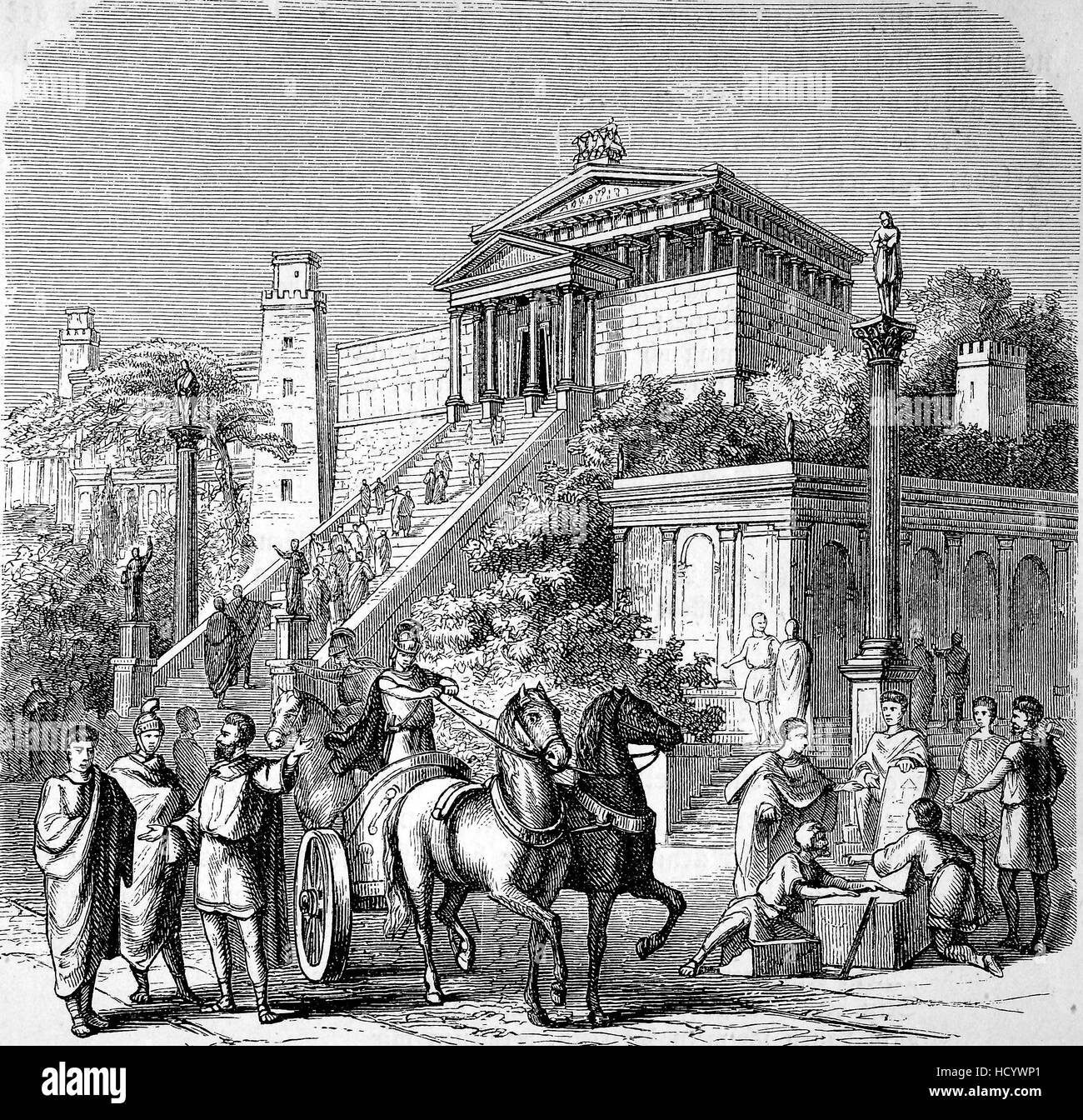 the capitol in acient Rome, the story of the ancient Rome, roman Empire, Italy Stock Photohttps://www.alamy.com/image-license-details/?v=1https://www.alamy.com/stock-photo-the-capitol-in-acient-rome-the-story-of-the-ancient-rome-roman-empire-128461369.html
the capitol in acient Rome, the story of the ancient Rome, roman Empire, Italy Stock Photohttps://www.alamy.com/image-license-details/?v=1https://www.alamy.com/stock-photo-the-capitol-in-acient-rome-the-story-of-the-ancient-rome-roman-empire-128461369.htmlRFHCYWP1–the capitol in acient Rome, the story of the ancient Rome, roman Empire, Italy
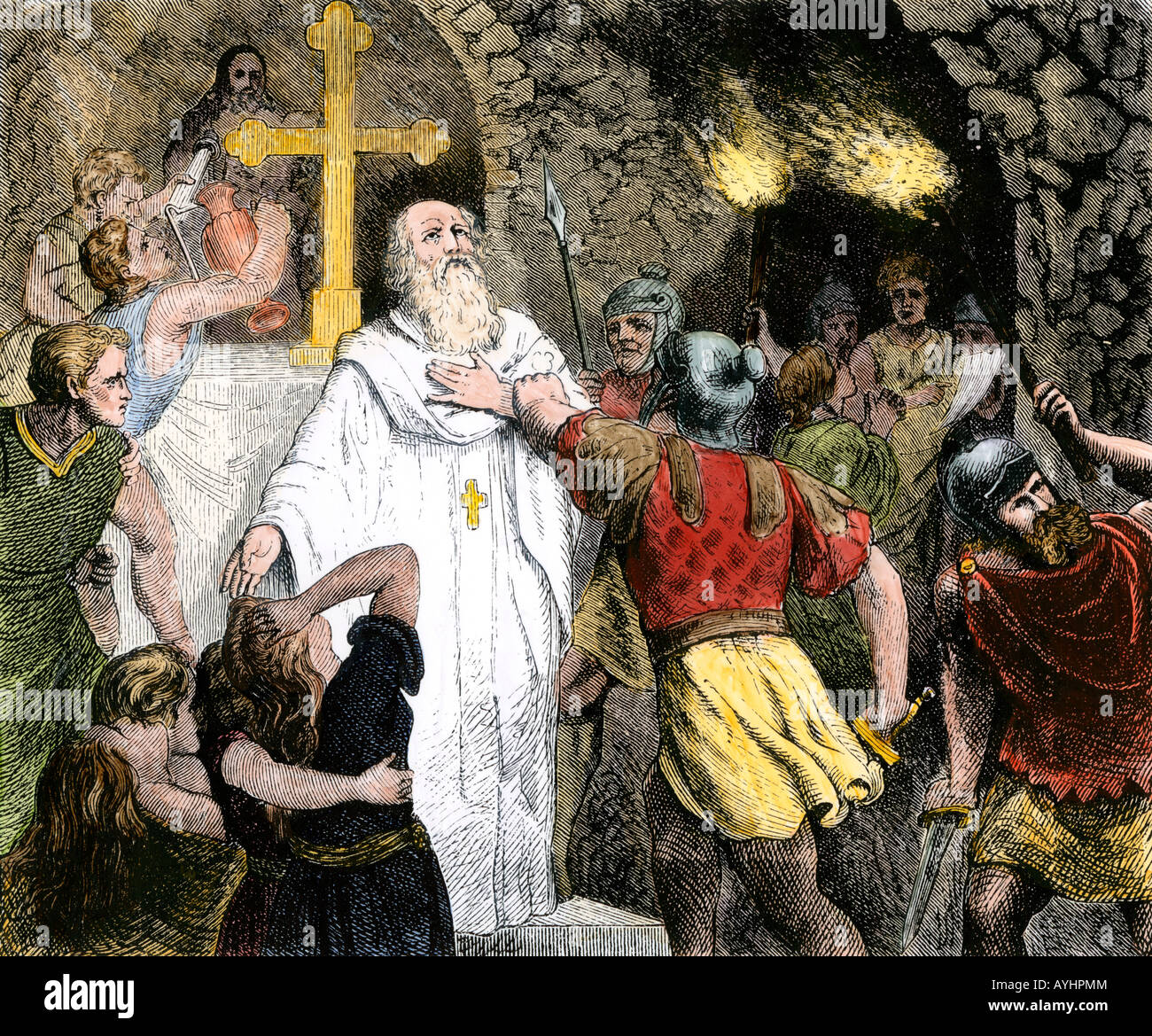 Christians in the Catacombs arrested by Roman soldiers. Hand-colored woodcut Stock Photohttps://www.alamy.com/image-license-details/?v=1https://www.alamy.com/stock-photo-christians-in-the-catacombs-arrested-by-roman-soldiers-hand-colored-17114515.html
Christians in the Catacombs arrested by Roman soldiers. Hand-colored woodcut Stock Photohttps://www.alamy.com/image-license-details/?v=1https://www.alamy.com/stock-photo-christians-in-the-catacombs-arrested-by-roman-soldiers-hand-colored-17114515.htmlRMAYHPMM–Christians in the Catacombs arrested by Roman soldiers. Hand-colored woodcut
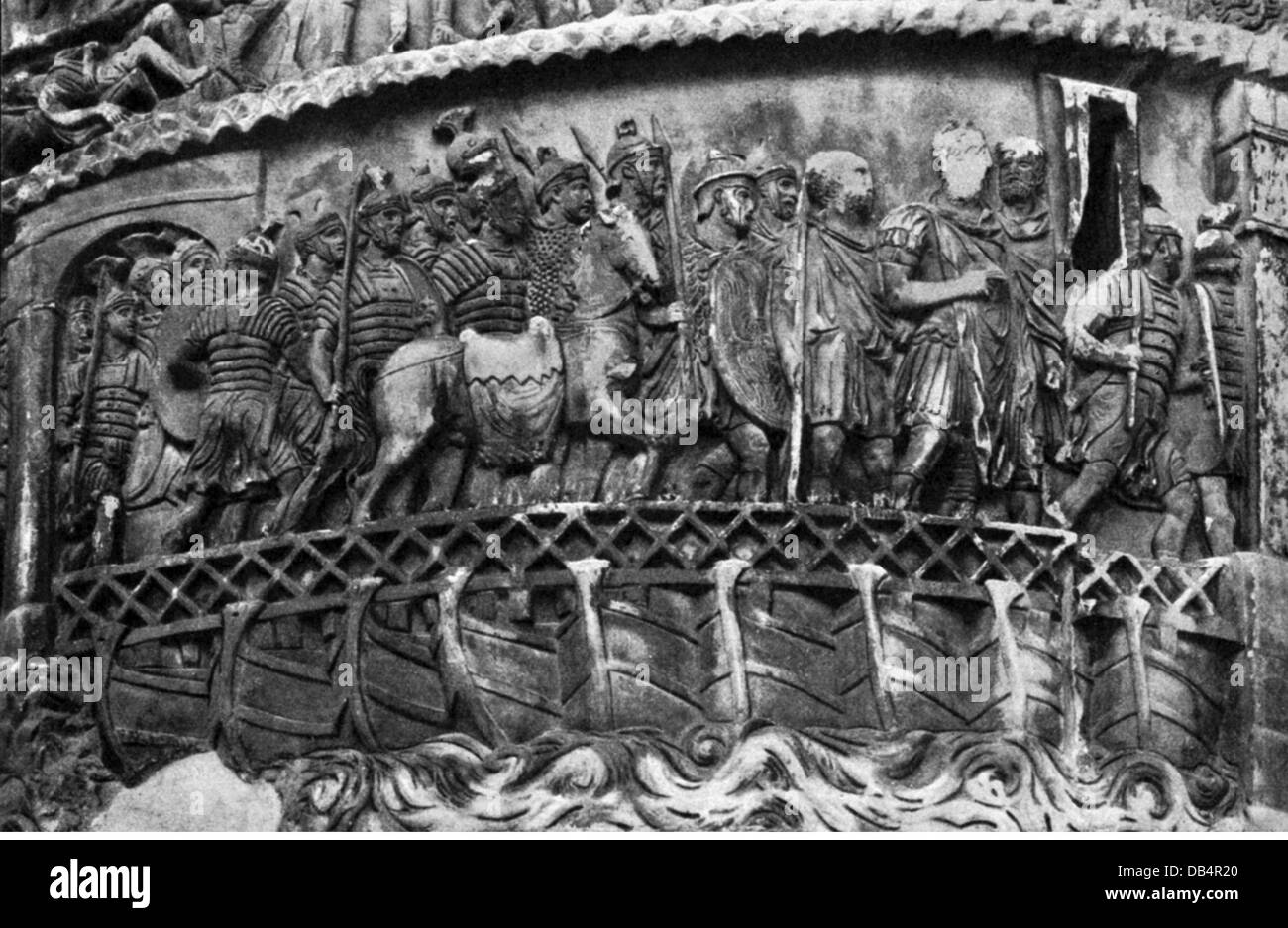 military, Ancient World, Roman Empire, Roman soldiers cross the Danube river on a pontoon bridge, relief on the Column of Marcus Aurelius, Rome, 180 - 193, victory column, Marcomannic Wars 166 - 180, legionnaire, legionaries, auxiliary troops, auxilaries, aux troops, ancillary troops, auxiliary forces, pack animal, pack animals, hinny, hinnies, bridge, bridges, Germanic, wars, war, column, columns, fine arts, art, 2nd century, historic, historical, people, ancient world, Additional-Rights-Clearences-Not Available Stock Photohttps://www.alamy.com/image-license-details/?v=1https://www.alamy.com/stock-photo-military-ancient-world-roman-empire-roman-soldiers-cross-the-danube-58498216.html
military, Ancient World, Roman Empire, Roman soldiers cross the Danube river on a pontoon bridge, relief on the Column of Marcus Aurelius, Rome, 180 - 193, victory column, Marcomannic Wars 166 - 180, legionnaire, legionaries, auxiliary troops, auxilaries, aux troops, ancillary troops, auxiliary forces, pack animal, pack animals, hinny, hinnies, bridge, bridges, Germanic, wars, war, column, columns, fine arts, art, 2nd century, historic, historical, people, ancient world, Additional-Rights-Clearences-Not Available Stock Photohttps://www.alamy.com/image-license-details/?v=1https://www.alamy.com/stock-photo-military-ancient-world-roman-empire-roman-soldiers-cross-the-danube-58498216.htmlRMDB4R20–military, Ancient World, Roman Empire, Roman soldiers cross the Danube river on a pontoon bridge, relief on the Column of Marcus Aurelius, Rome, 180 - 193, victory column, Marcomannic Wars 166 - 180, legionnaire, legionaries, auxiliary troops, auxilaries, aux troops, ancillary troops, auxiliary forces, pack animal, pack animals, hinny, hinnies, bridge, bridges, Germanic, wars, war, column, columns, fine arts, art, 2nd century, historic, historical, people, ancient world, Additional-Rights-Clearences-Not Available
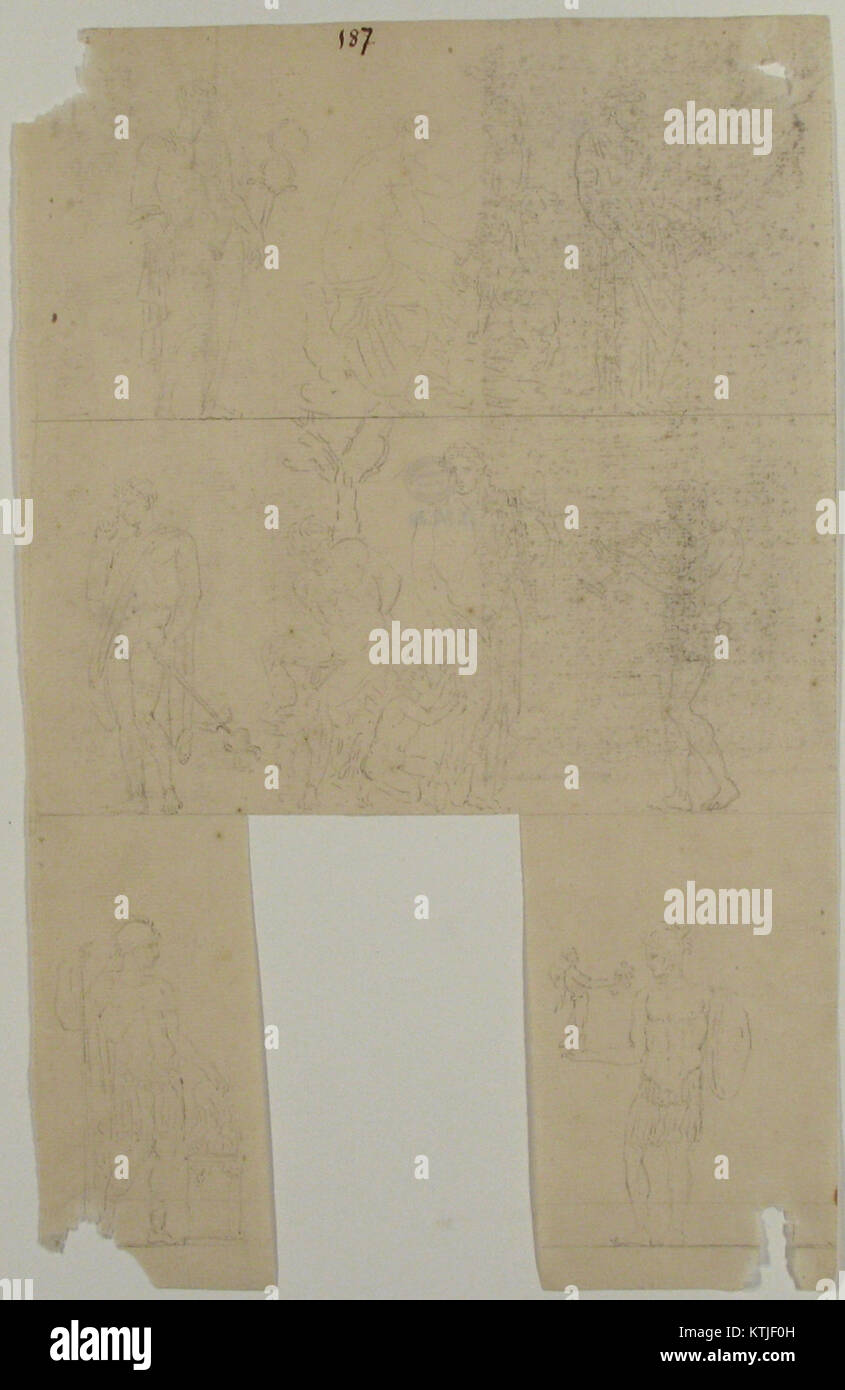 A Roman artwork depicting a Bacchic scene with two soldiers. The image illustrates elements of Roman culture, including the influence of Bacchus, the god of wine, and military figures in ancient art. Stock Photohttps://www.alamy.com/image-license-details/?v=1https://www.alamy.com/stock-photo-a-roman-artwork-depicting-a-bacchic-scene-with-two-soldiers-the-image-170051969.html
A Roman artwork depicting a Bacchic scene with two soldiers. The image illustrates elements of Roman culture, including the influence of Bacchus, the god of wine, and military figures in ancient art. Stock Photohttps://www.alamy.com/image-license-details/?v=1https://www.alamy.com/stock-photo-a-roman-artwork-depicting-a-bacchic-scene-with-two-soldiers-the-image-170051969.htmlRMKTJF0H–A Roman artwork depicting a Bacchic scene with two soldiers. The image illustrates elements of Roman culture, including the influence of Bacchus, the god of wine, and military figures in ancient art.
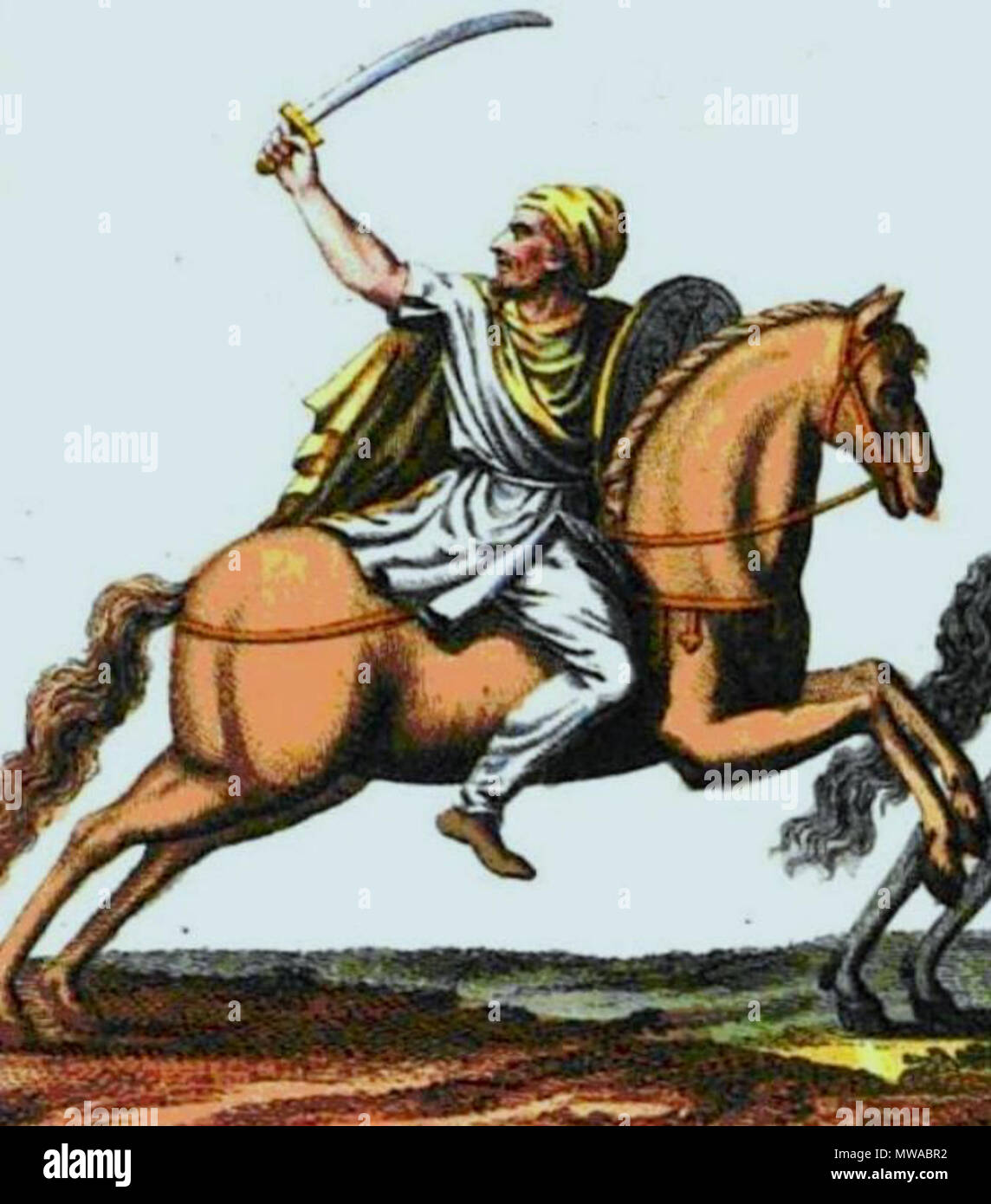 . English: Dacian costumes and usages. This image is of a Dacian warrior during the 1st and 2nd century Roman Empire campaigns in Dacia (ancient Romania) . 22 April 2011. Robert de Spallart - compiler Bertuch, F. J. (1747-1822) artist 150 Dacian warrior cf. Spallart Stock Photohttps://www.alamy.com/image-license-details/?v=1https://www.alamy.com/english-dacian-costumes-and-usages-this-image-is-of-a-dacian-warrior-during-the-1st-and-2nd-century-roman-empire-campaigns-in-dacia-ancient-romania-22-april-2011-robert-de-spallart-compiler-bertuch-f-j-1747-1822-artist-150-dacian-warrior-cf-spallart-image187698870.html
. English: Dacian costumes and usages. This image is of a Dacian warrior during the 1st and 2nd century Roman Empire campaigns in Dacia (ancient Romania) . 22 April 2011. Robert de Spallart - compiler Bertuch, F. J. (1747-1822) artist 150 Dacian warrior cf. Spallart Stock Photohttps://www.alamy.com/image-license-details/?v=1https://www.alamy.com/english-dacian-costumes-and-usages-this-image-is-of-a-dacian-warrior-during-the-1st-and-2nd-century-roman-empire-campaigns-in-dacia-ancient-romania-22-april-2011-robert-de-spallart-compiler-bertuch-f-j-1747-1822-artist-150-dacian-warrior-cf-spallart-image187698870.htmlRMMWABR2–. English: Dacian costumes and usages. This image is of a Dacian warrior during the 1st and 2nd century Roman Empire campaigns in Dacia (ancient Romania) . 22 April 2011. Robert de Spallart - compiler Bertuch, F. J. (1747-1822) artist 150 Dacian warrior cf. Spallart